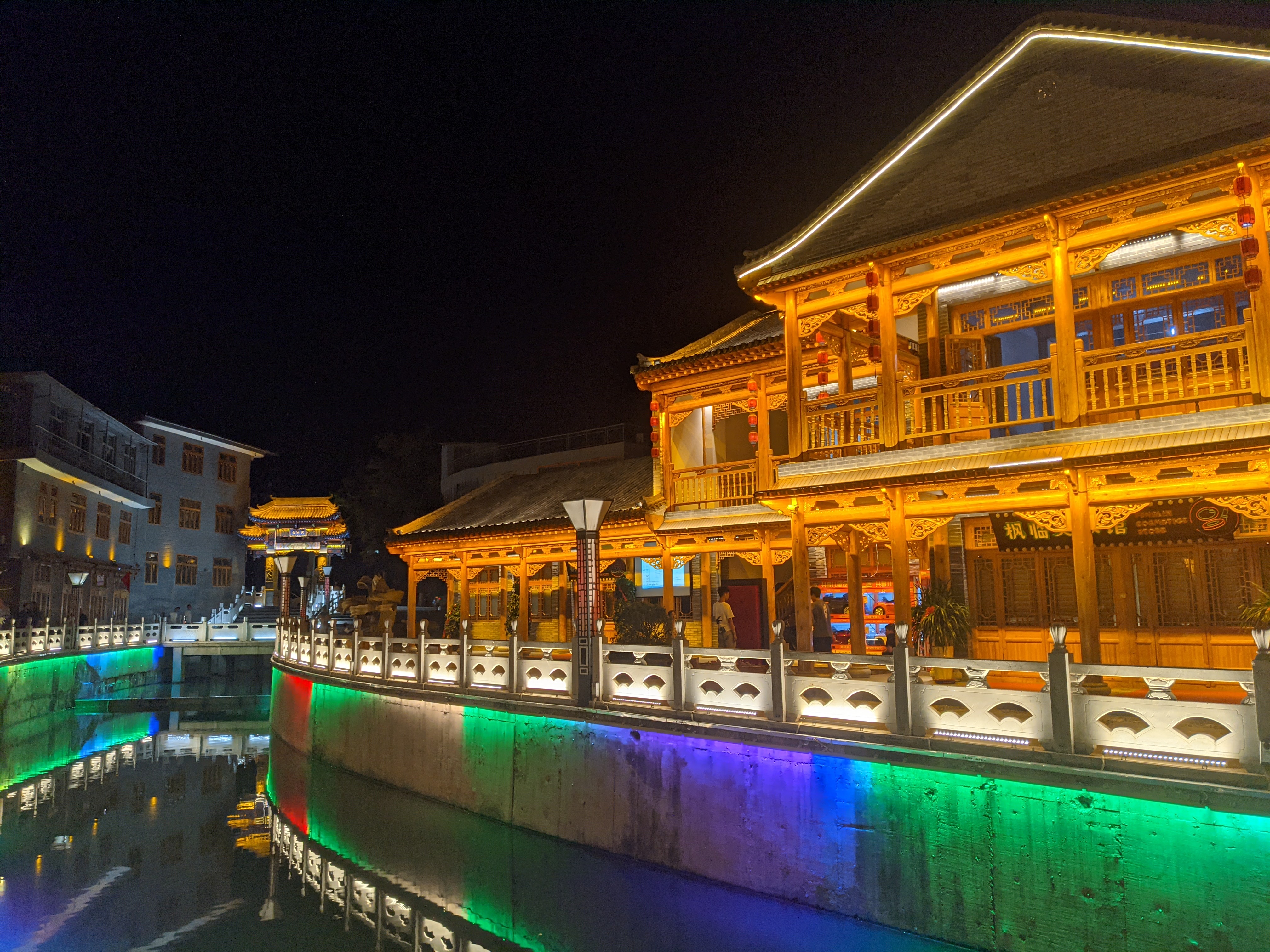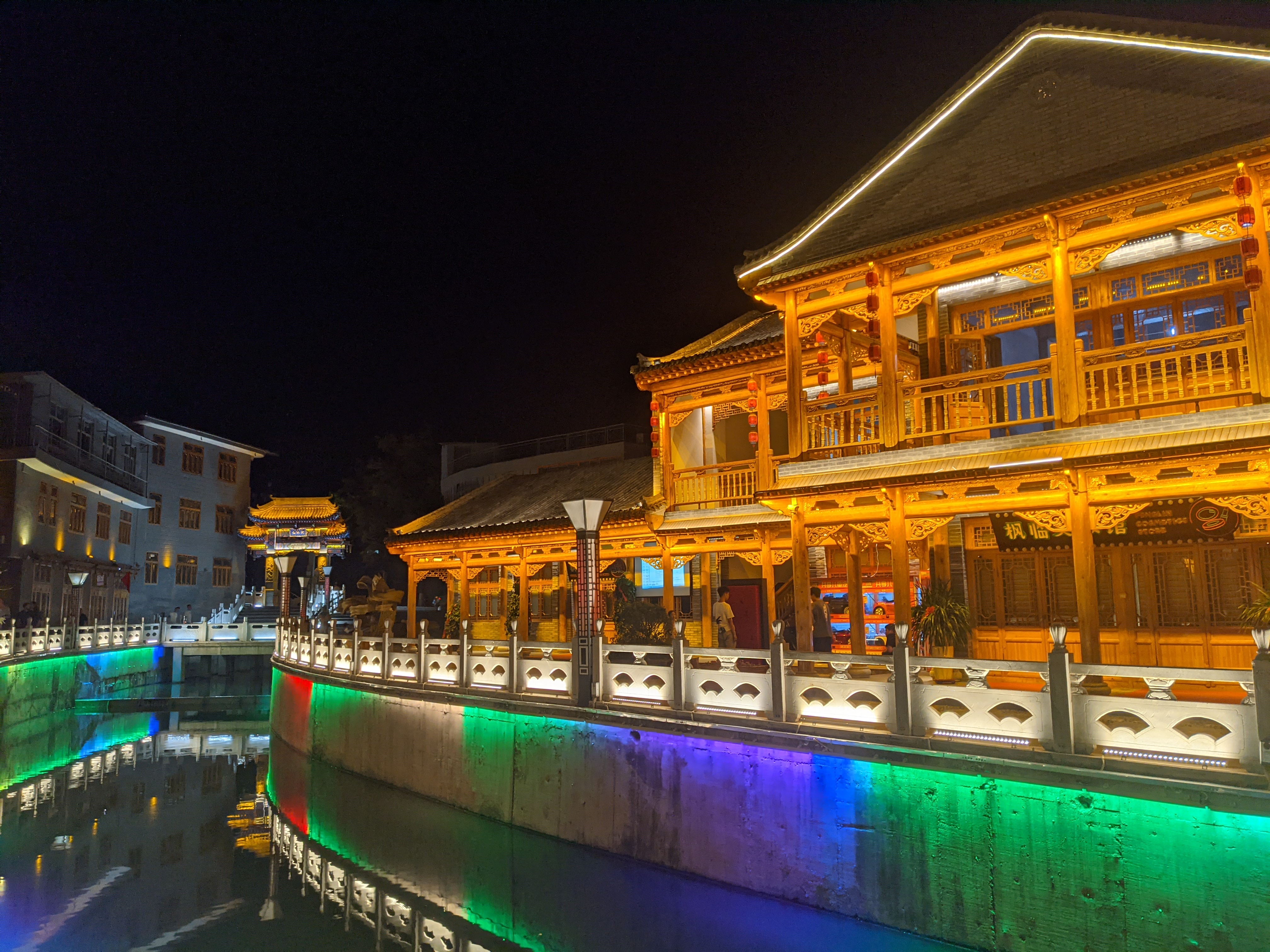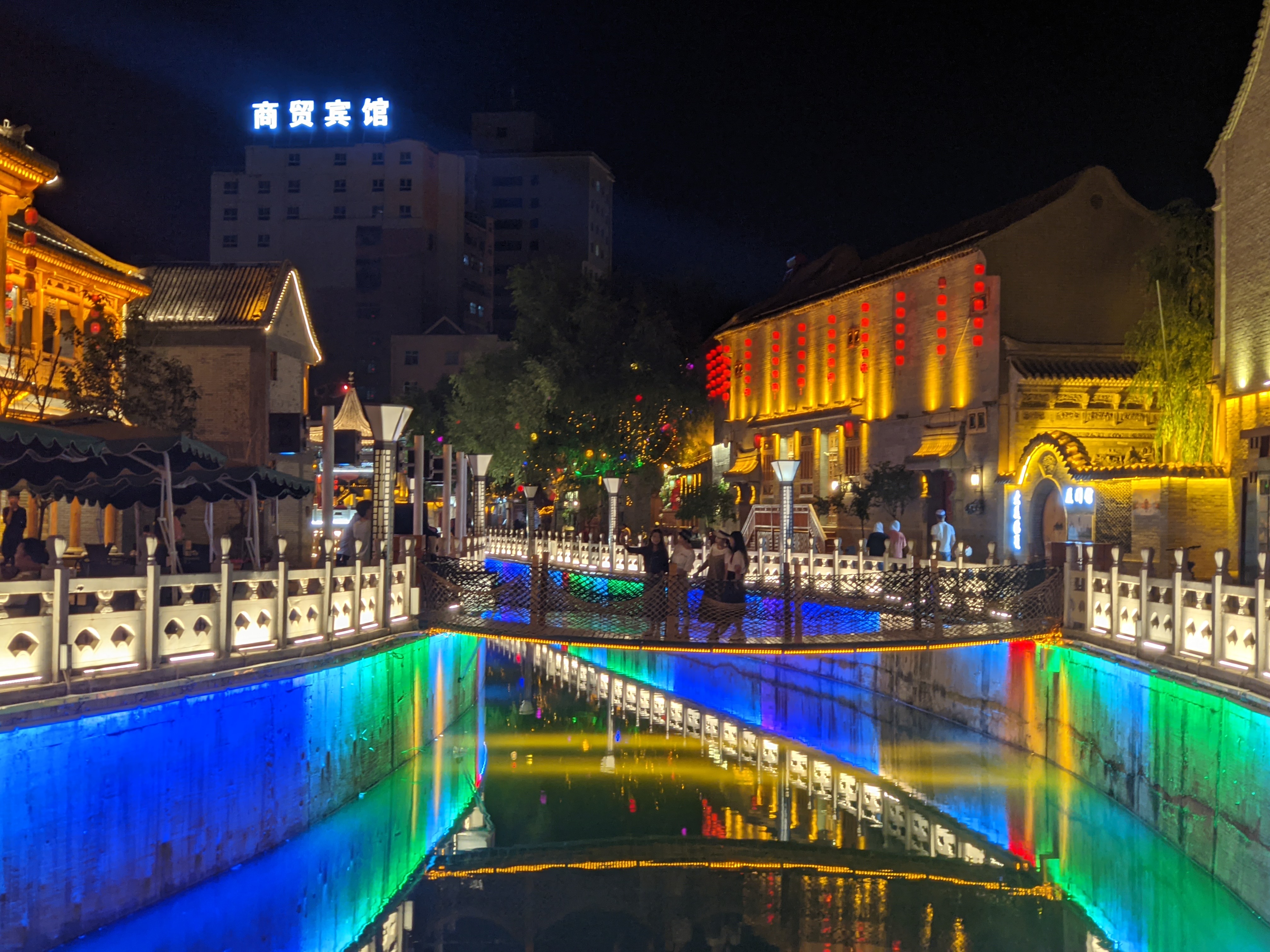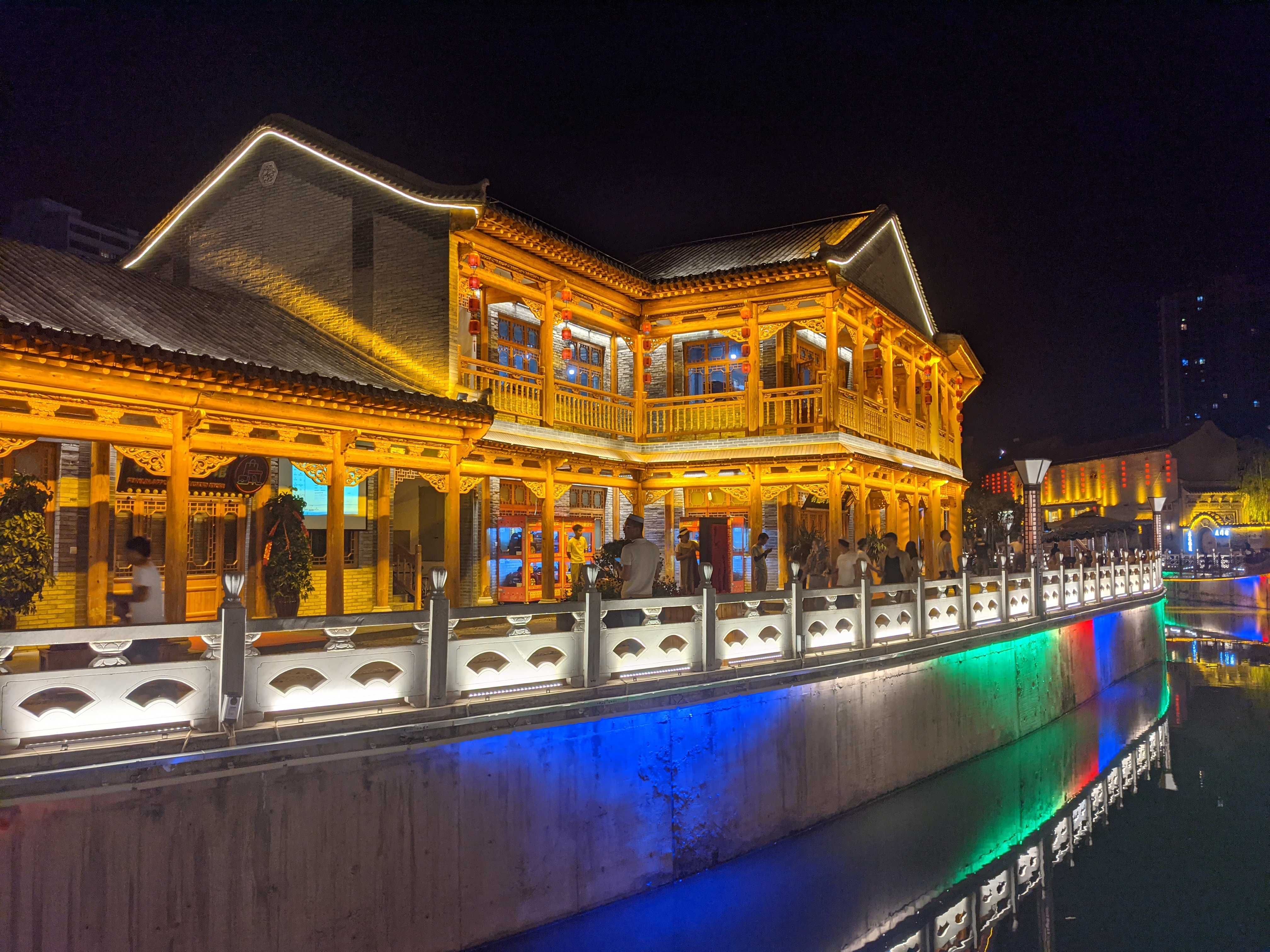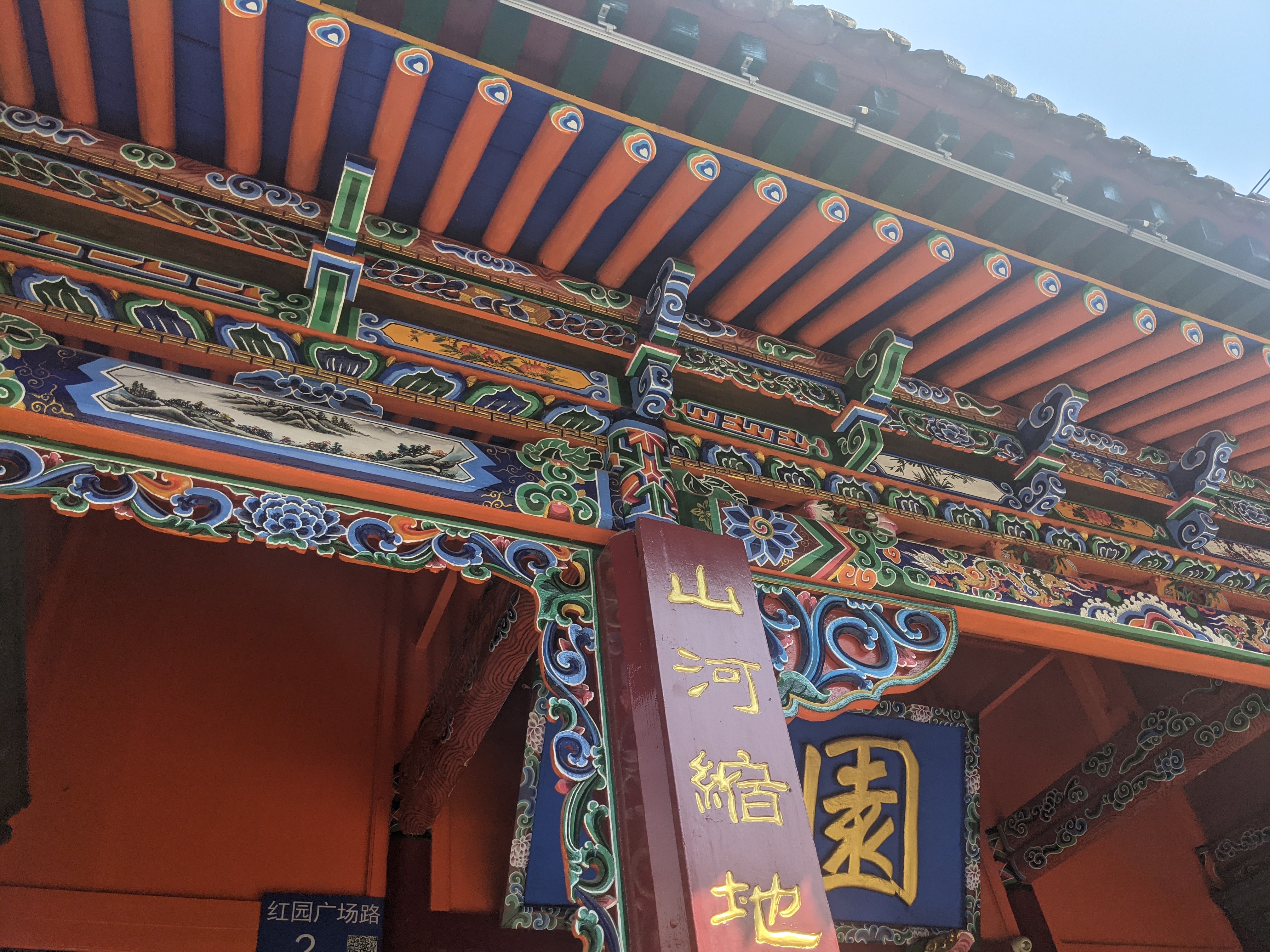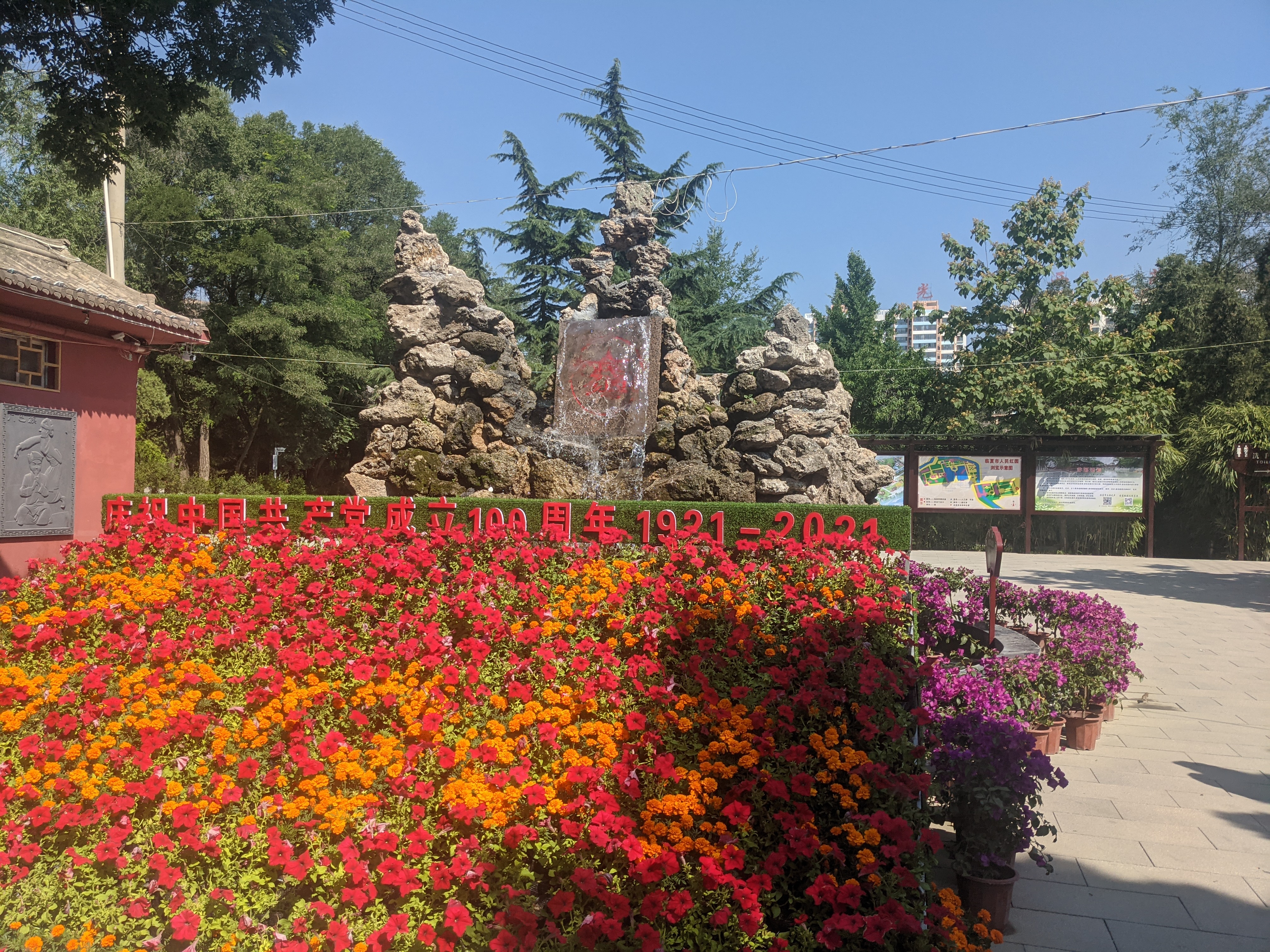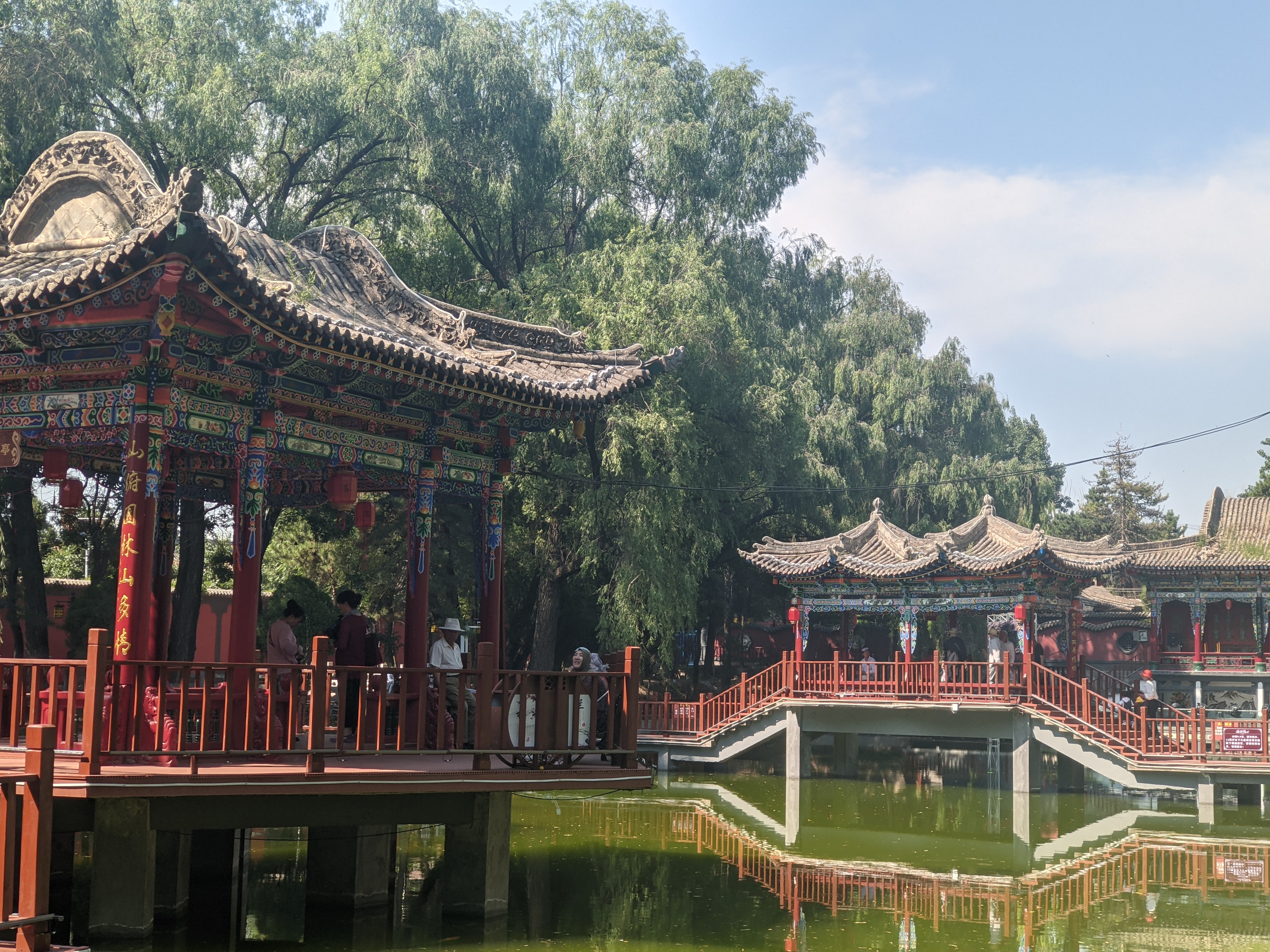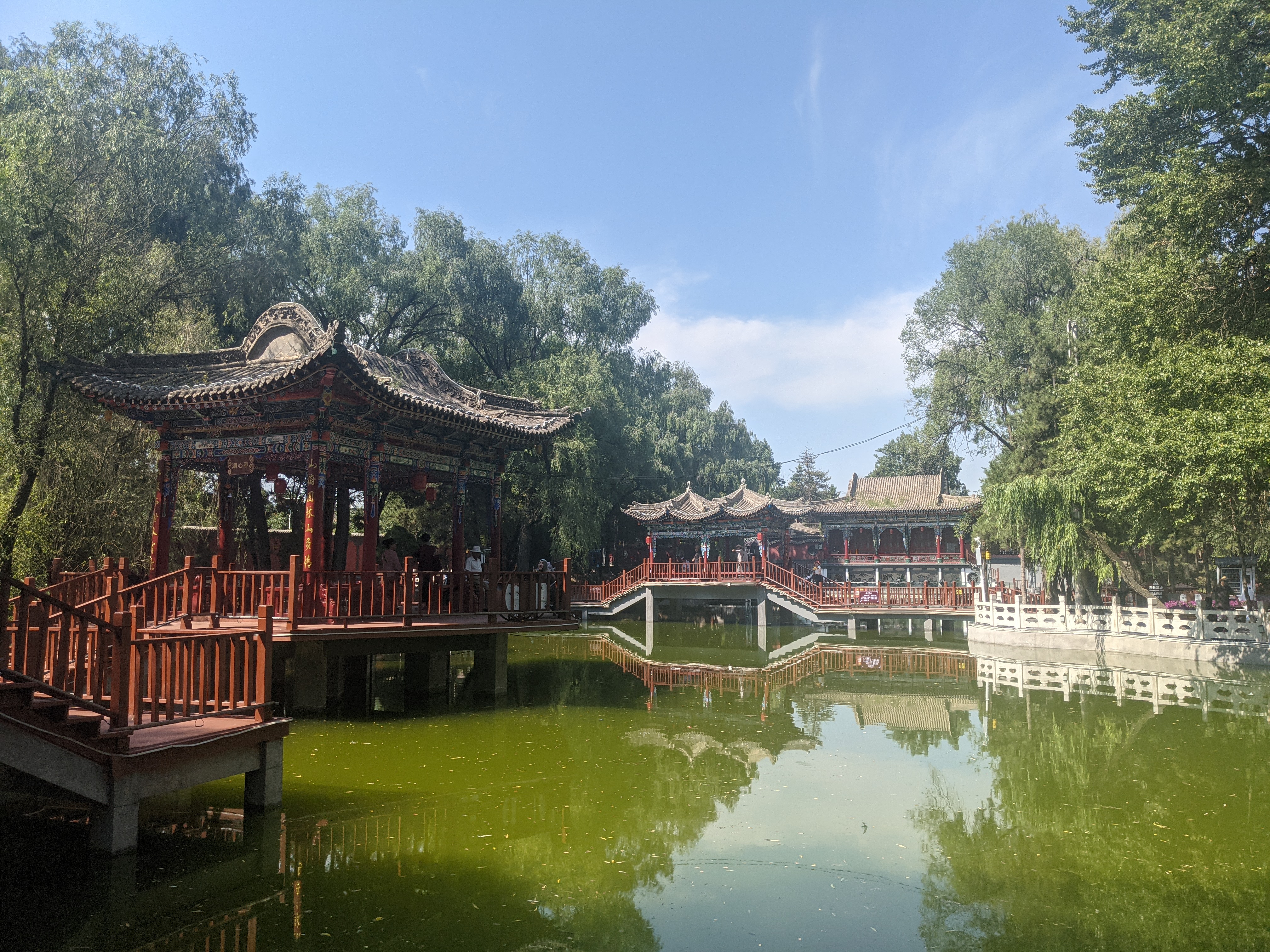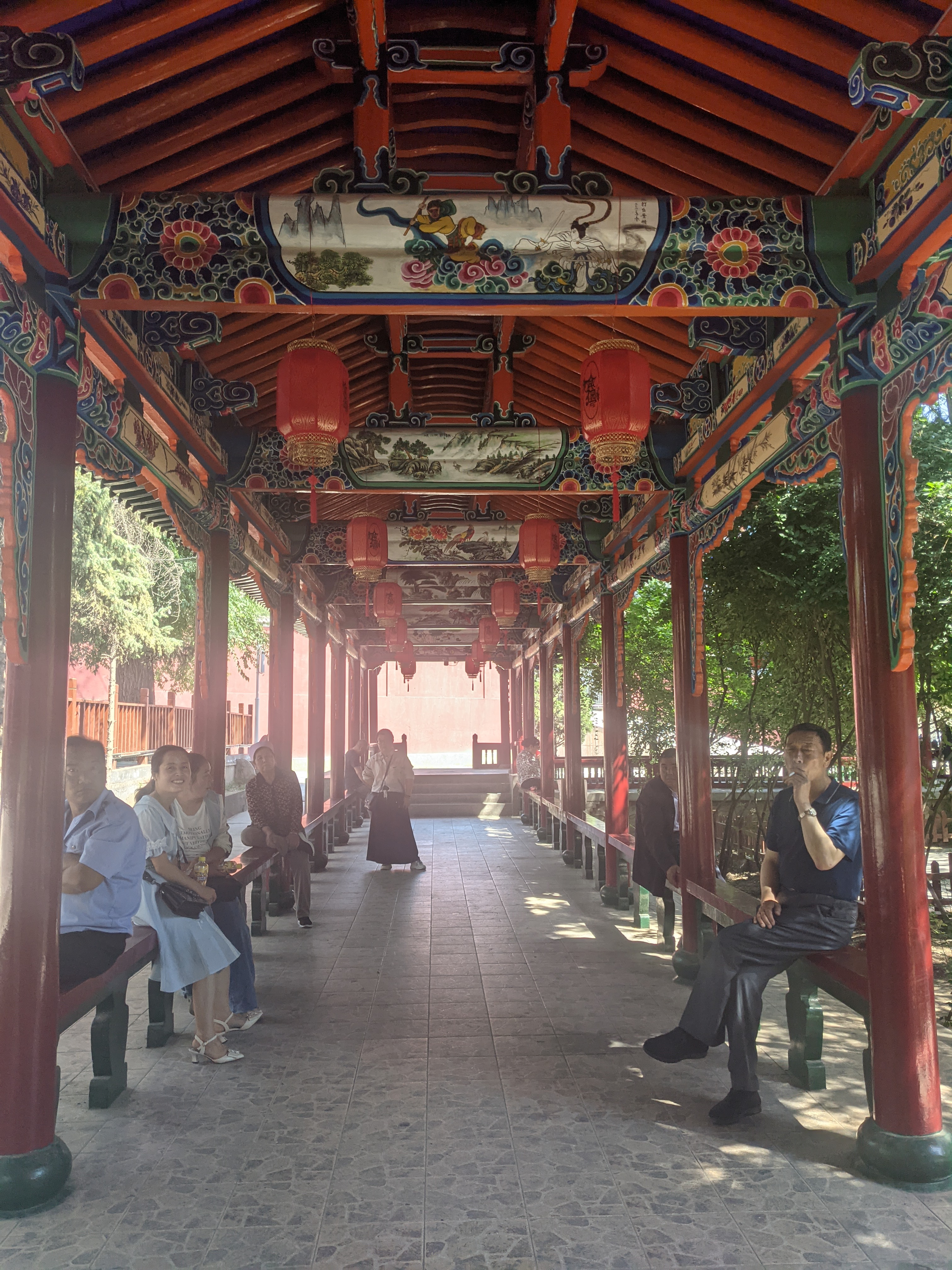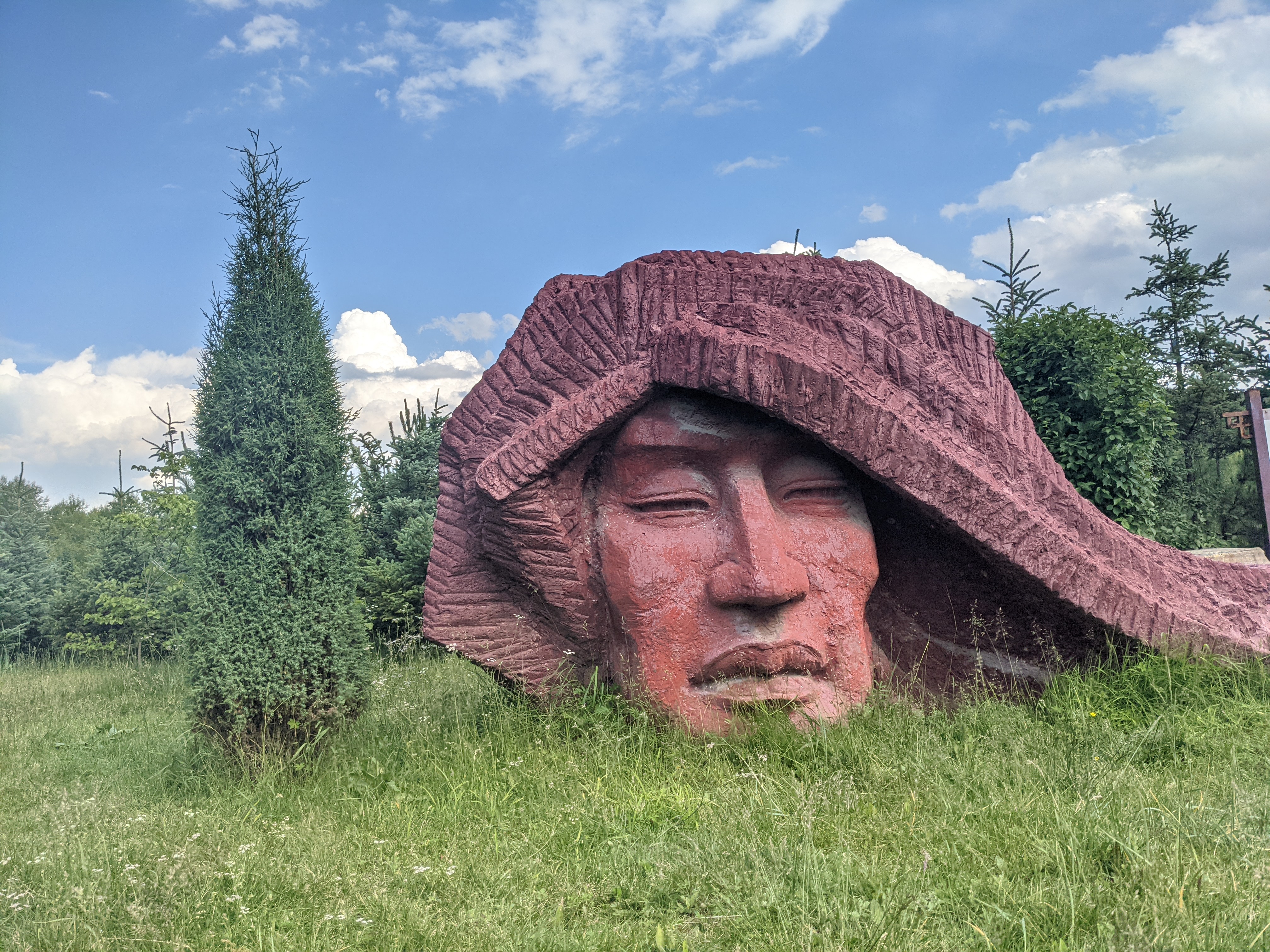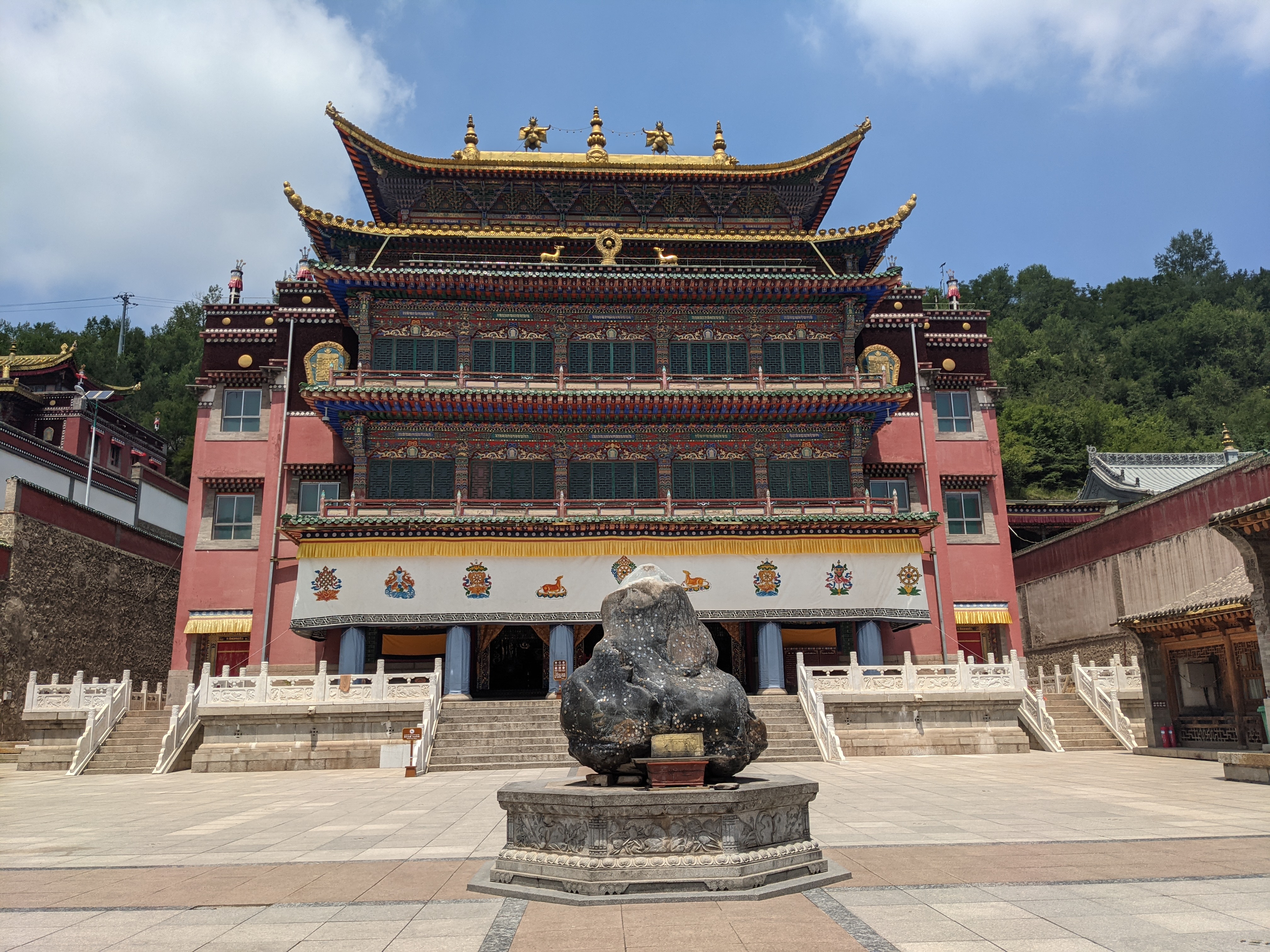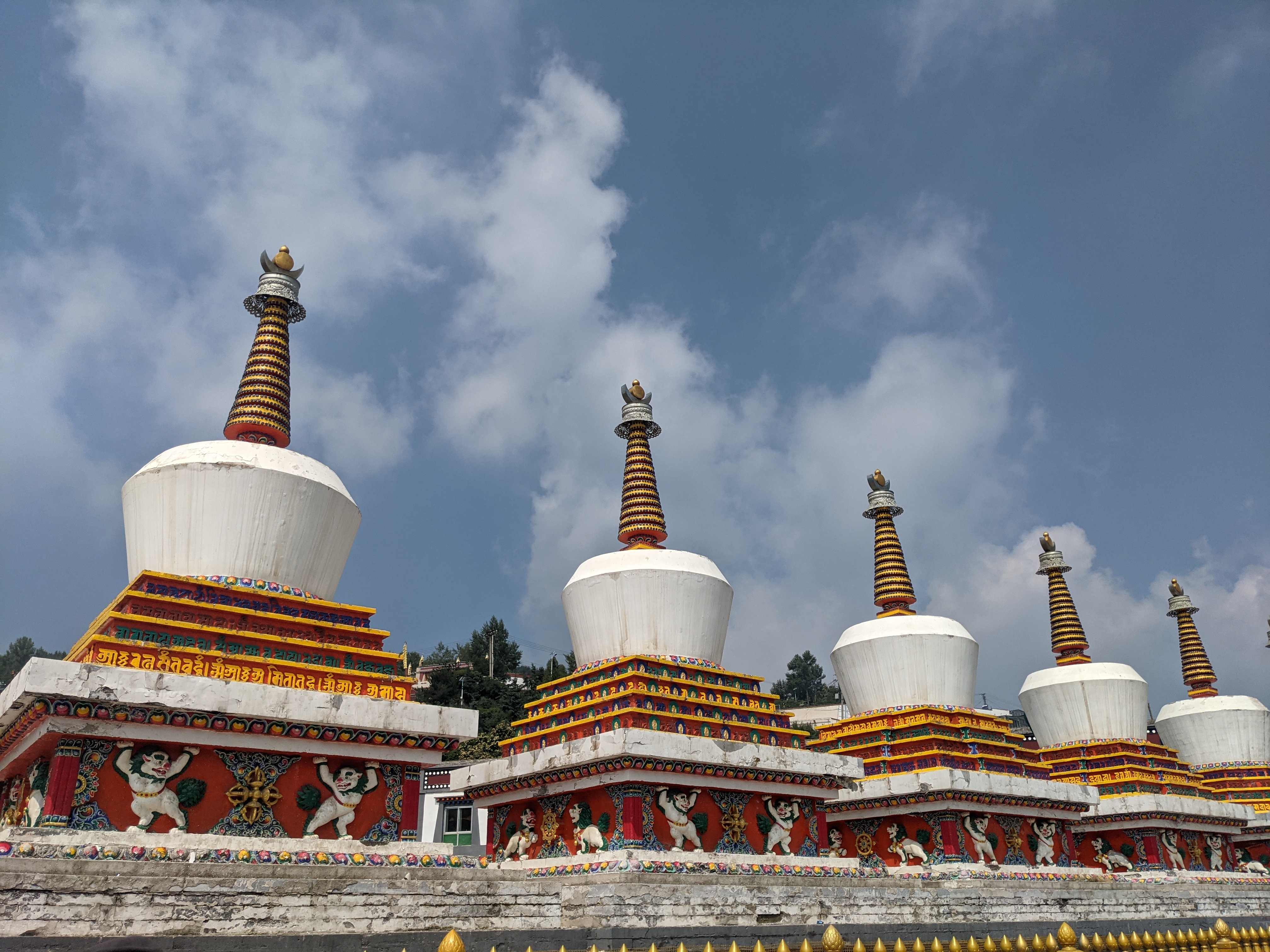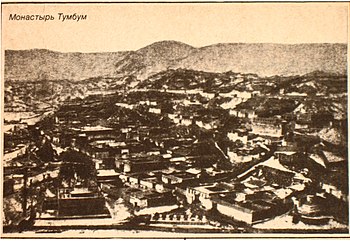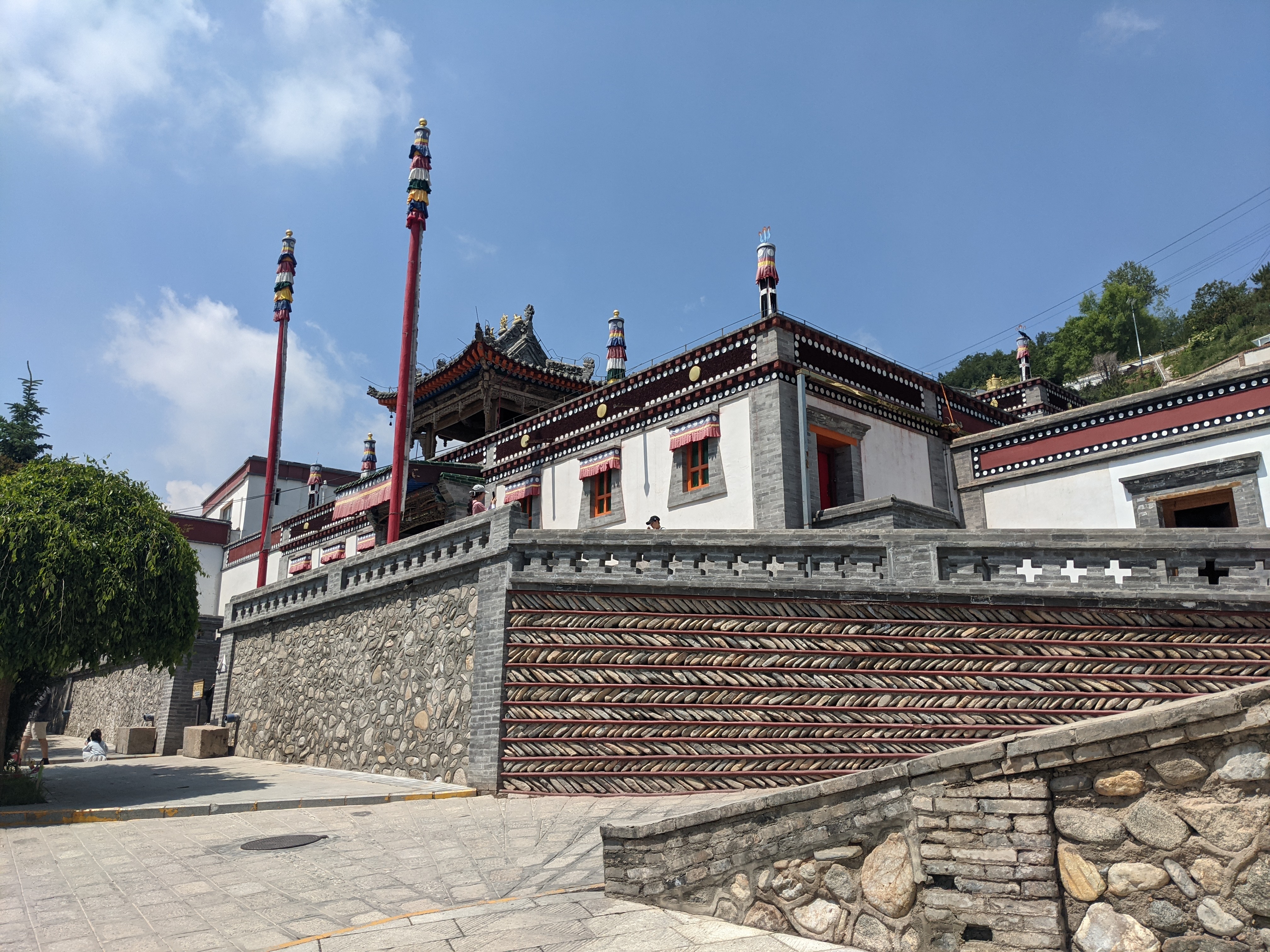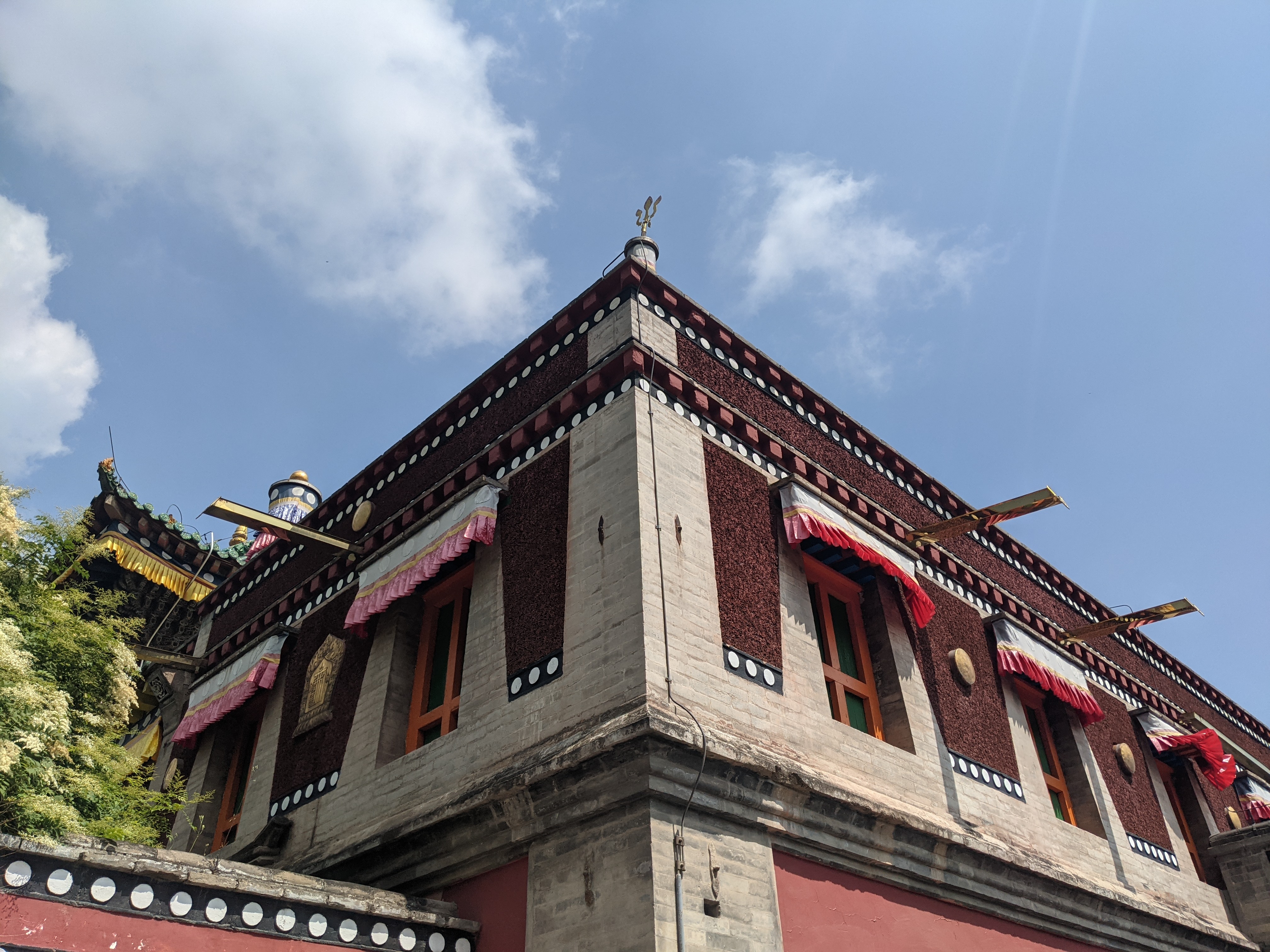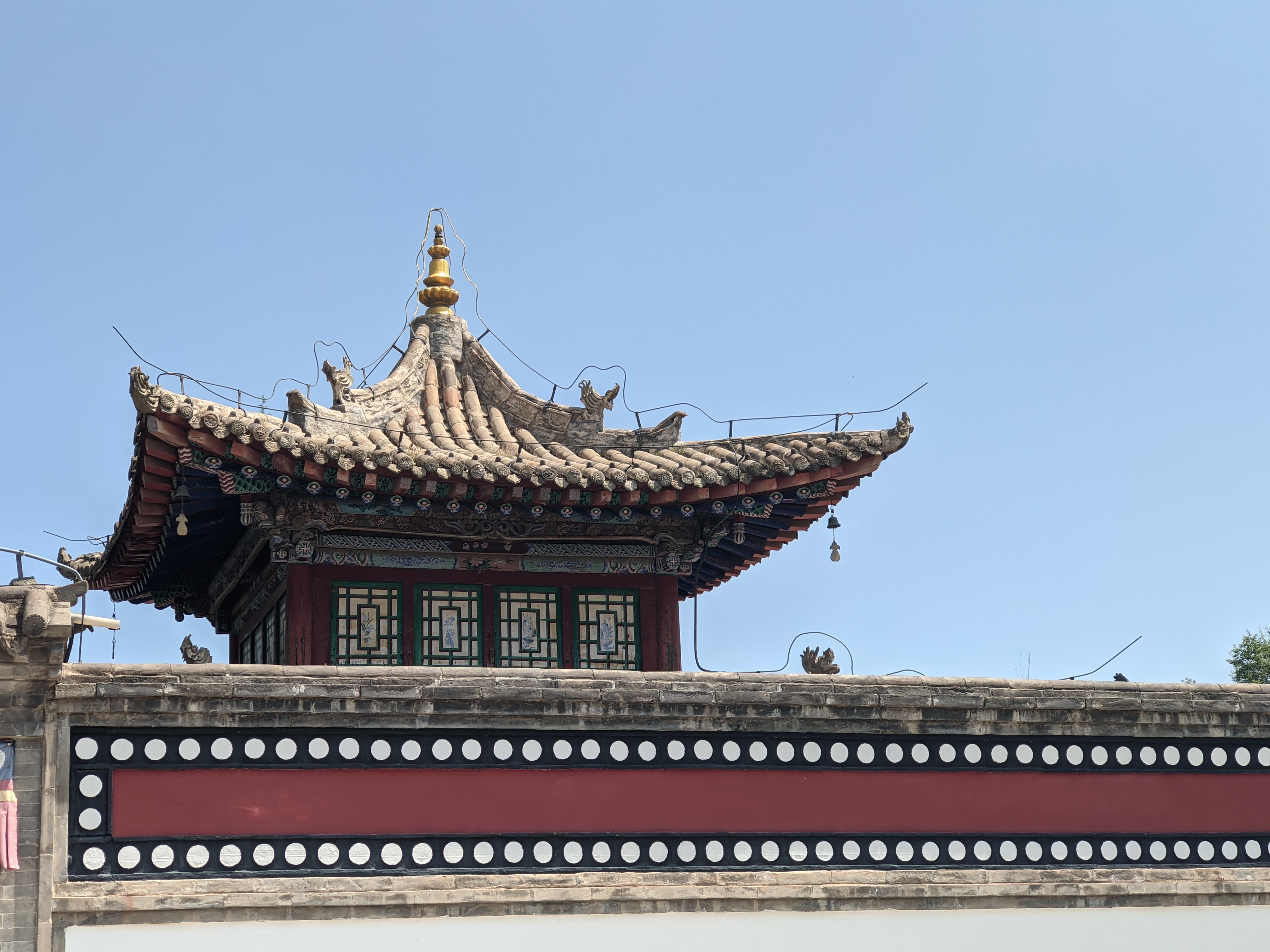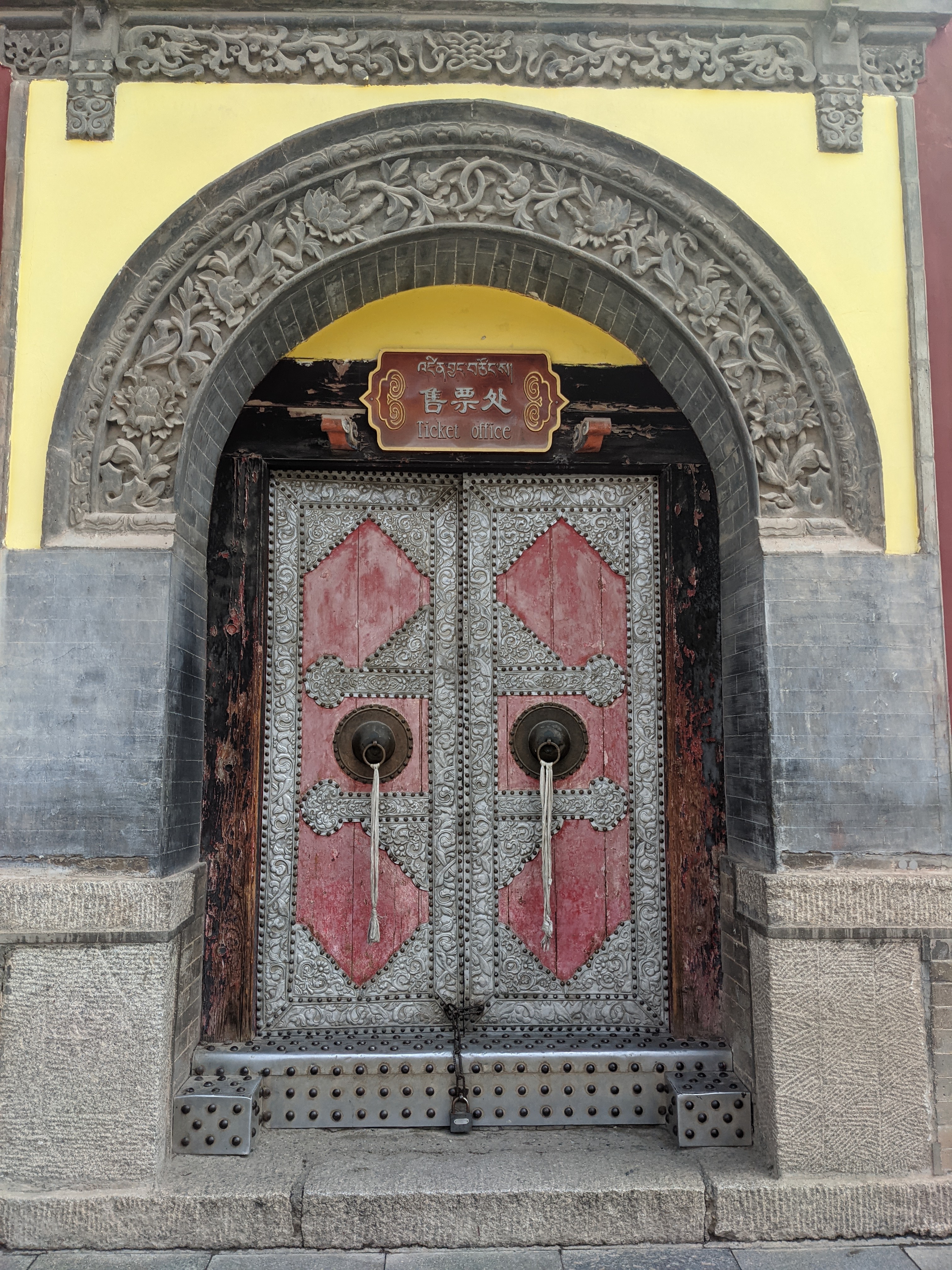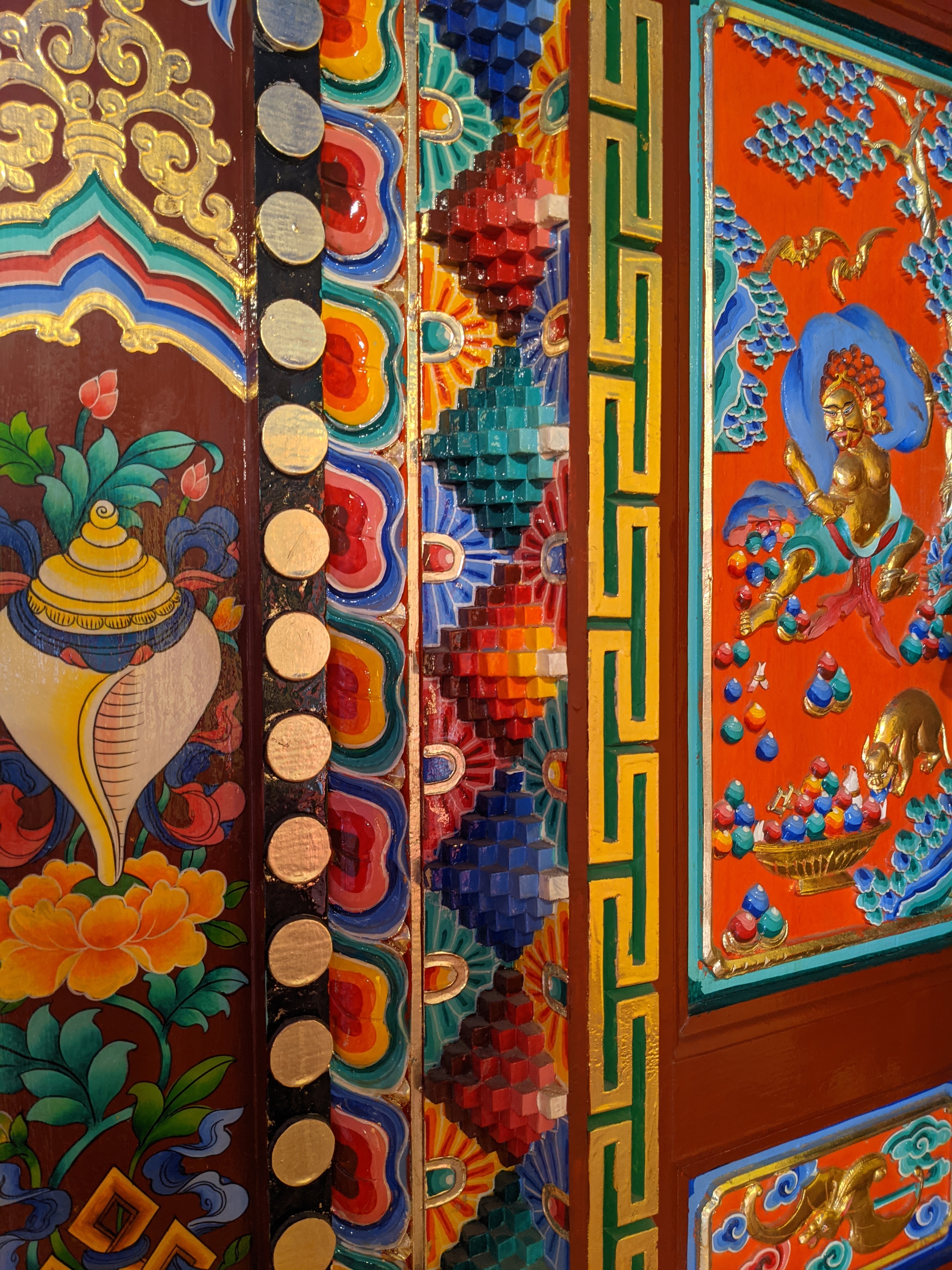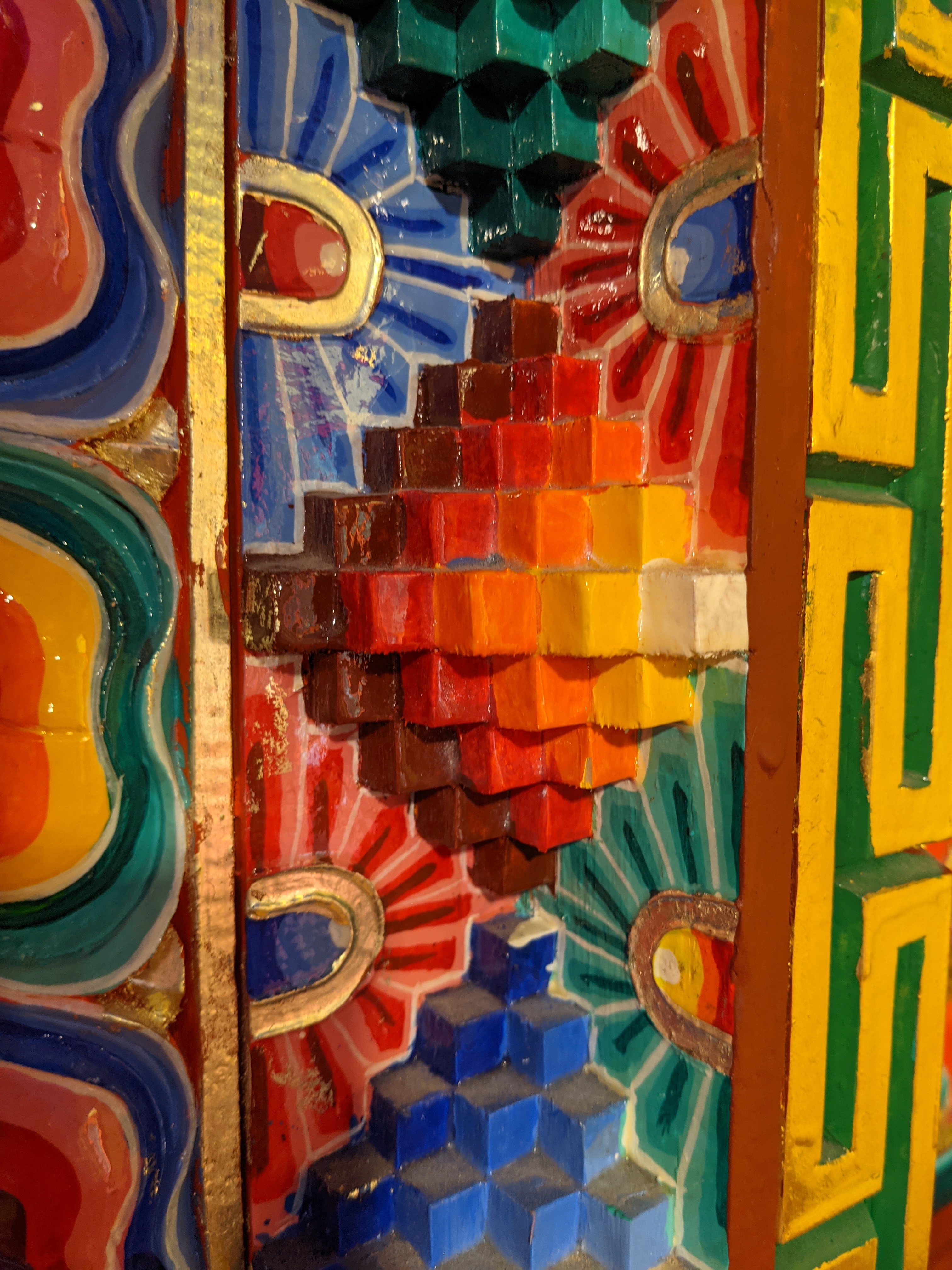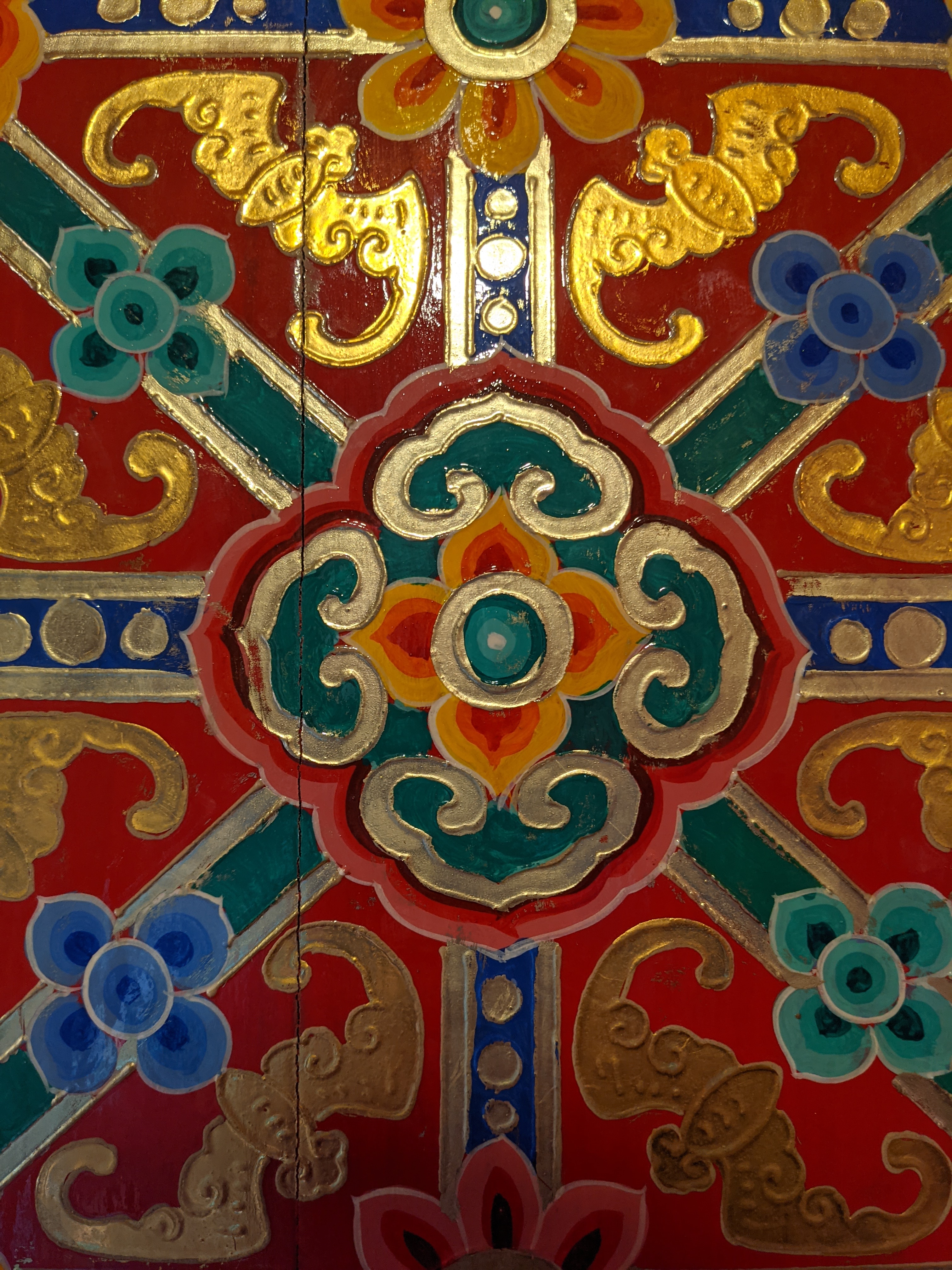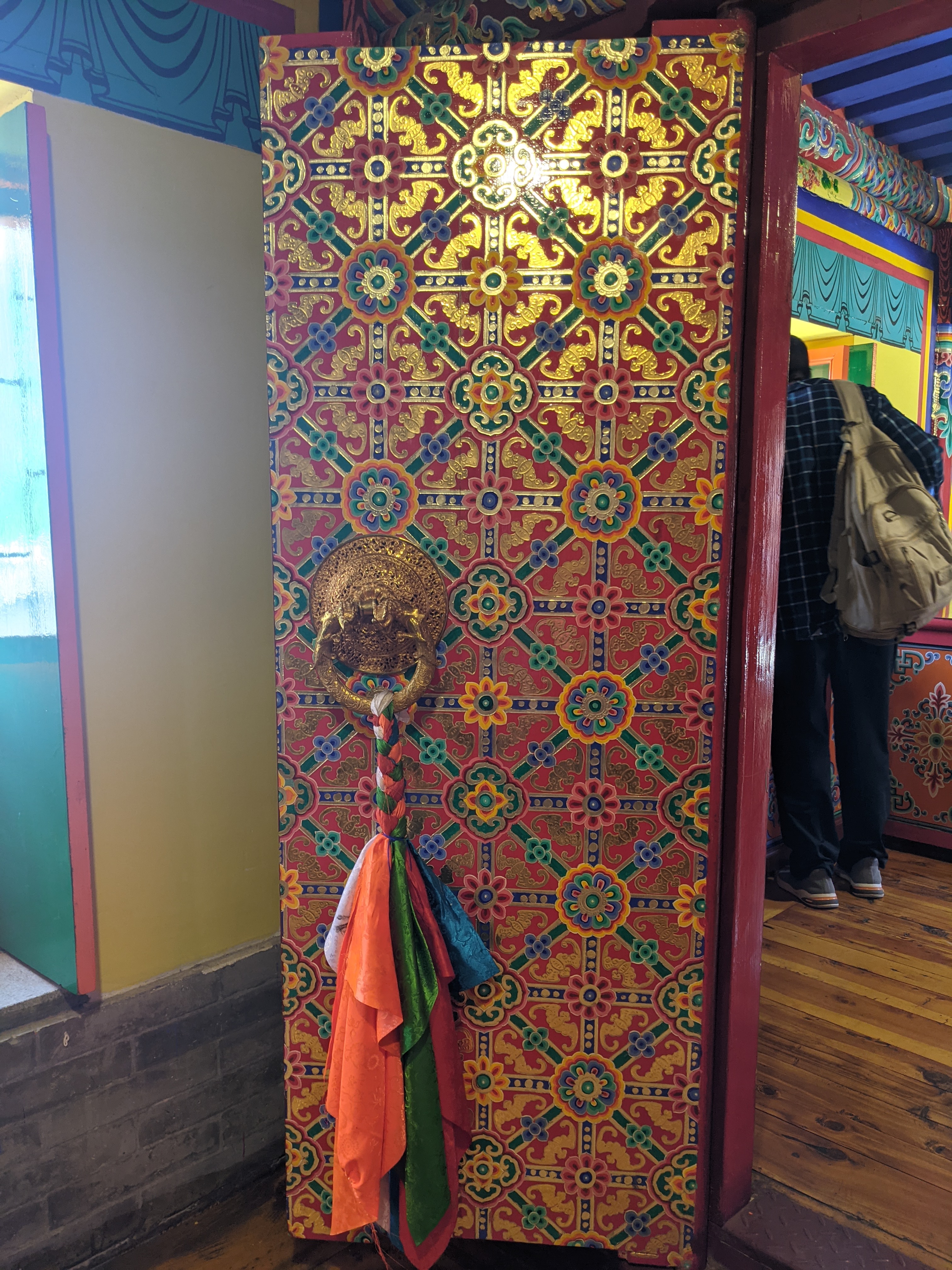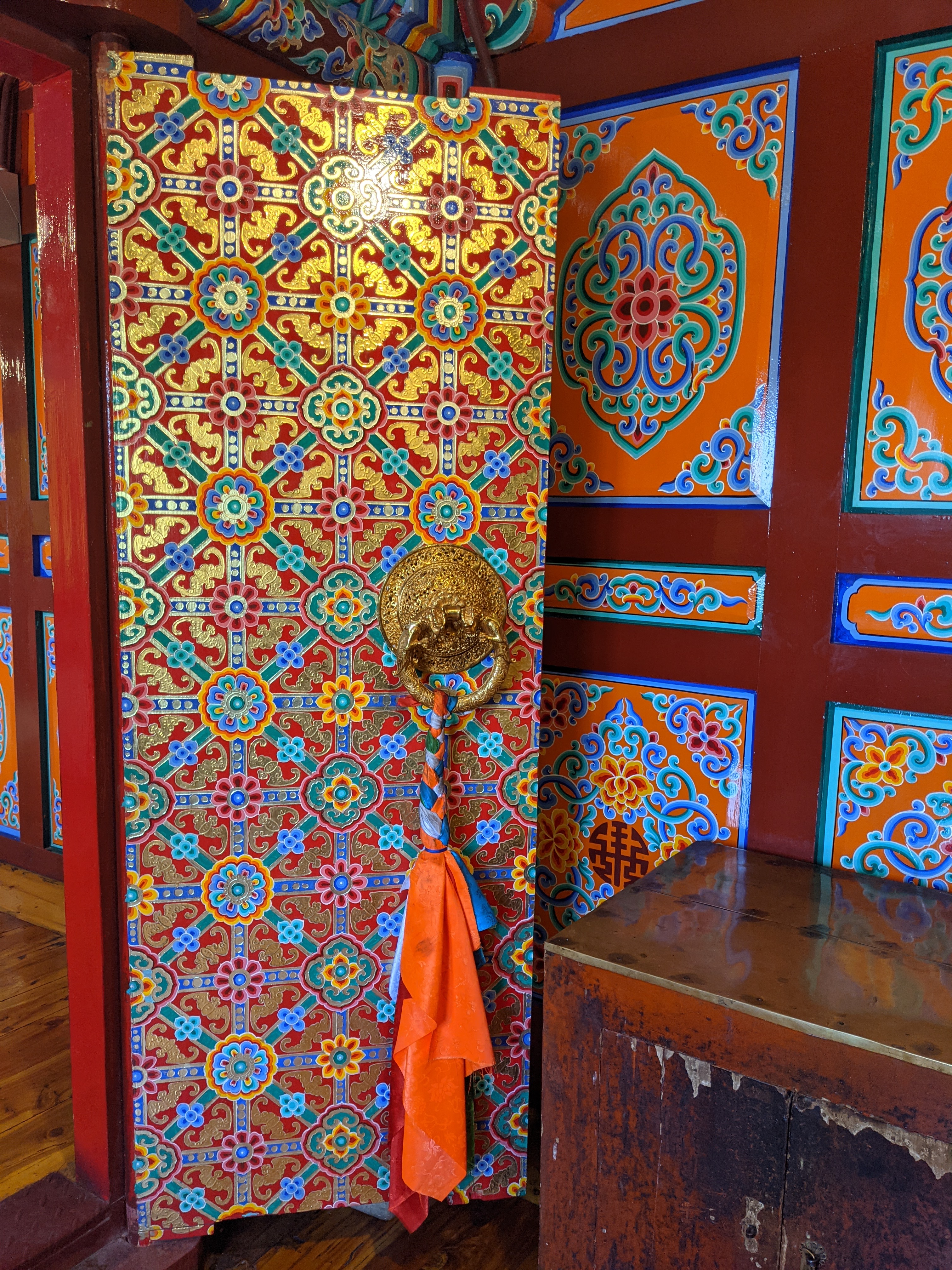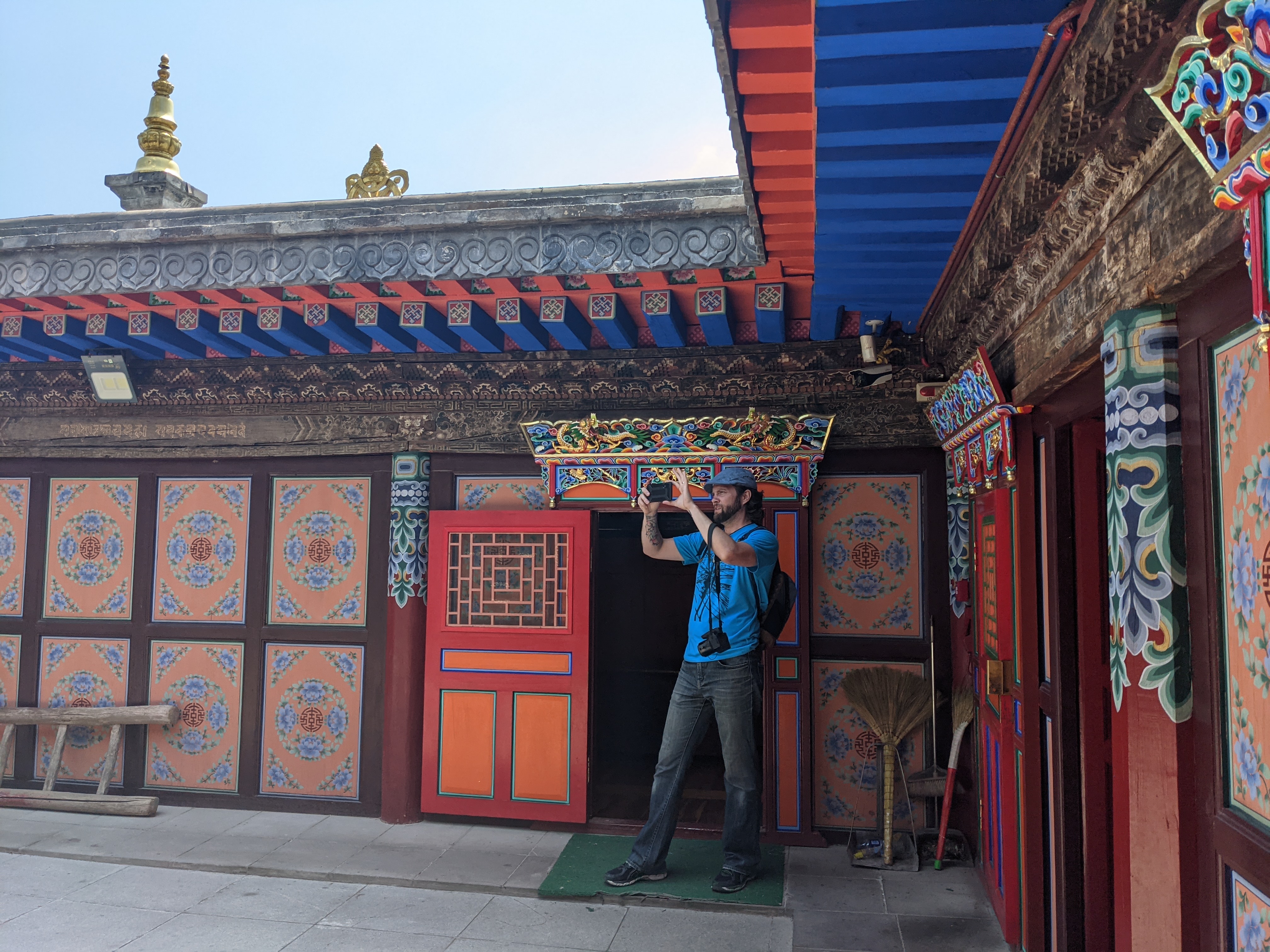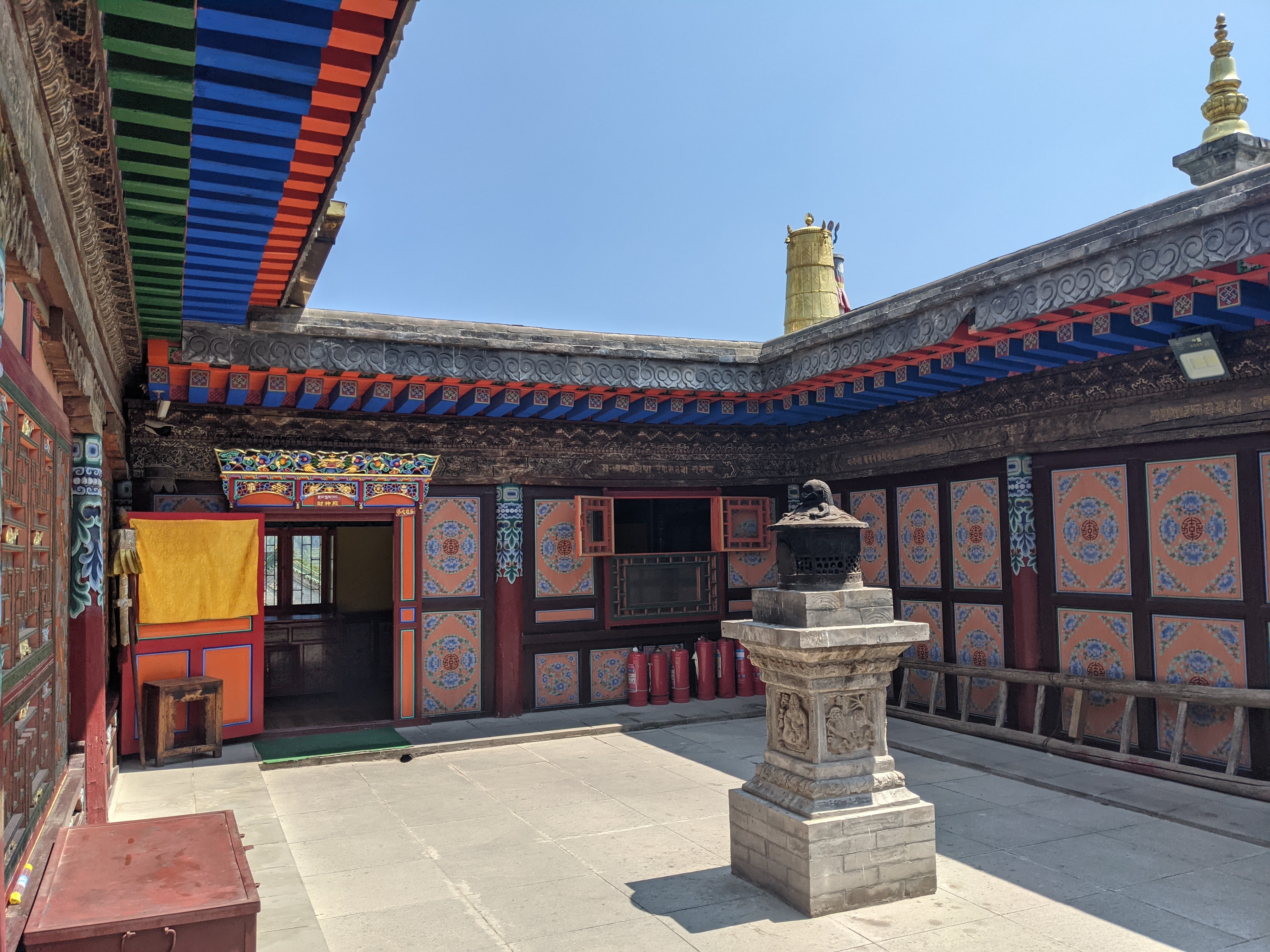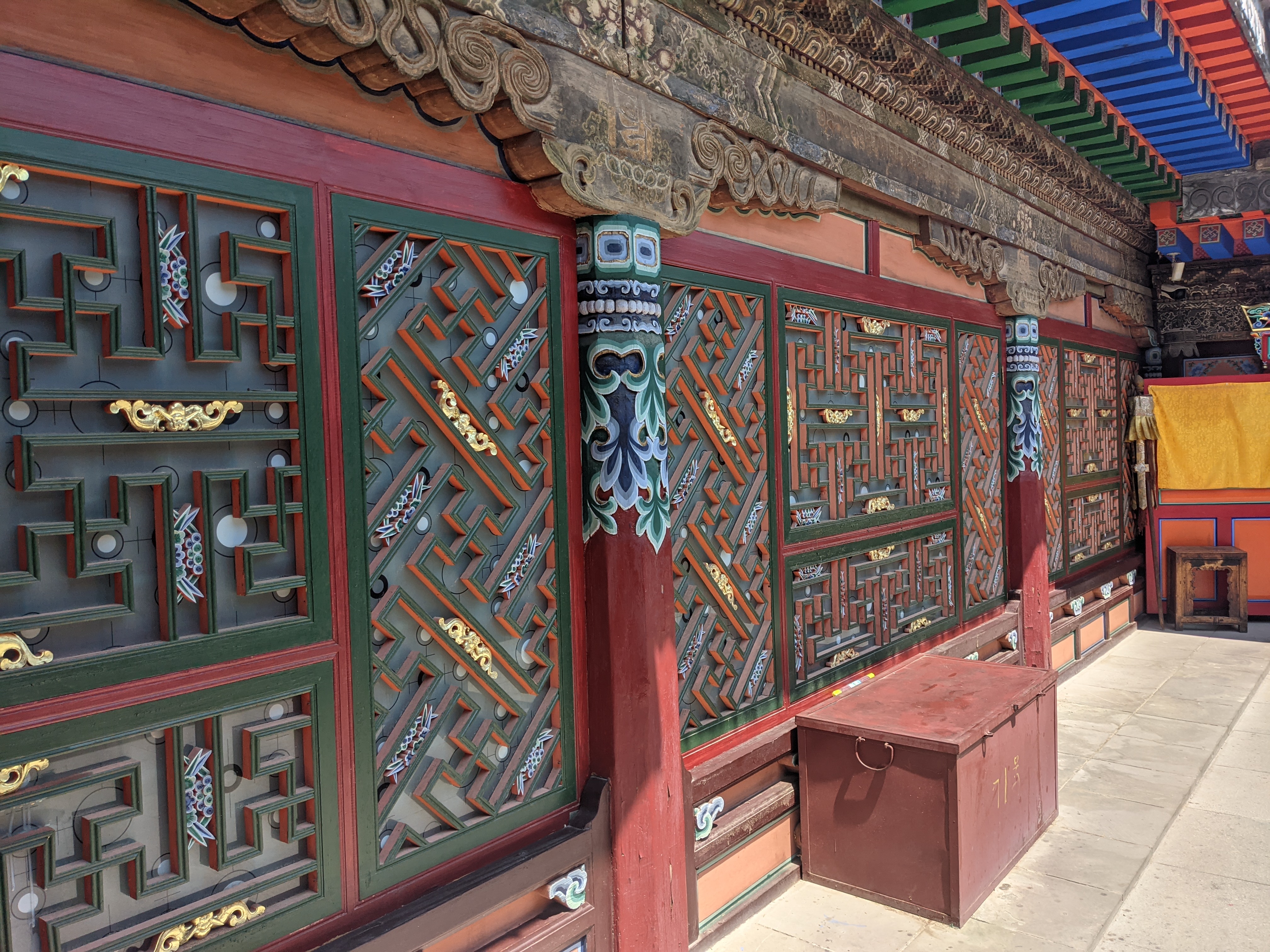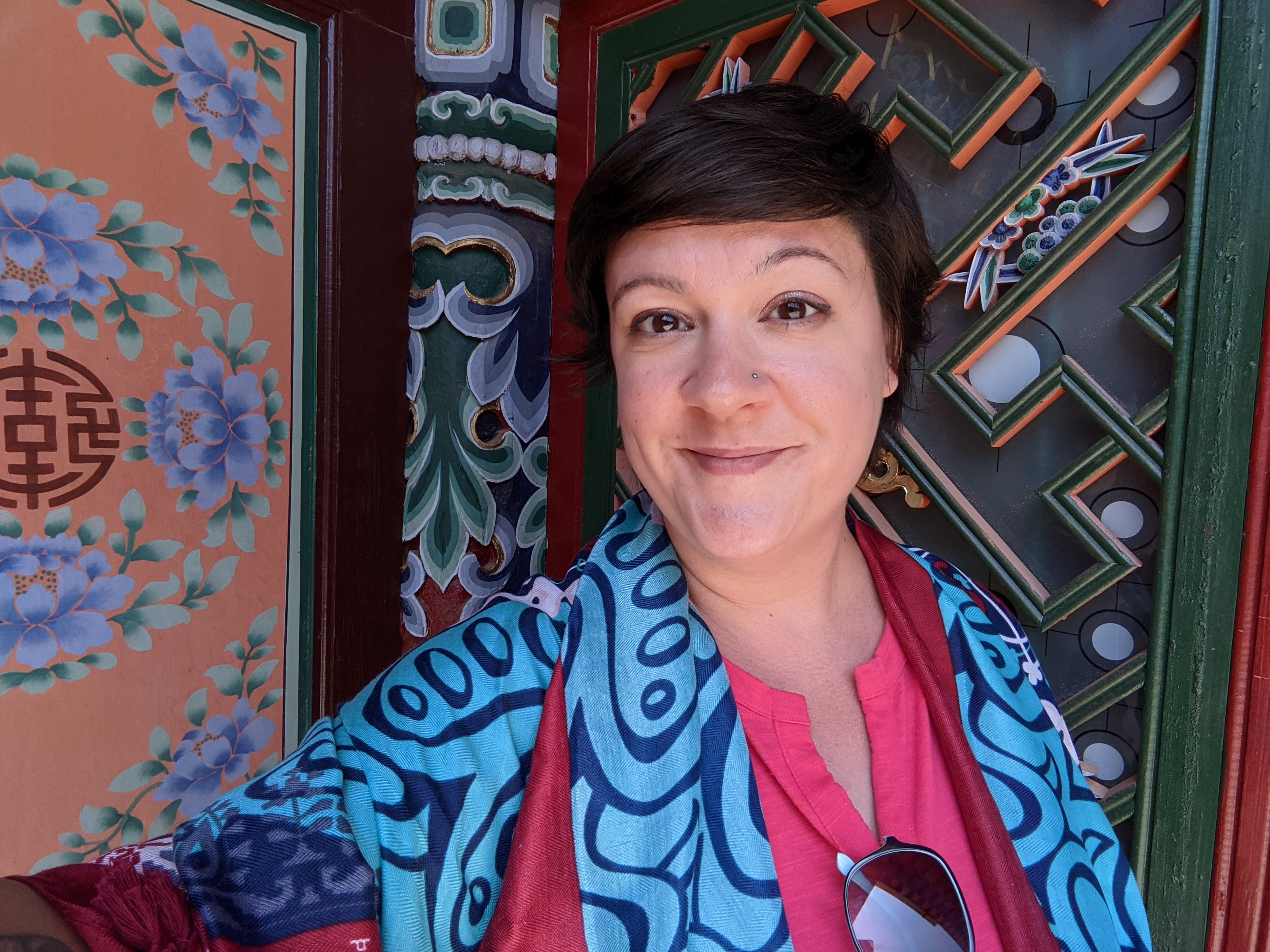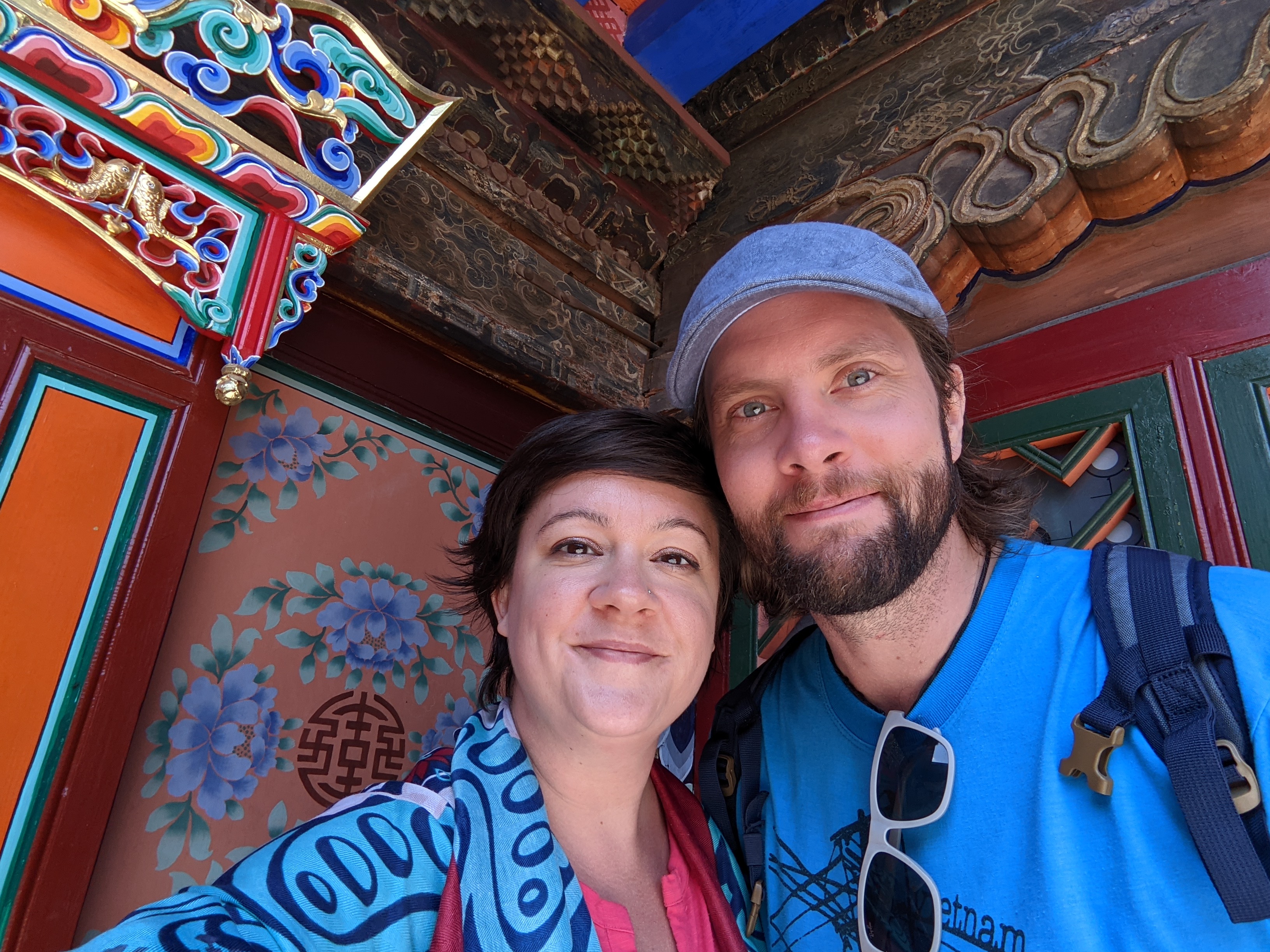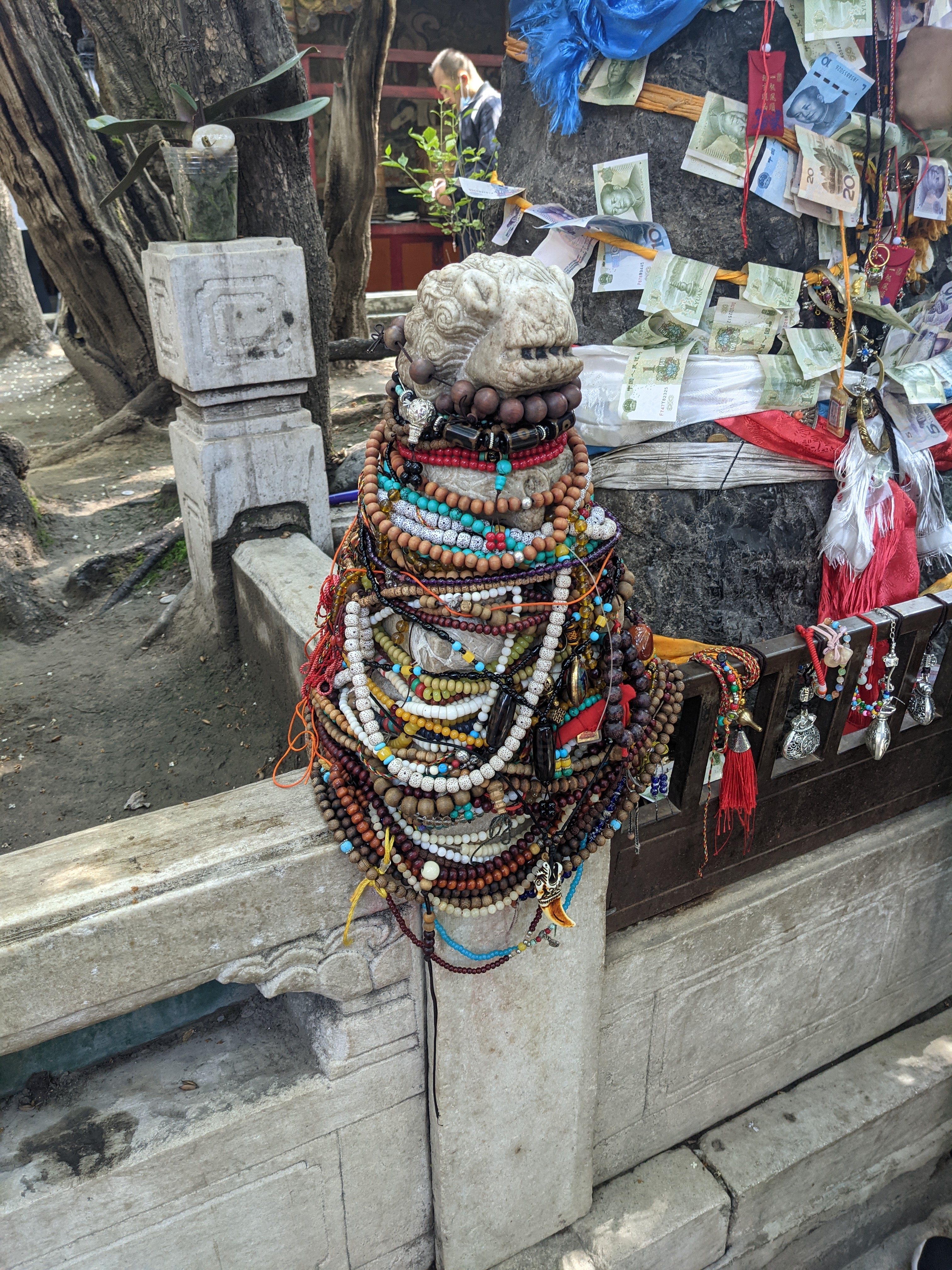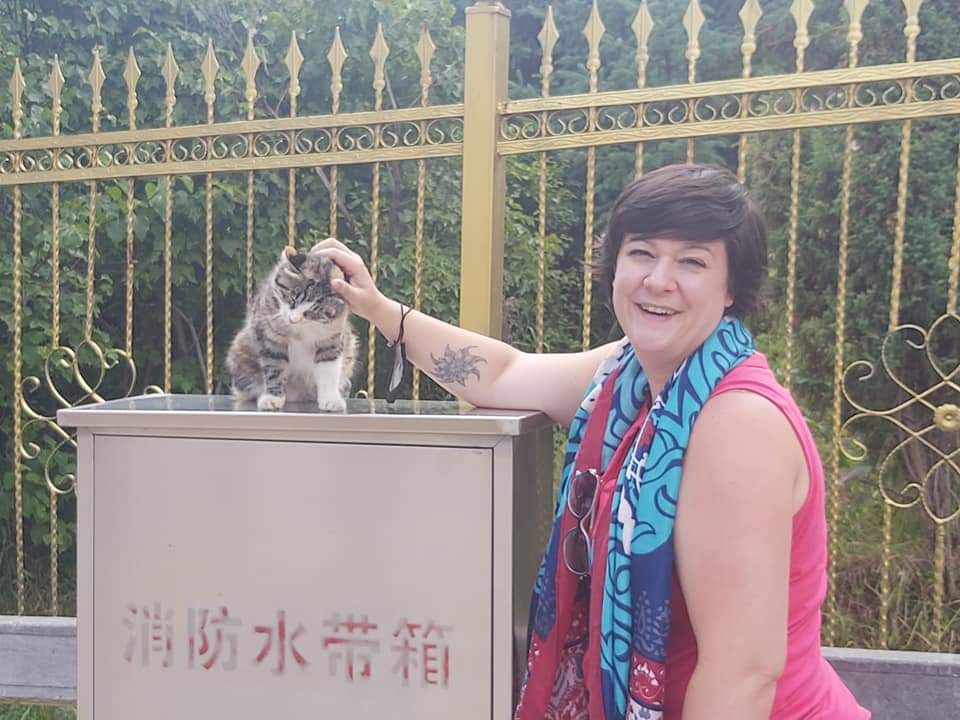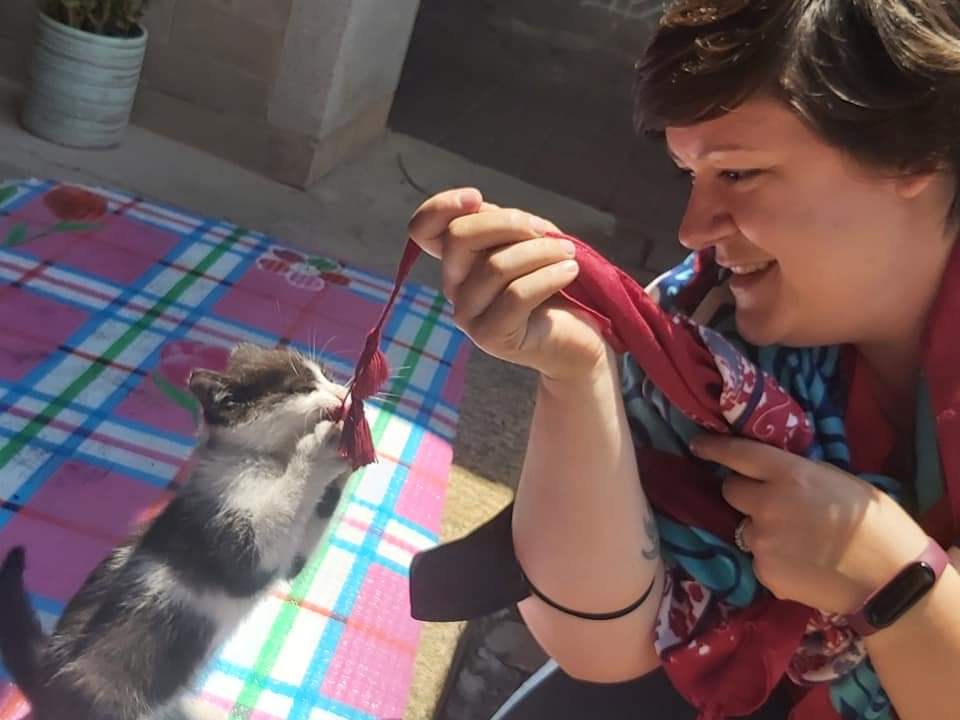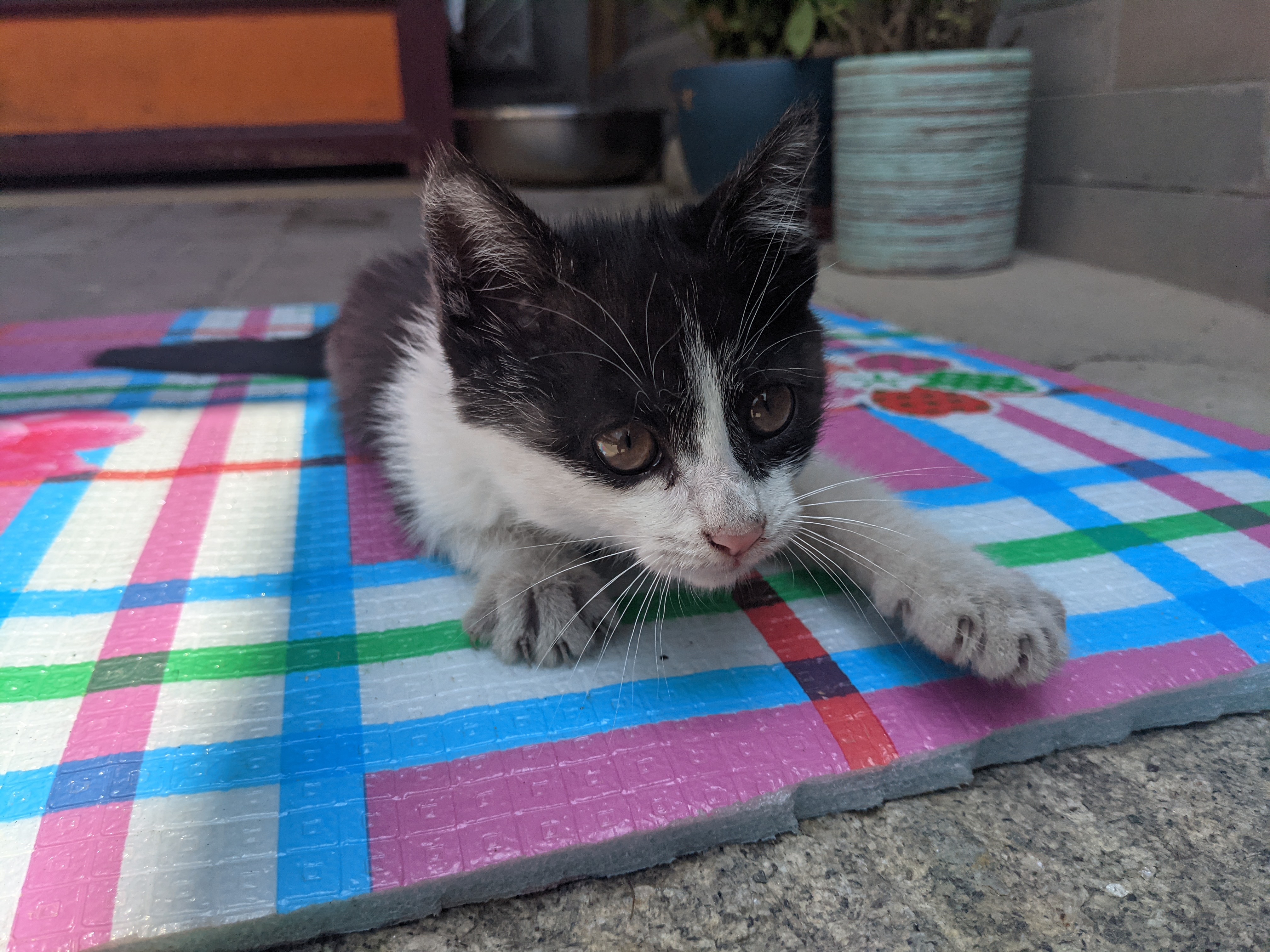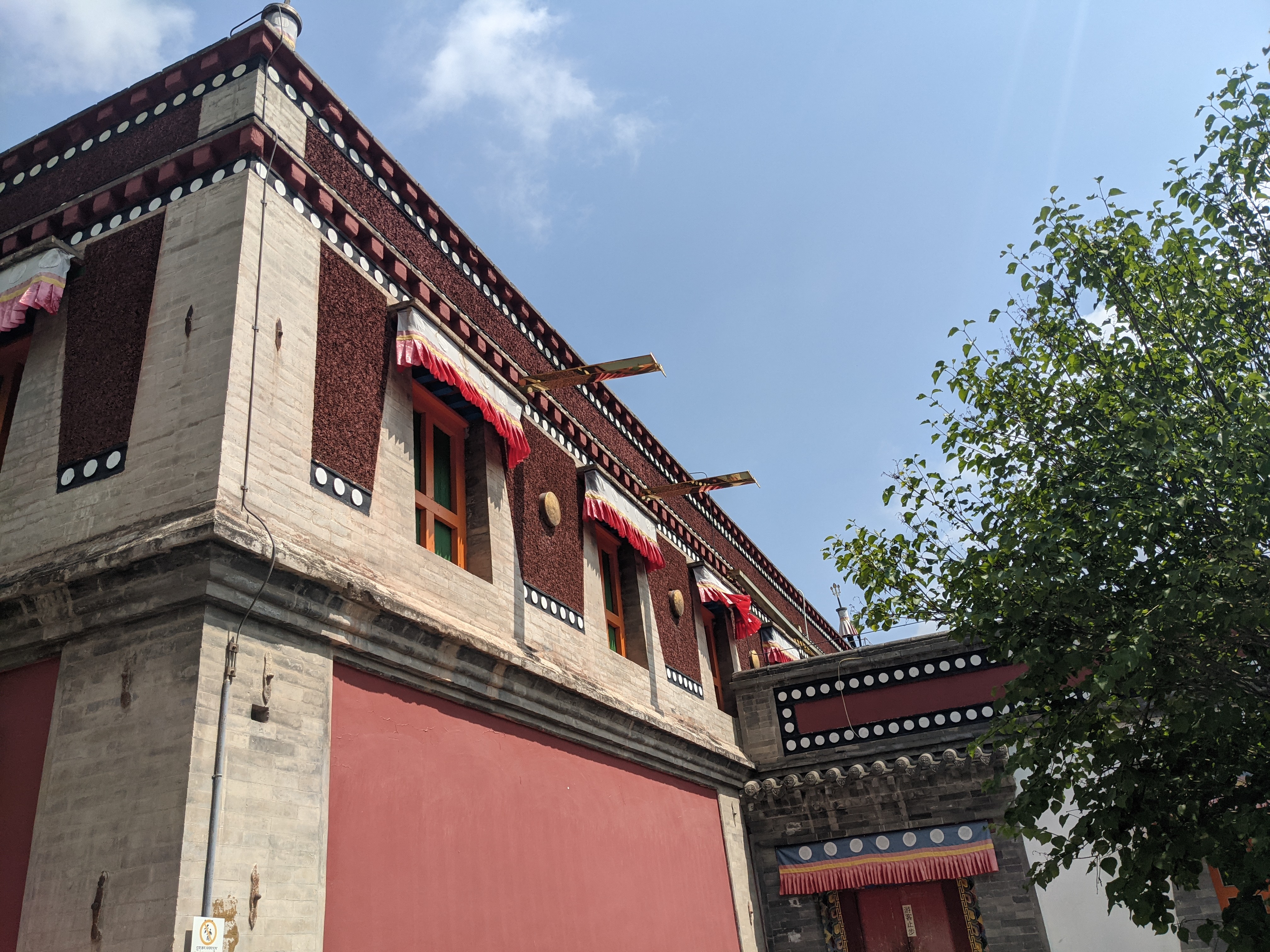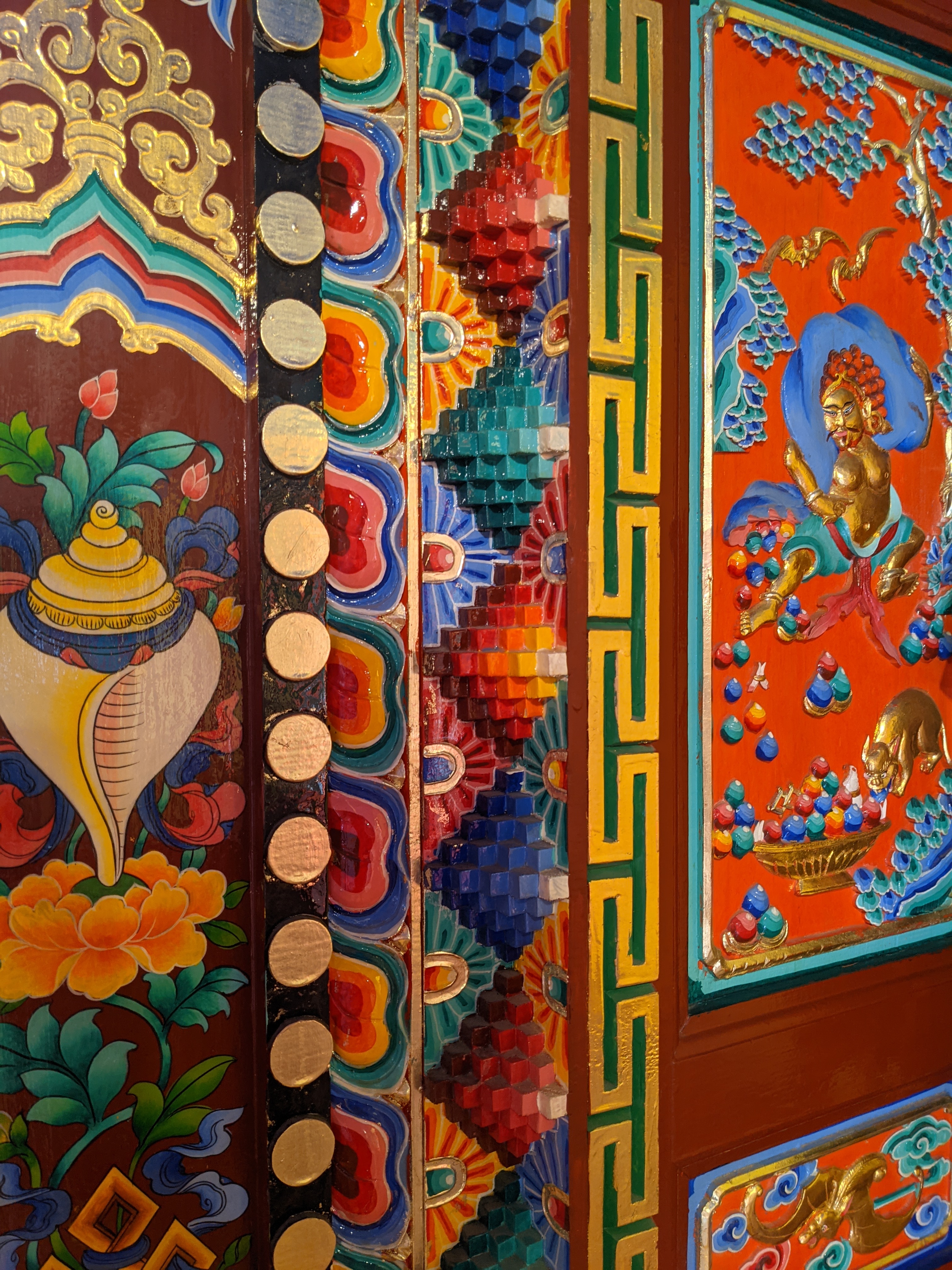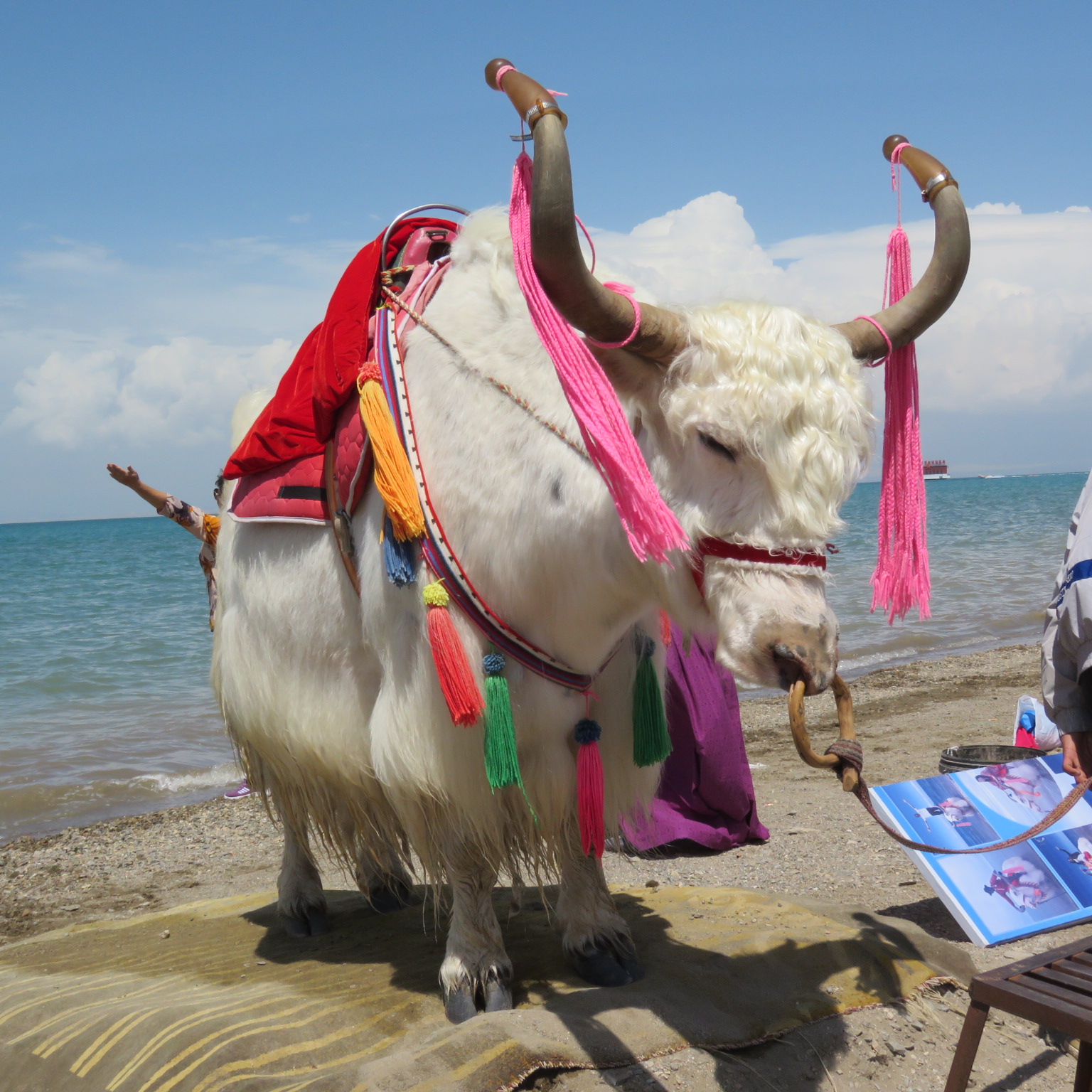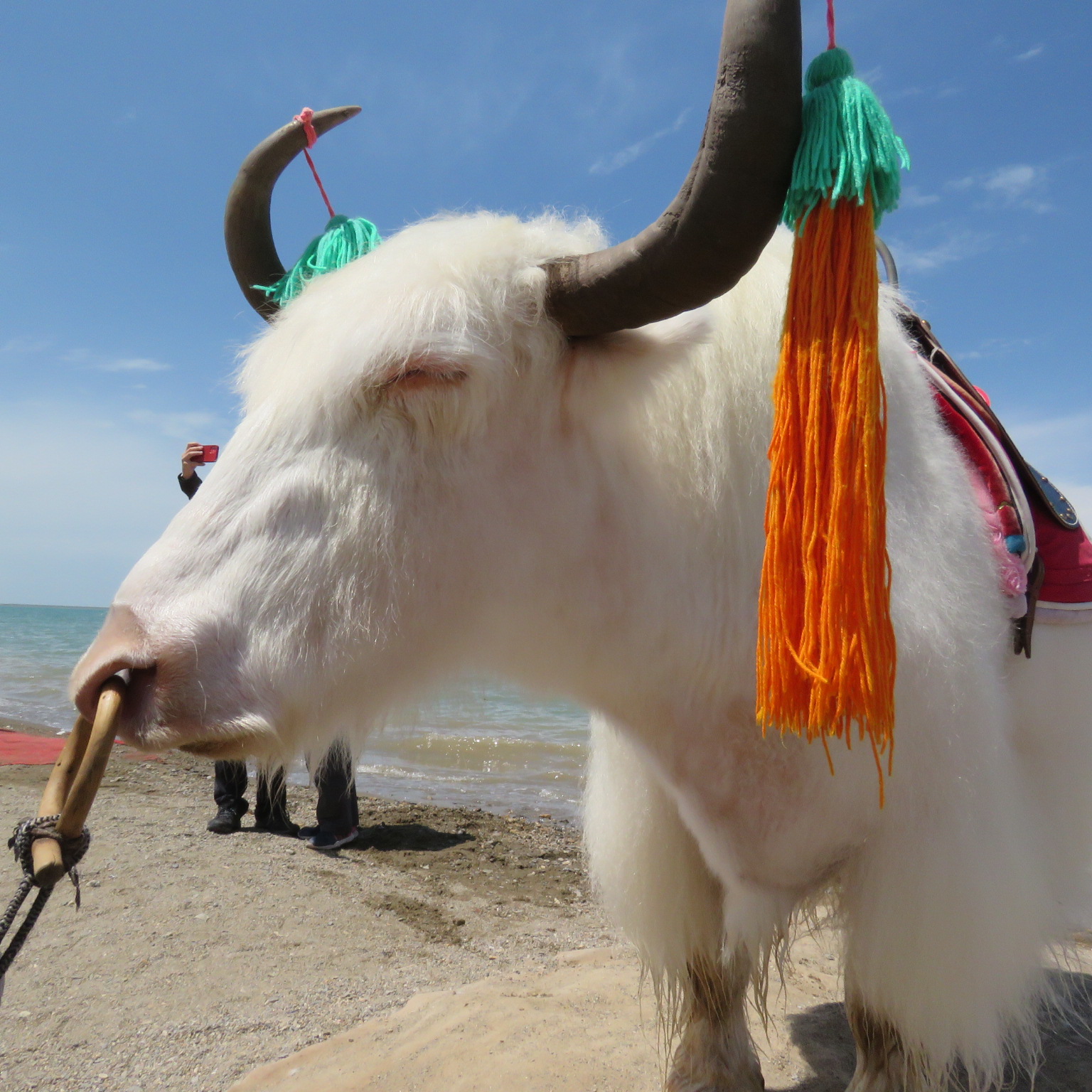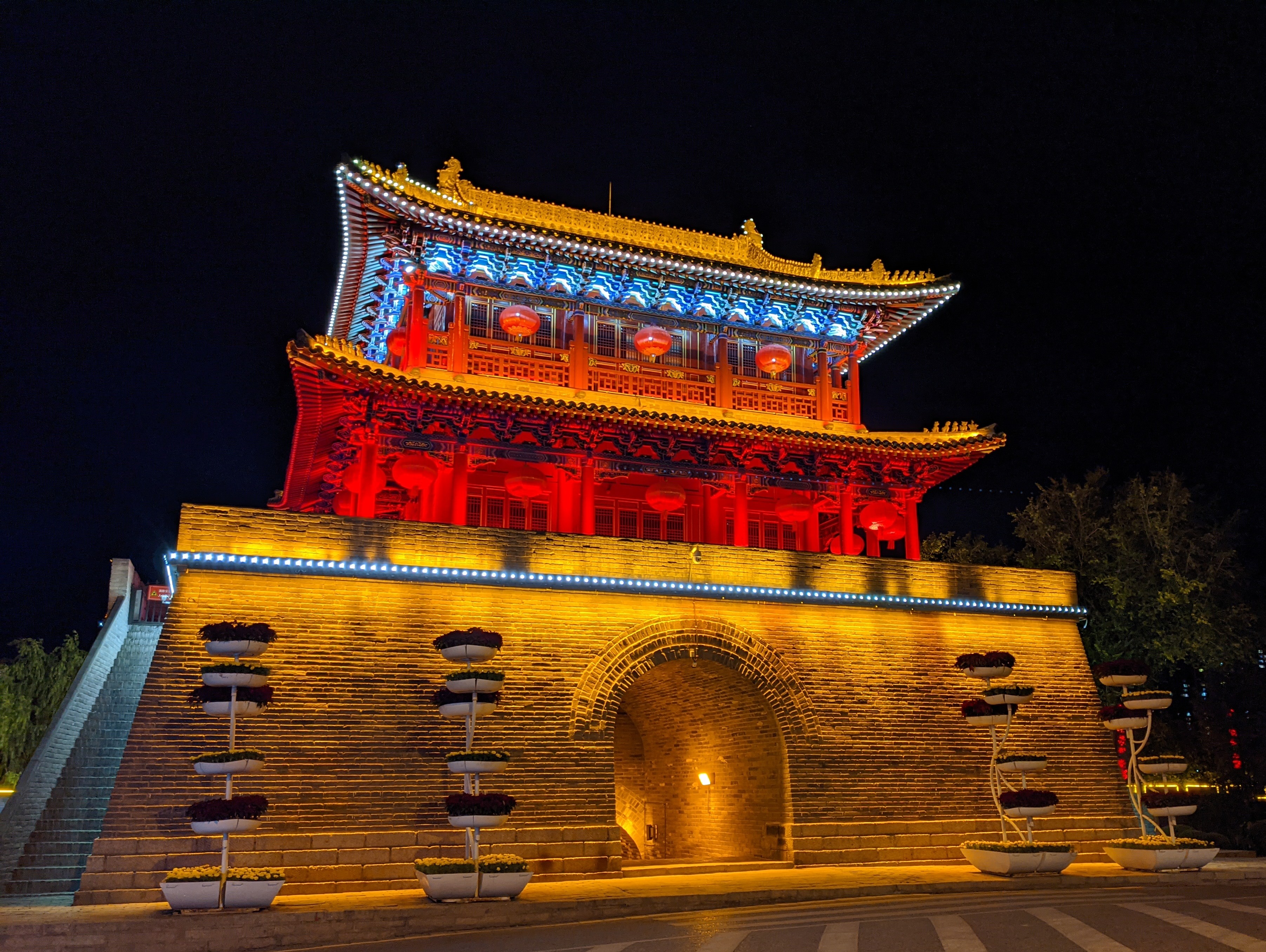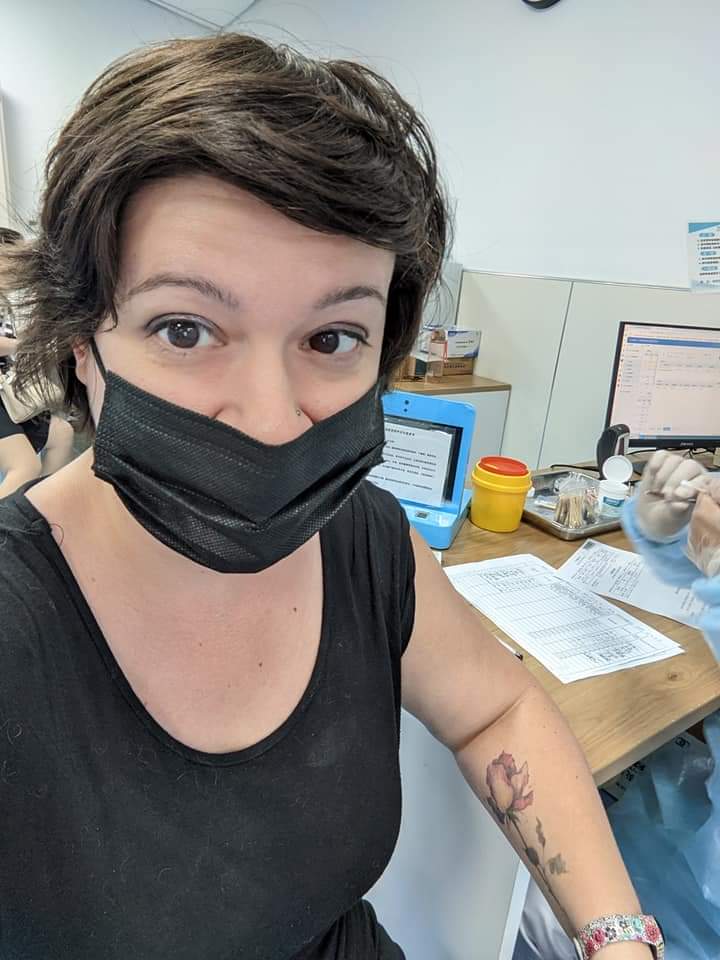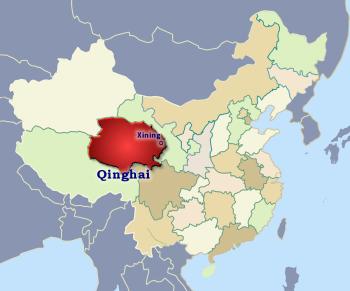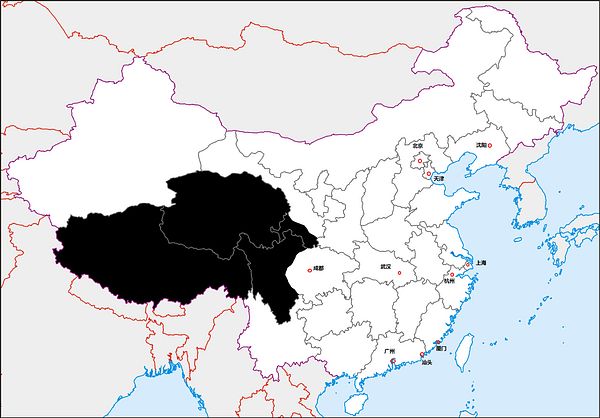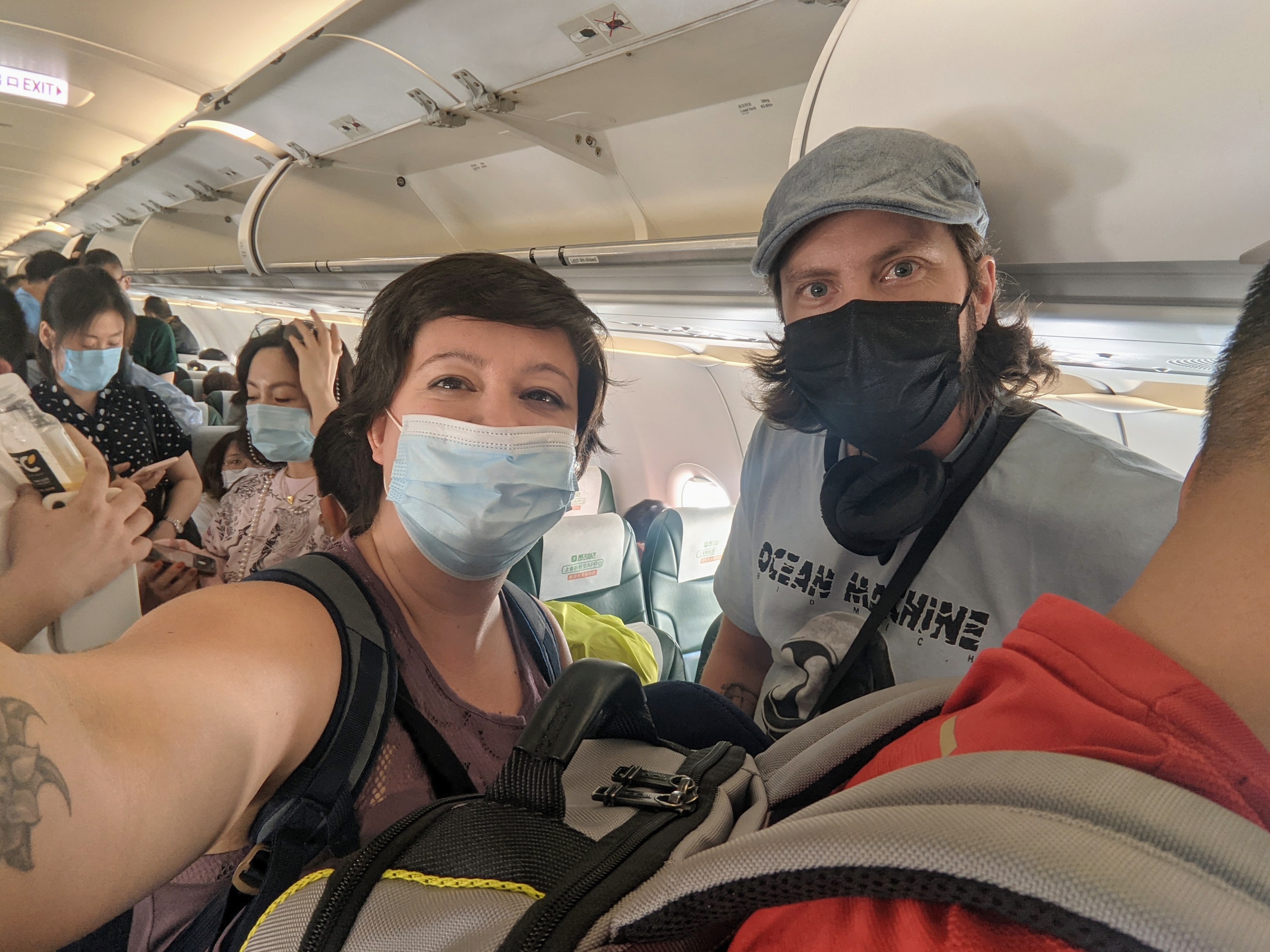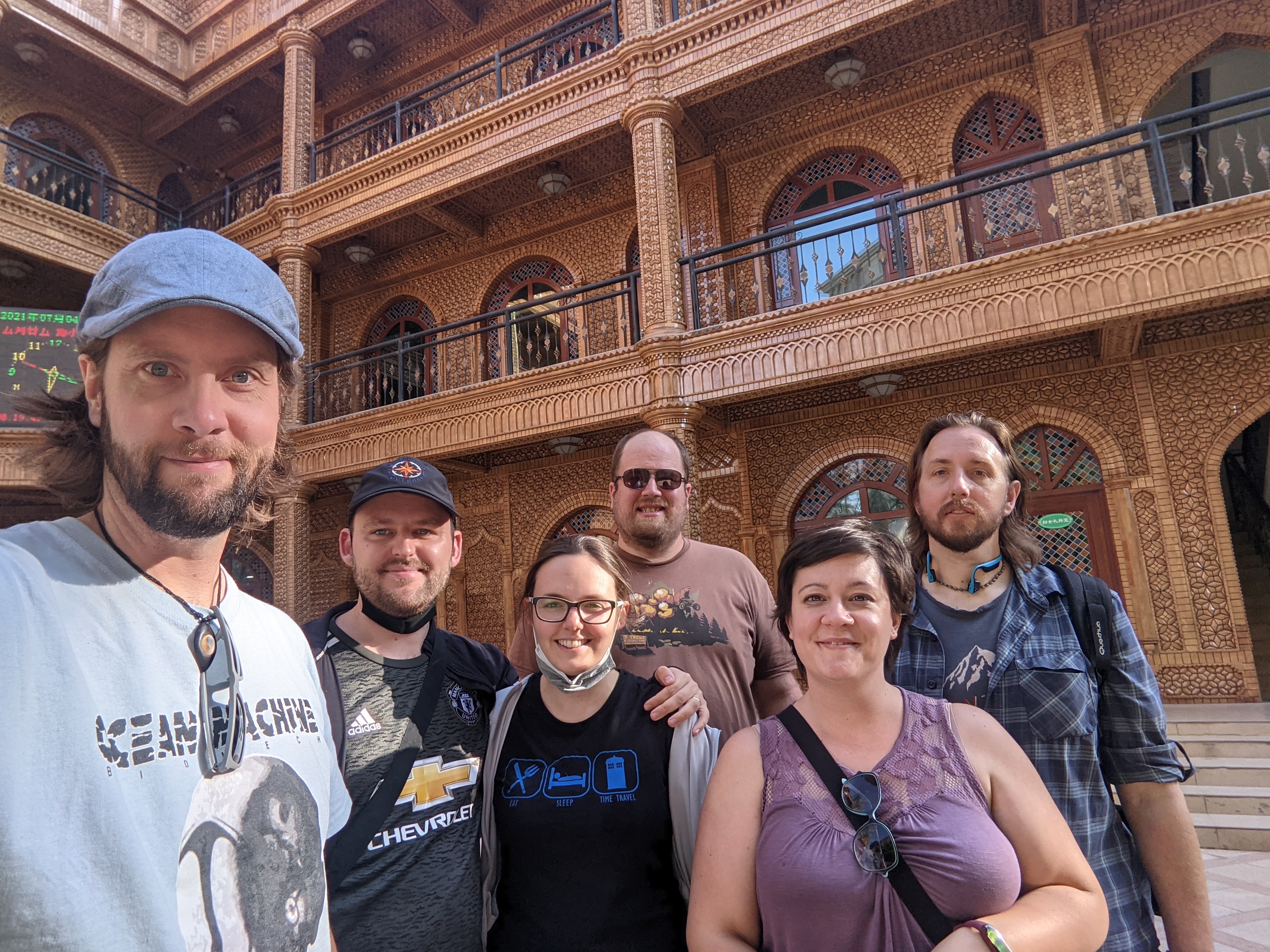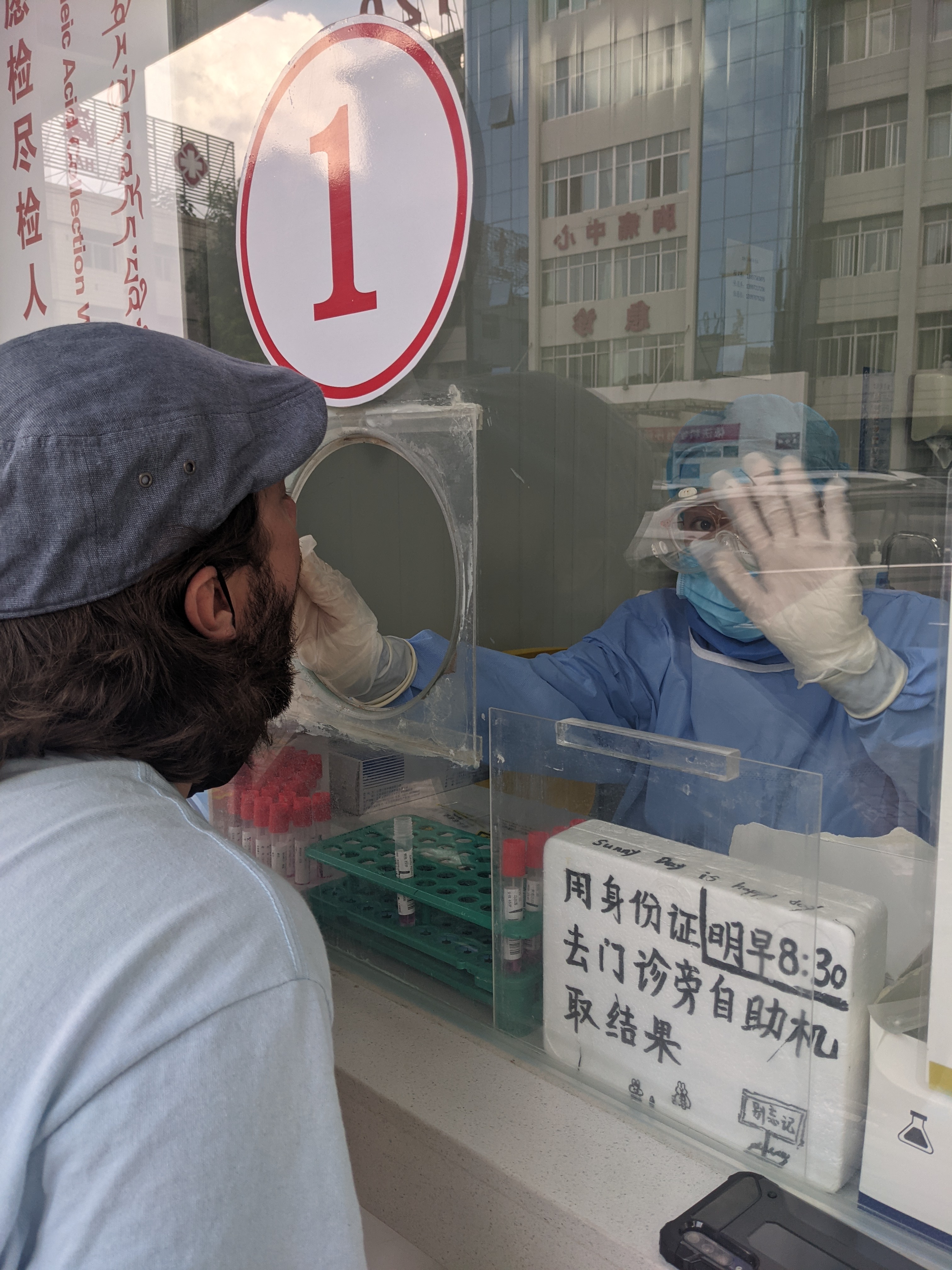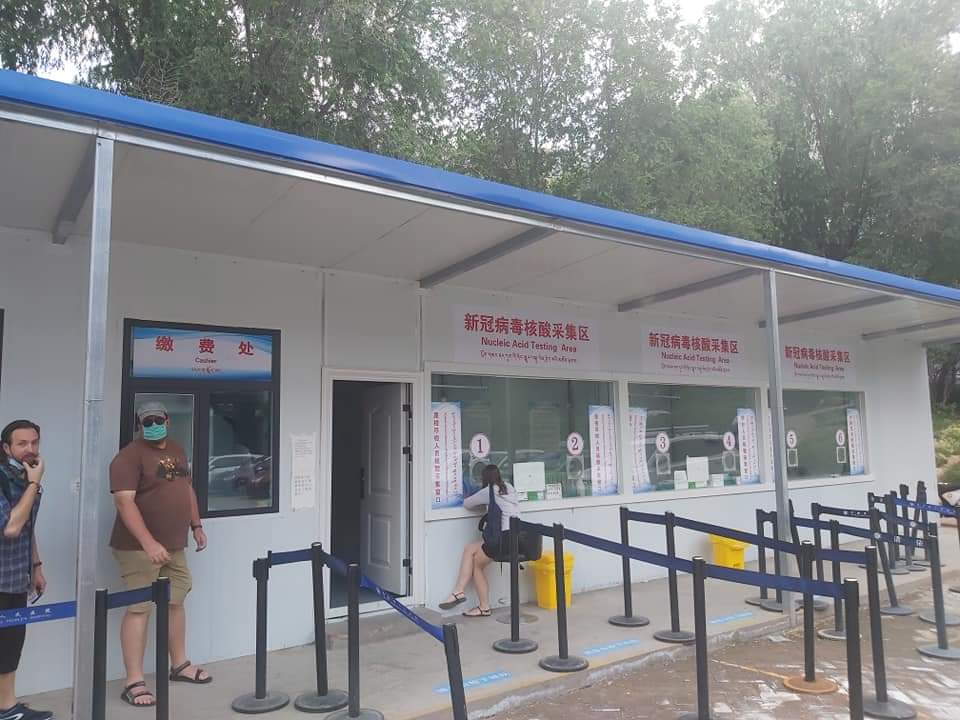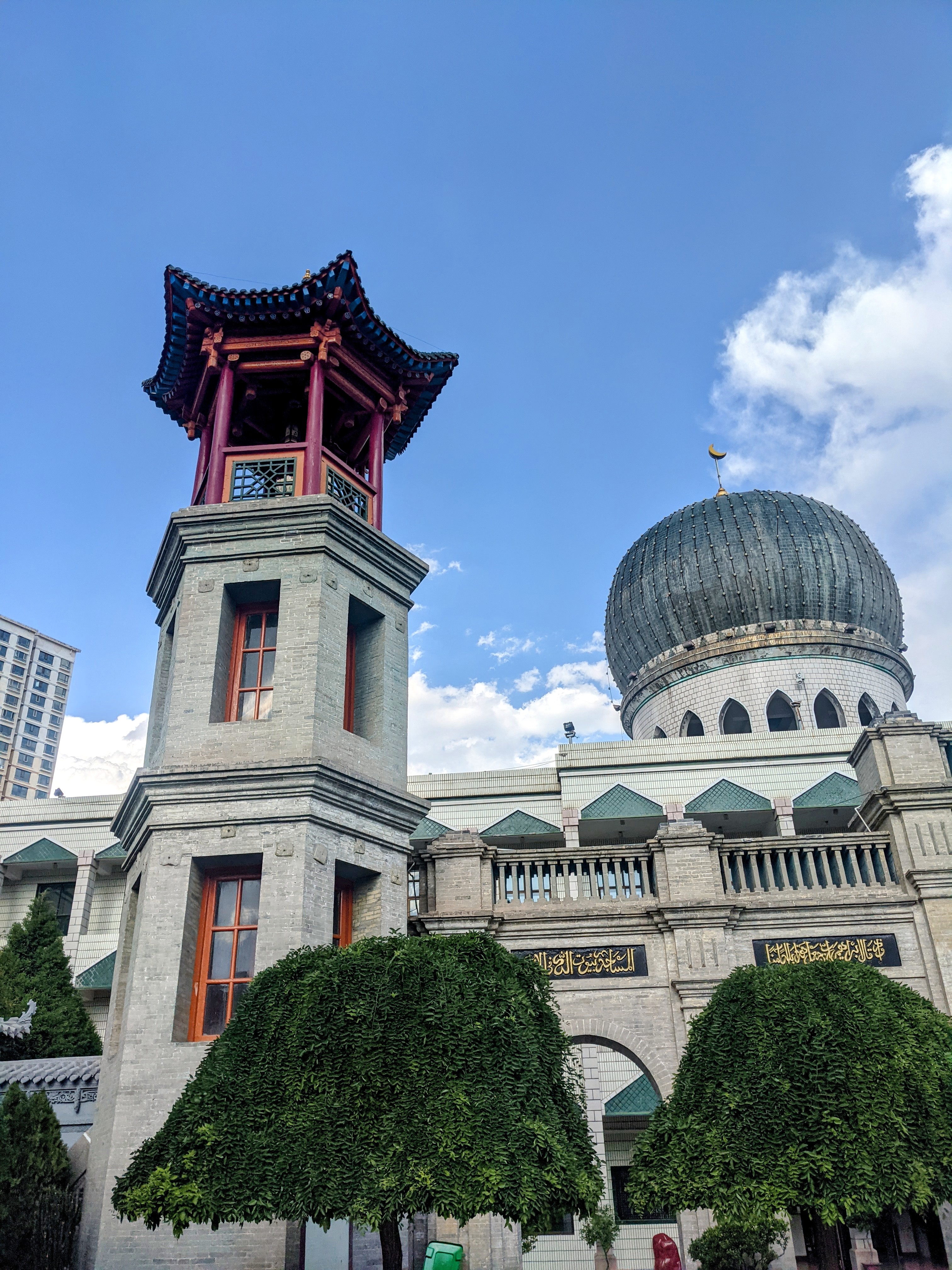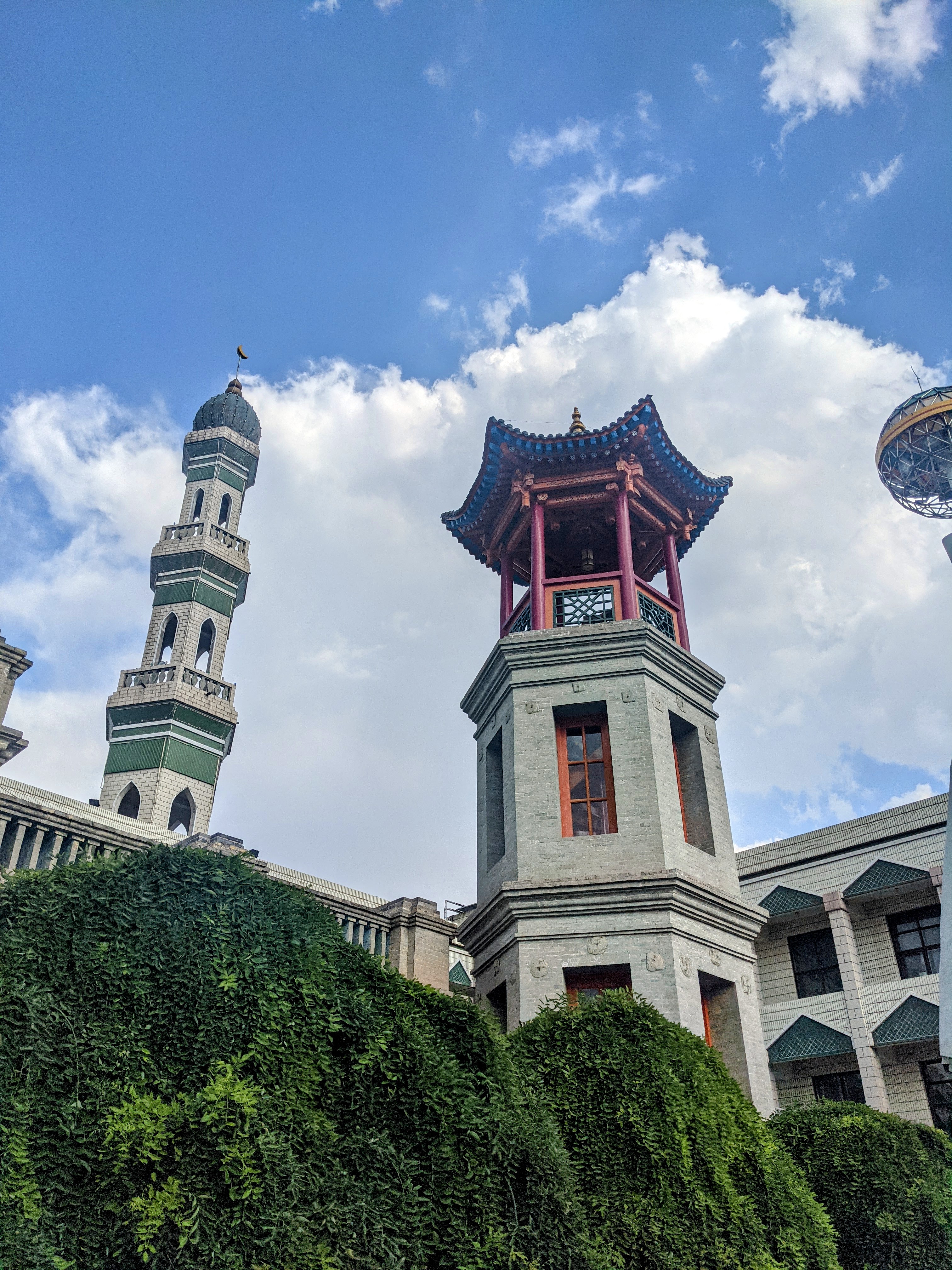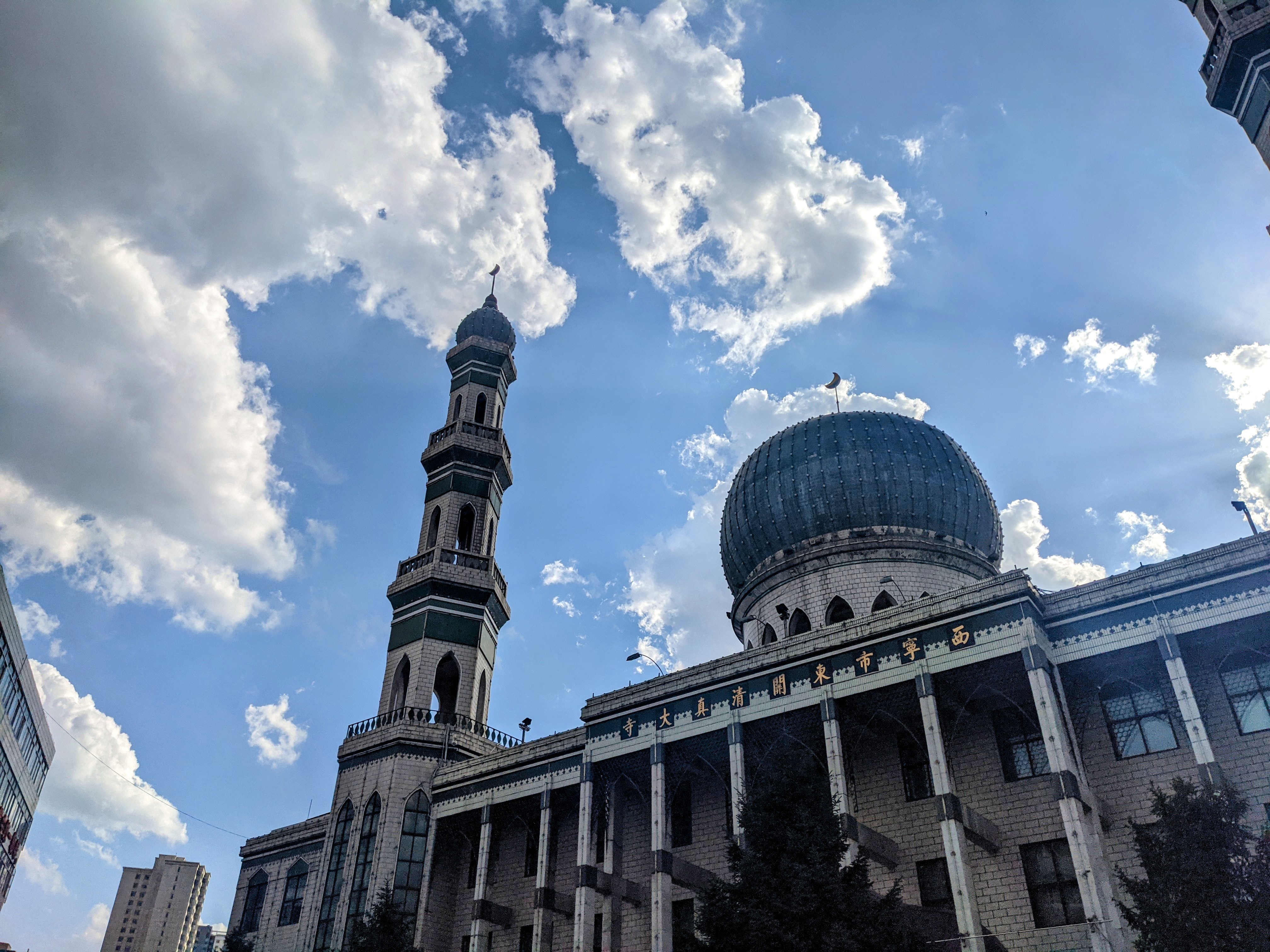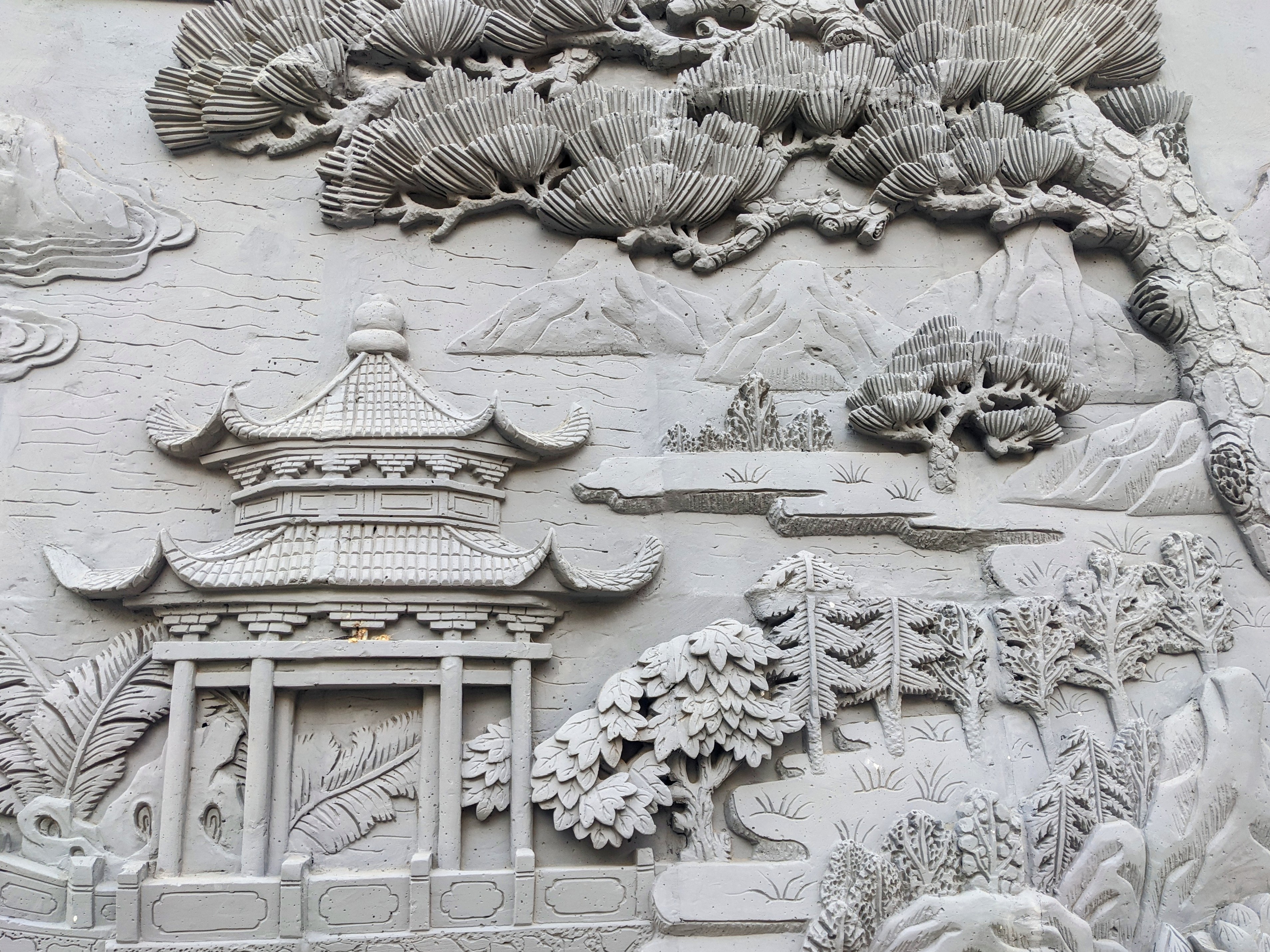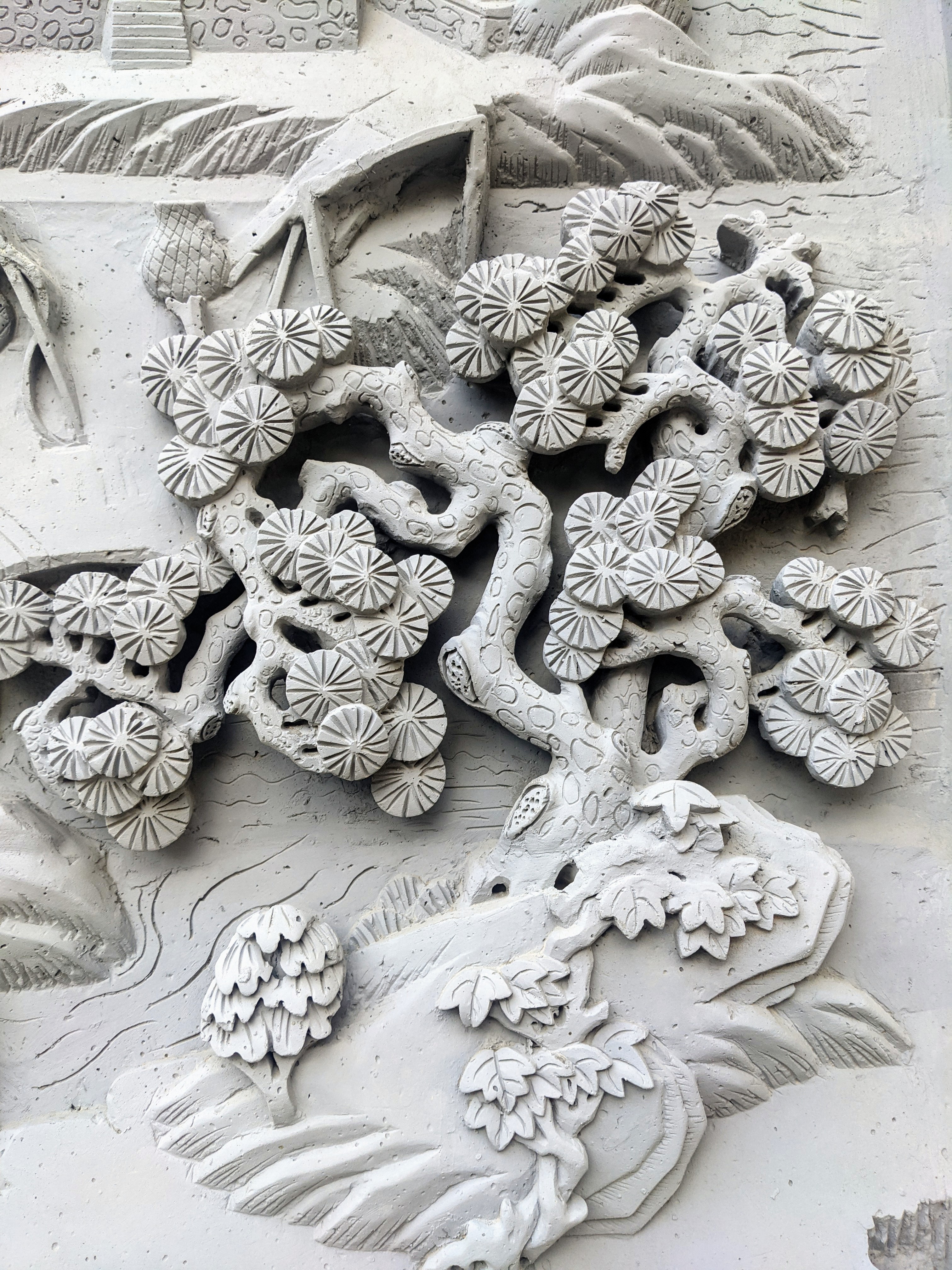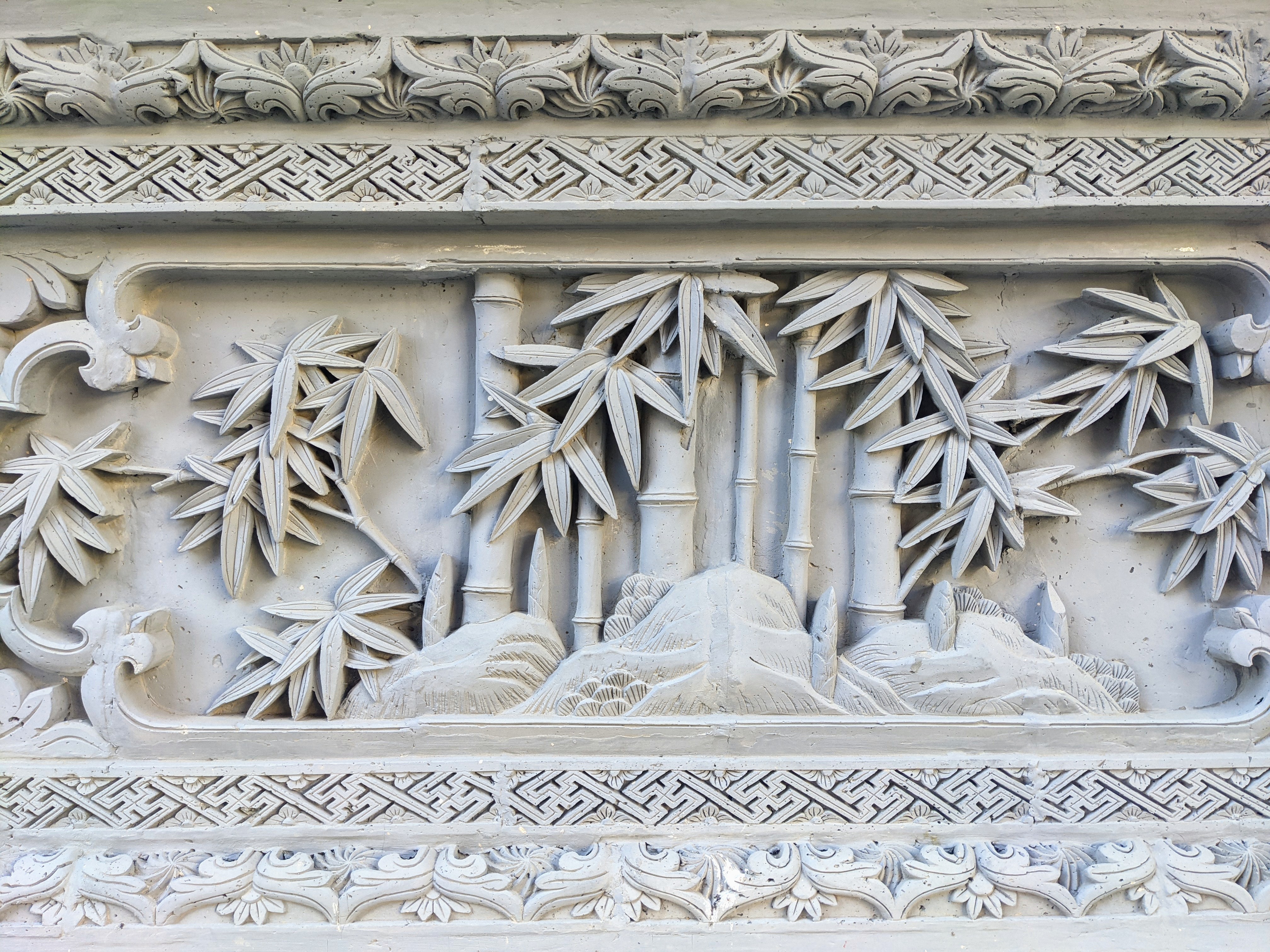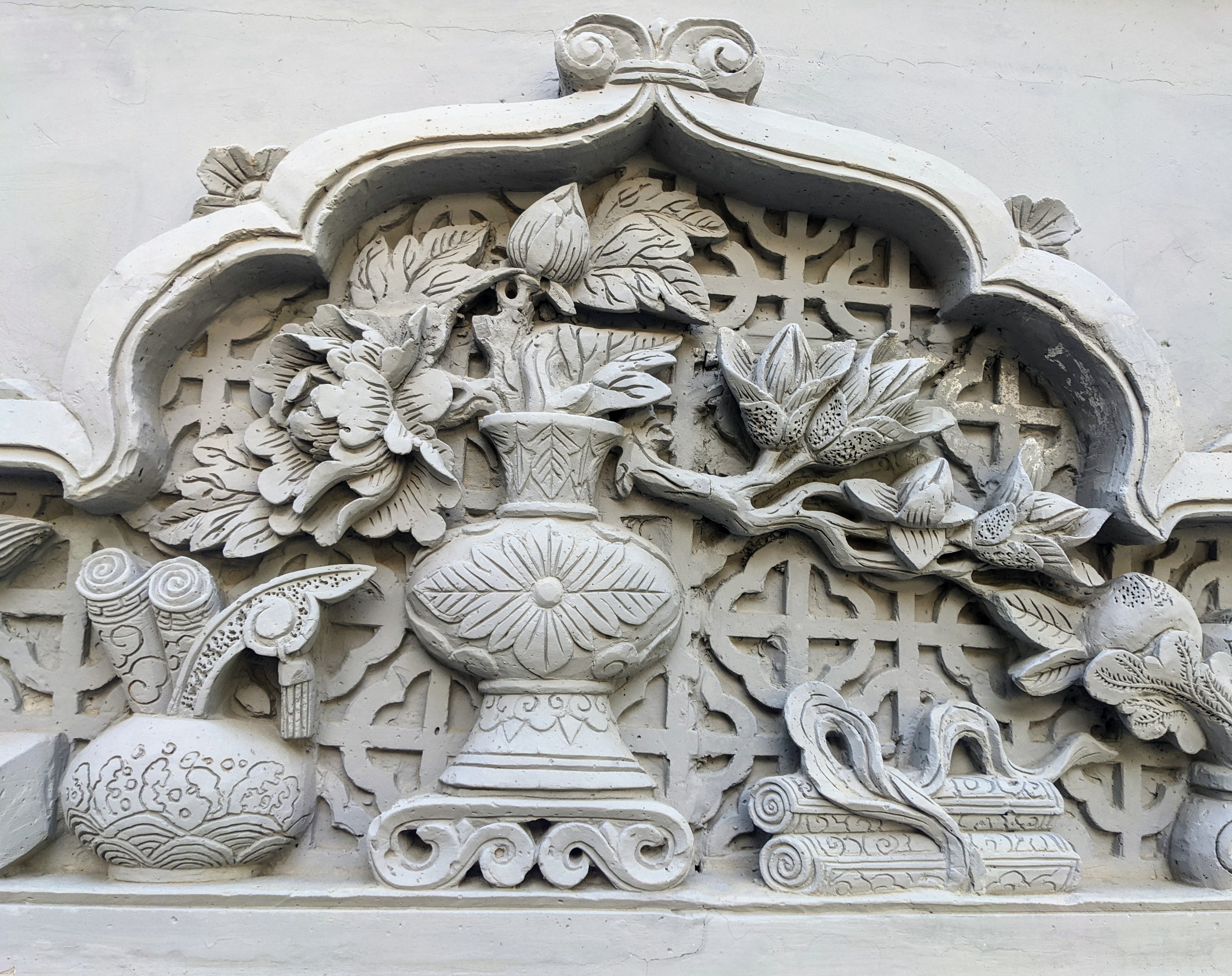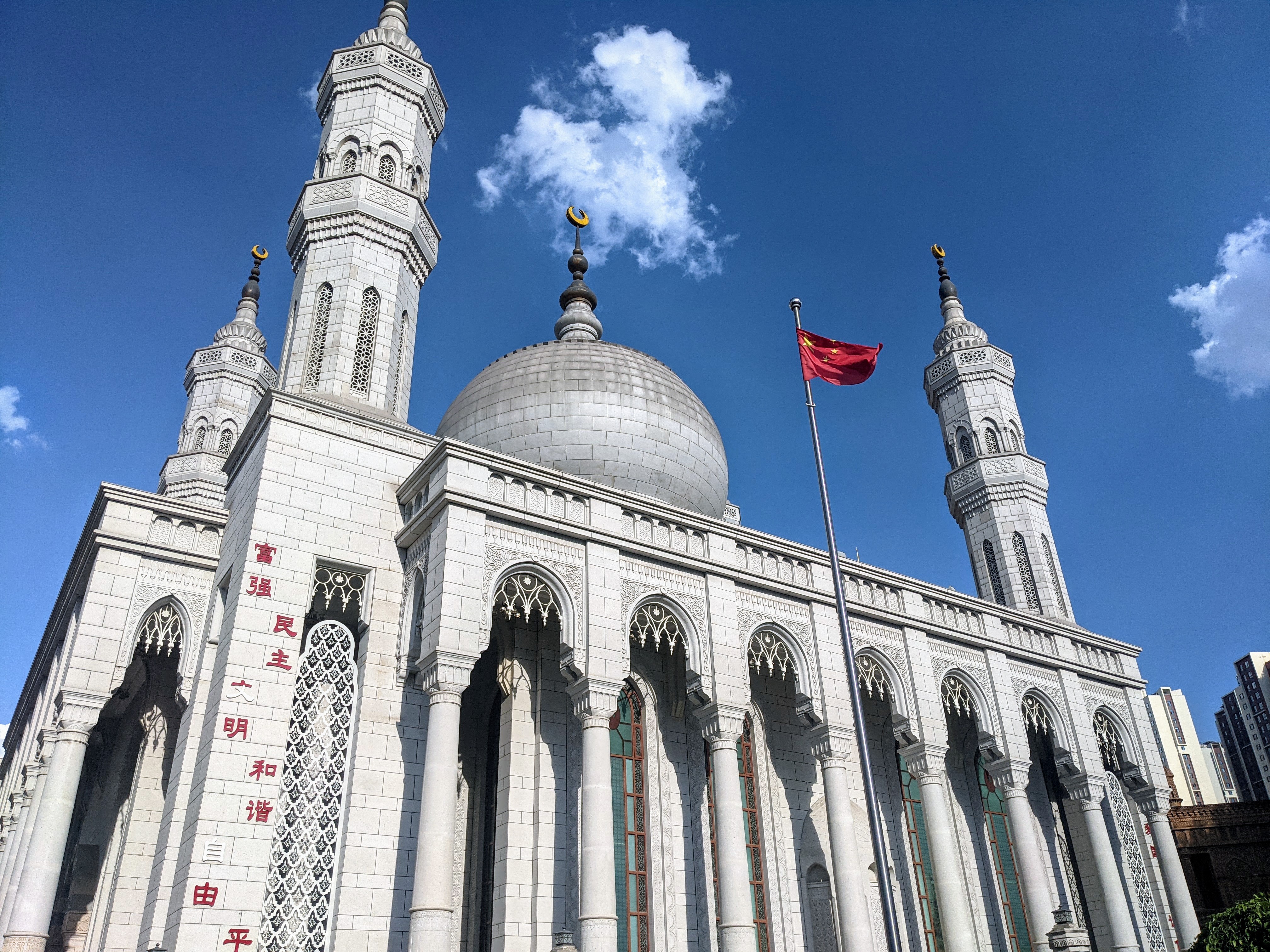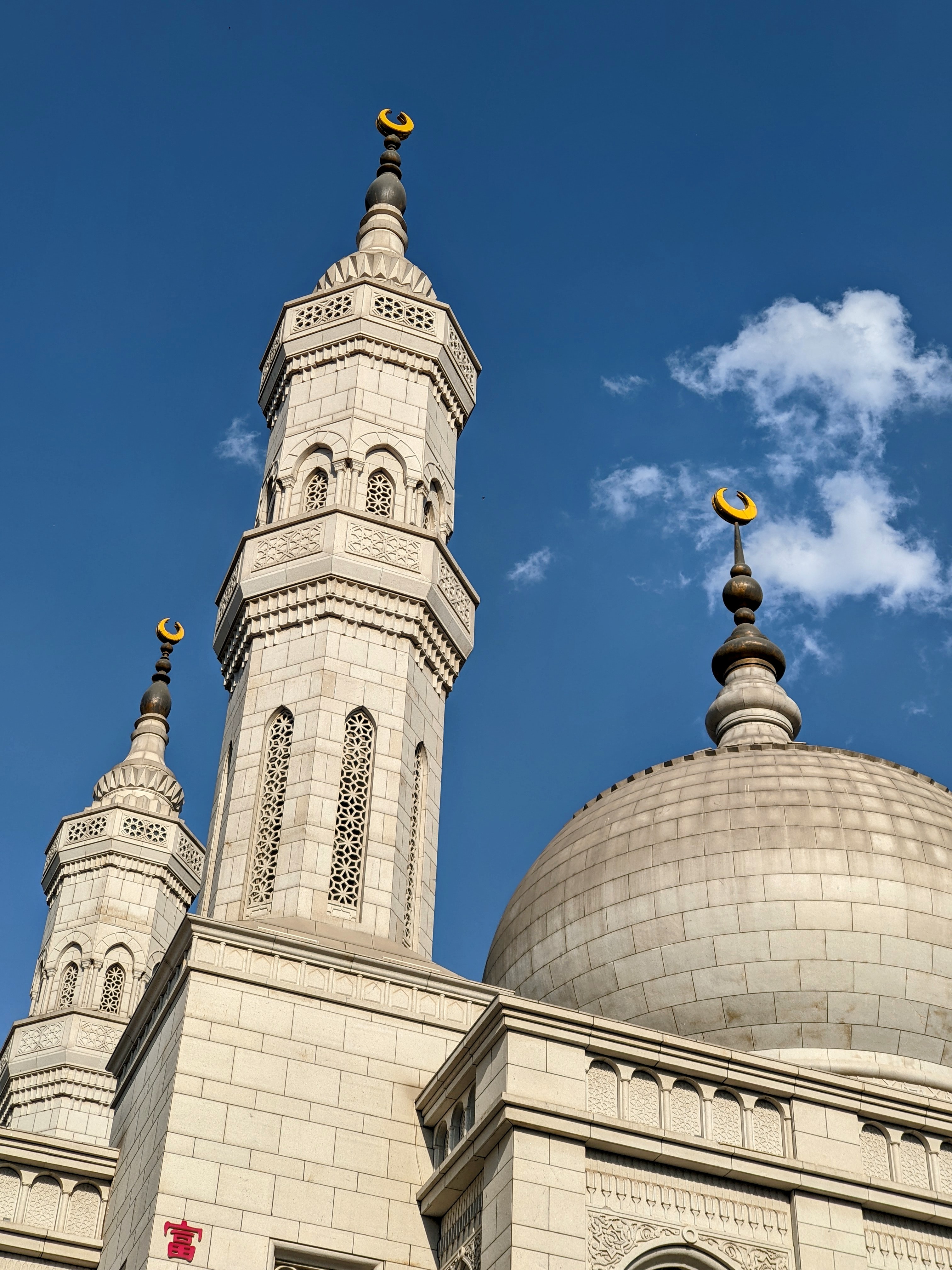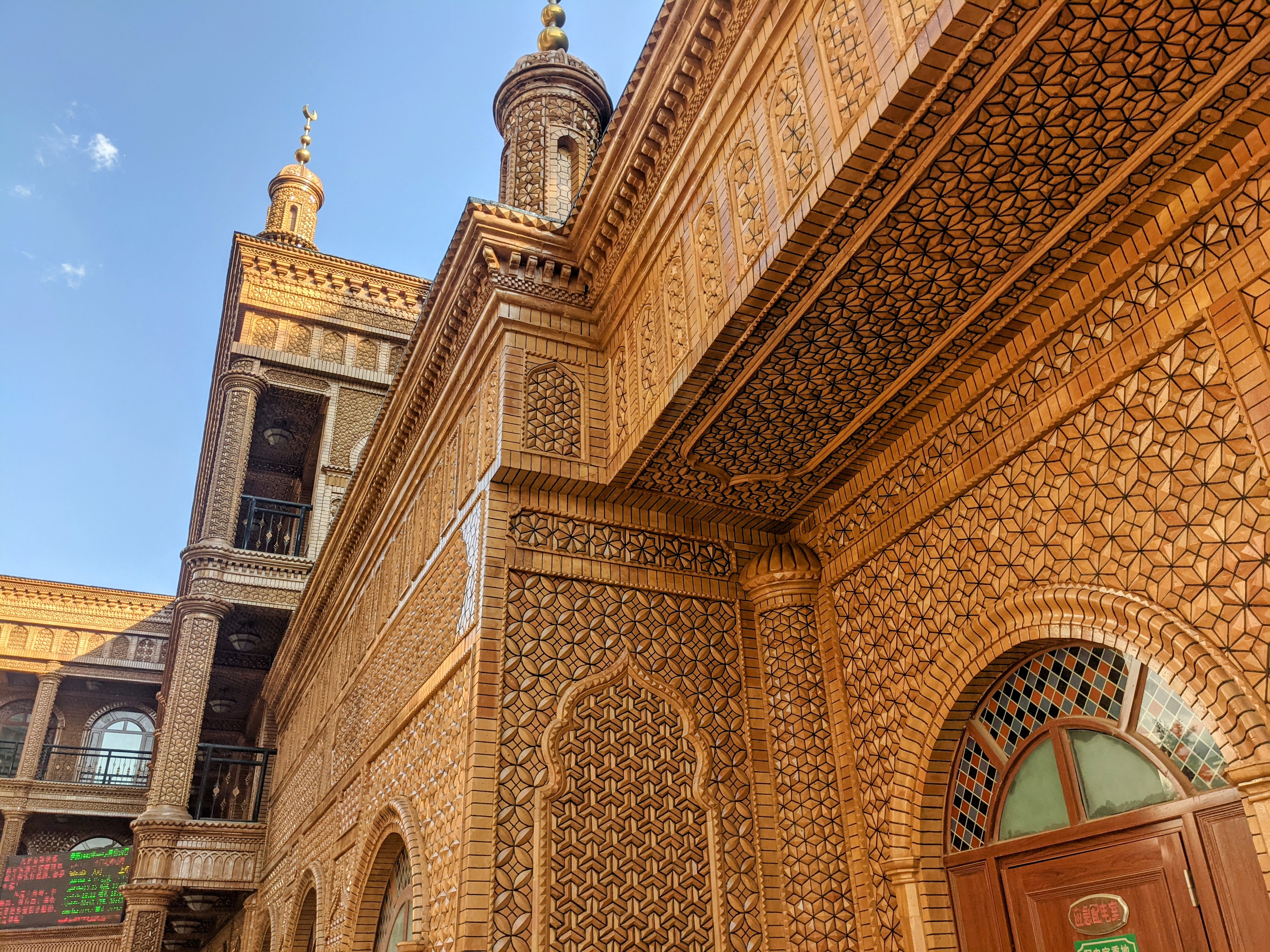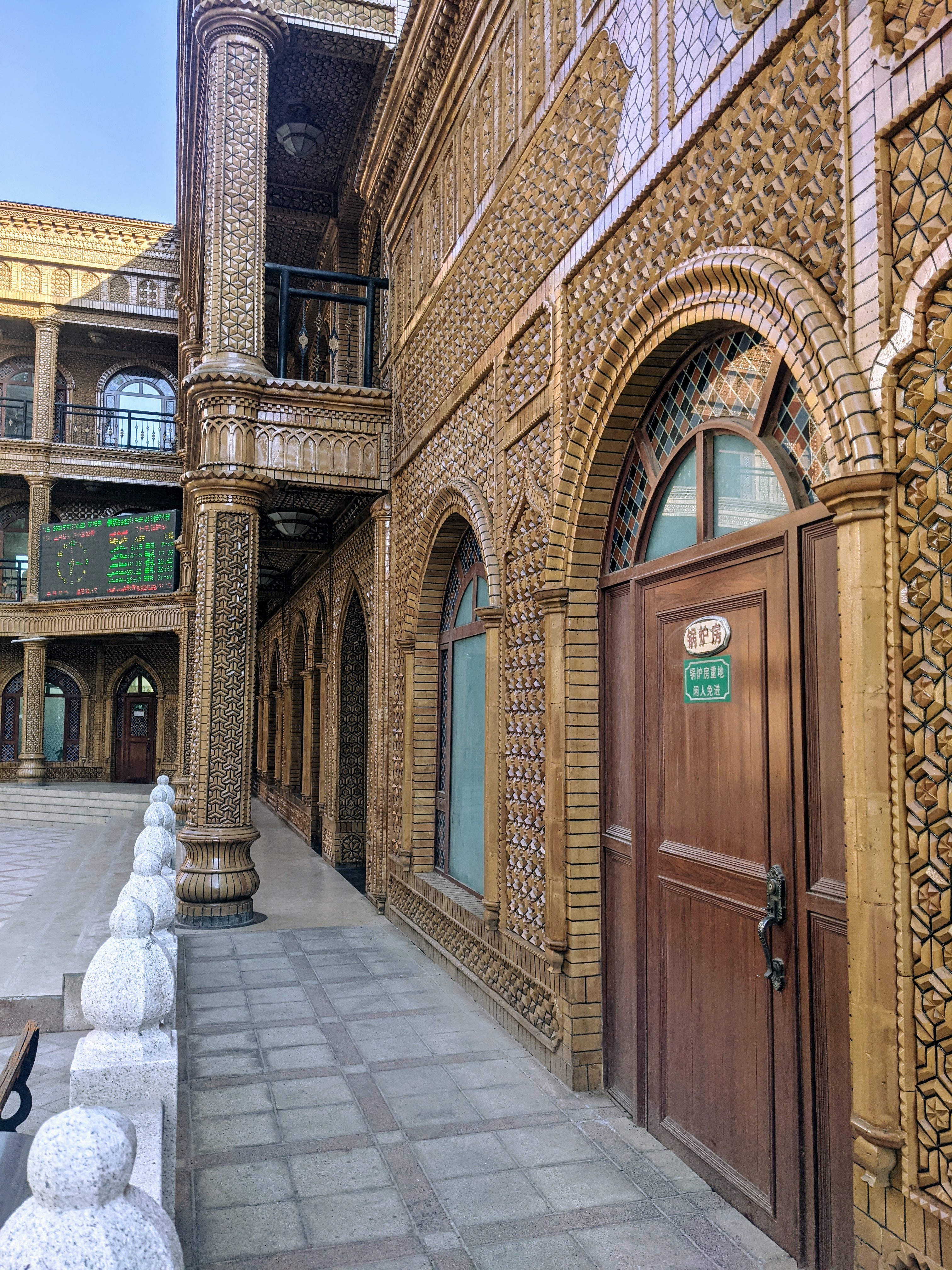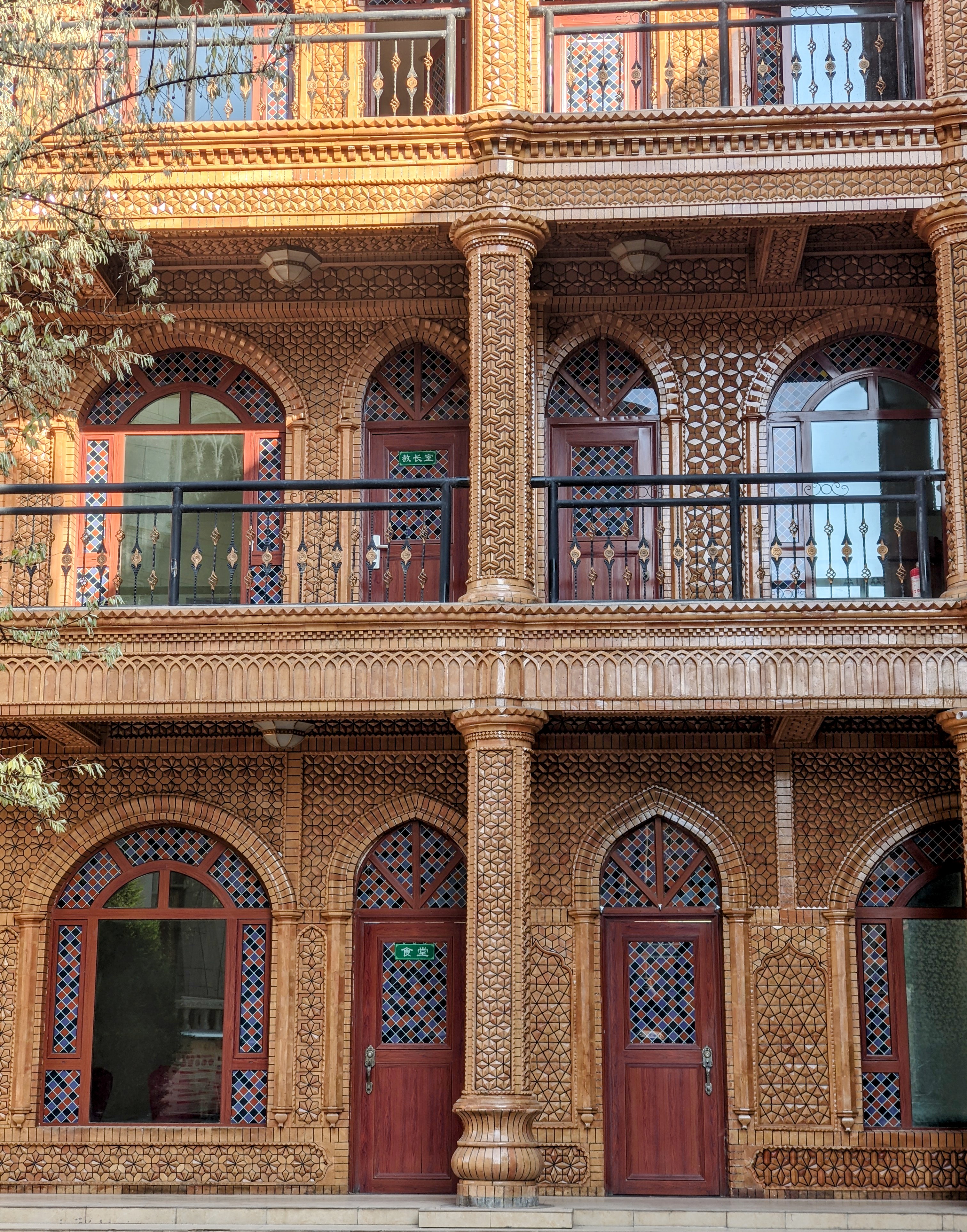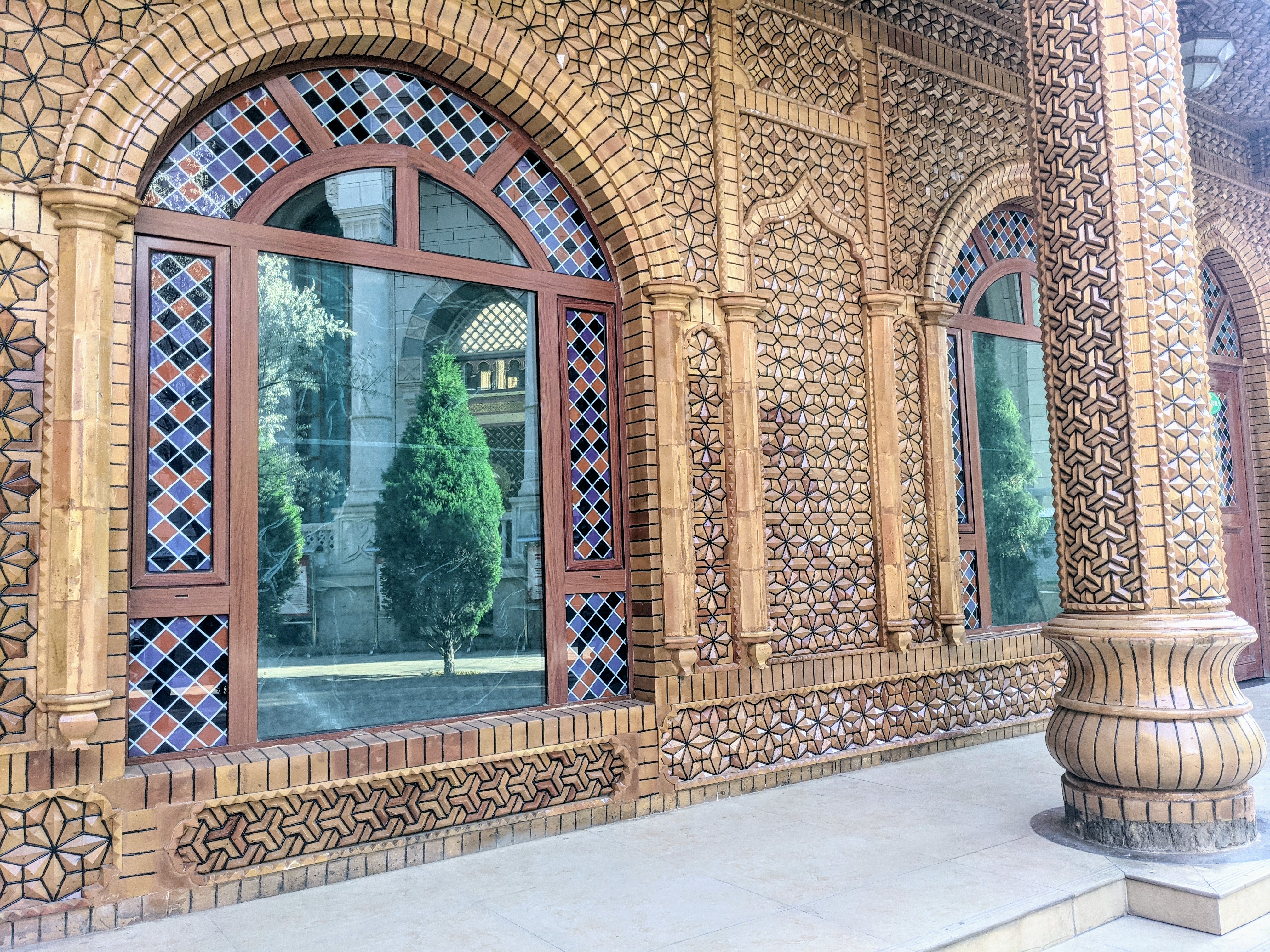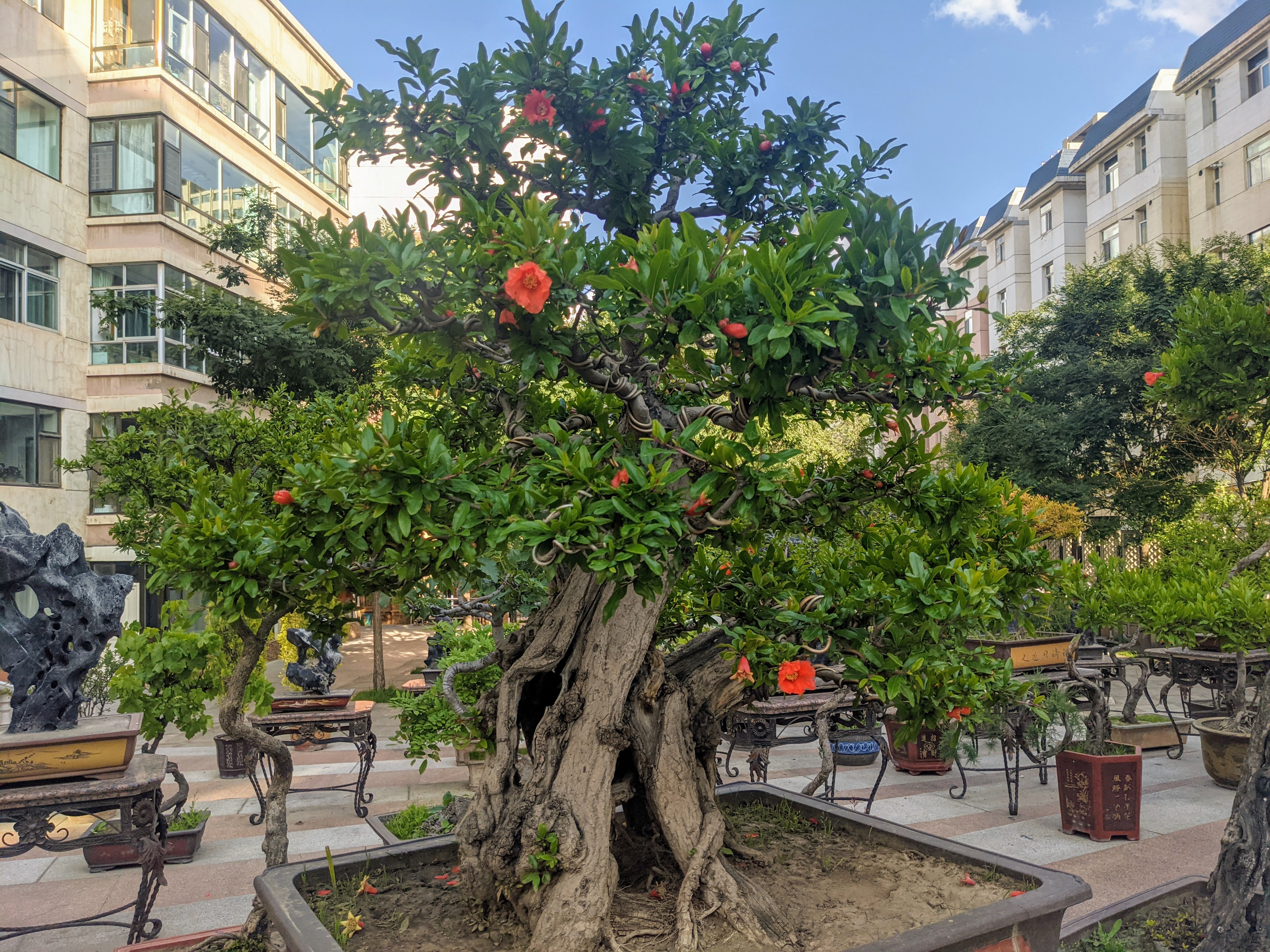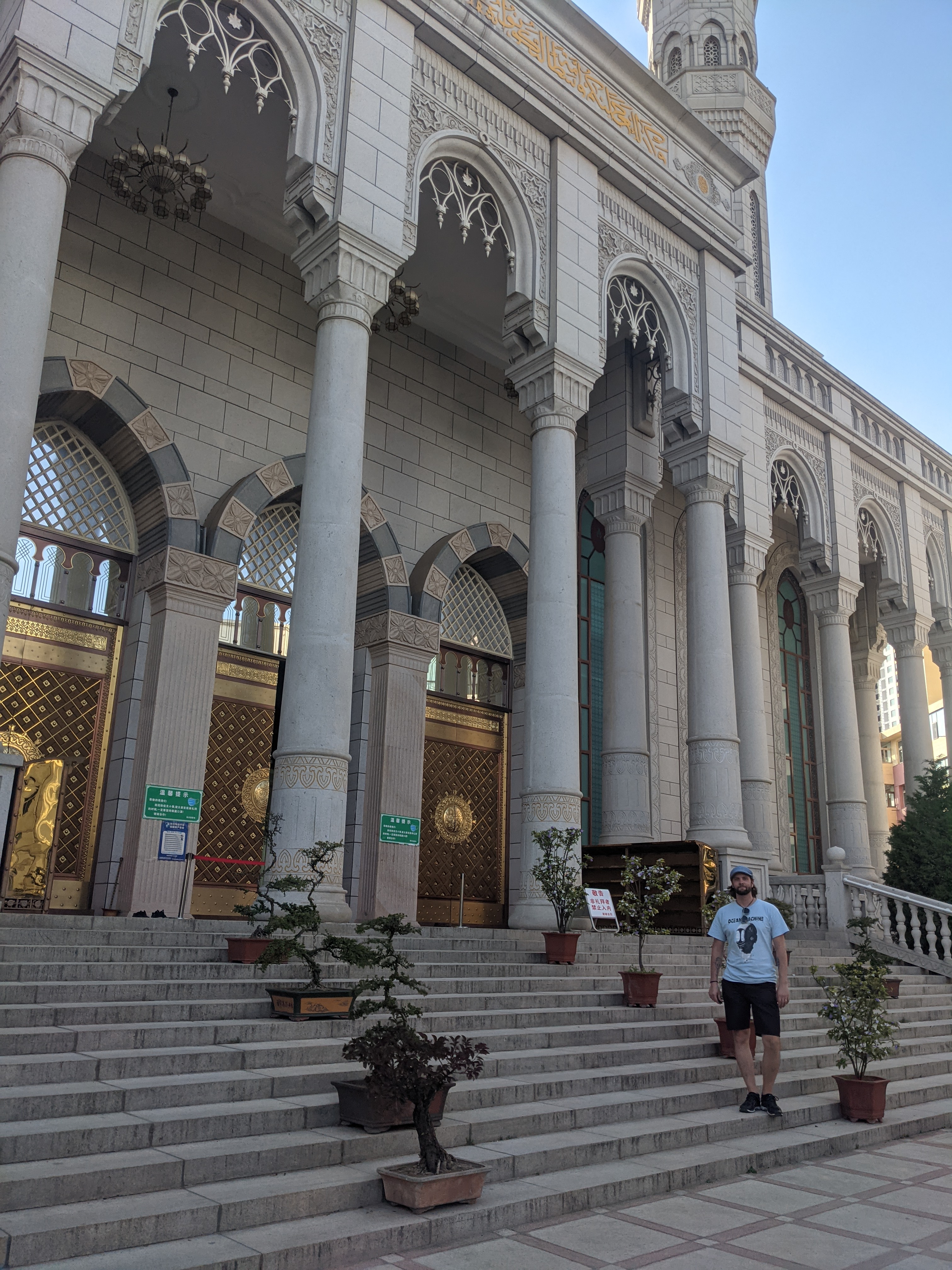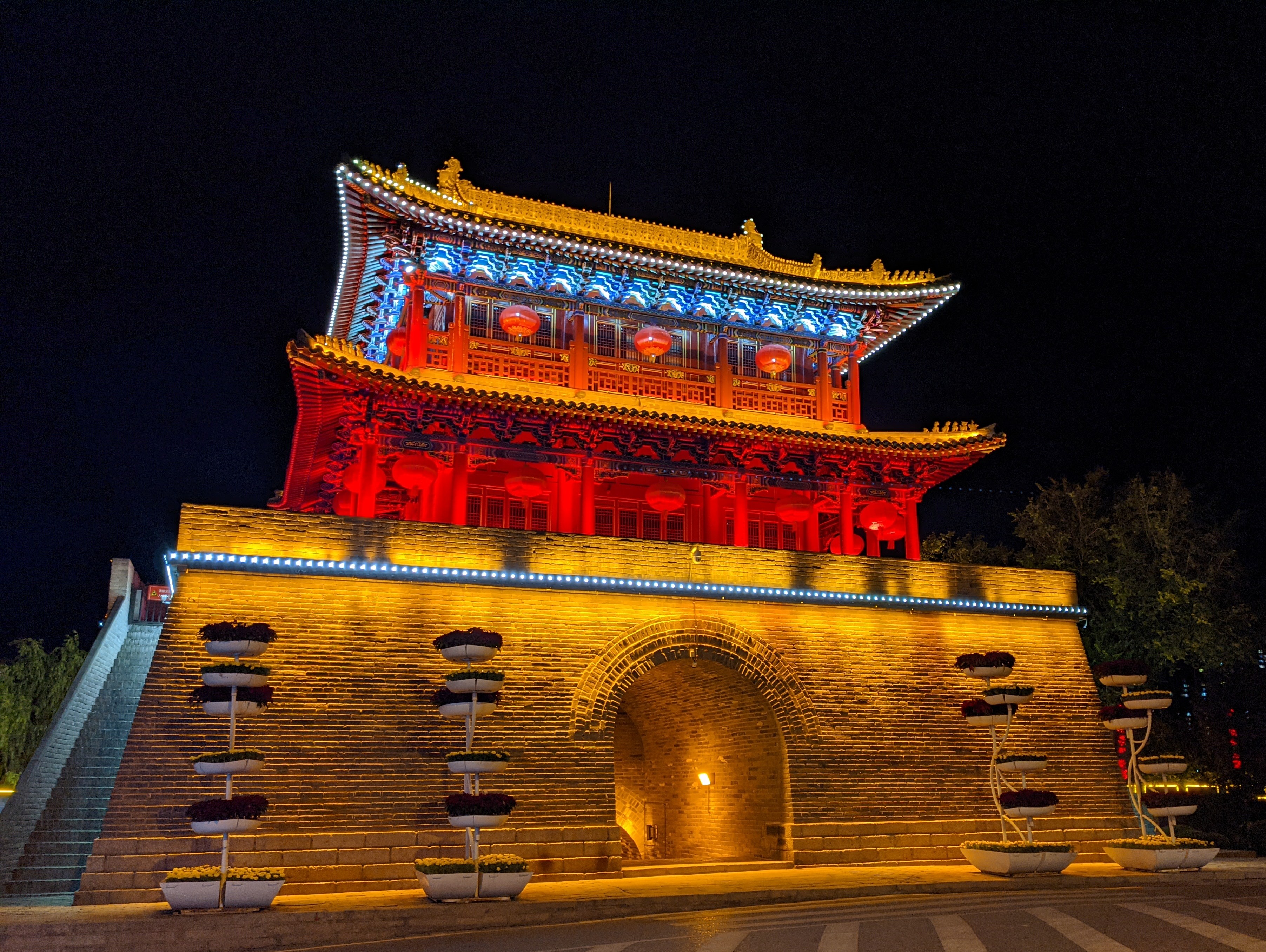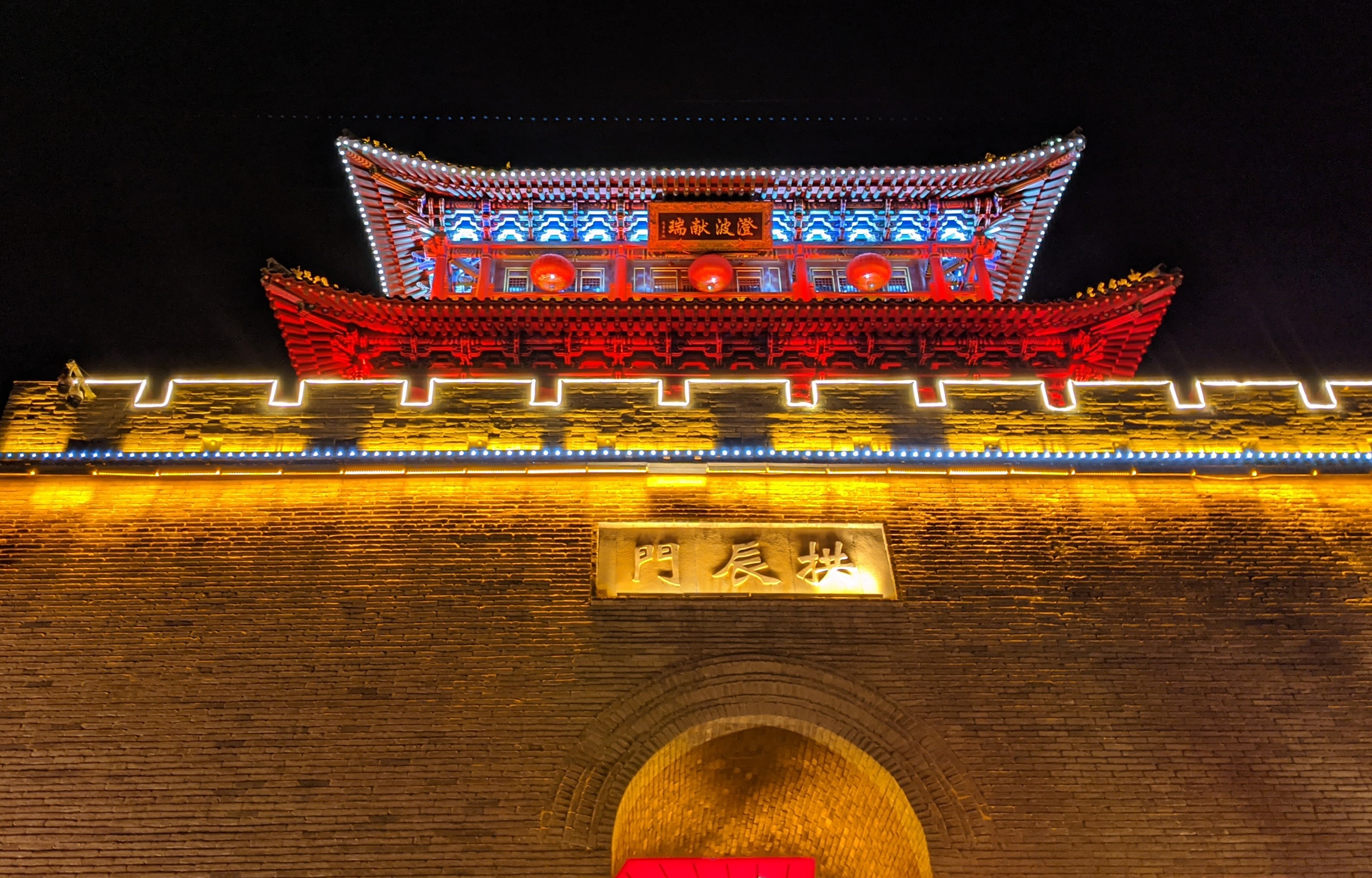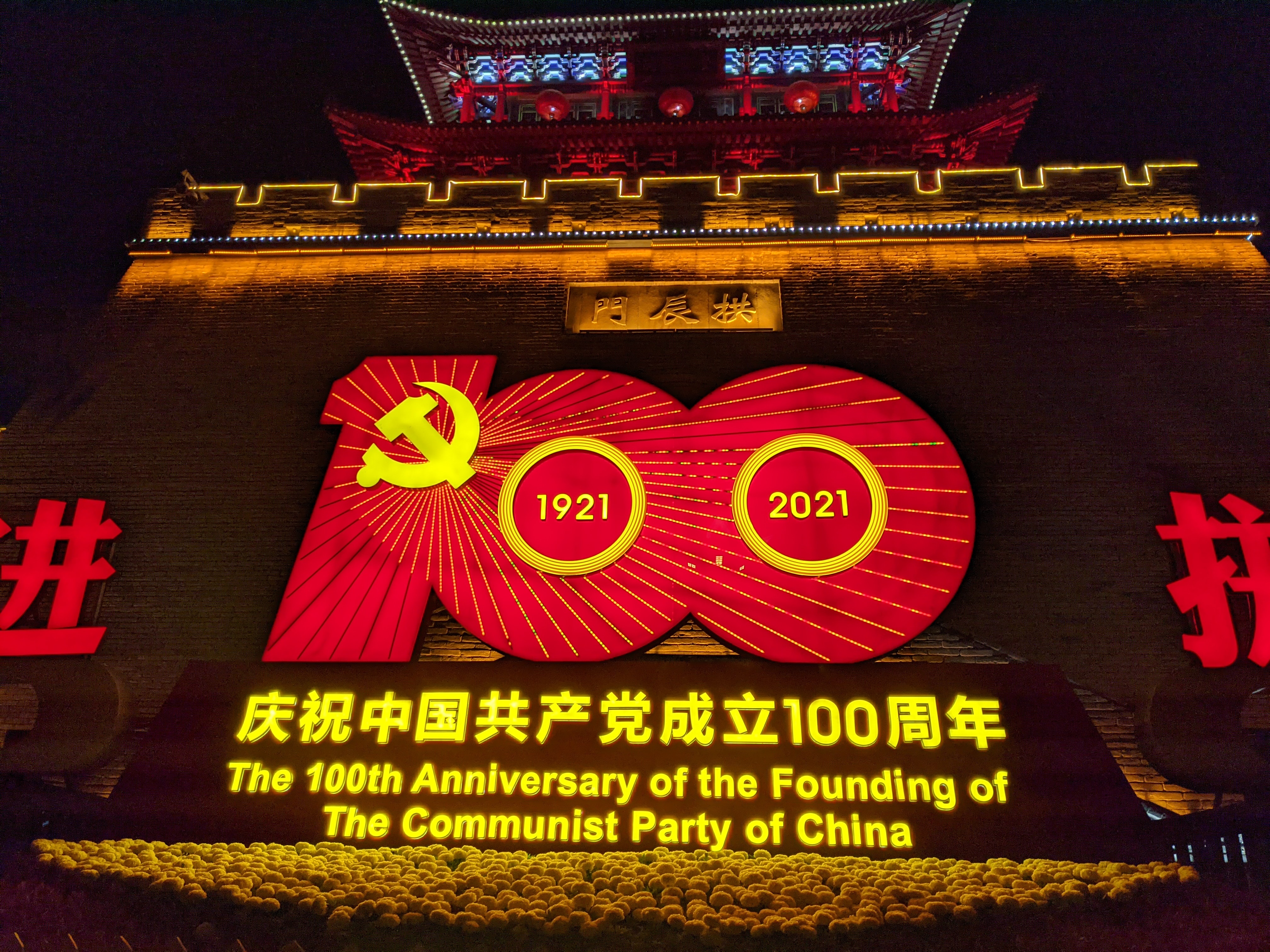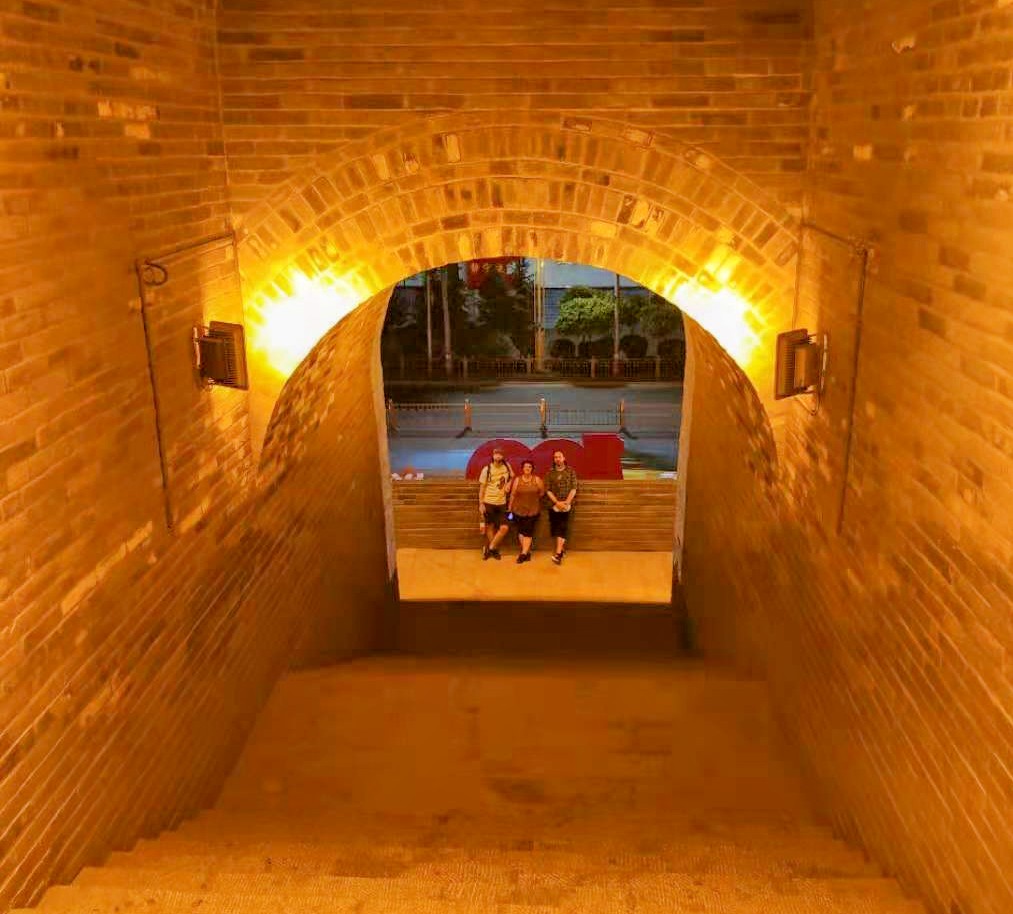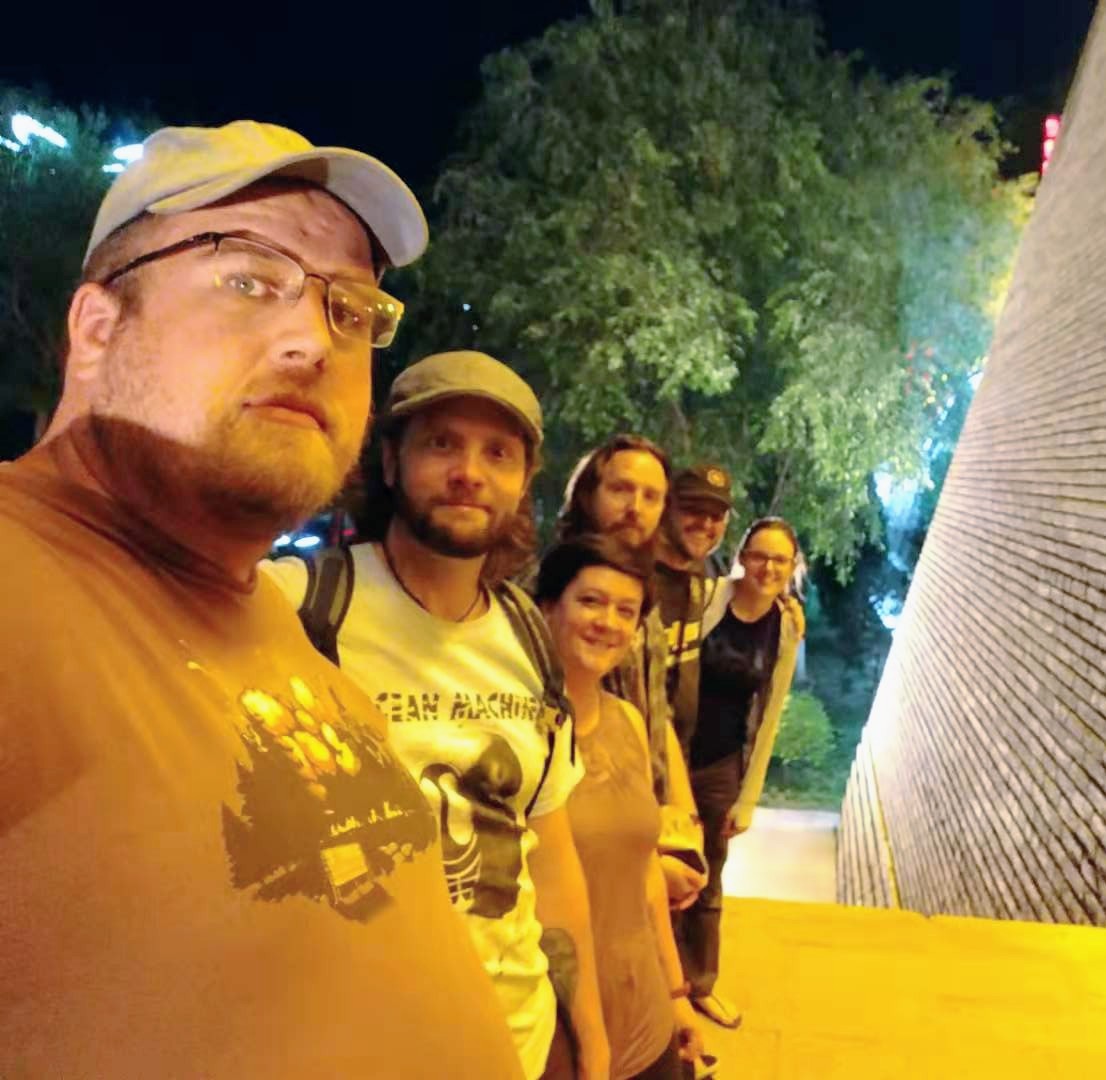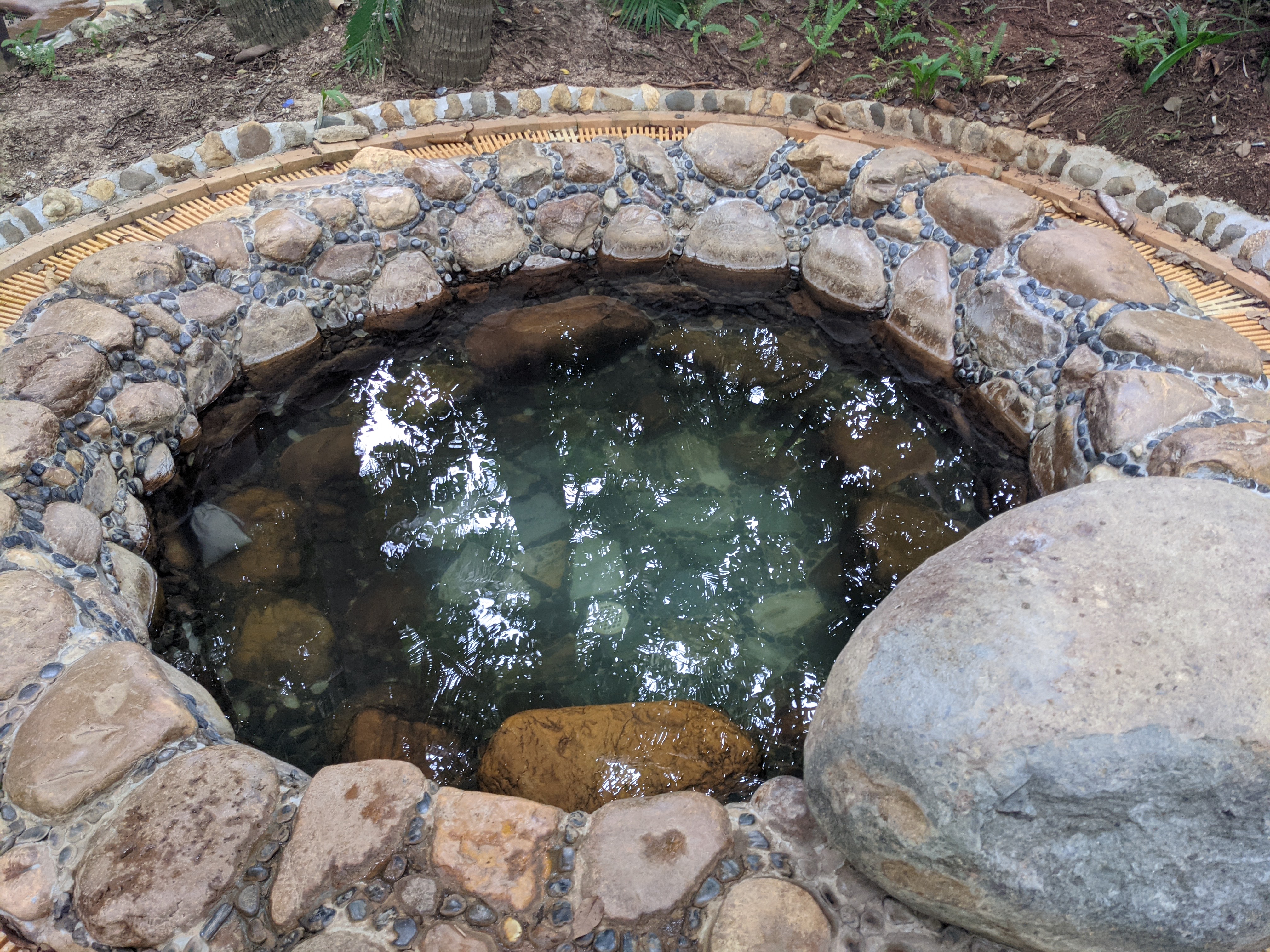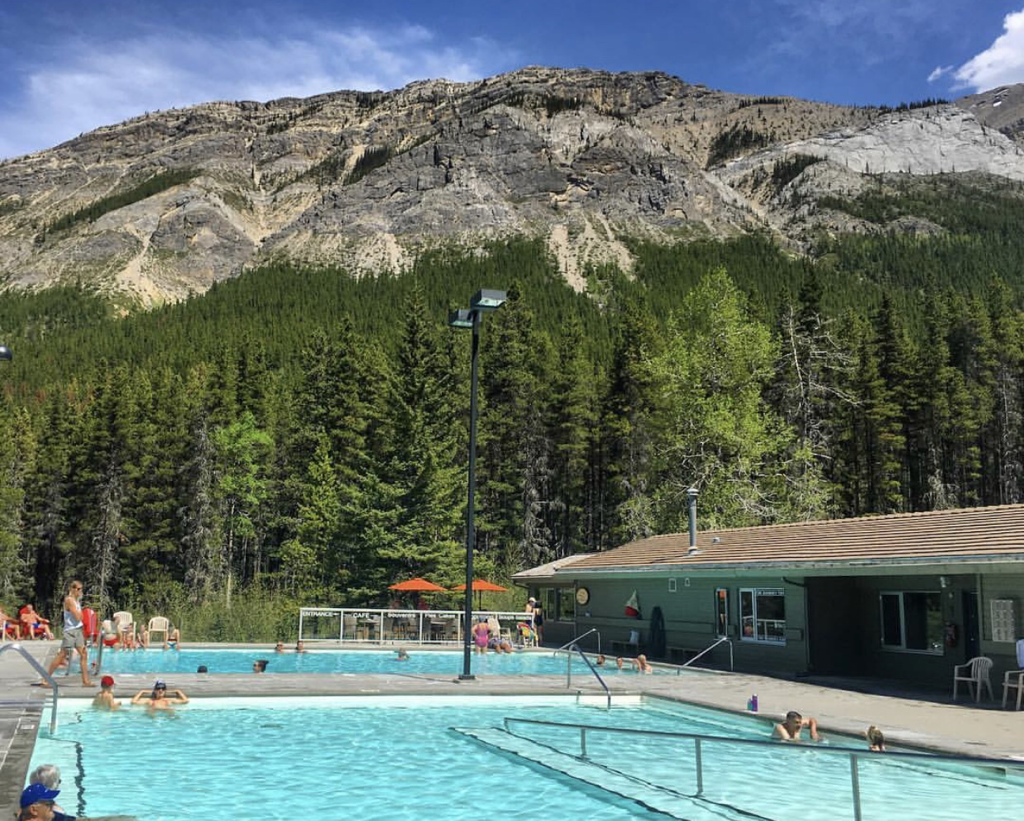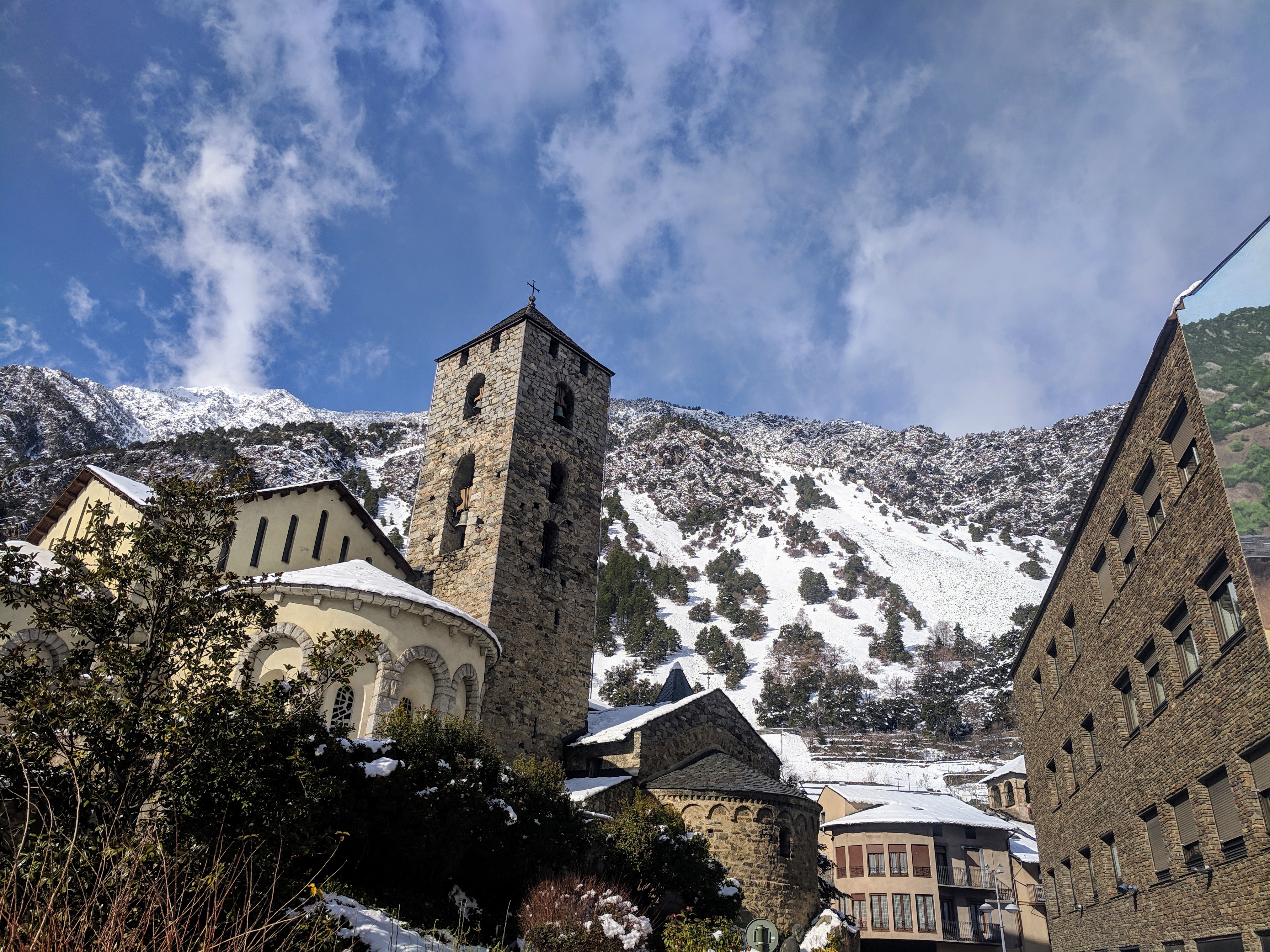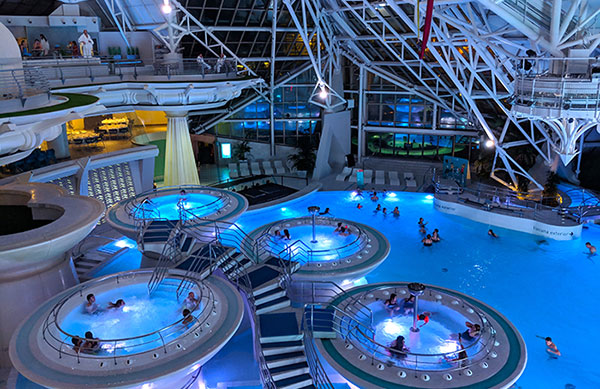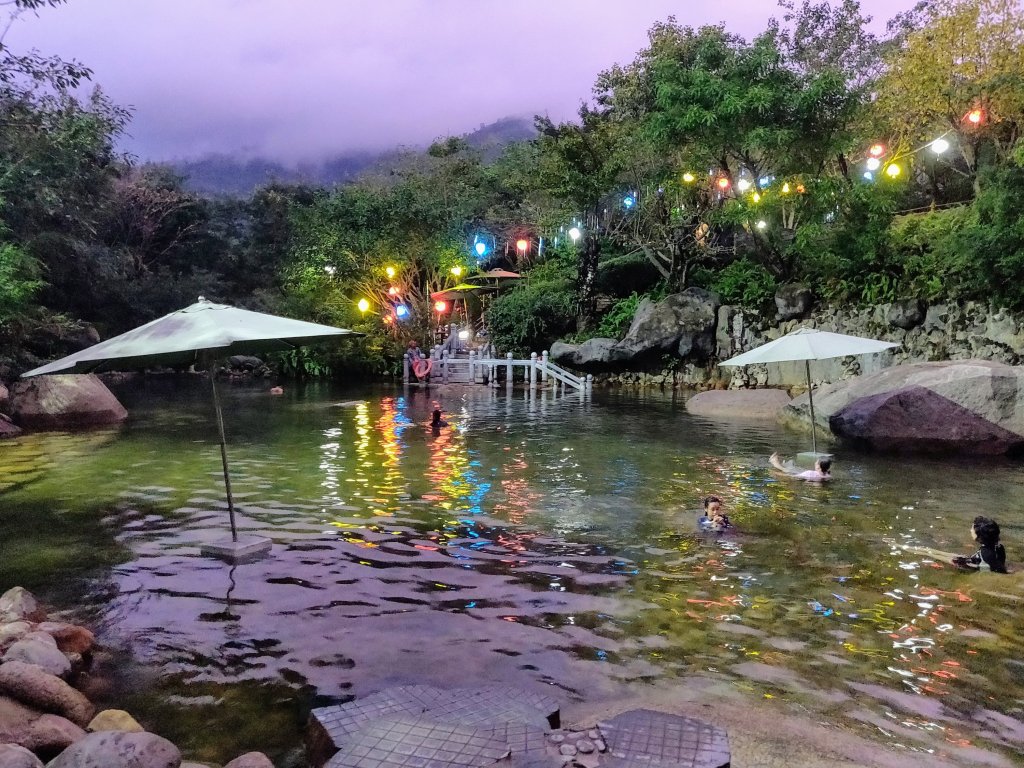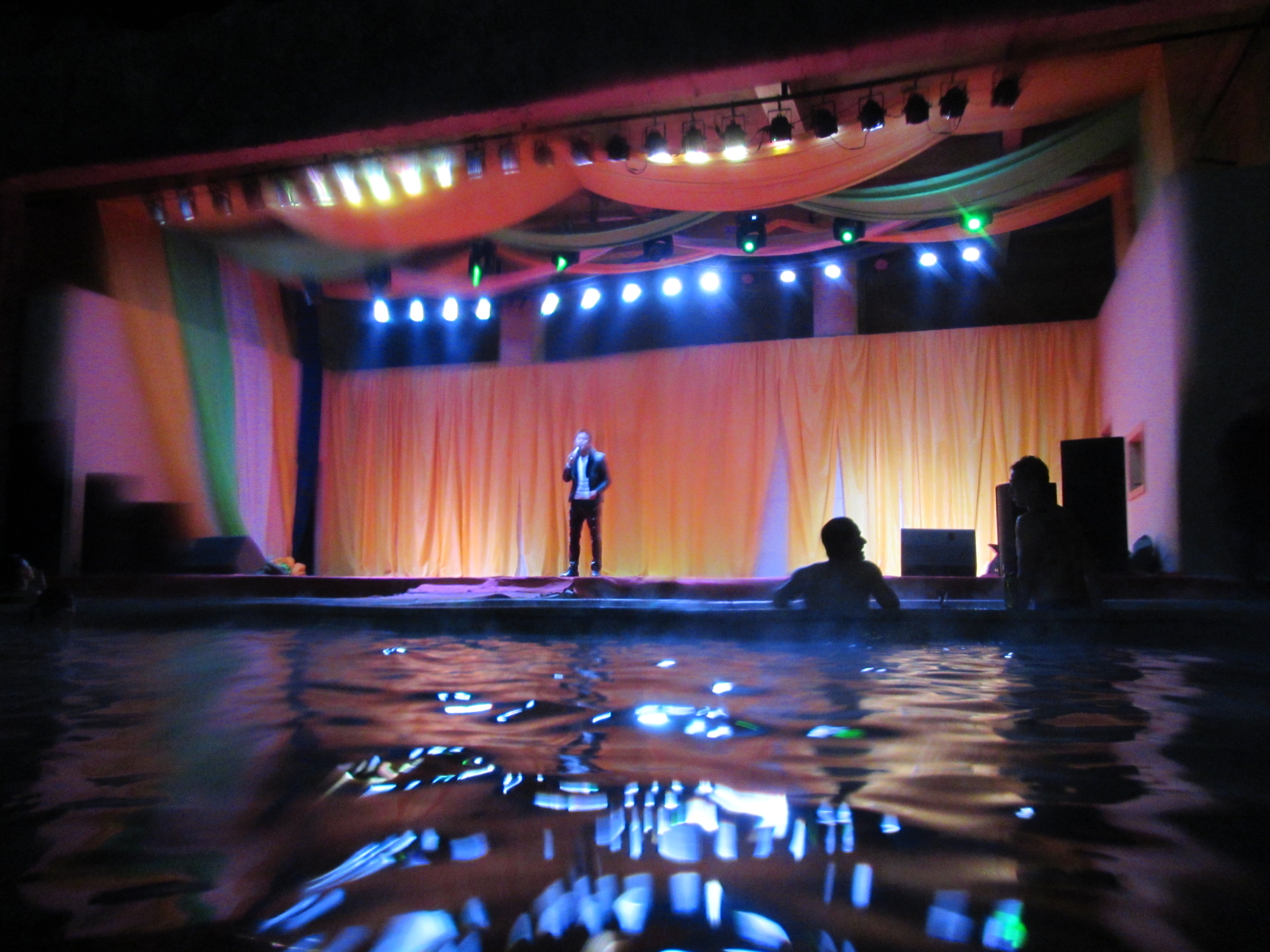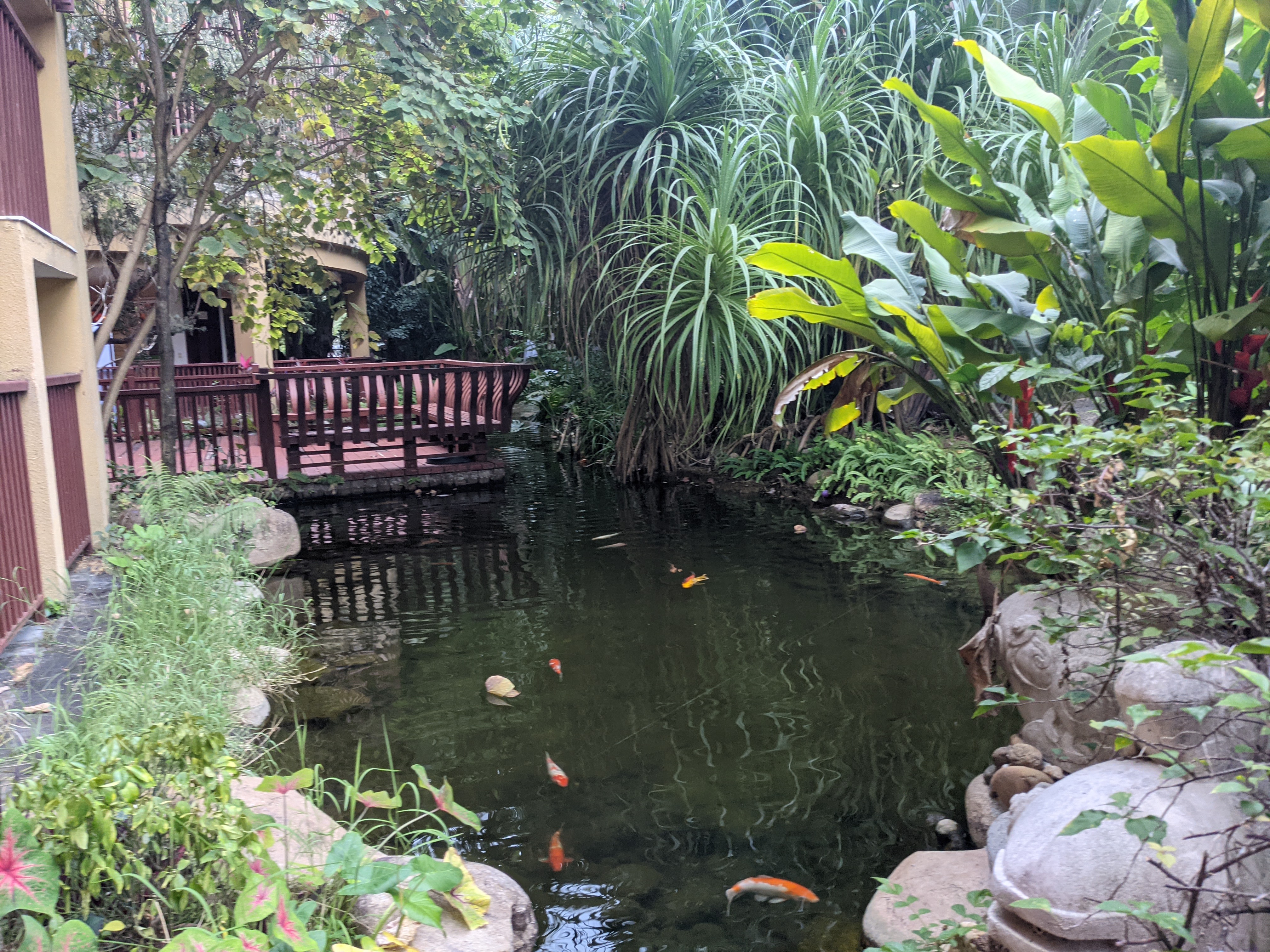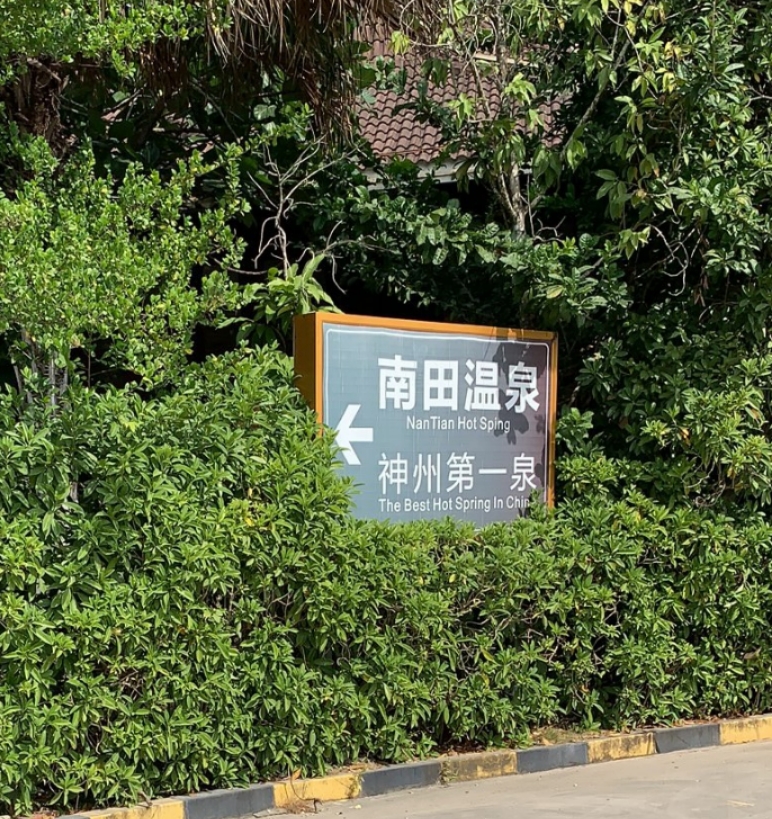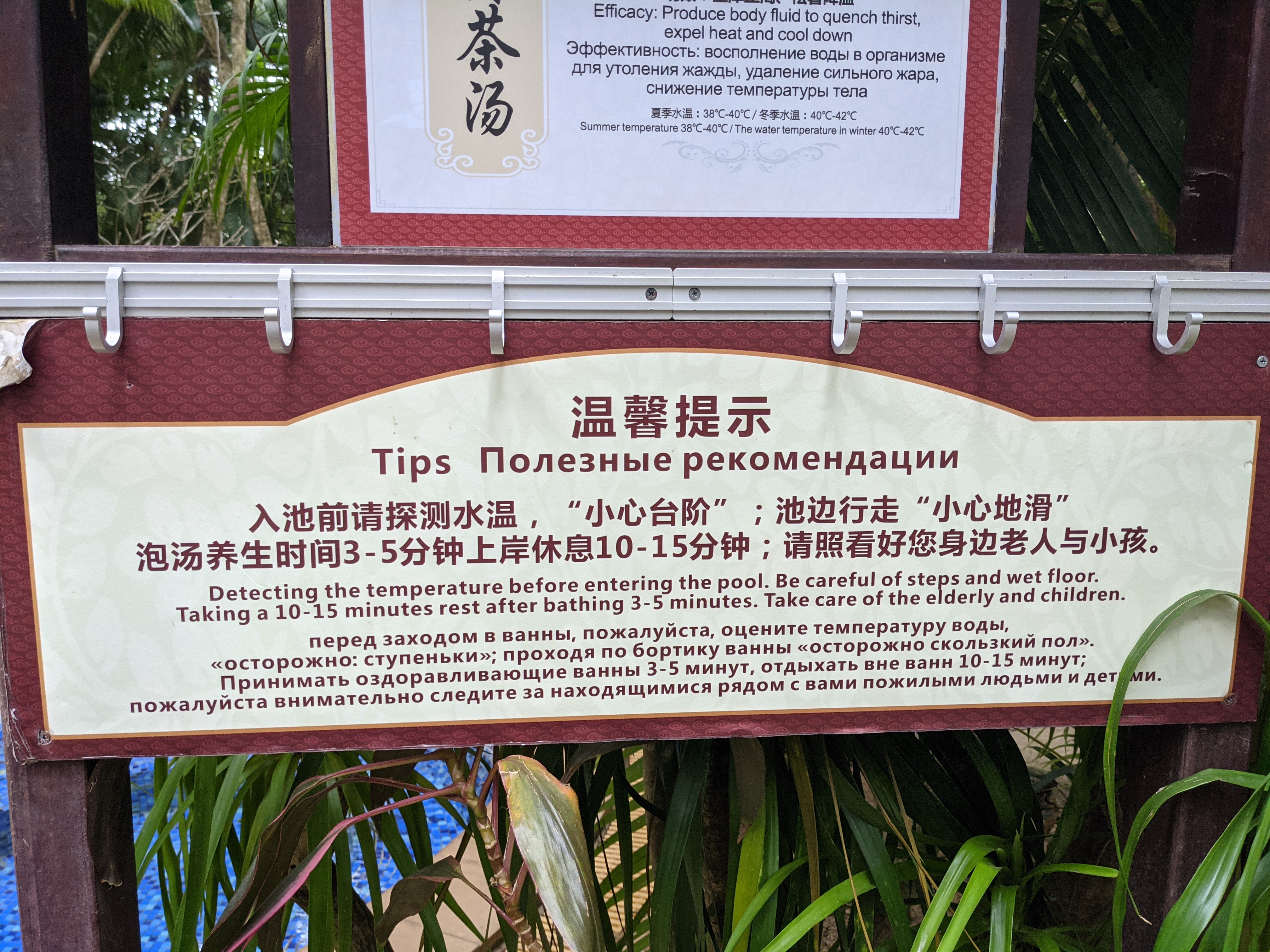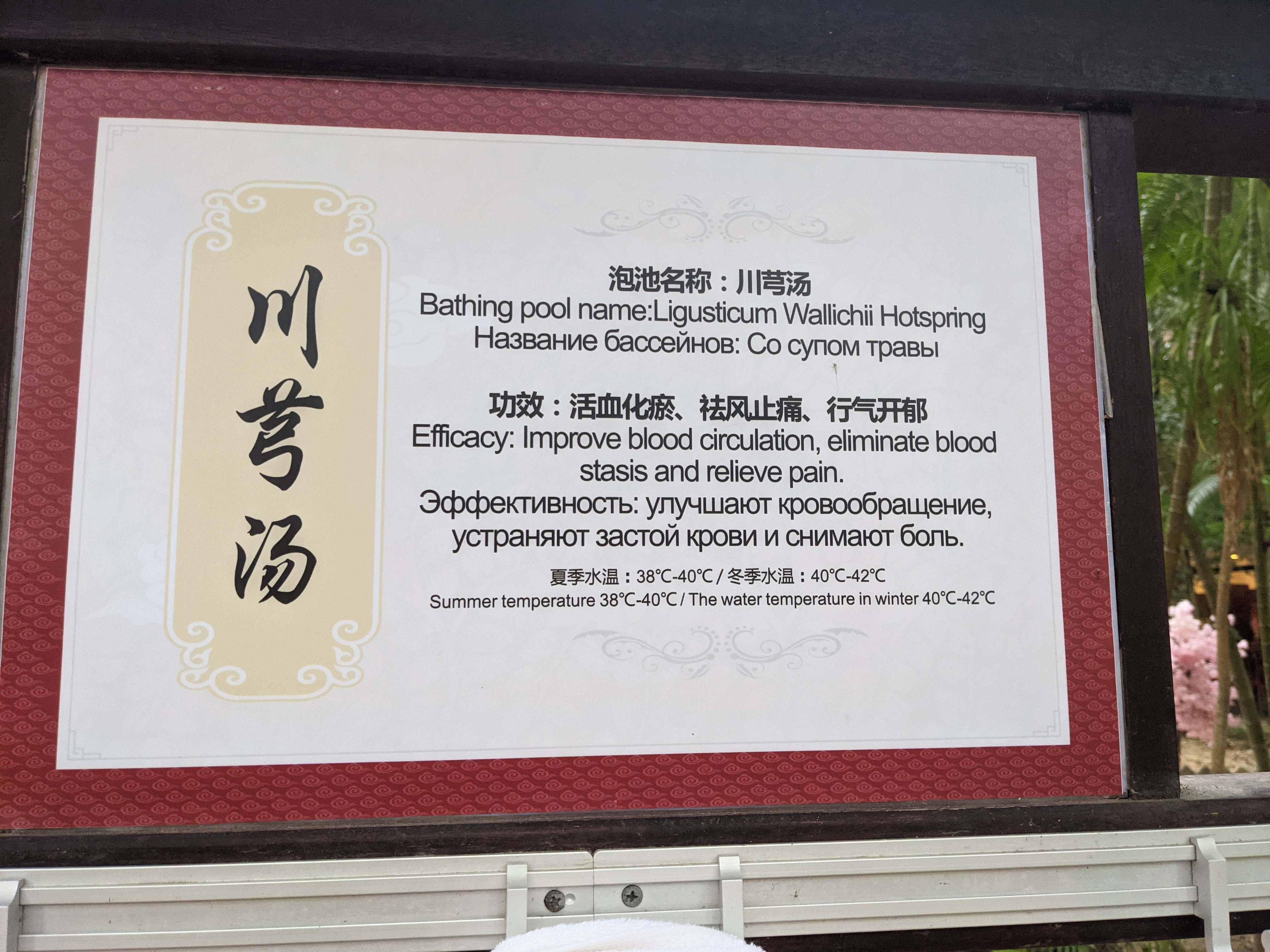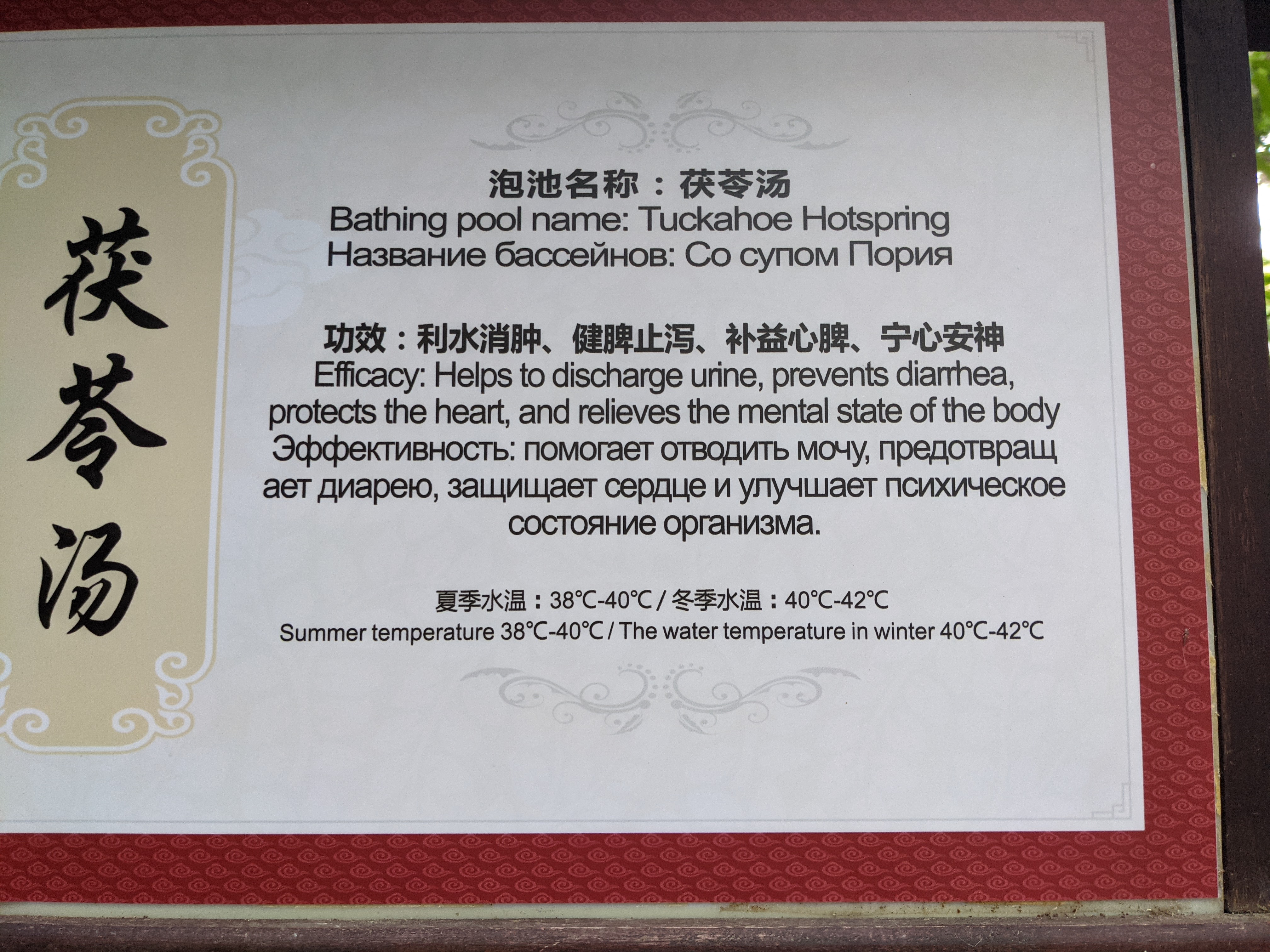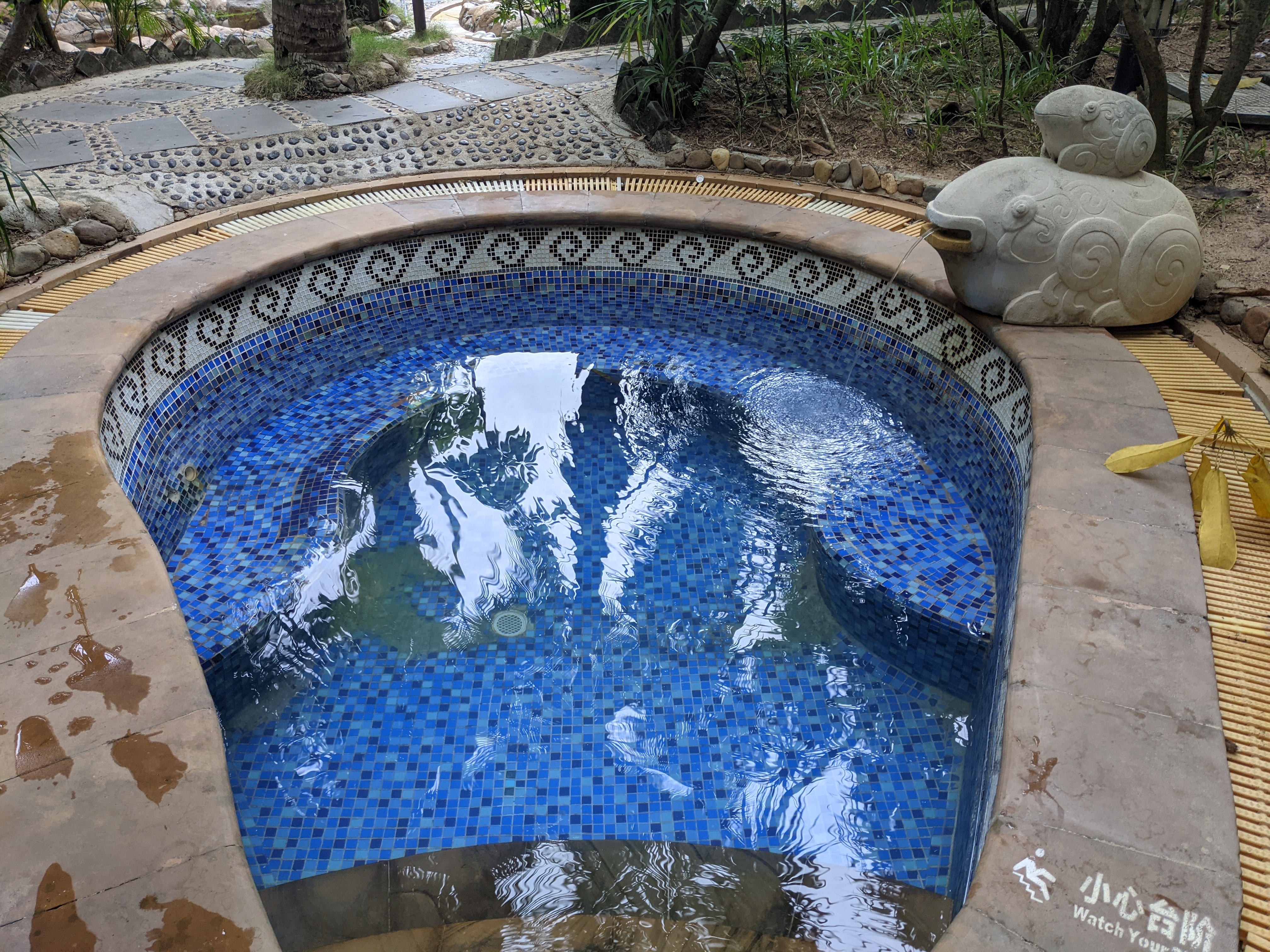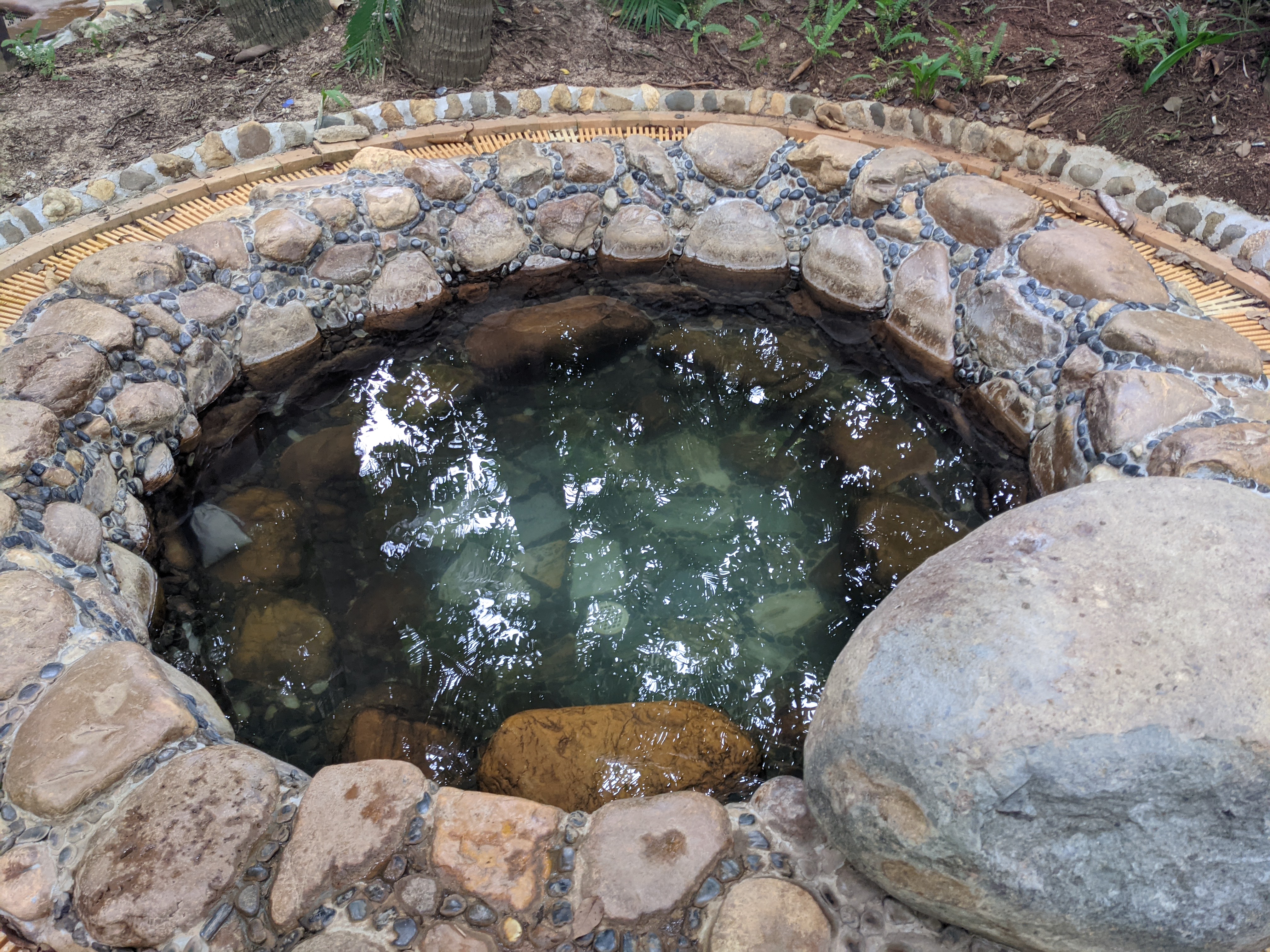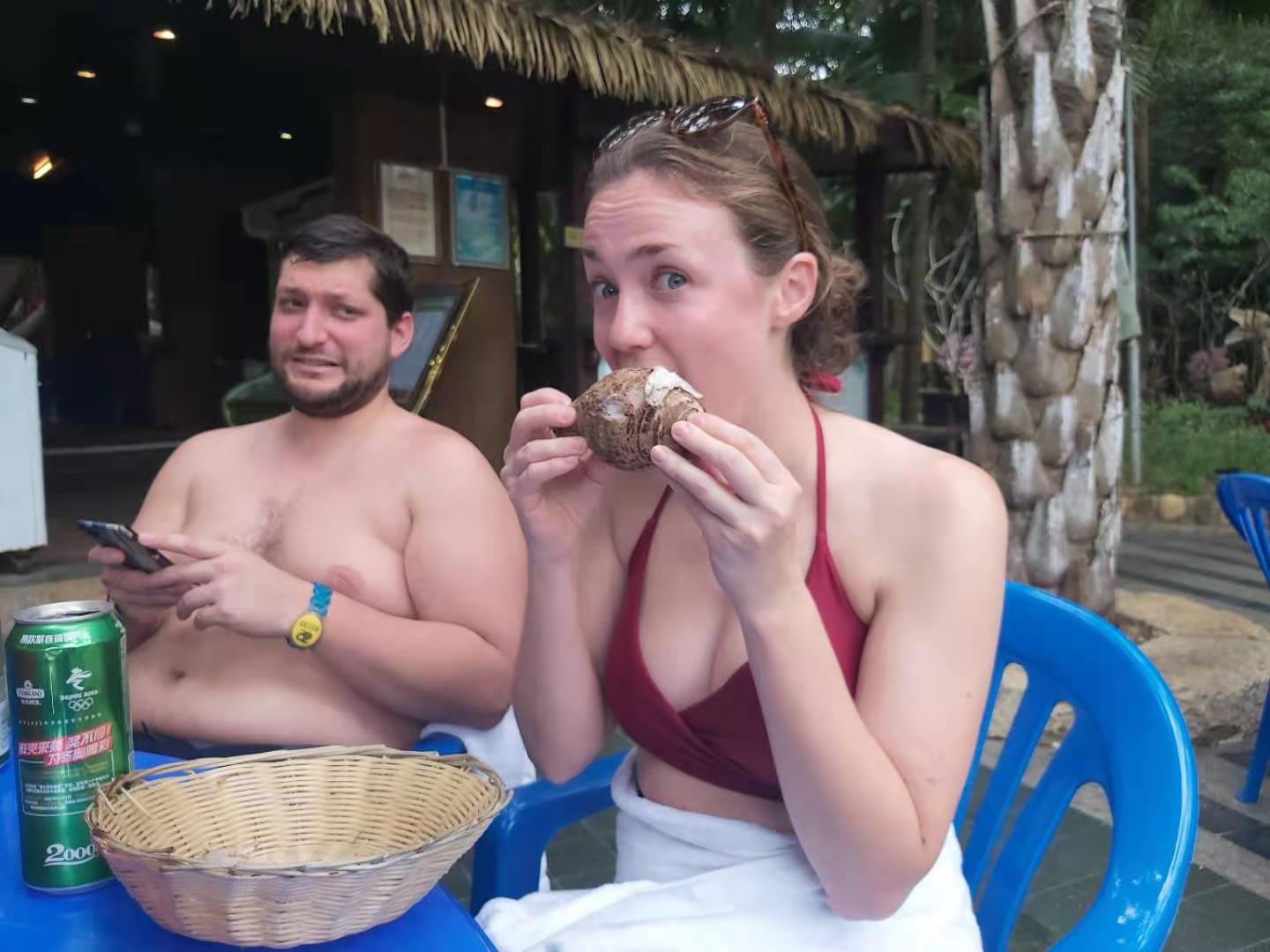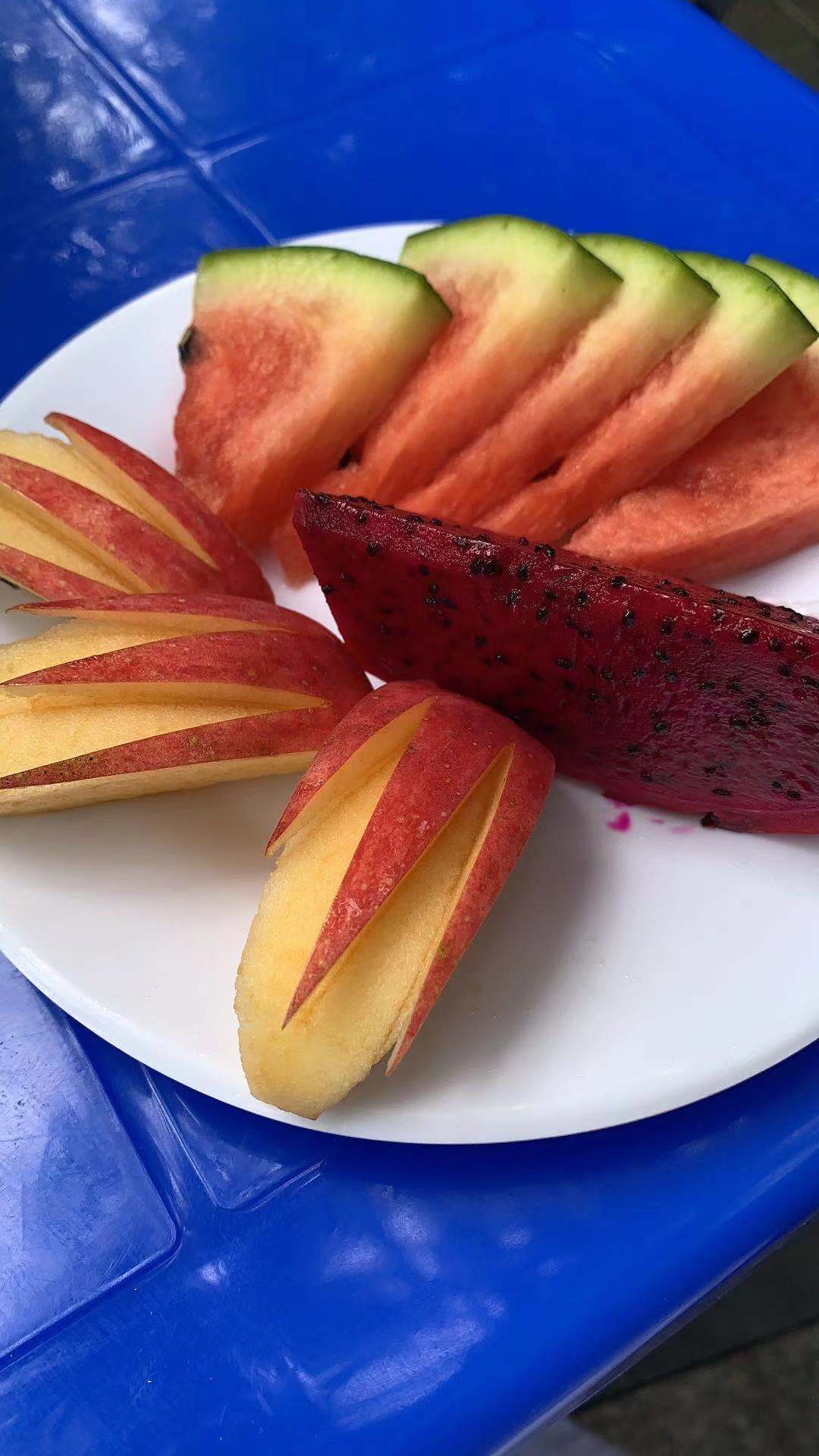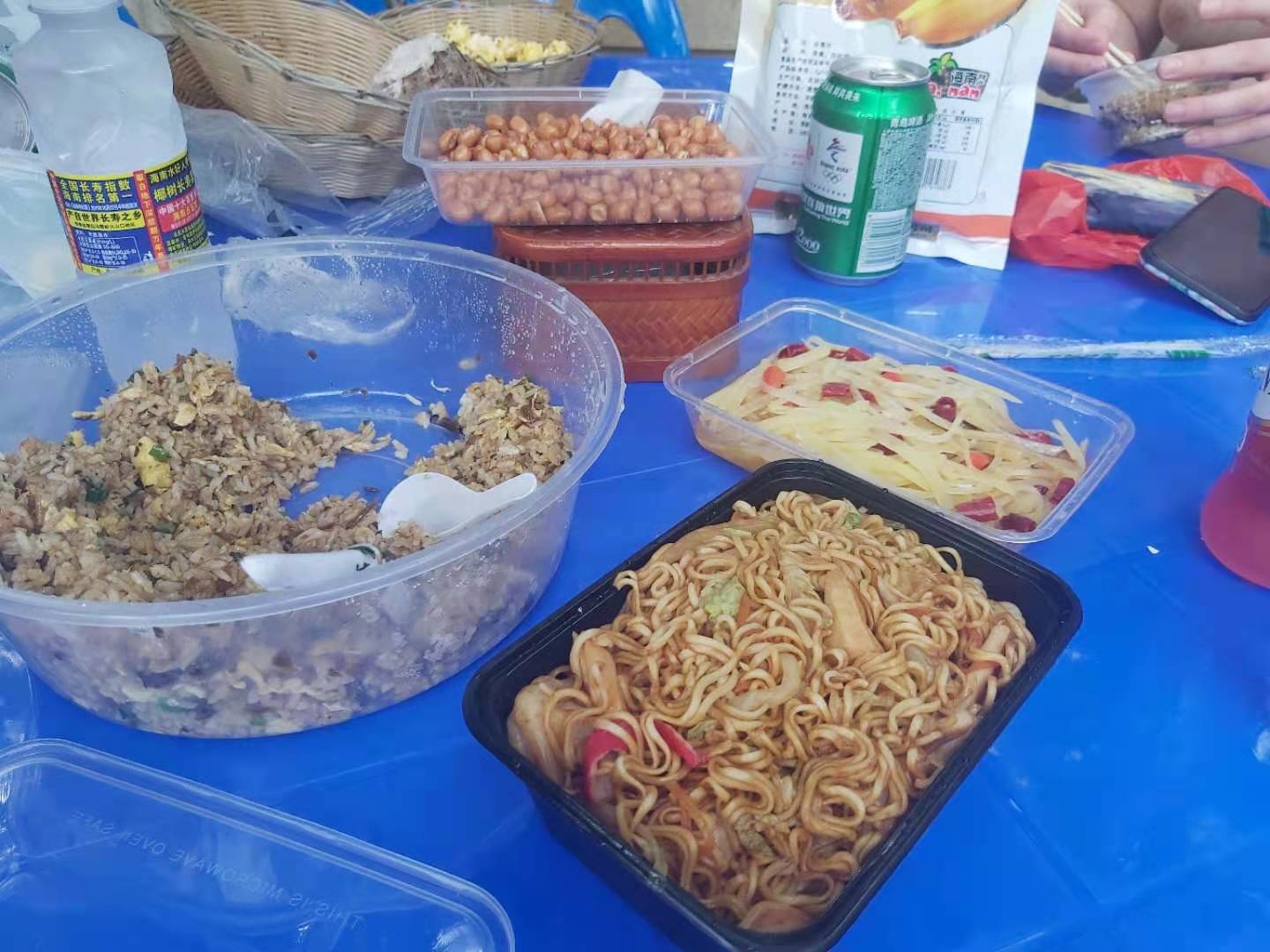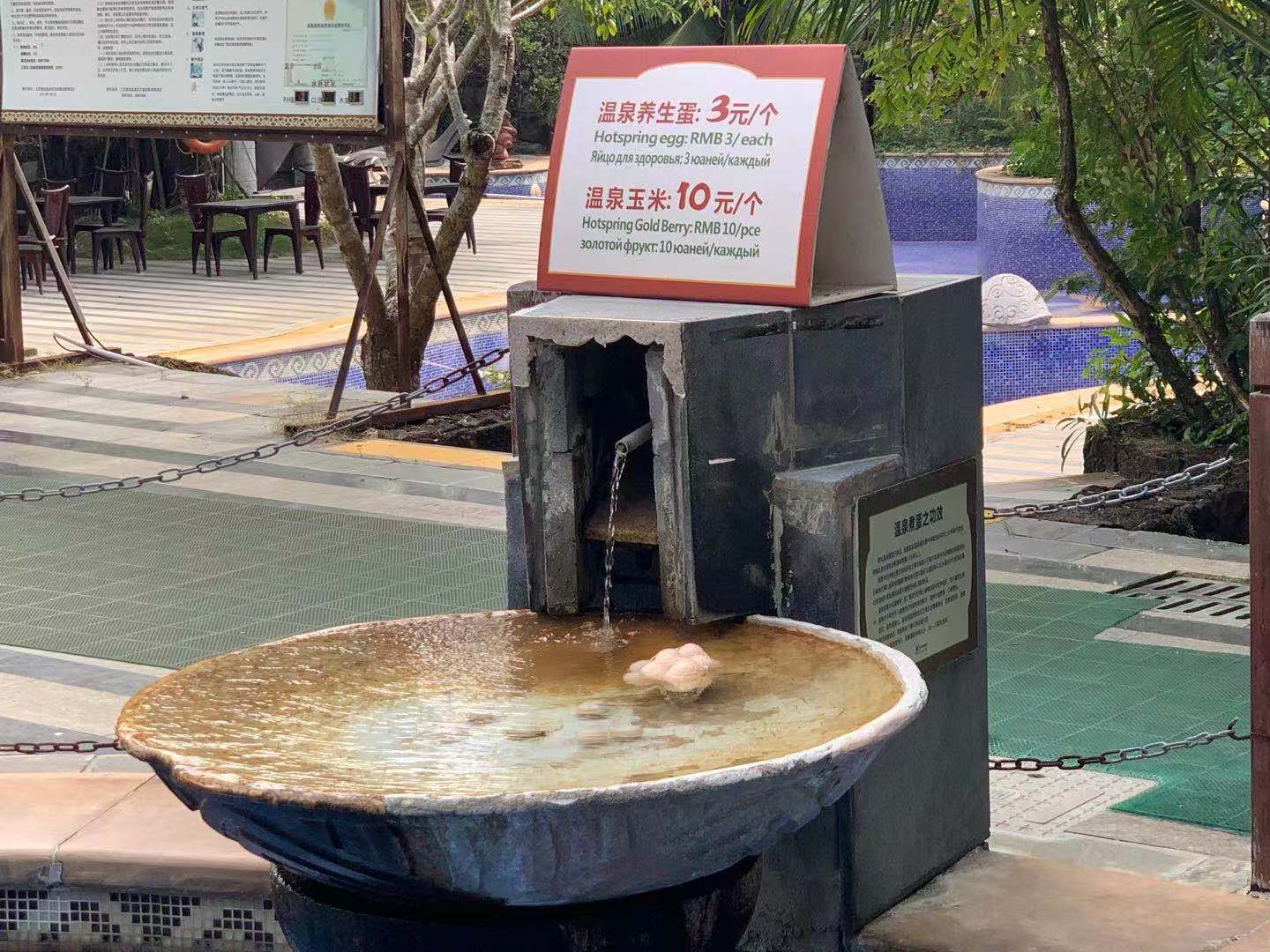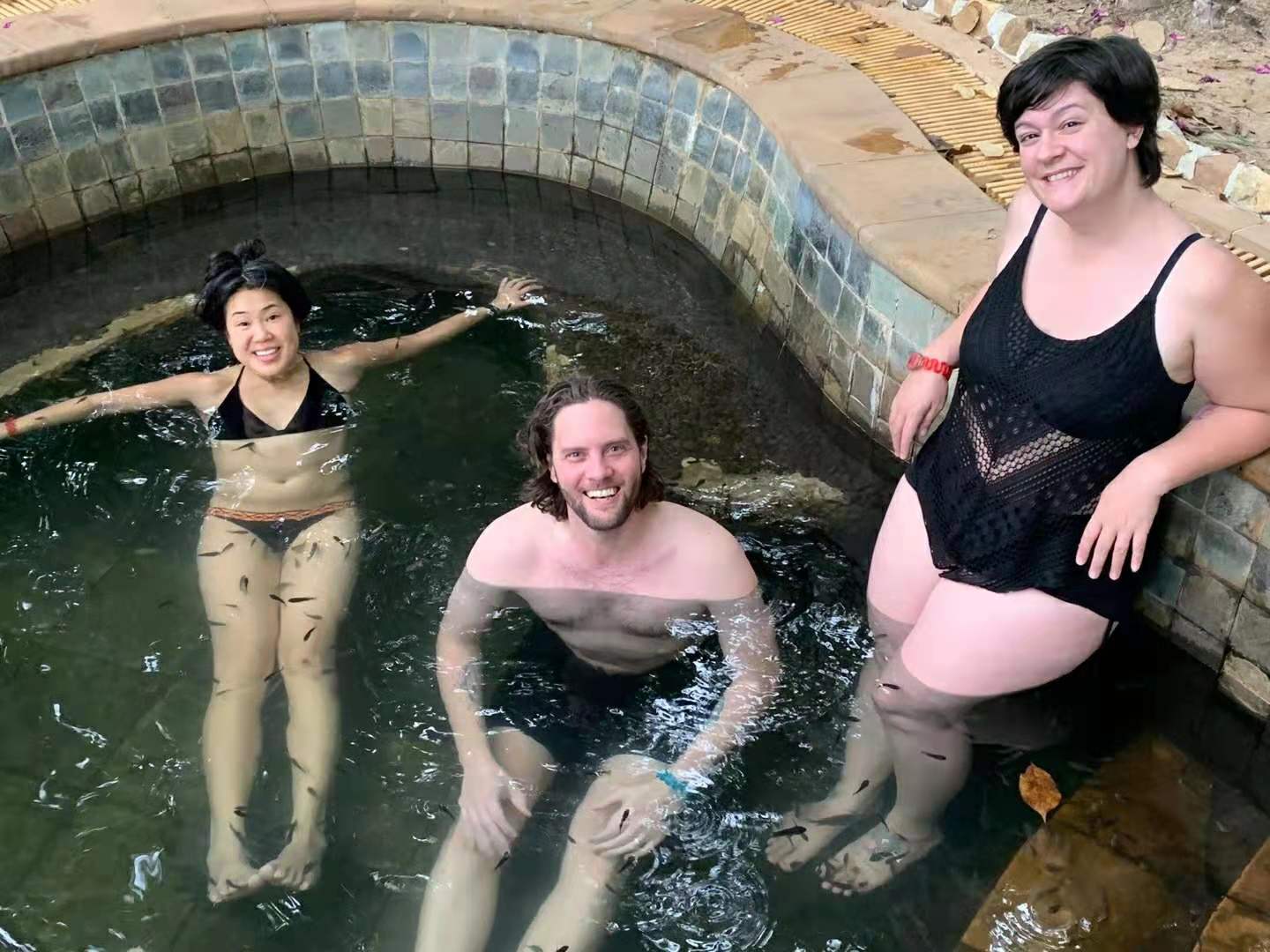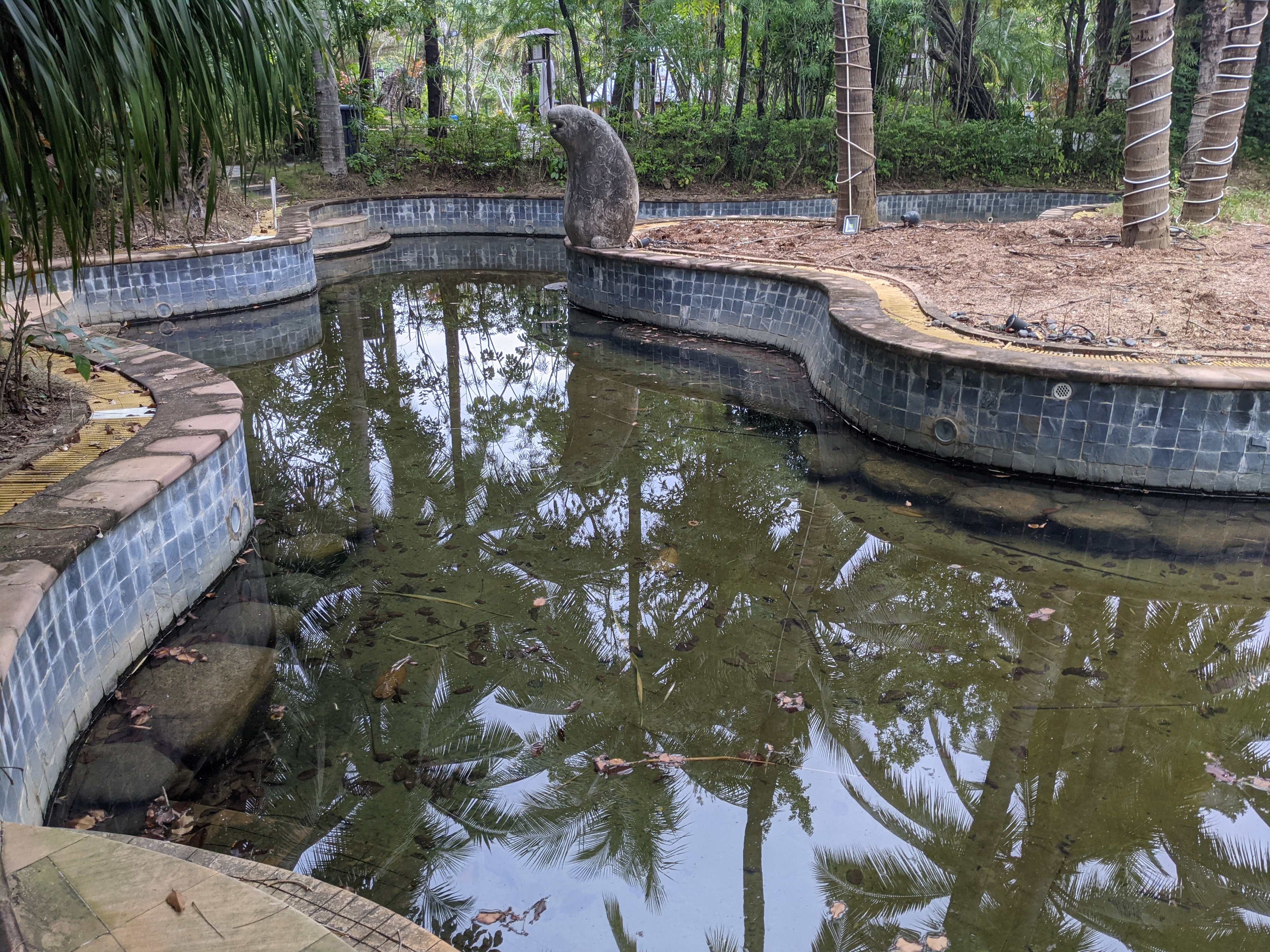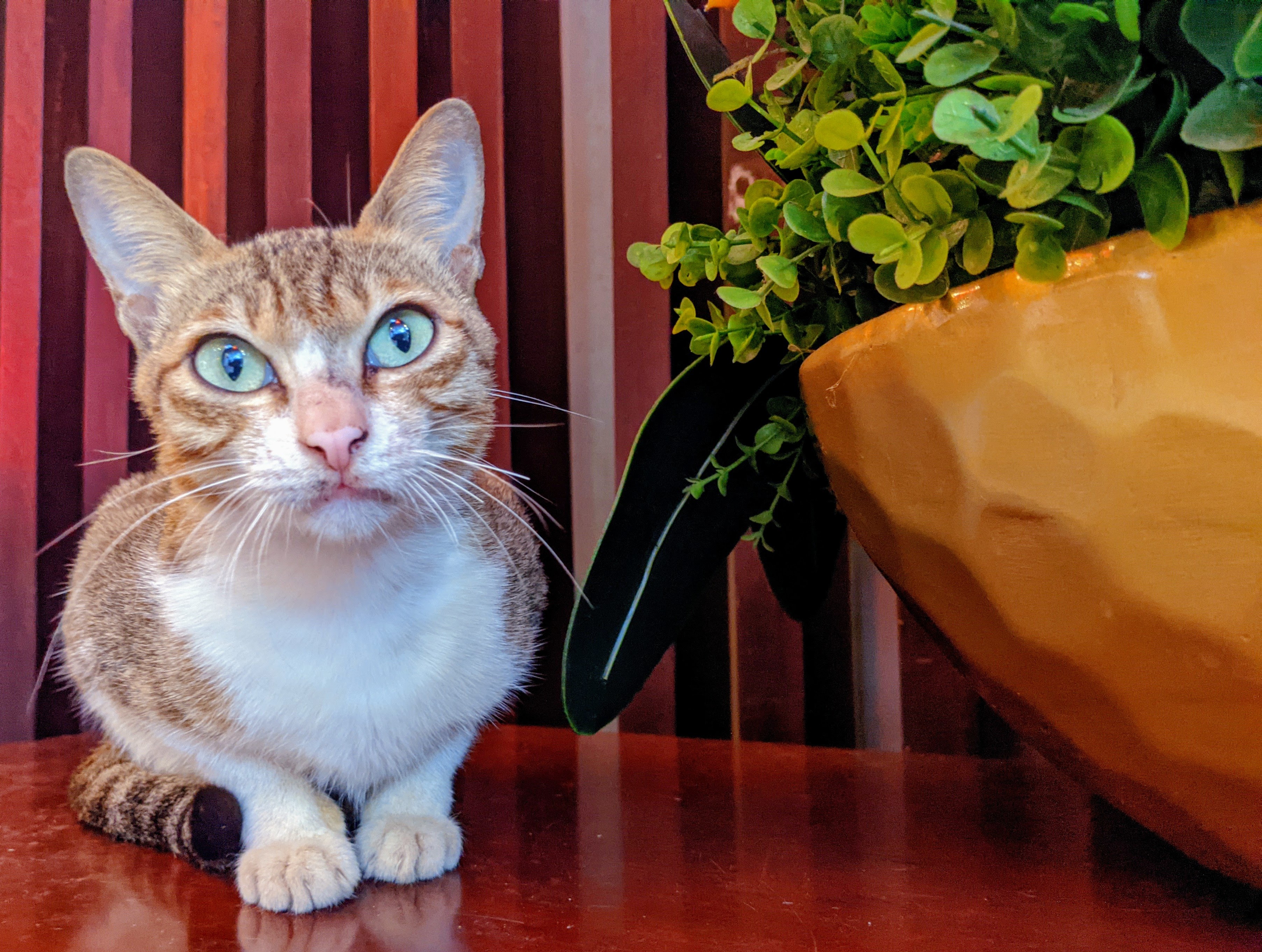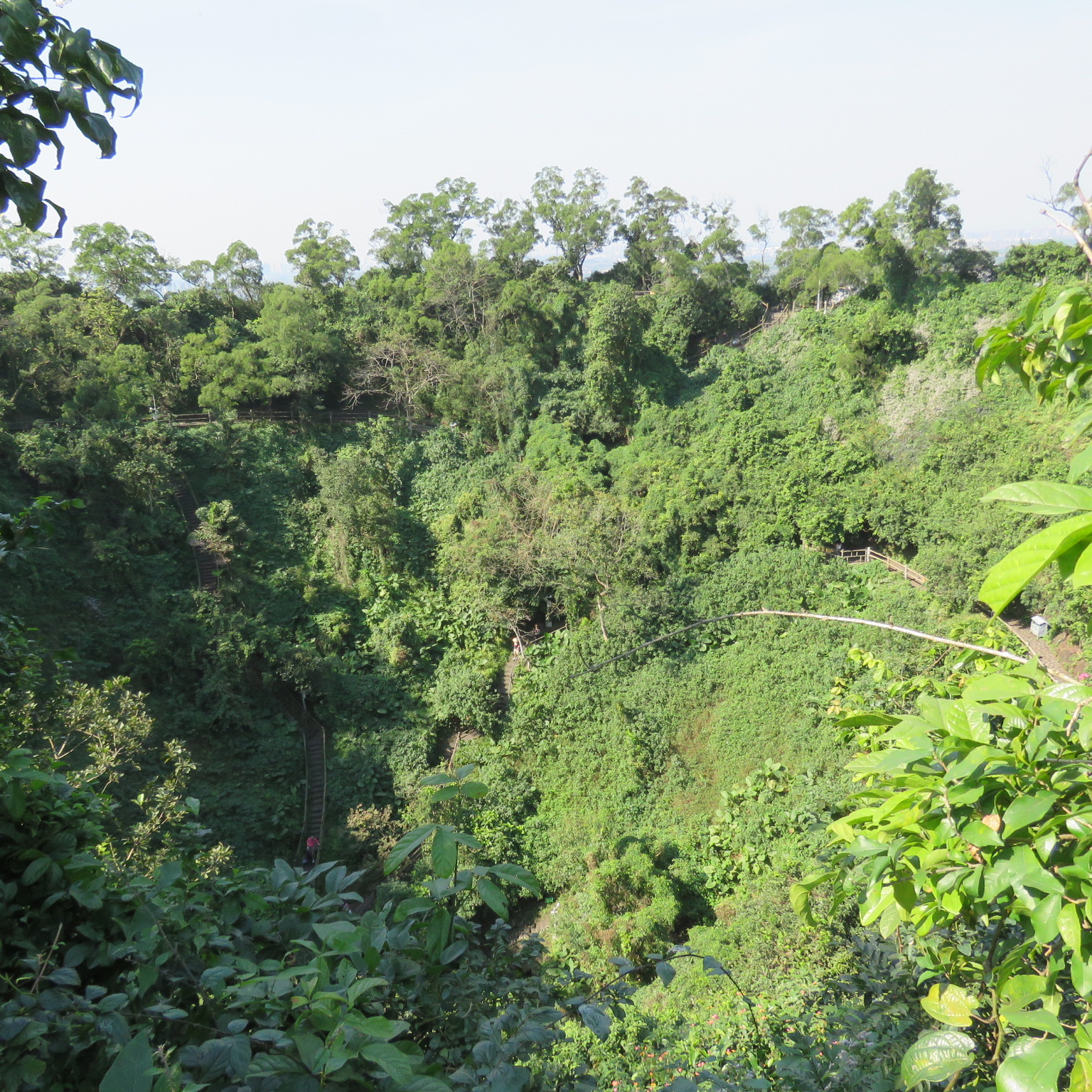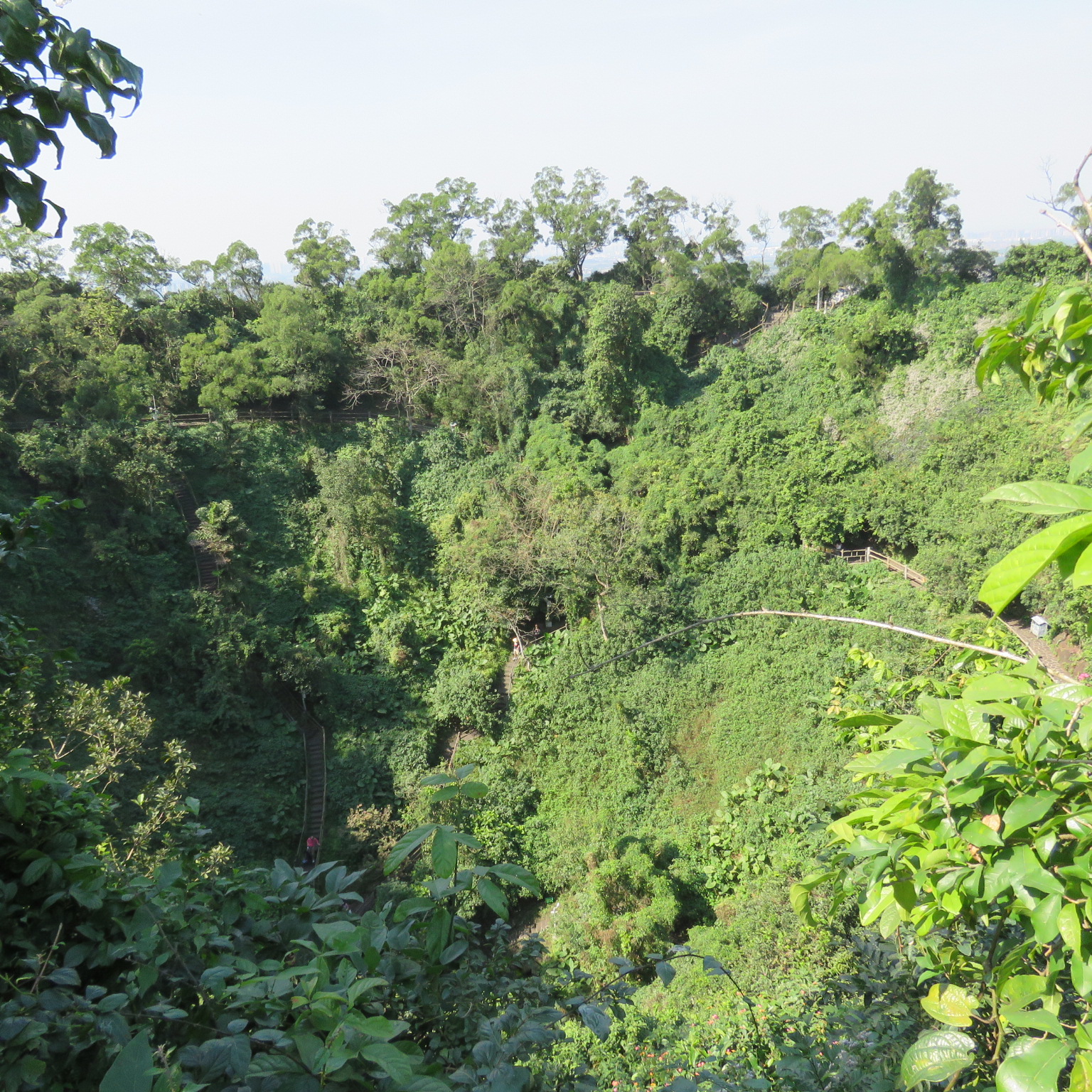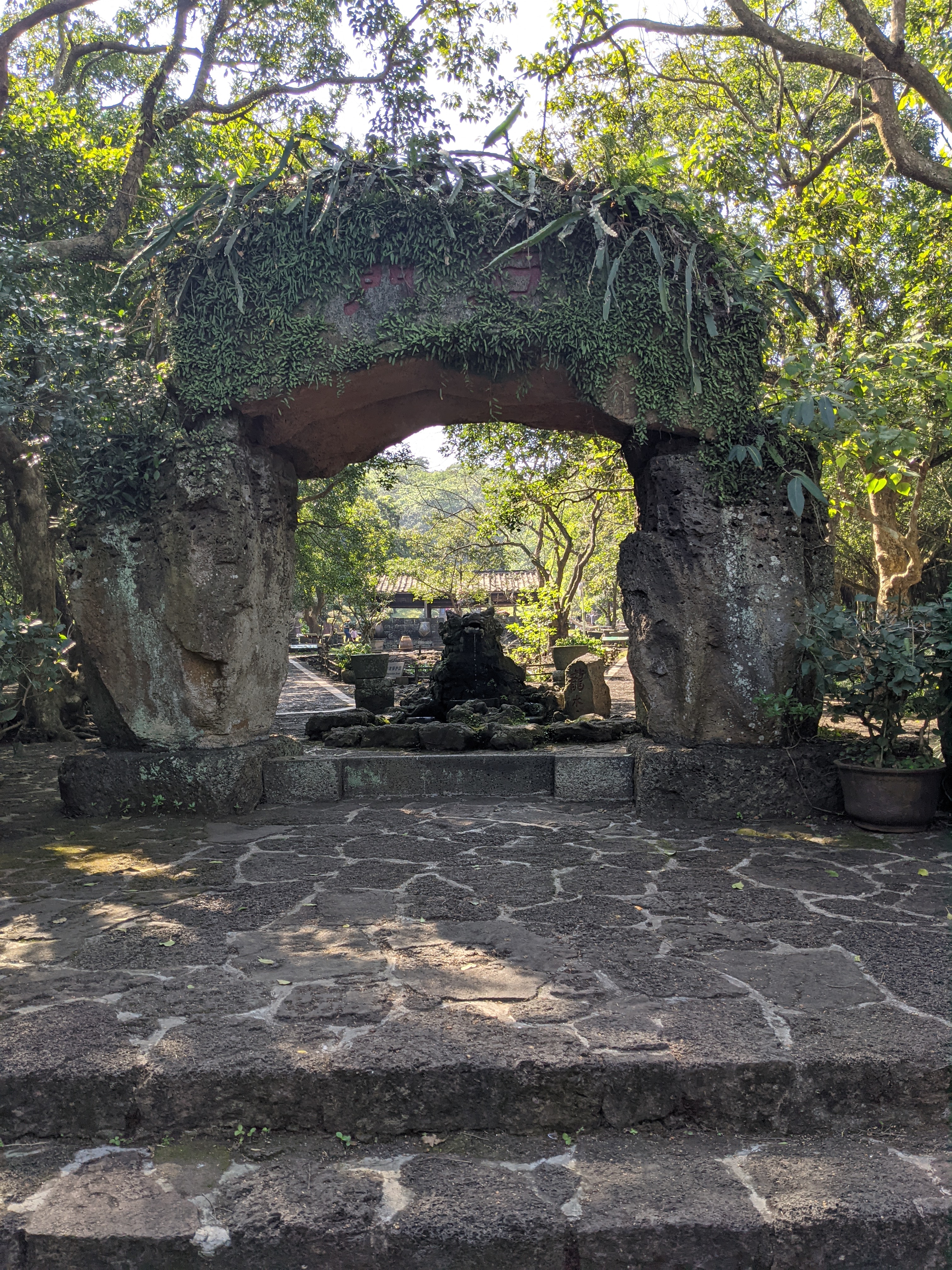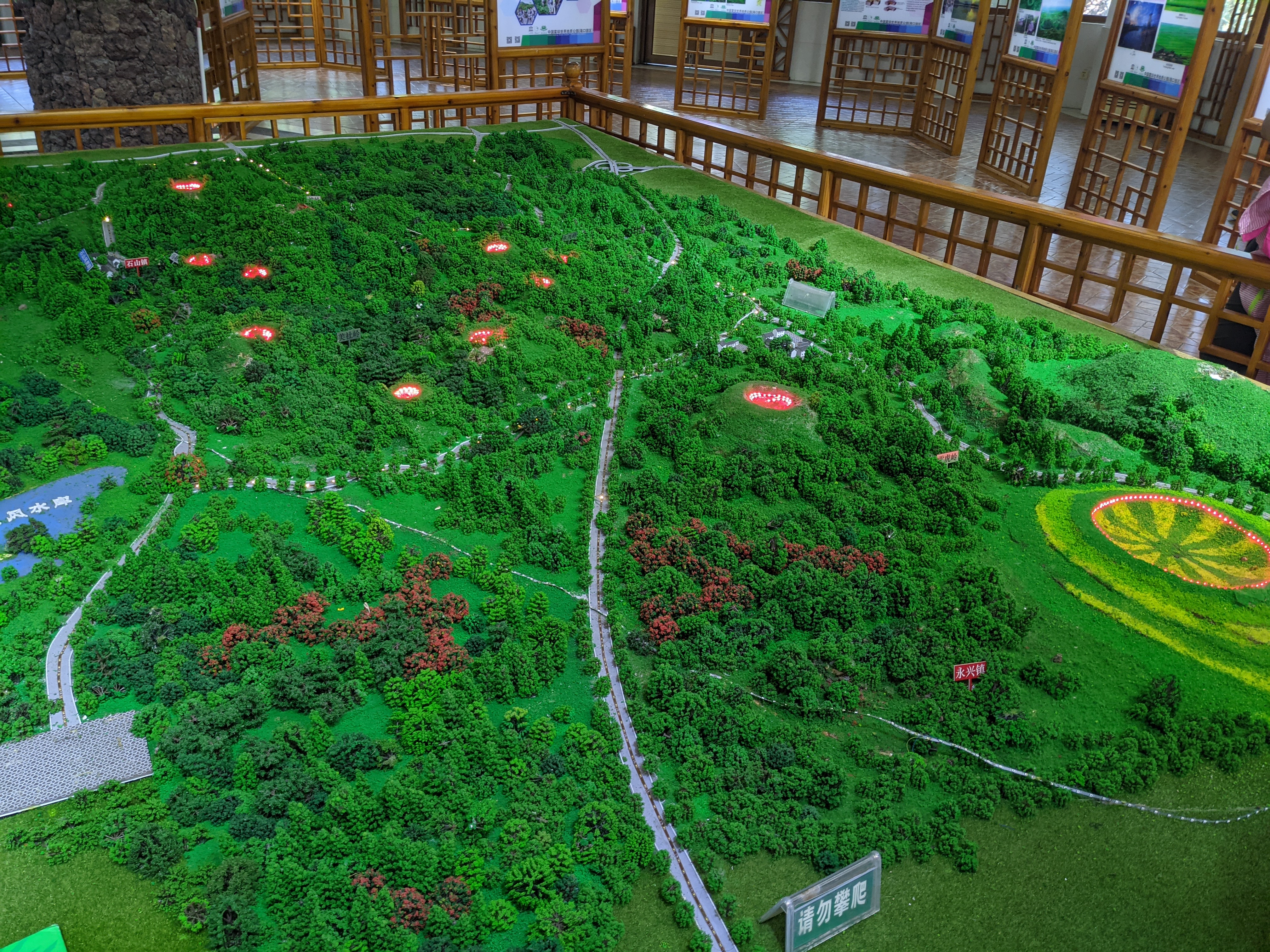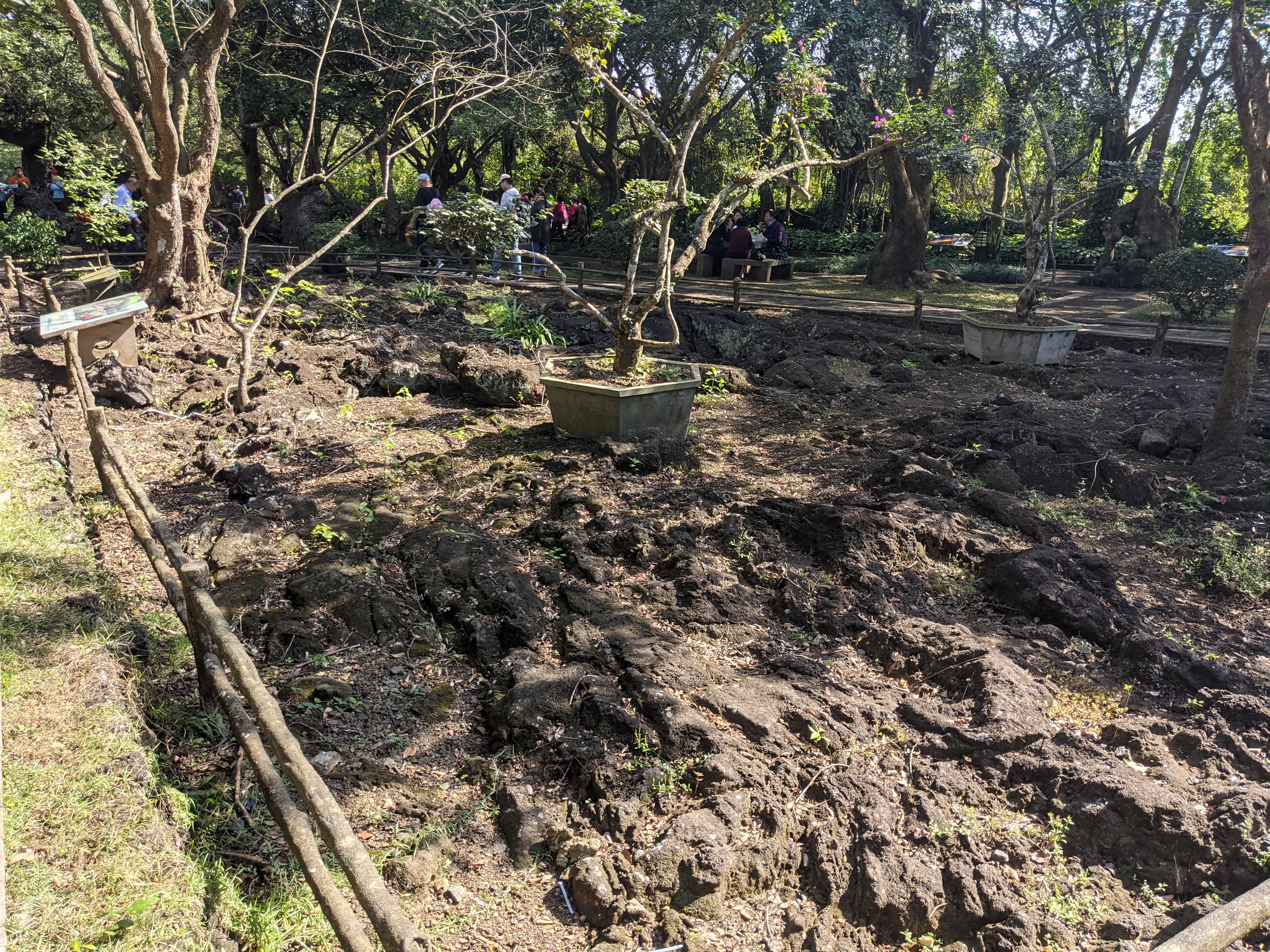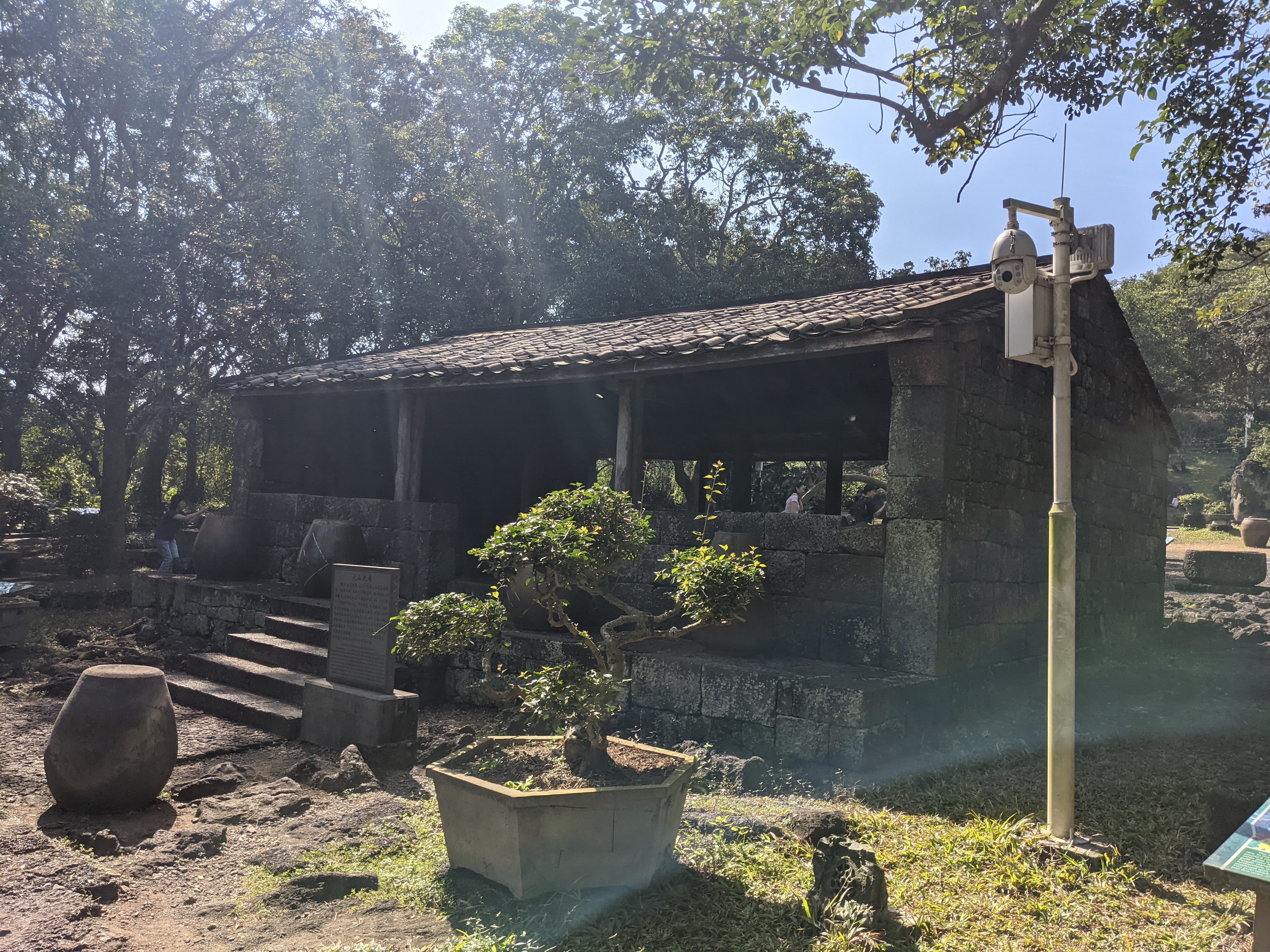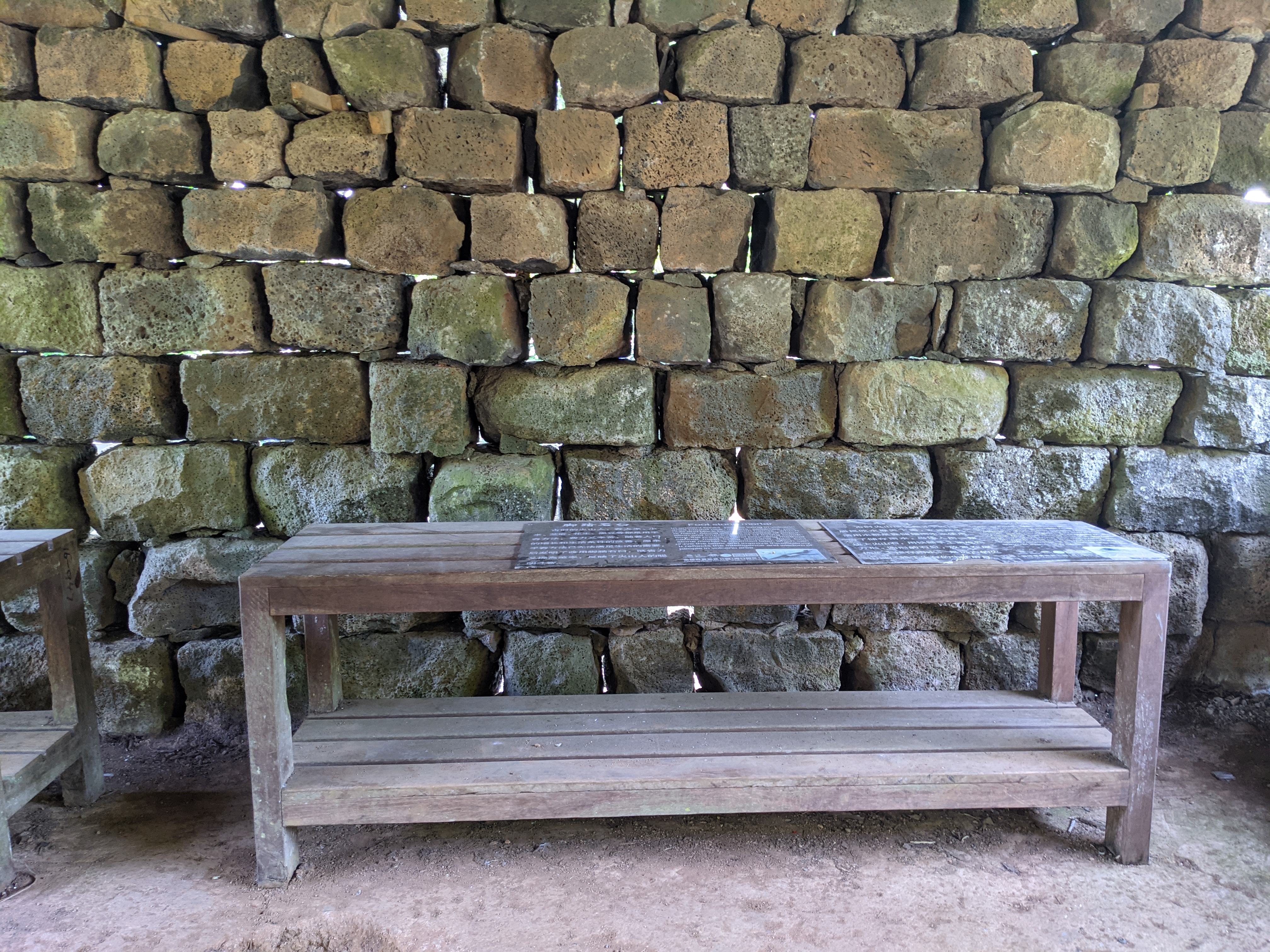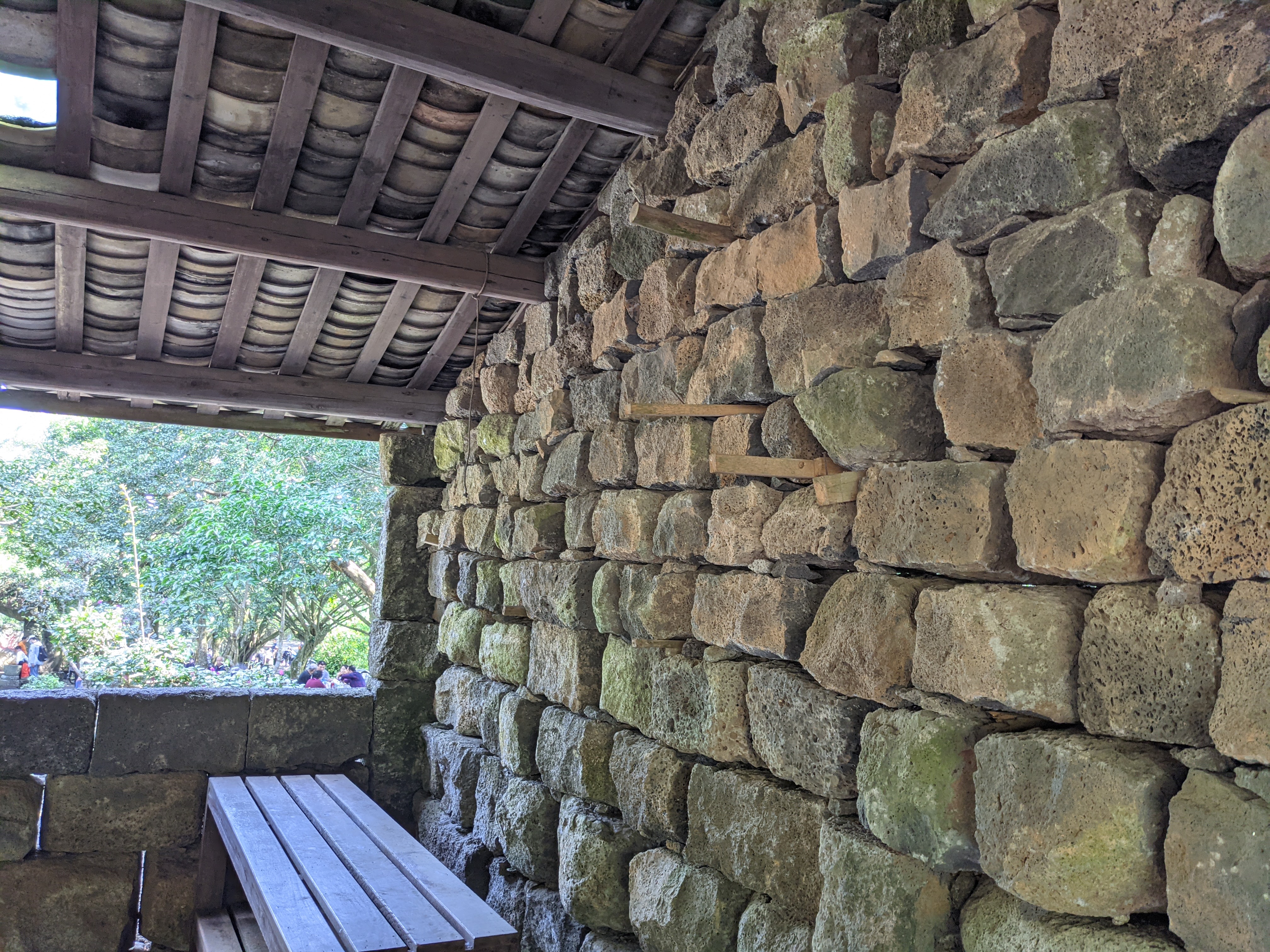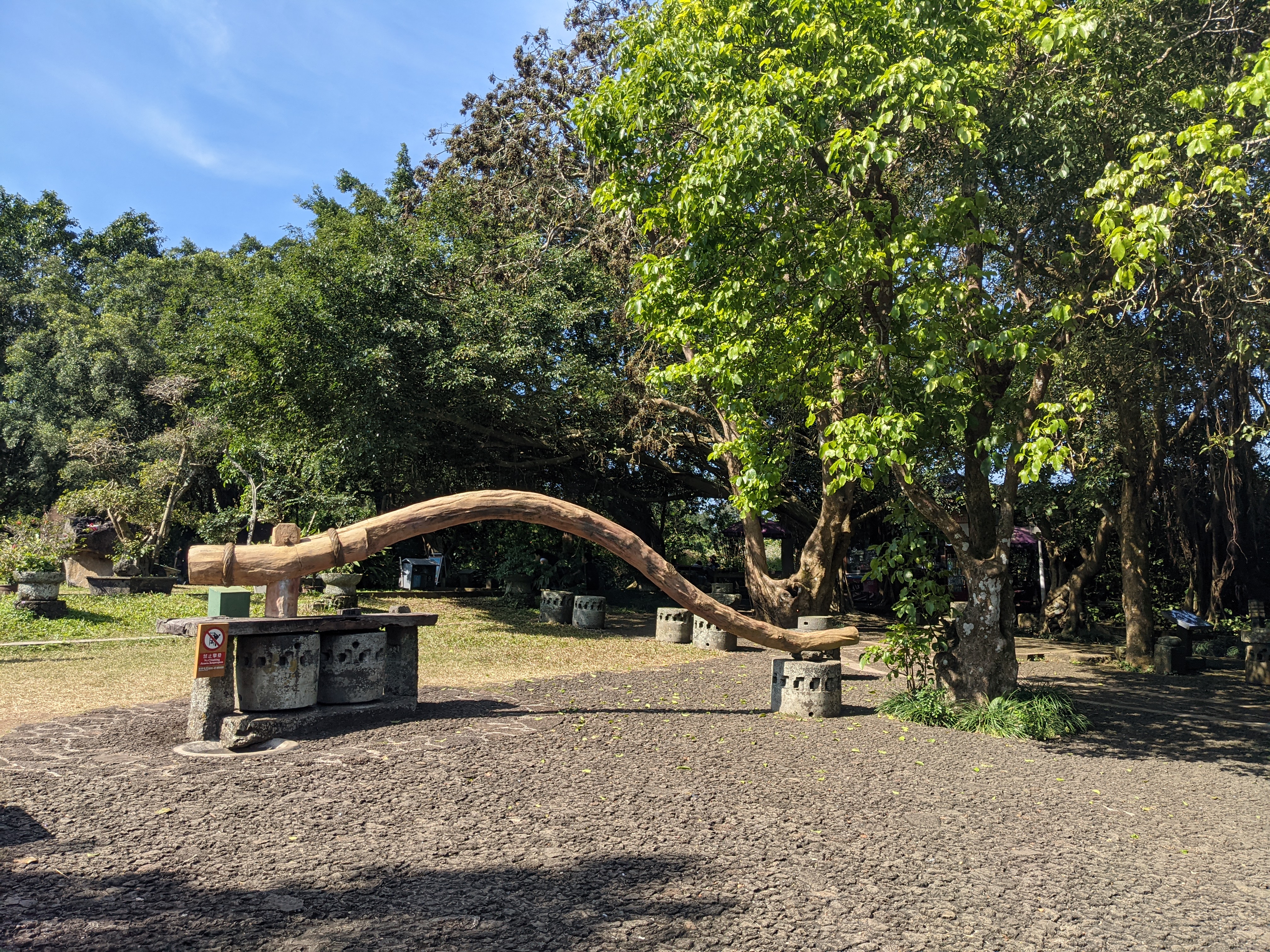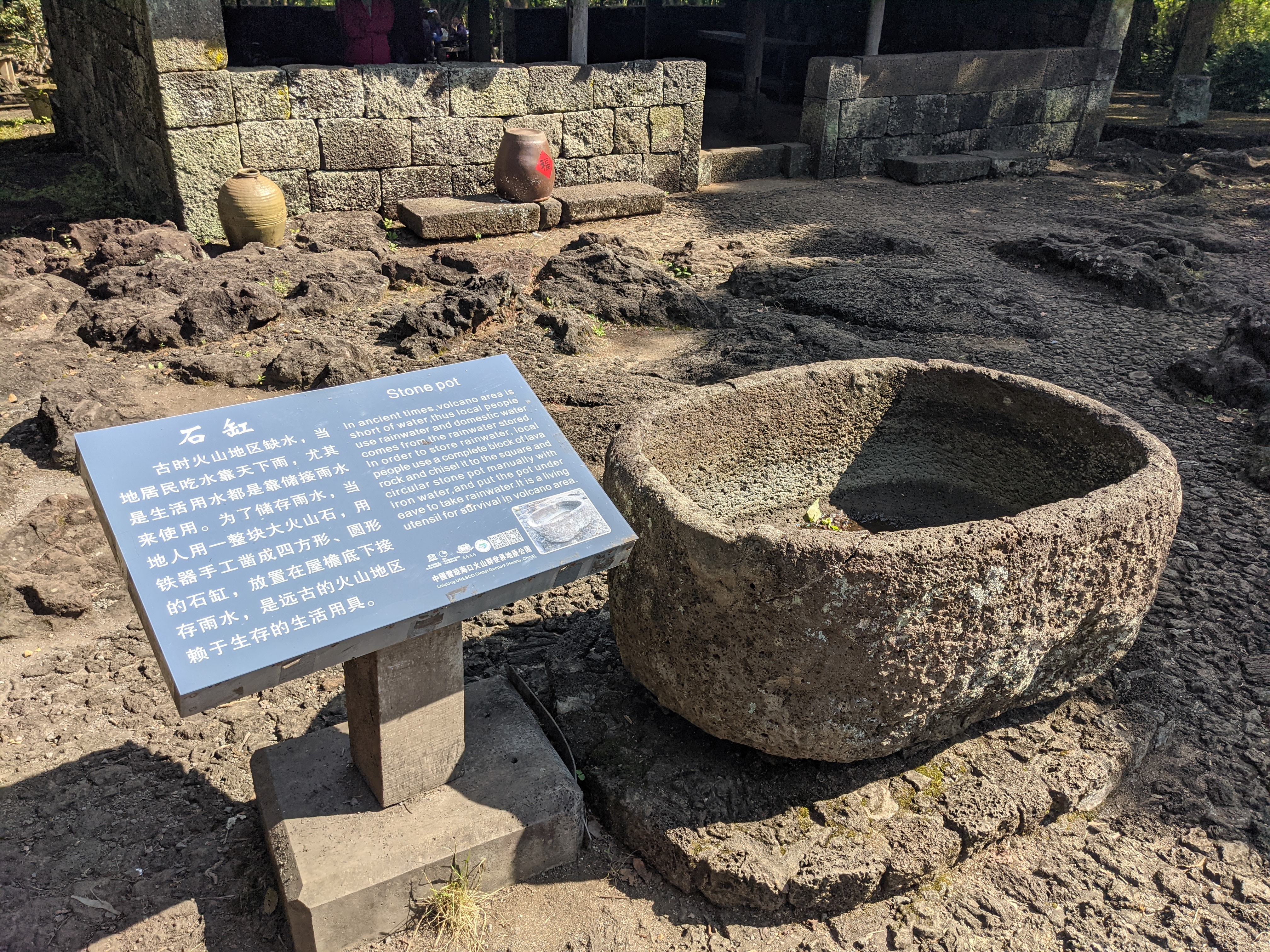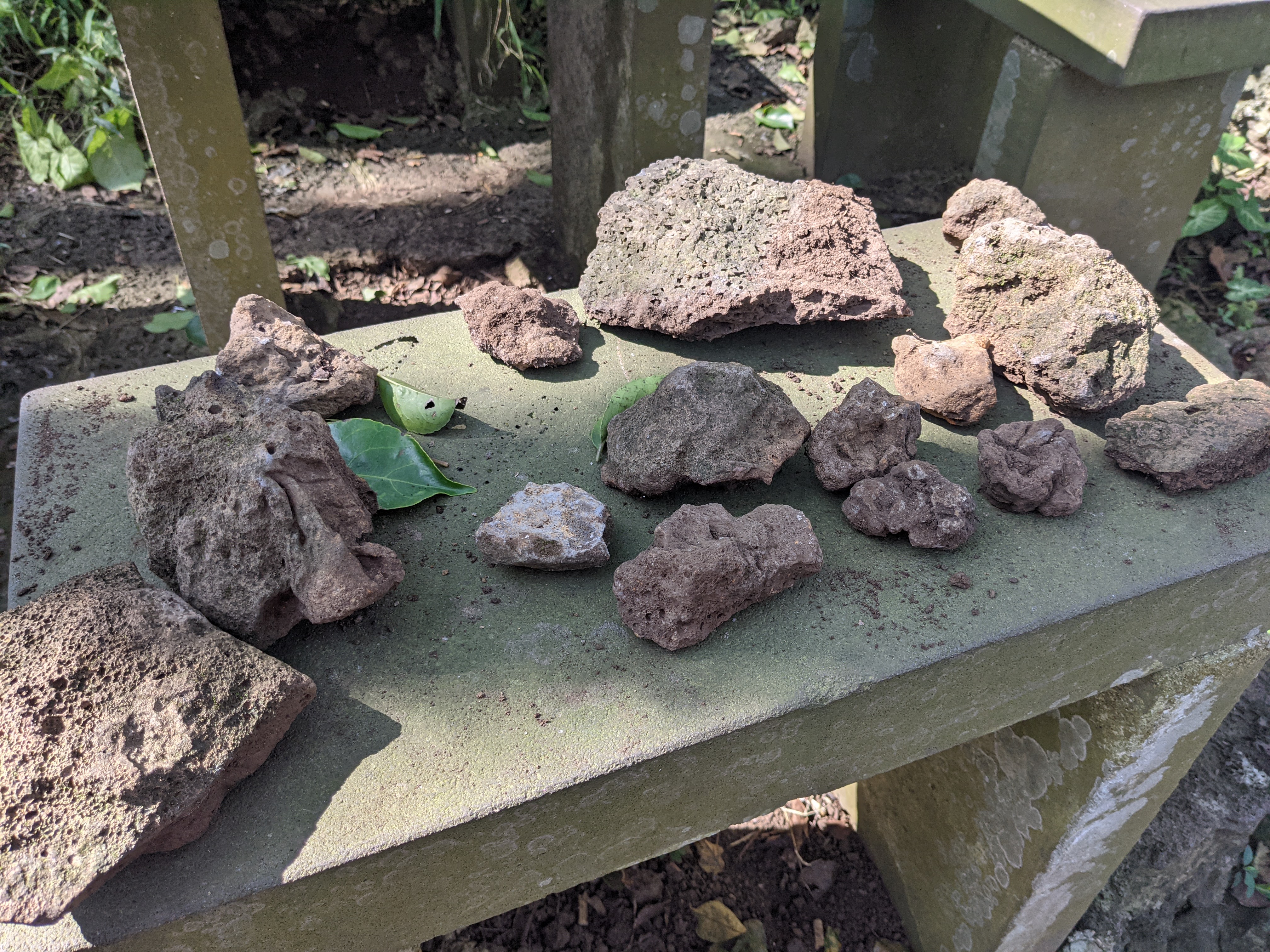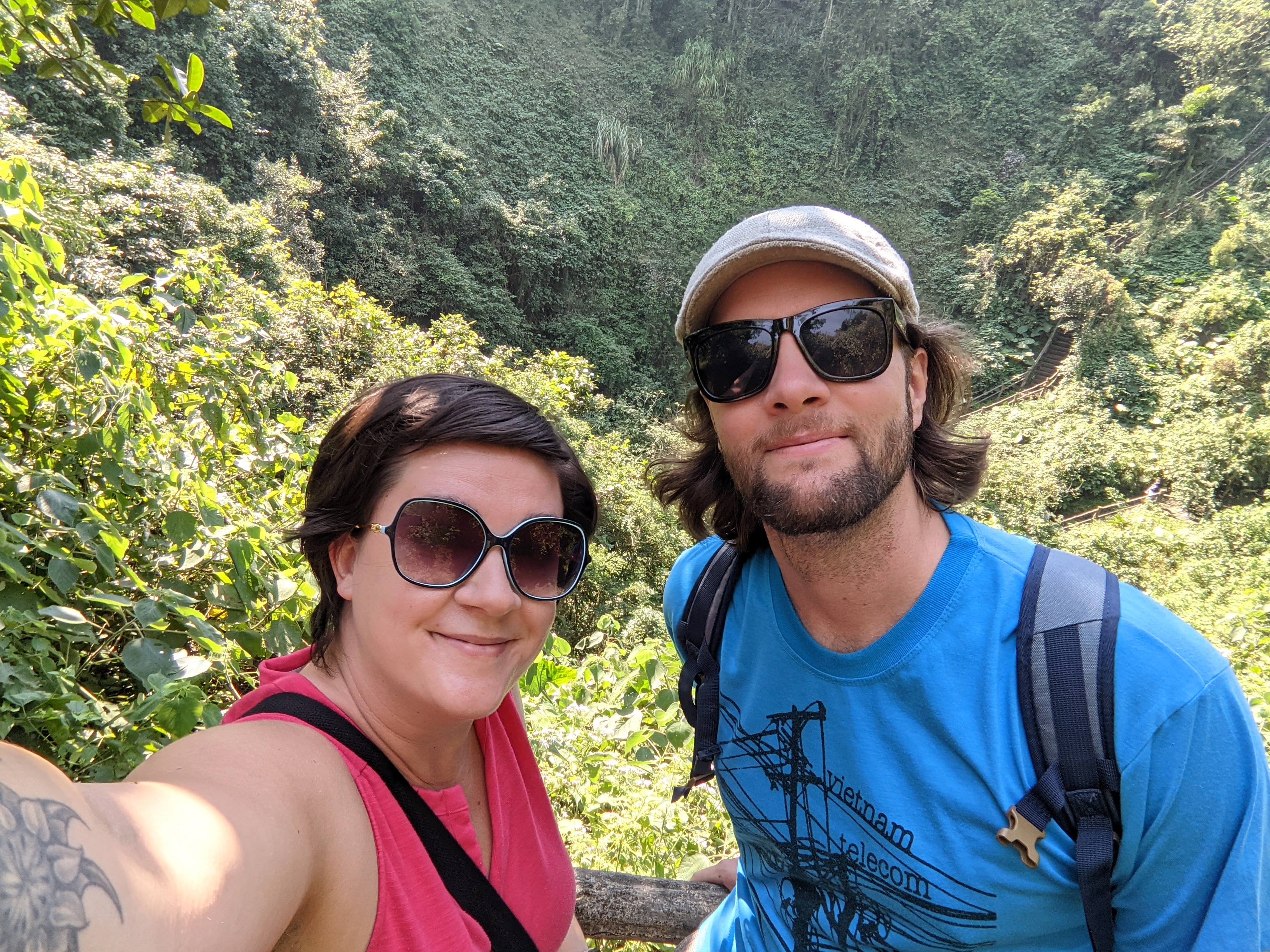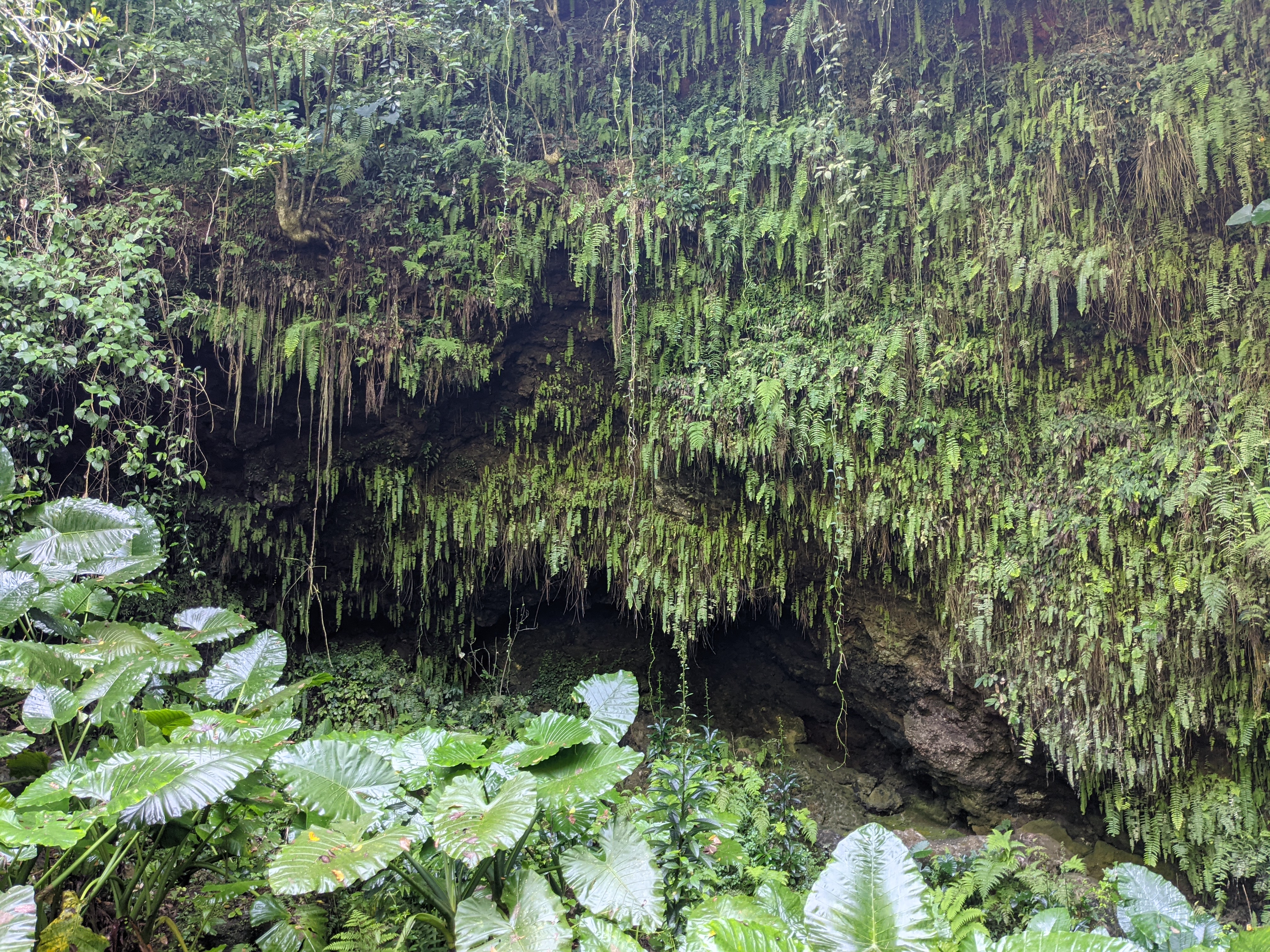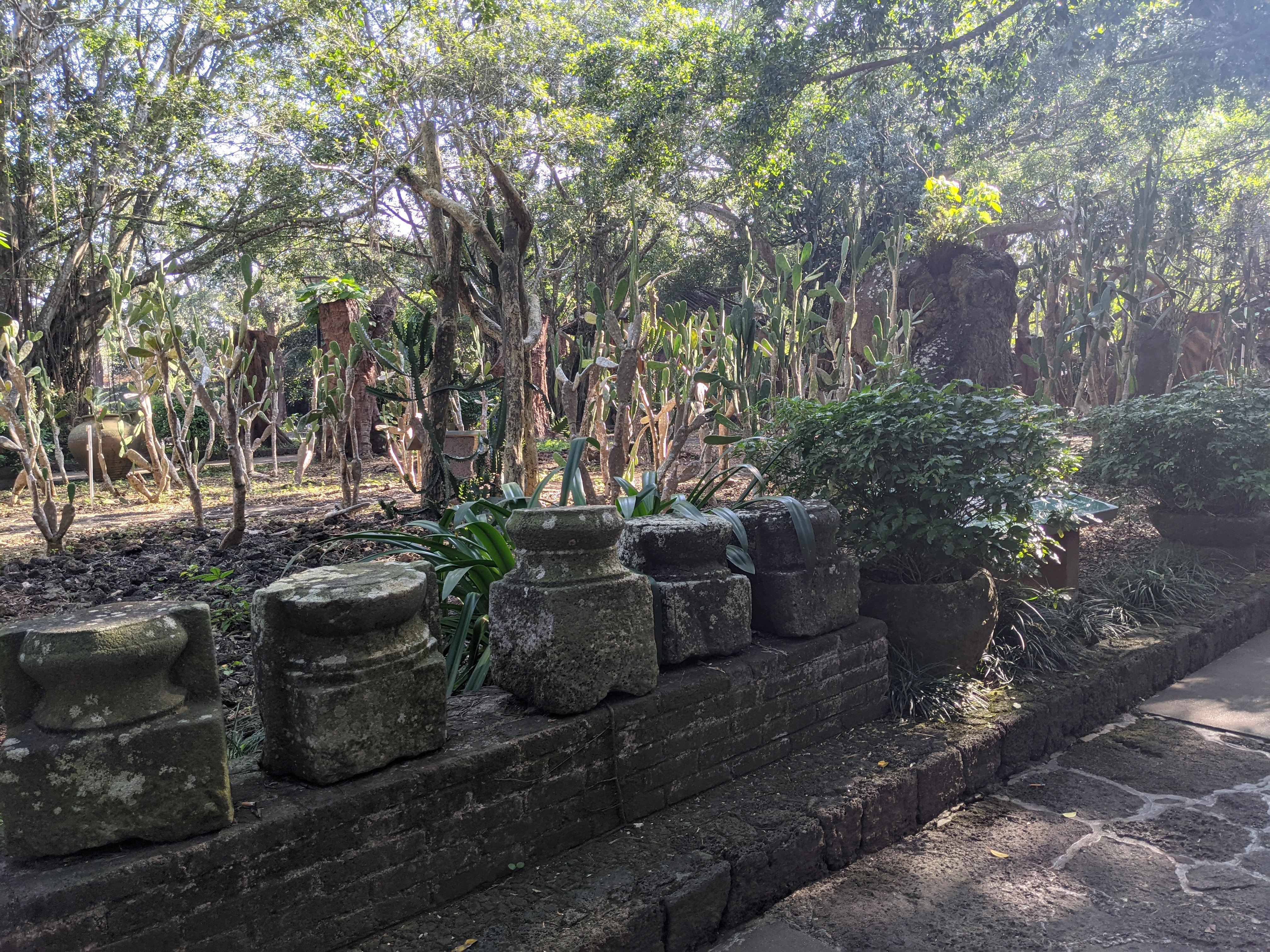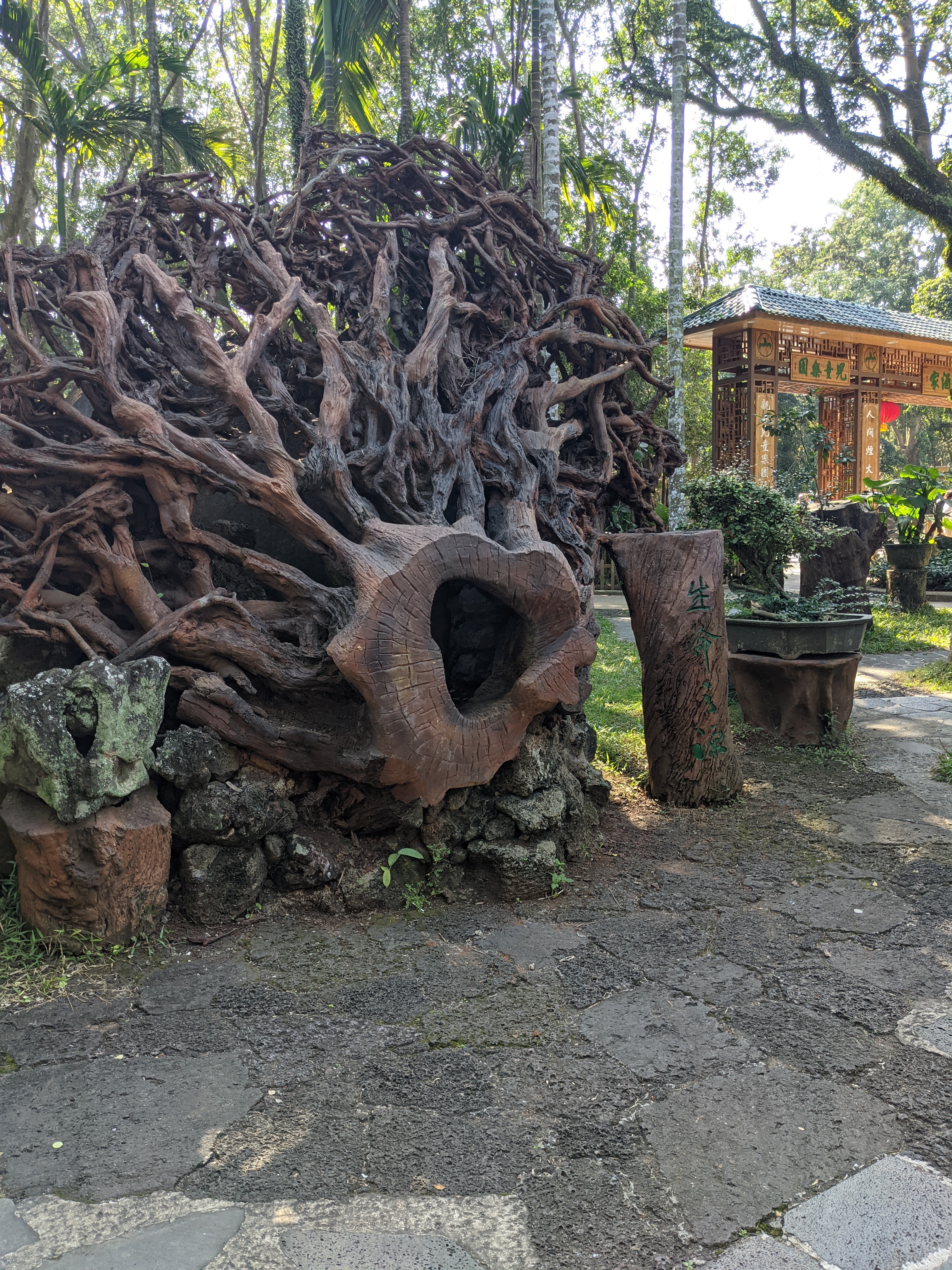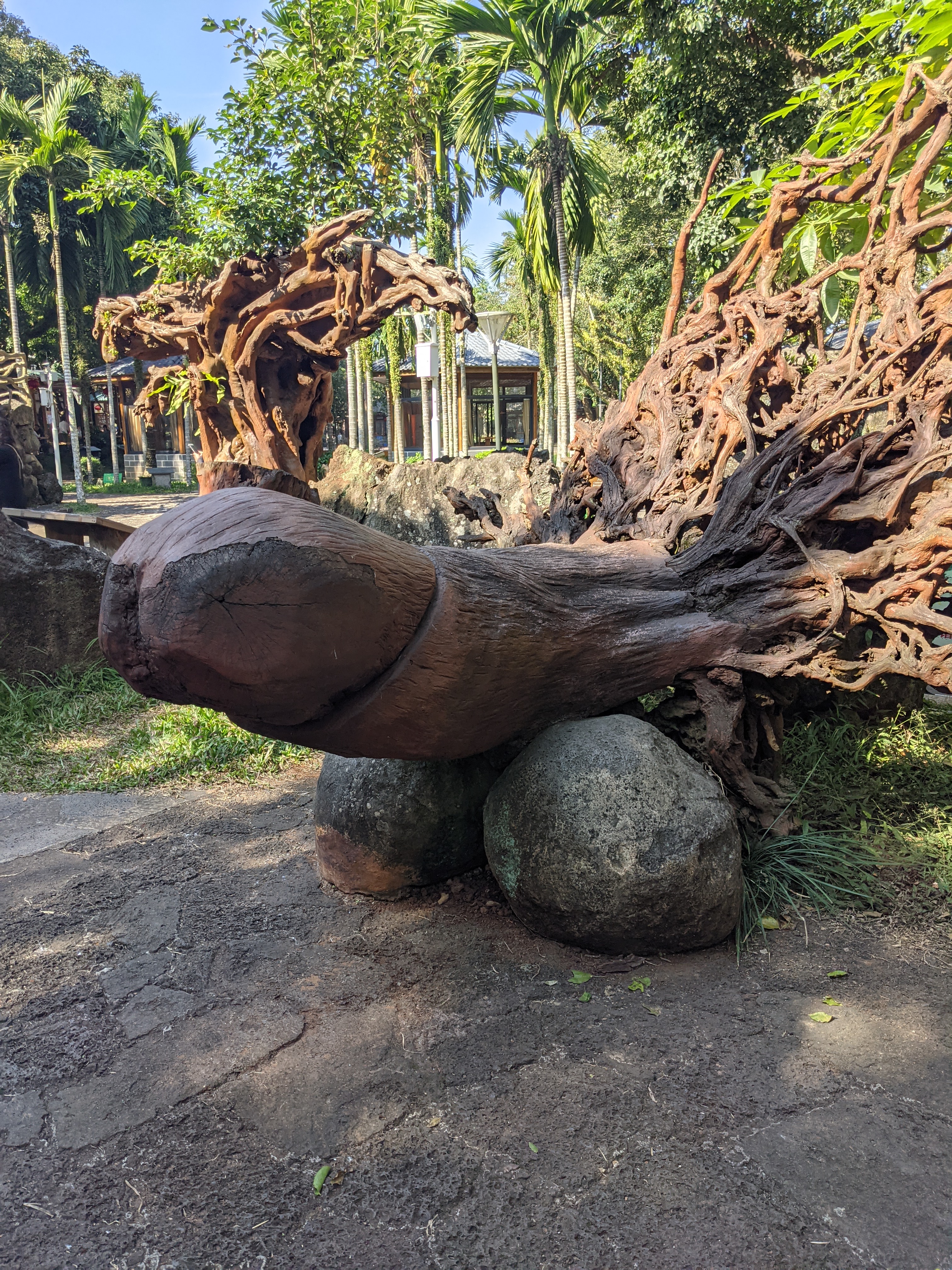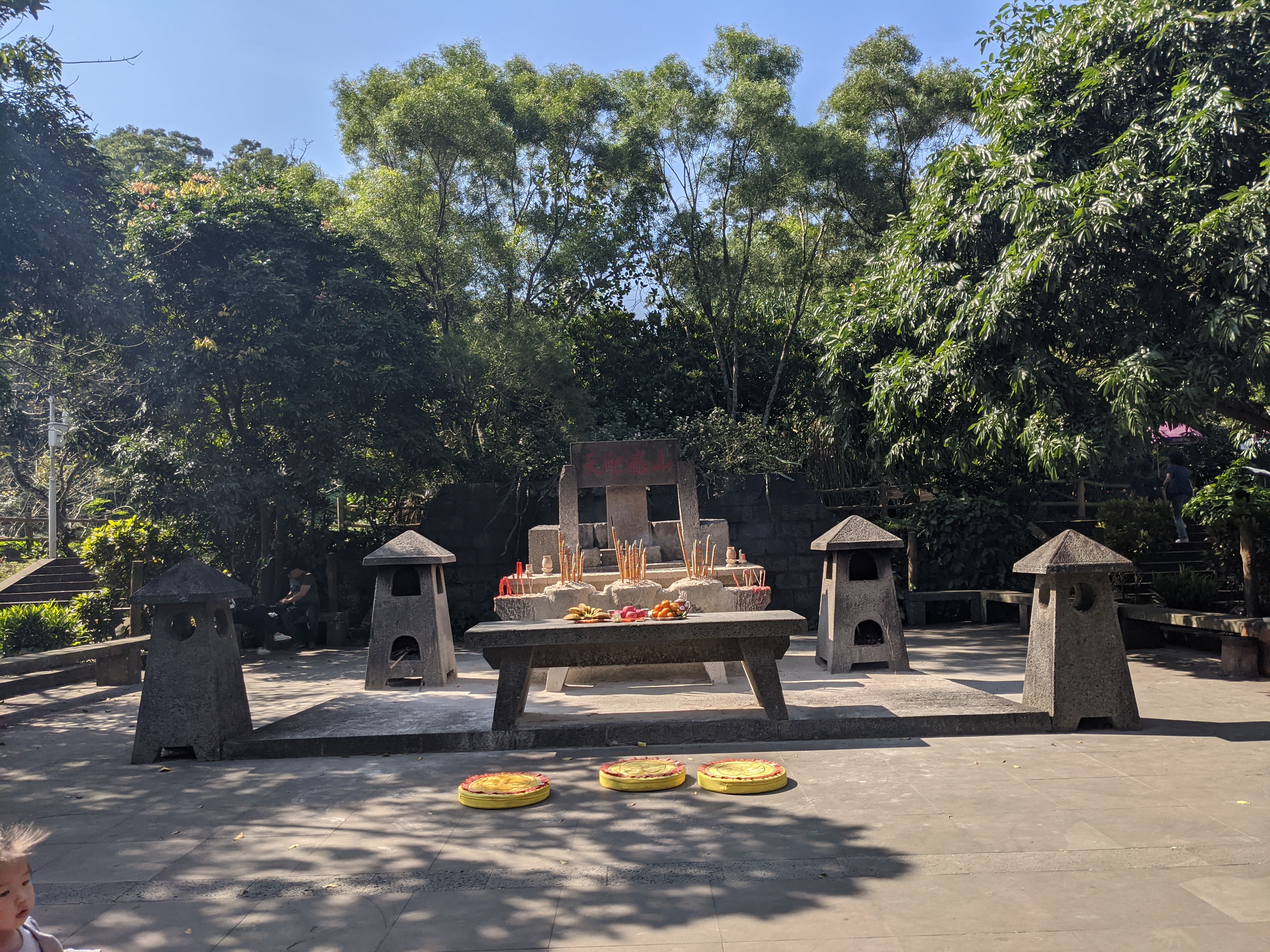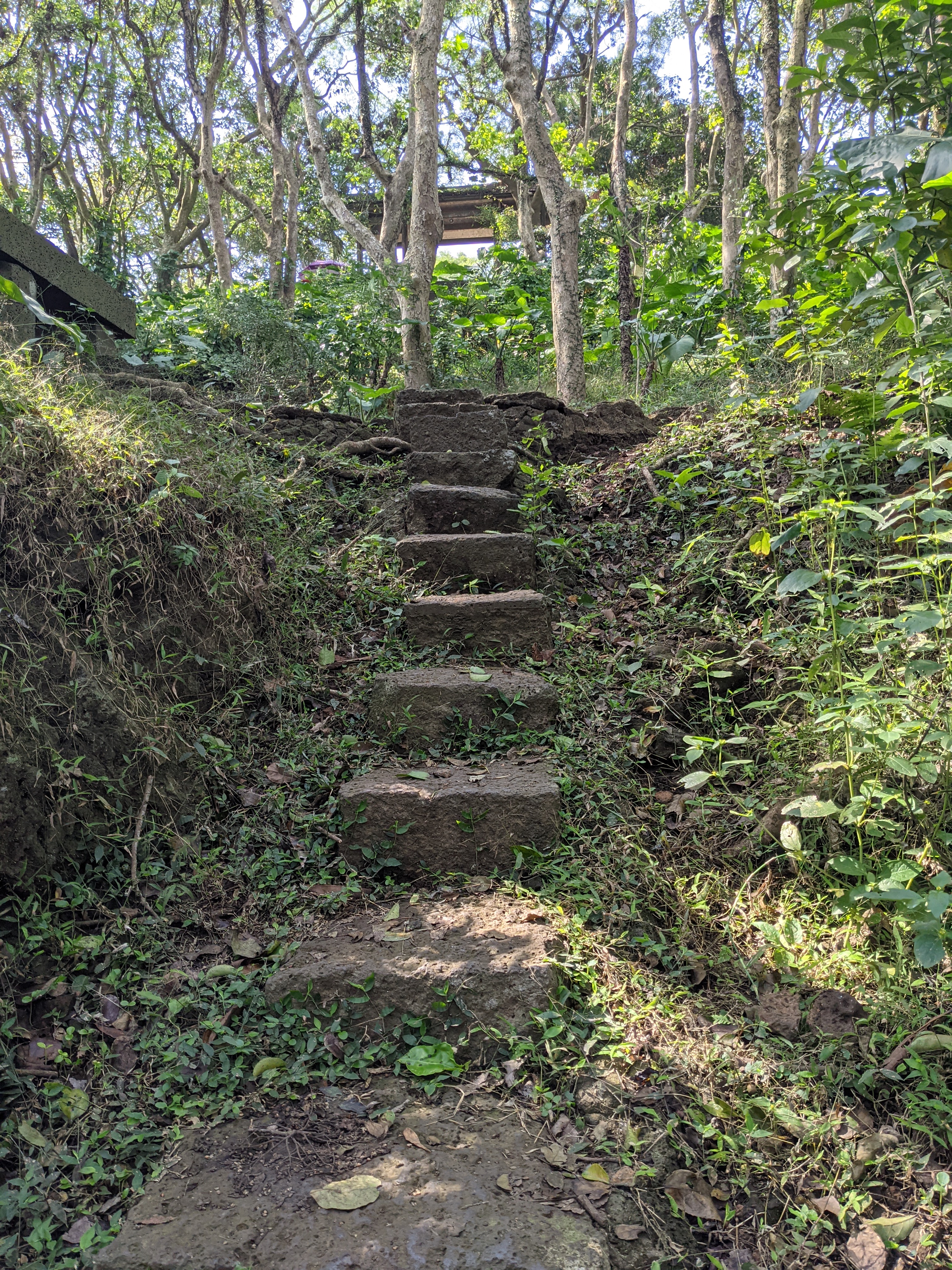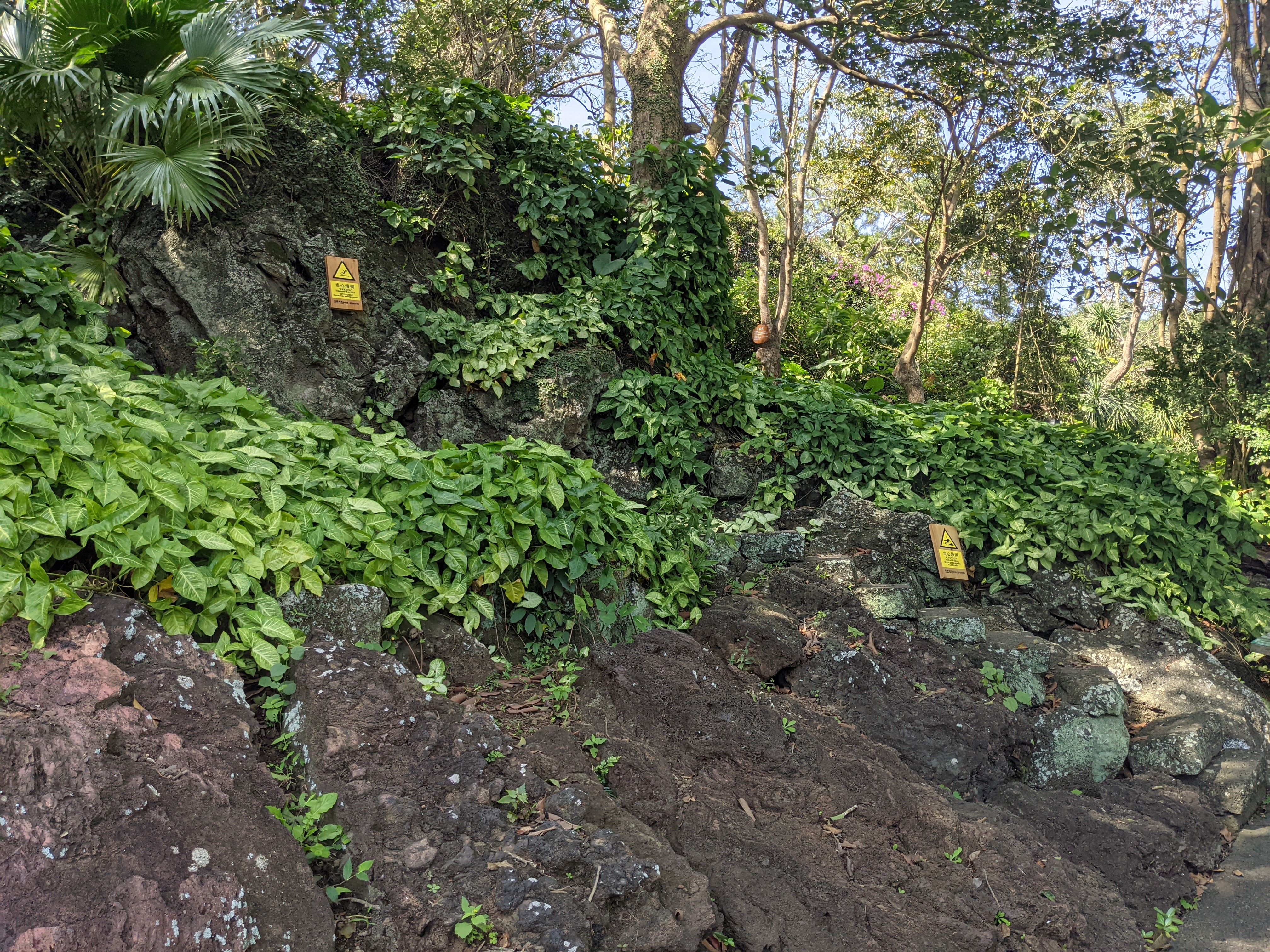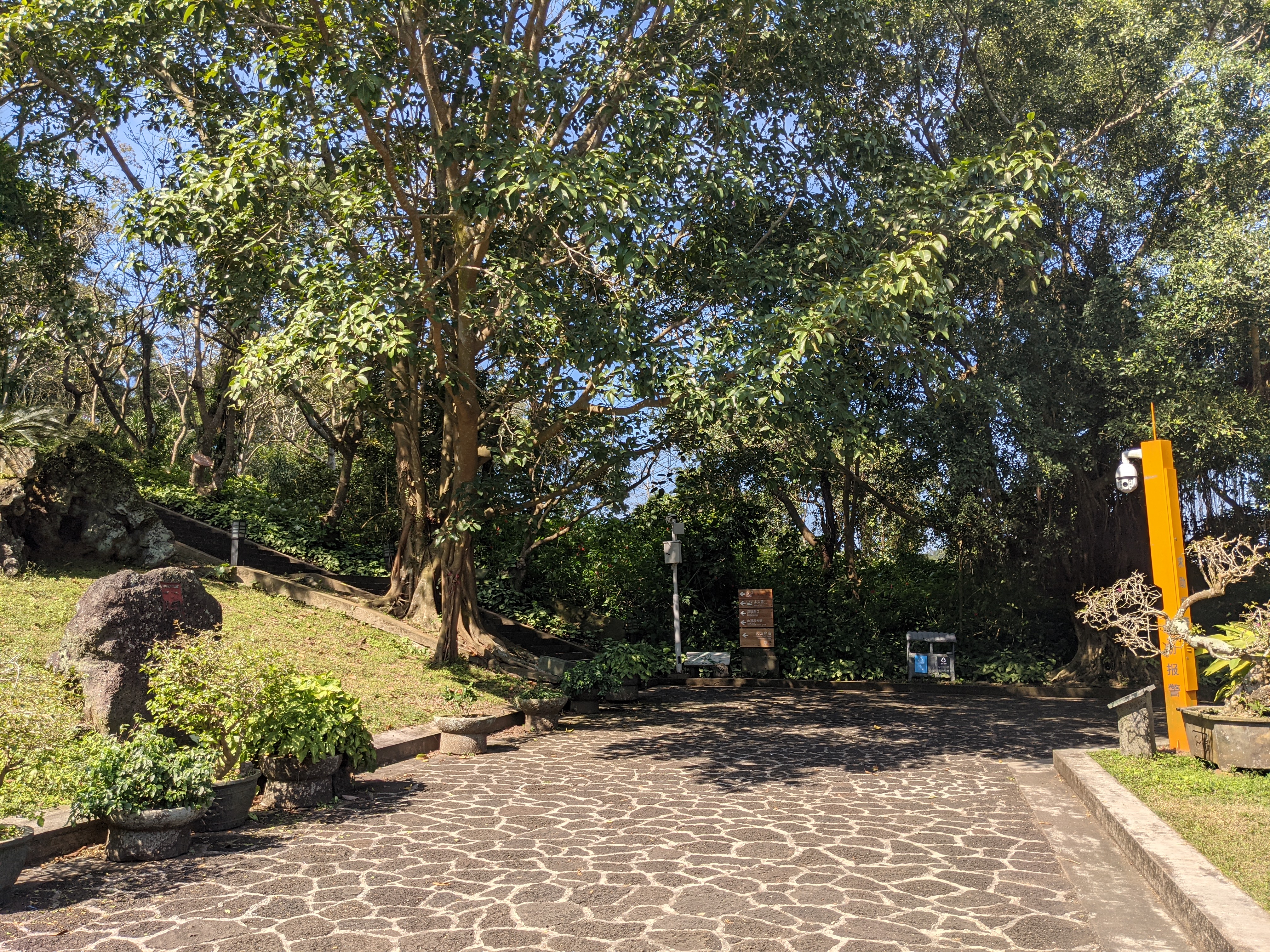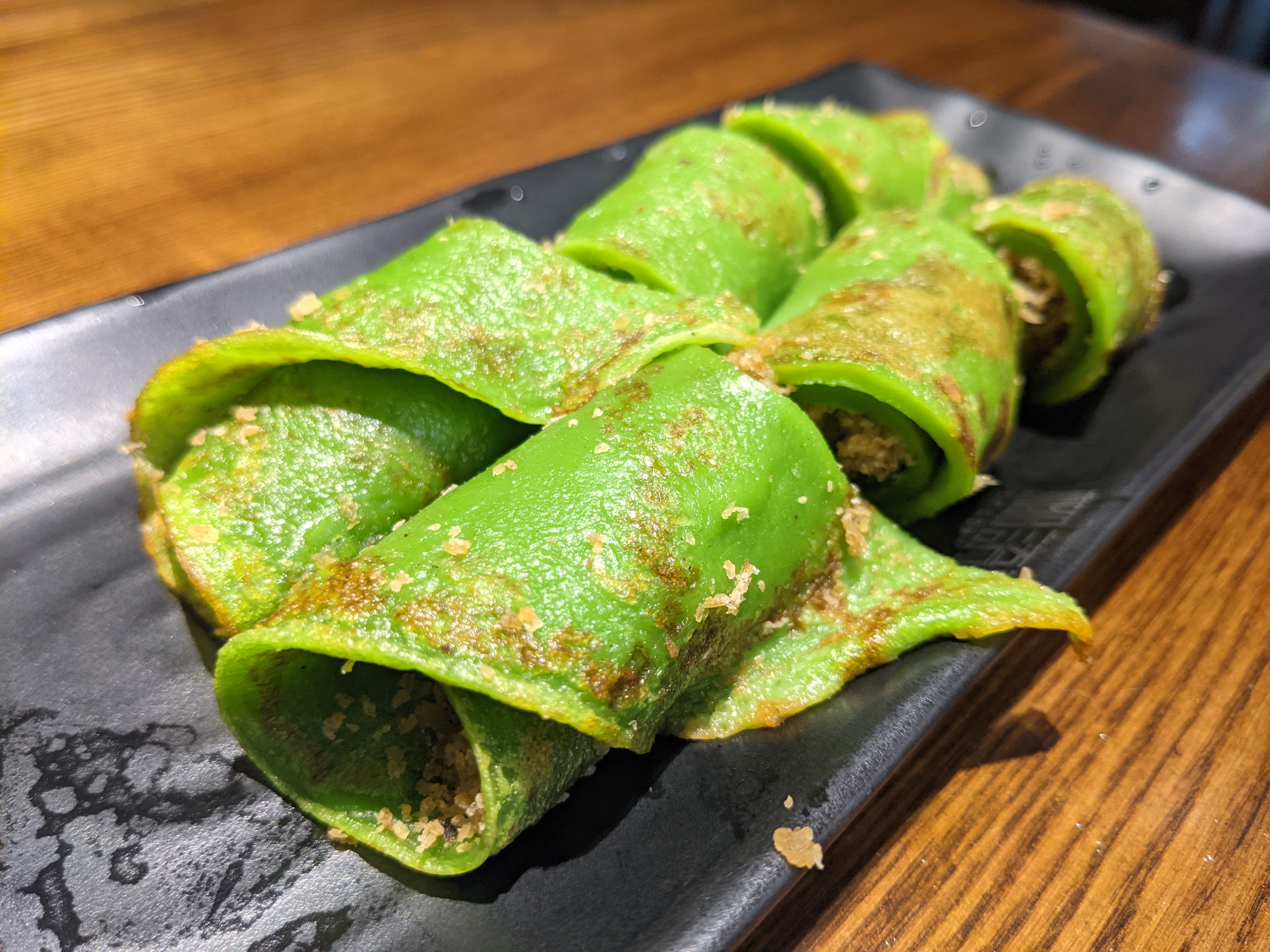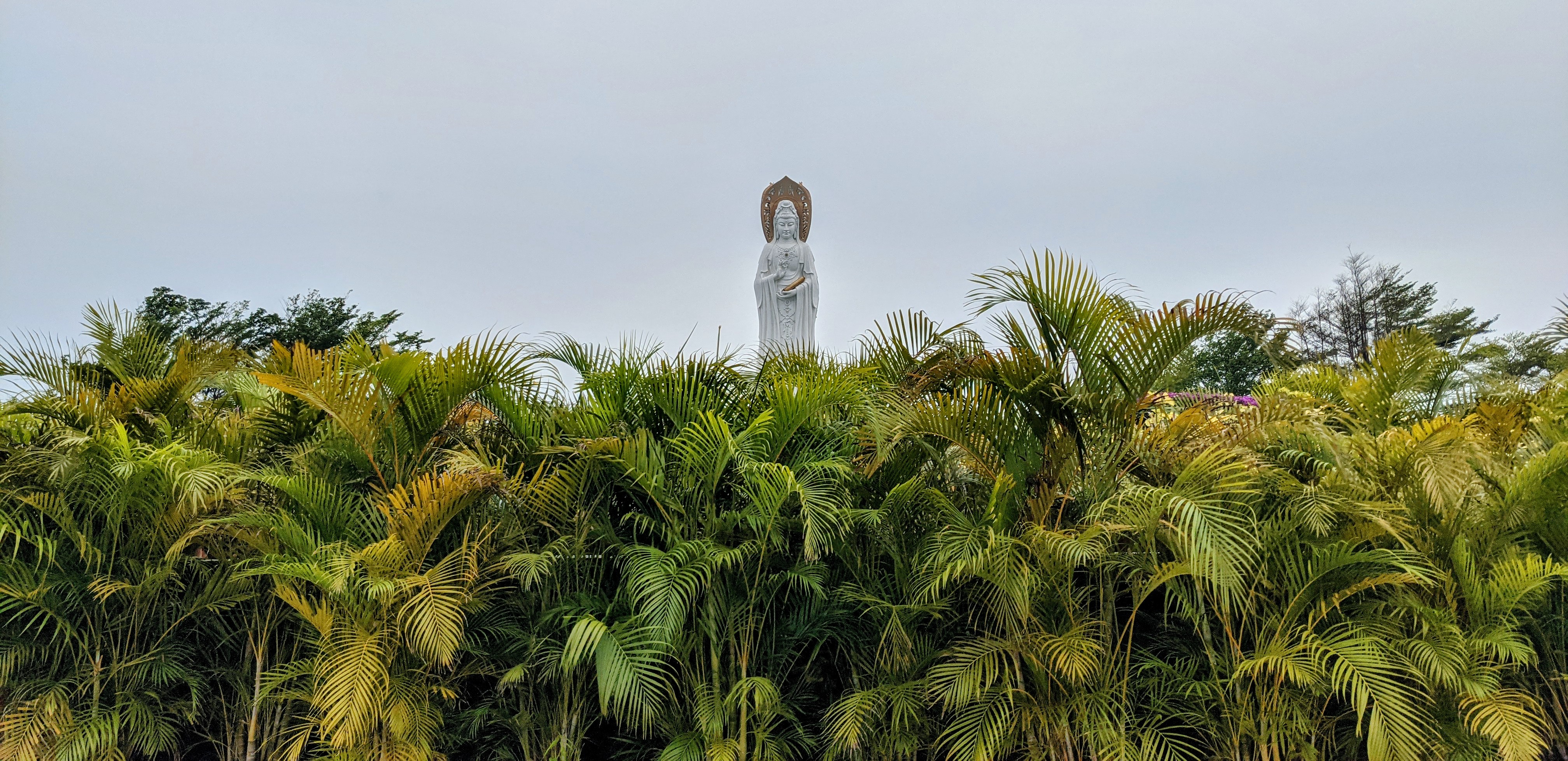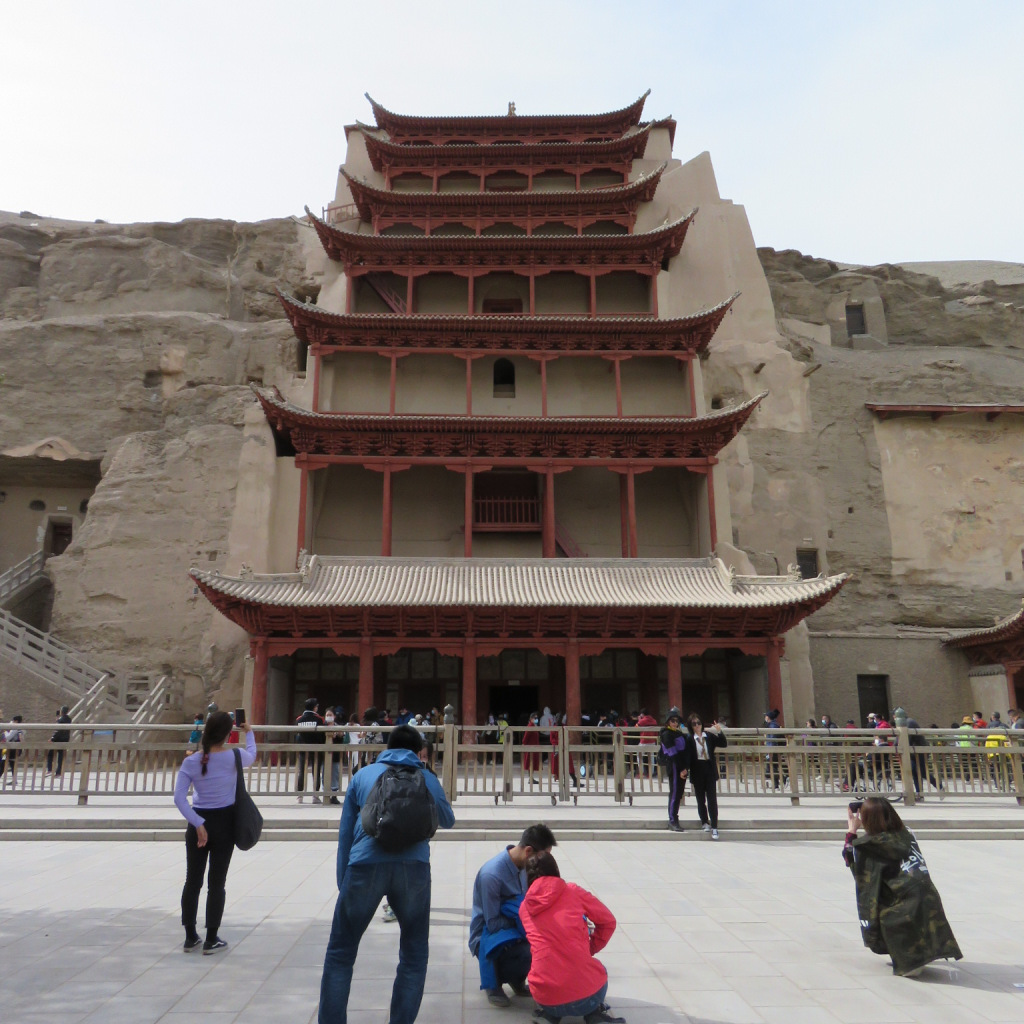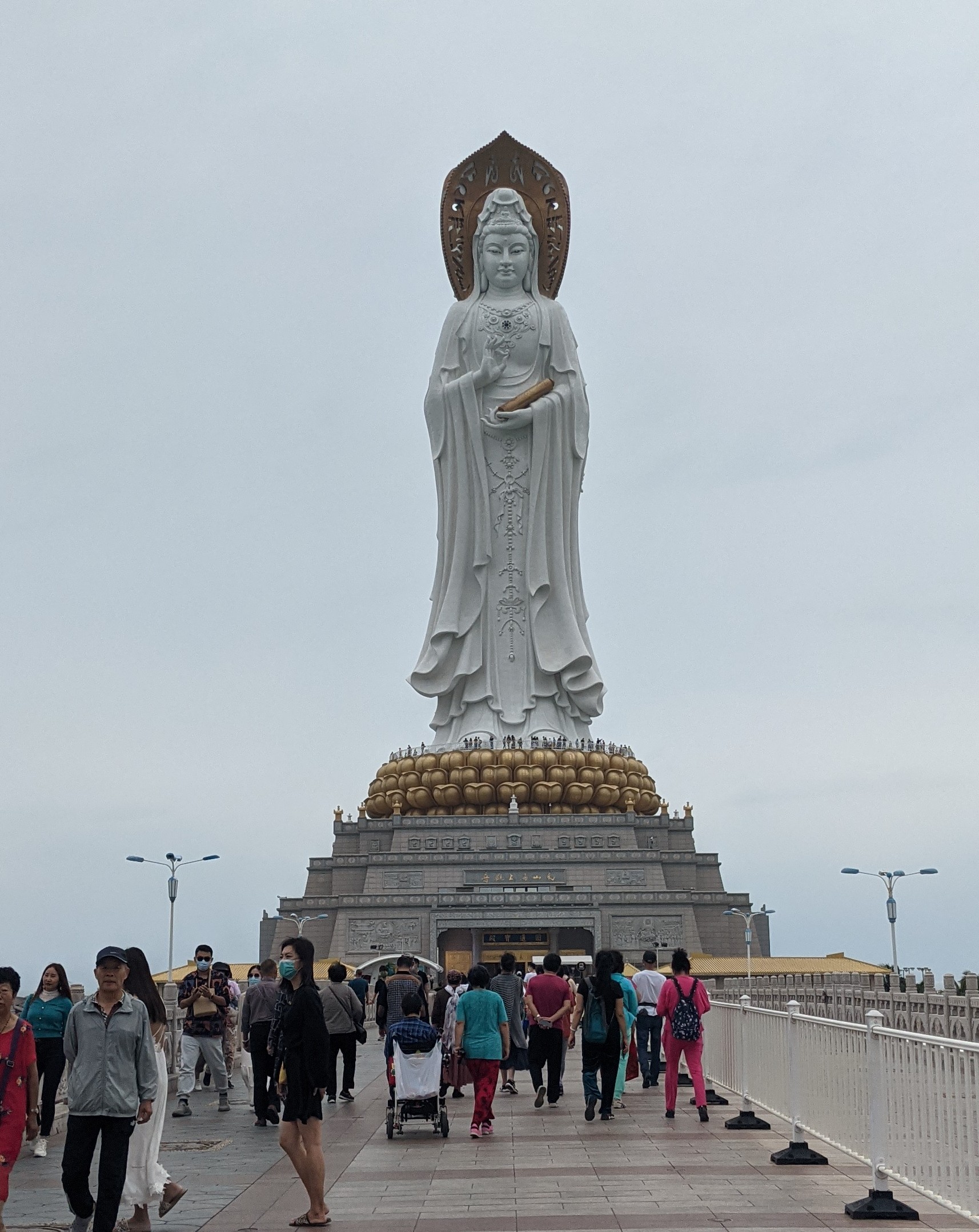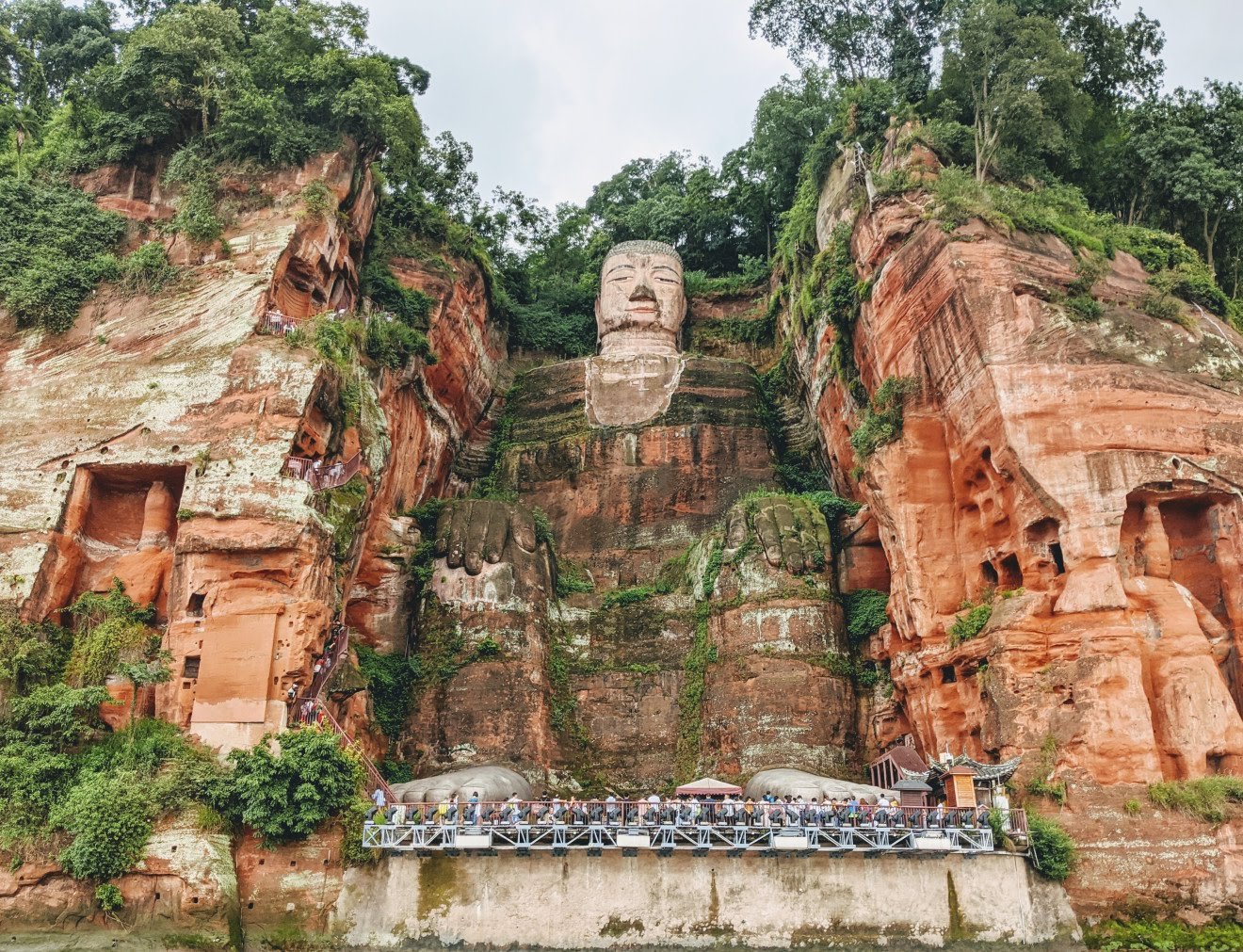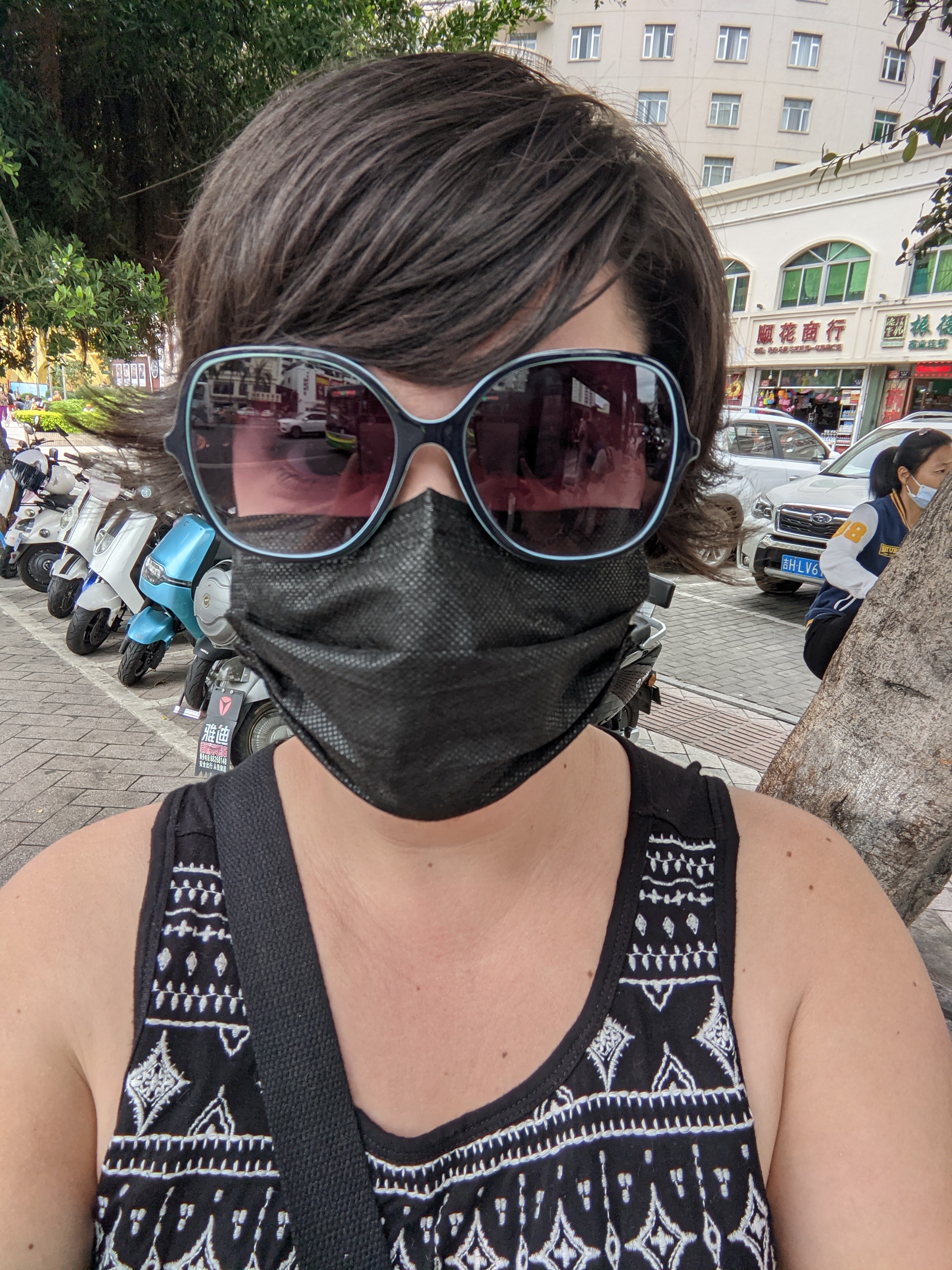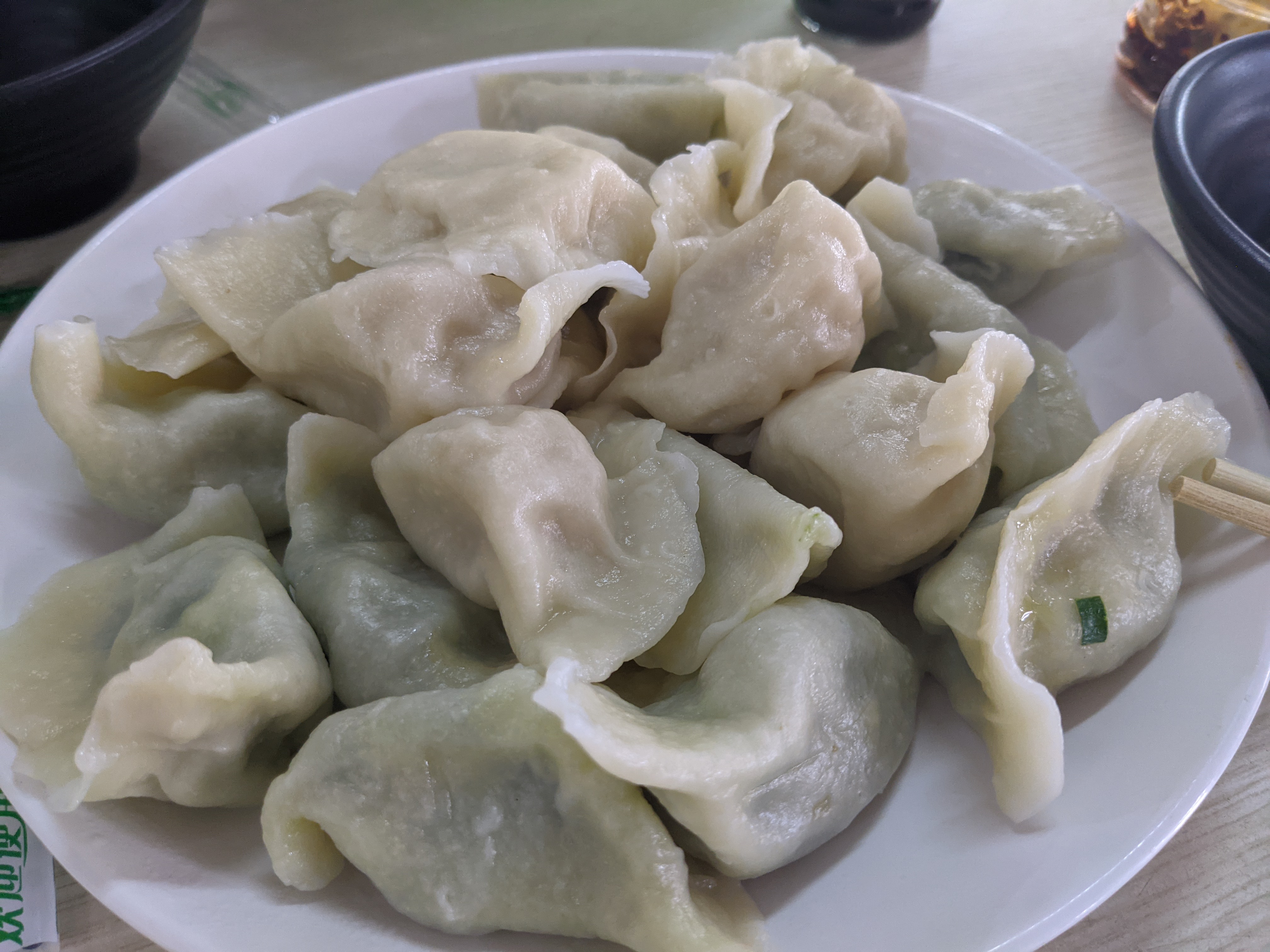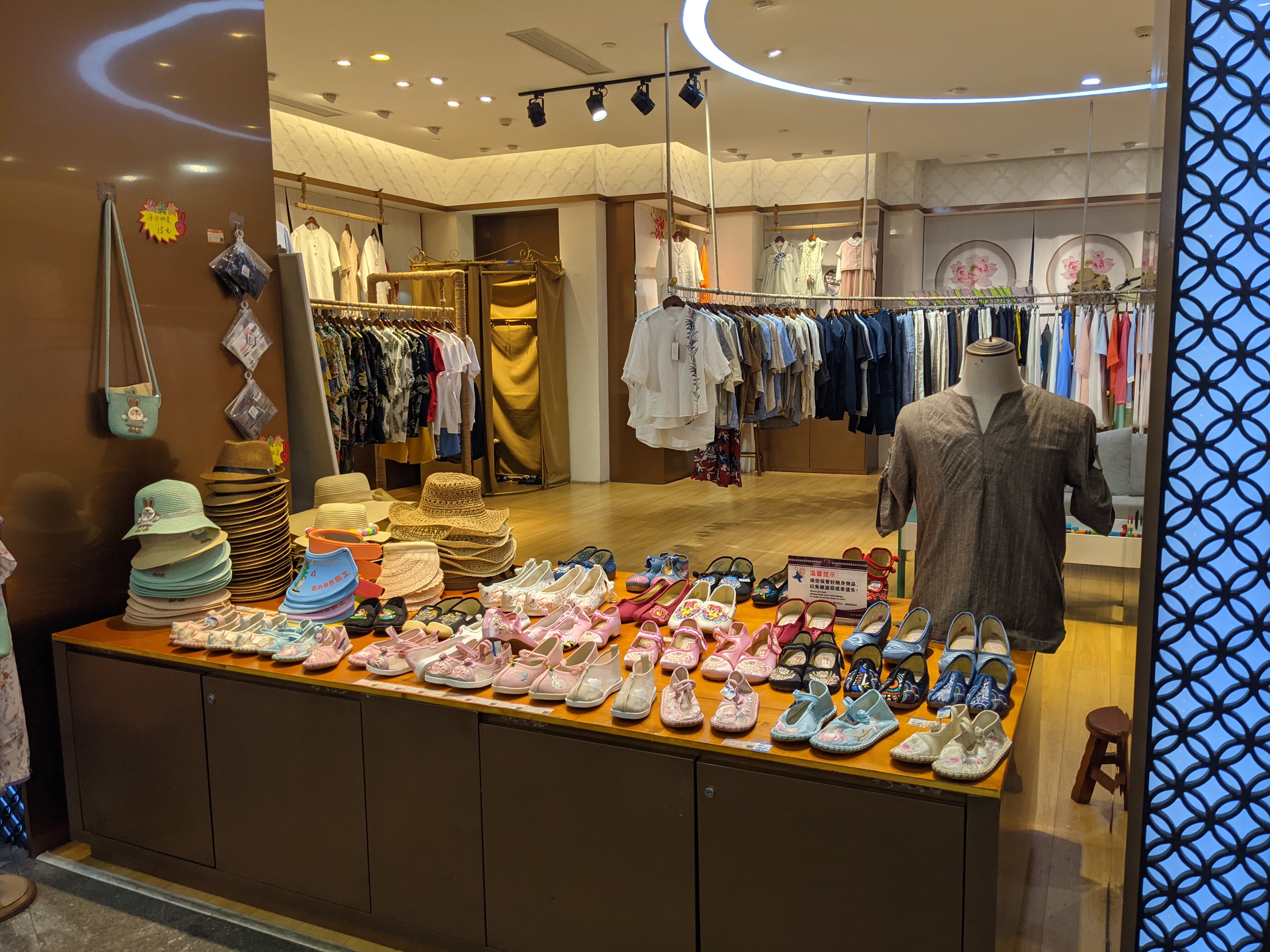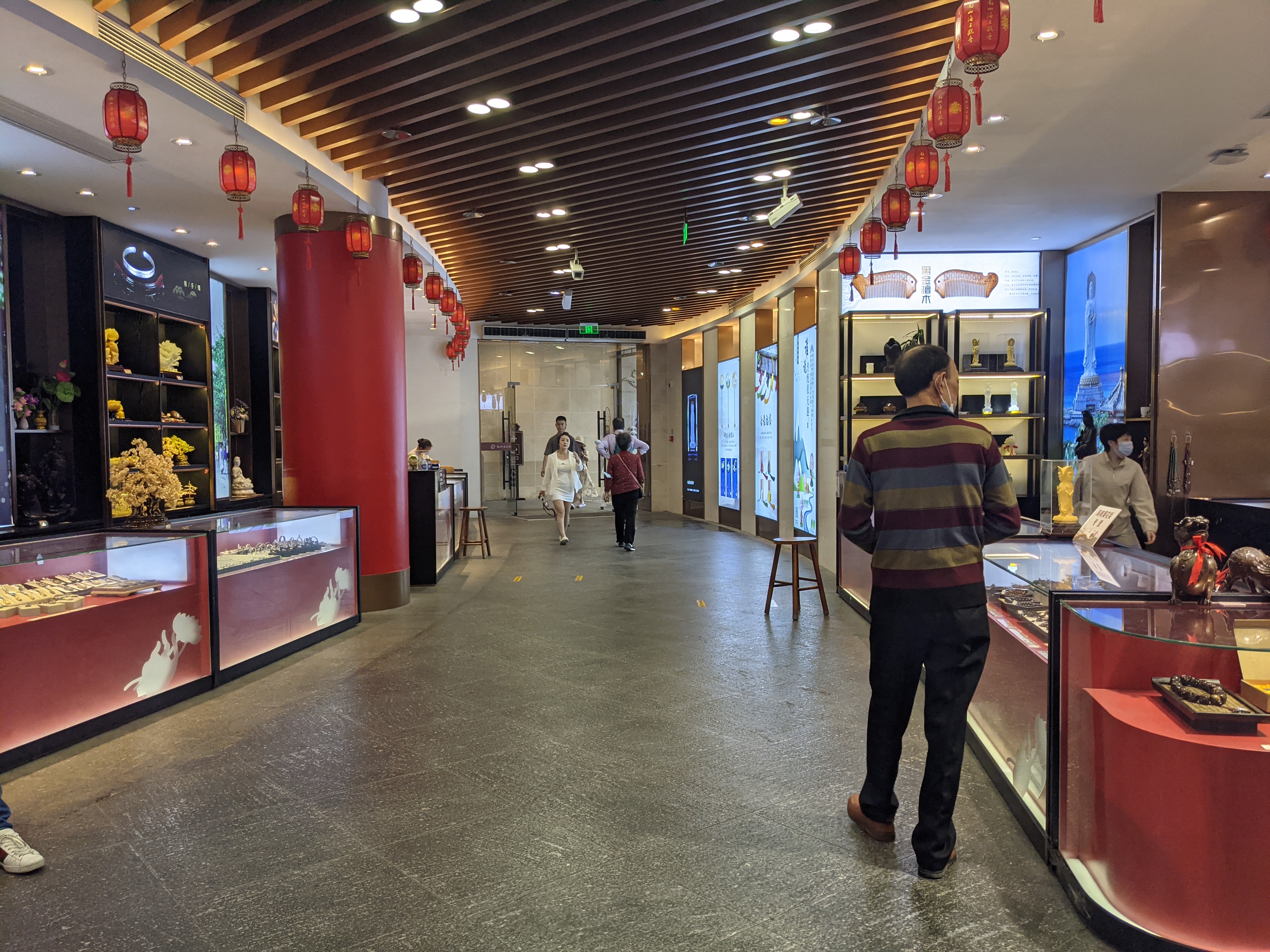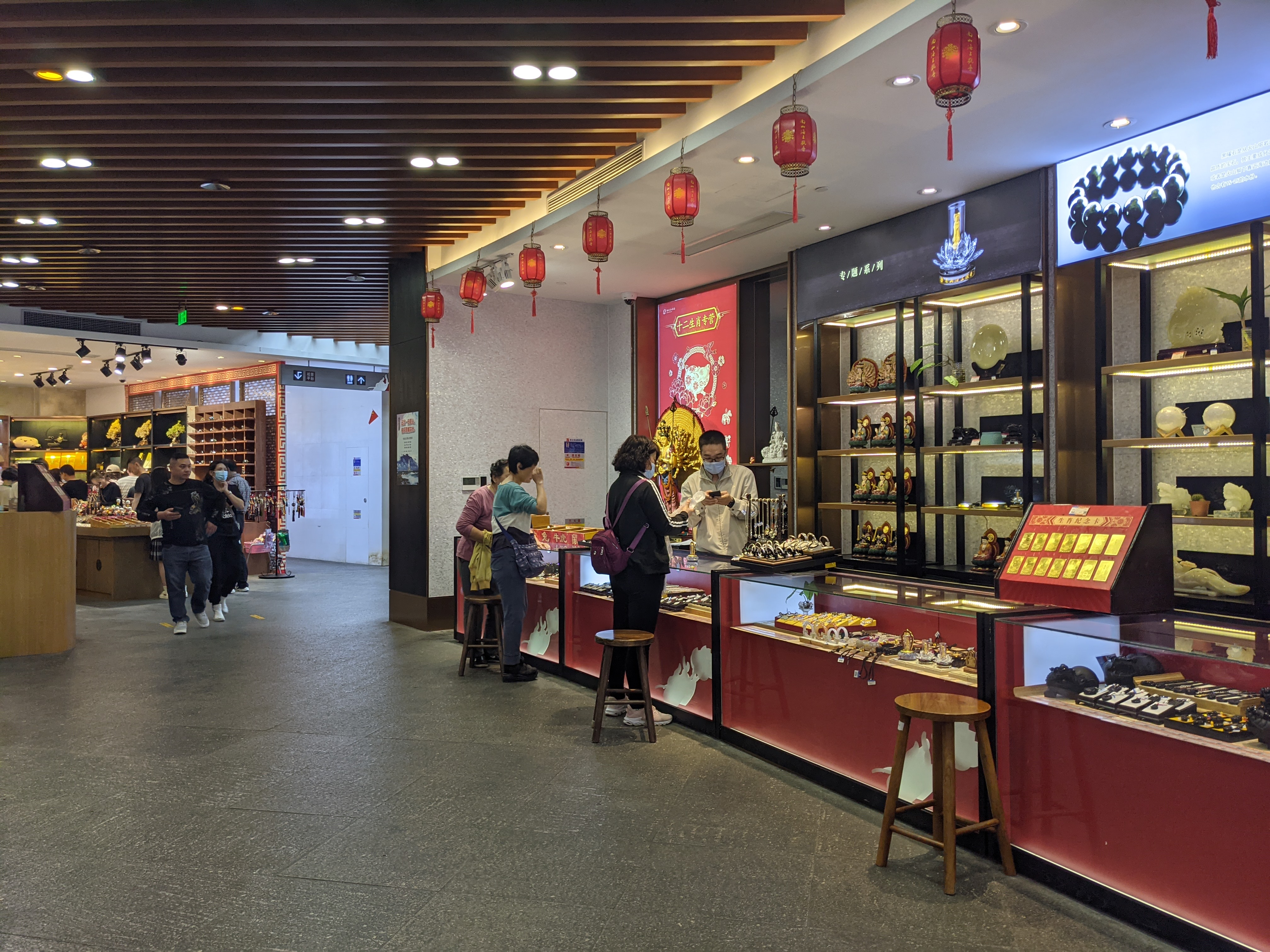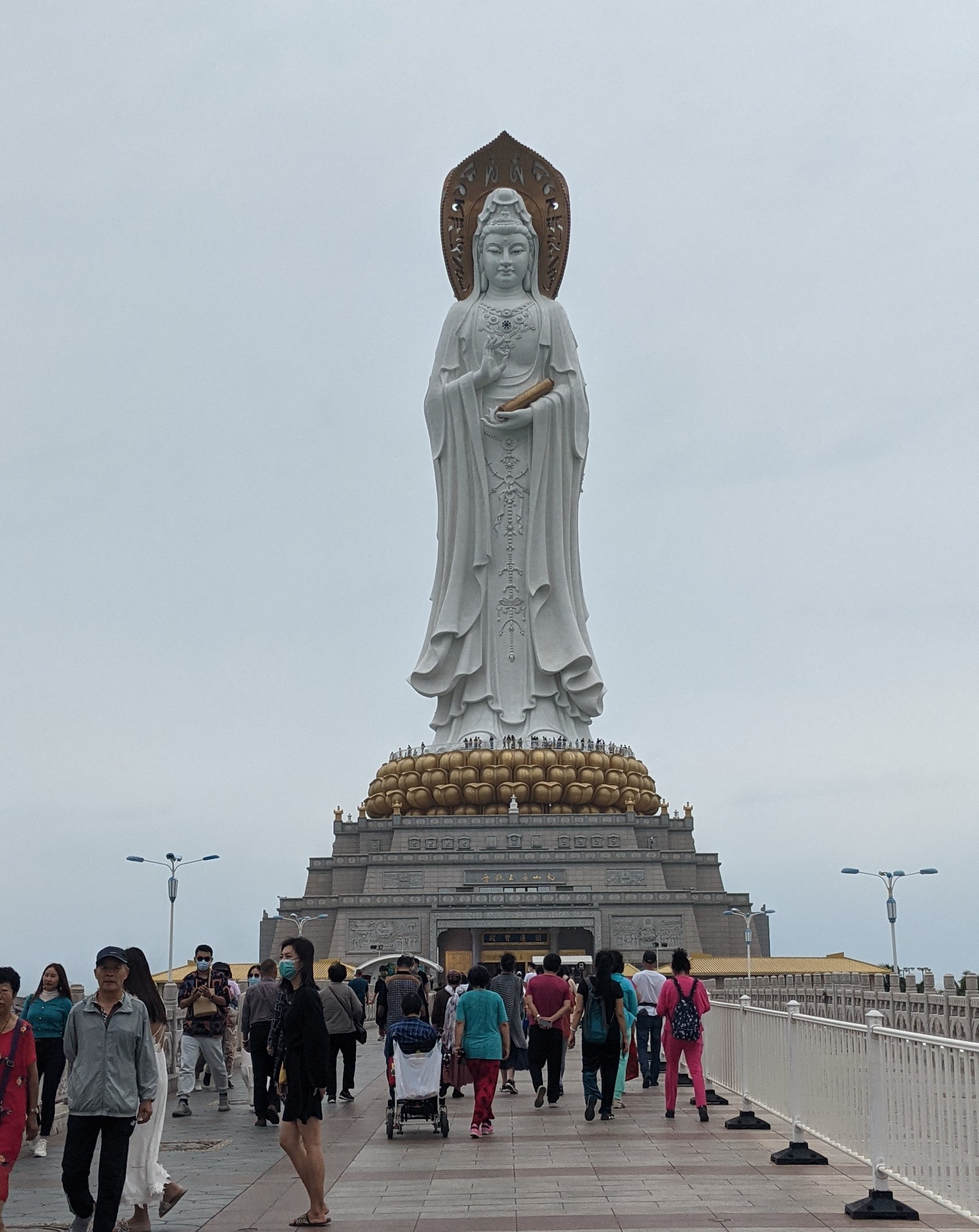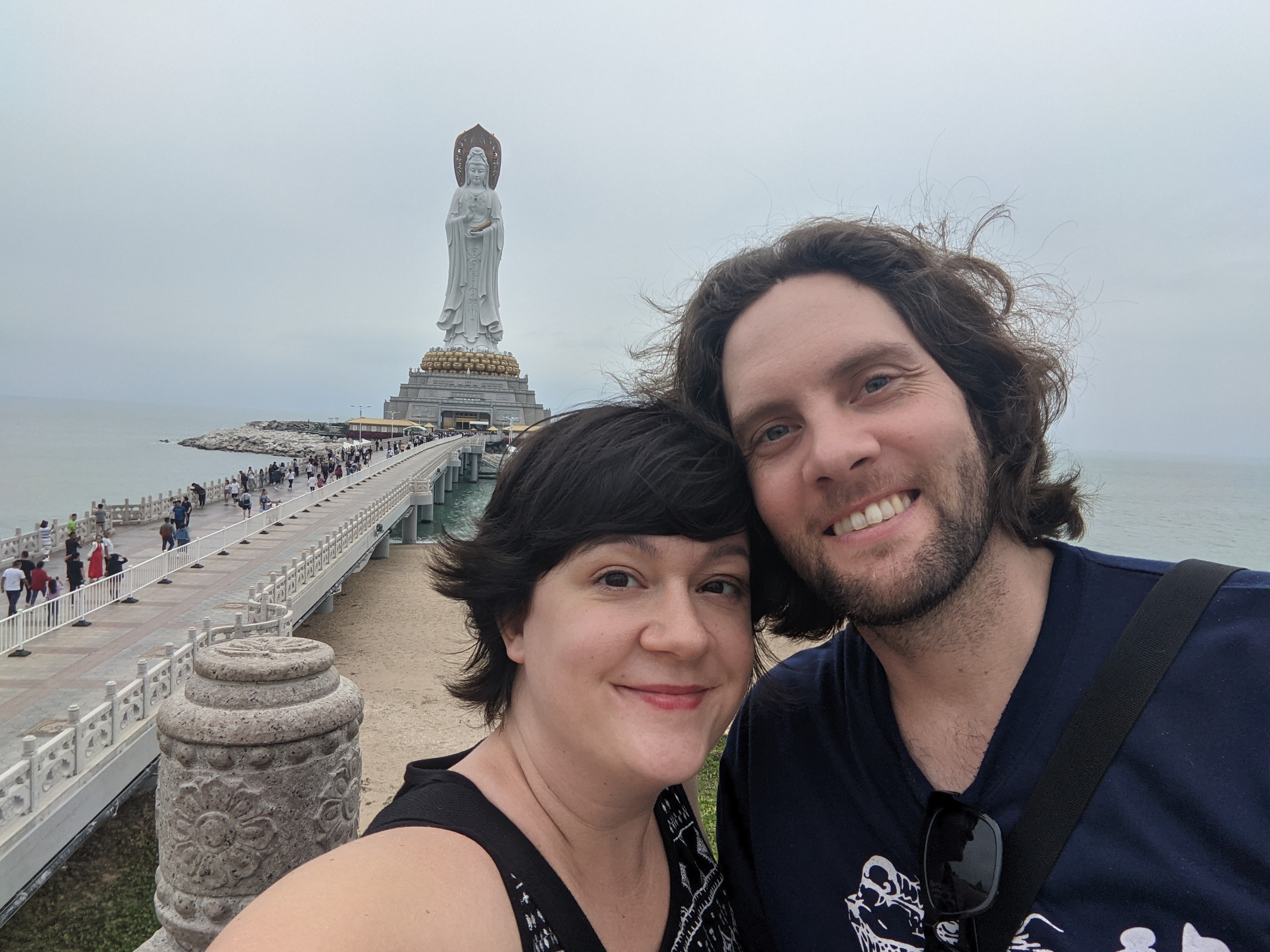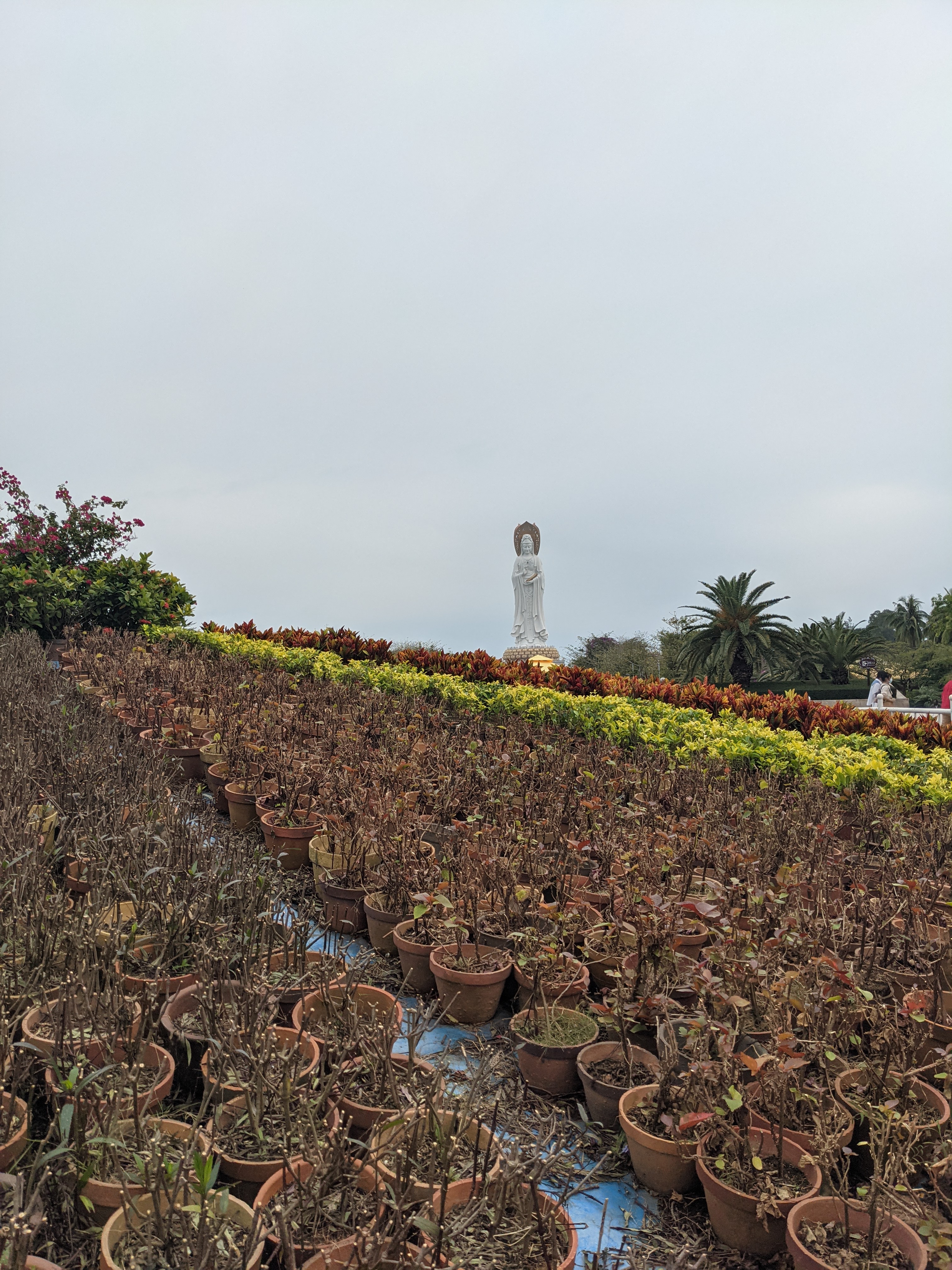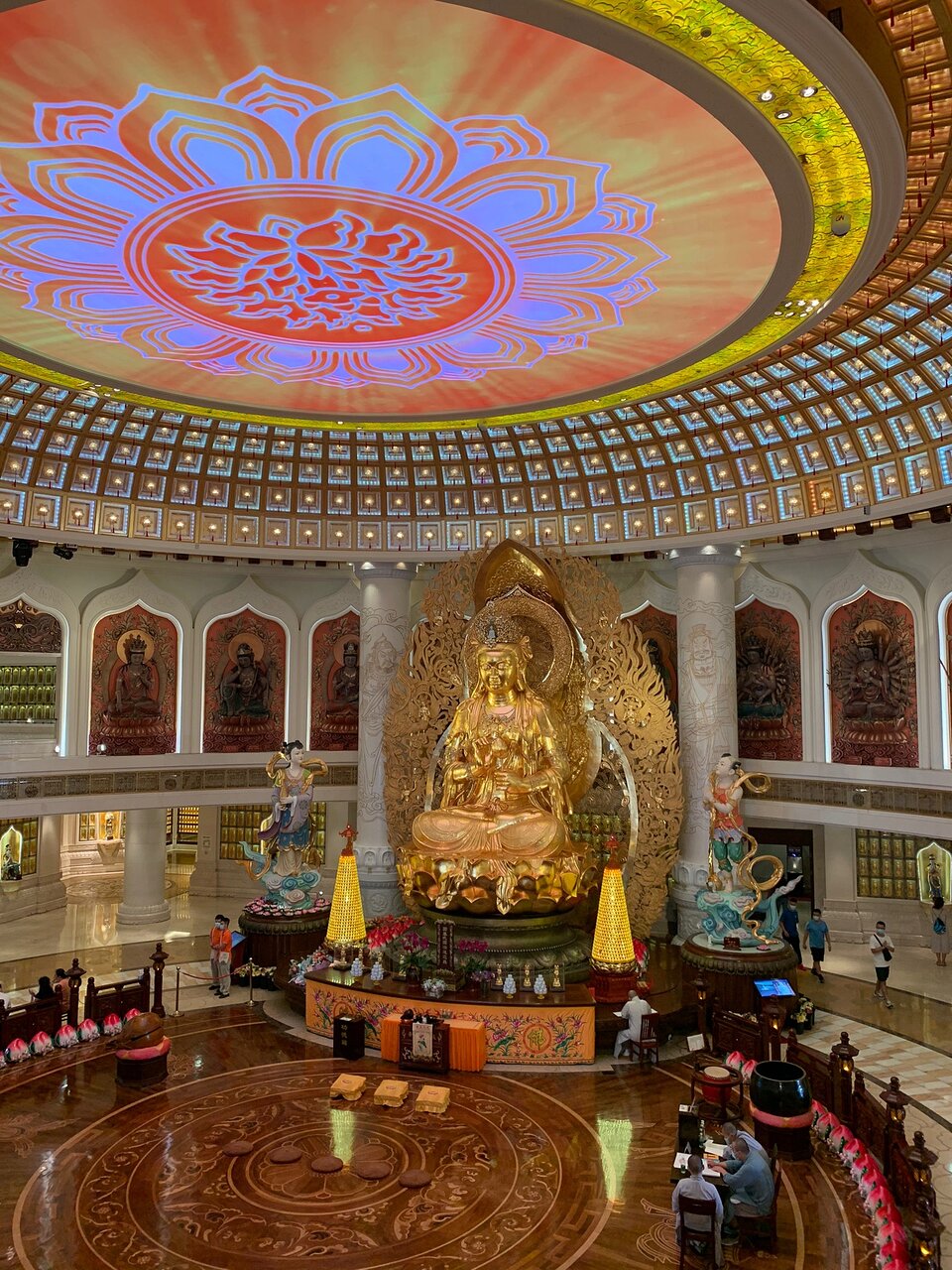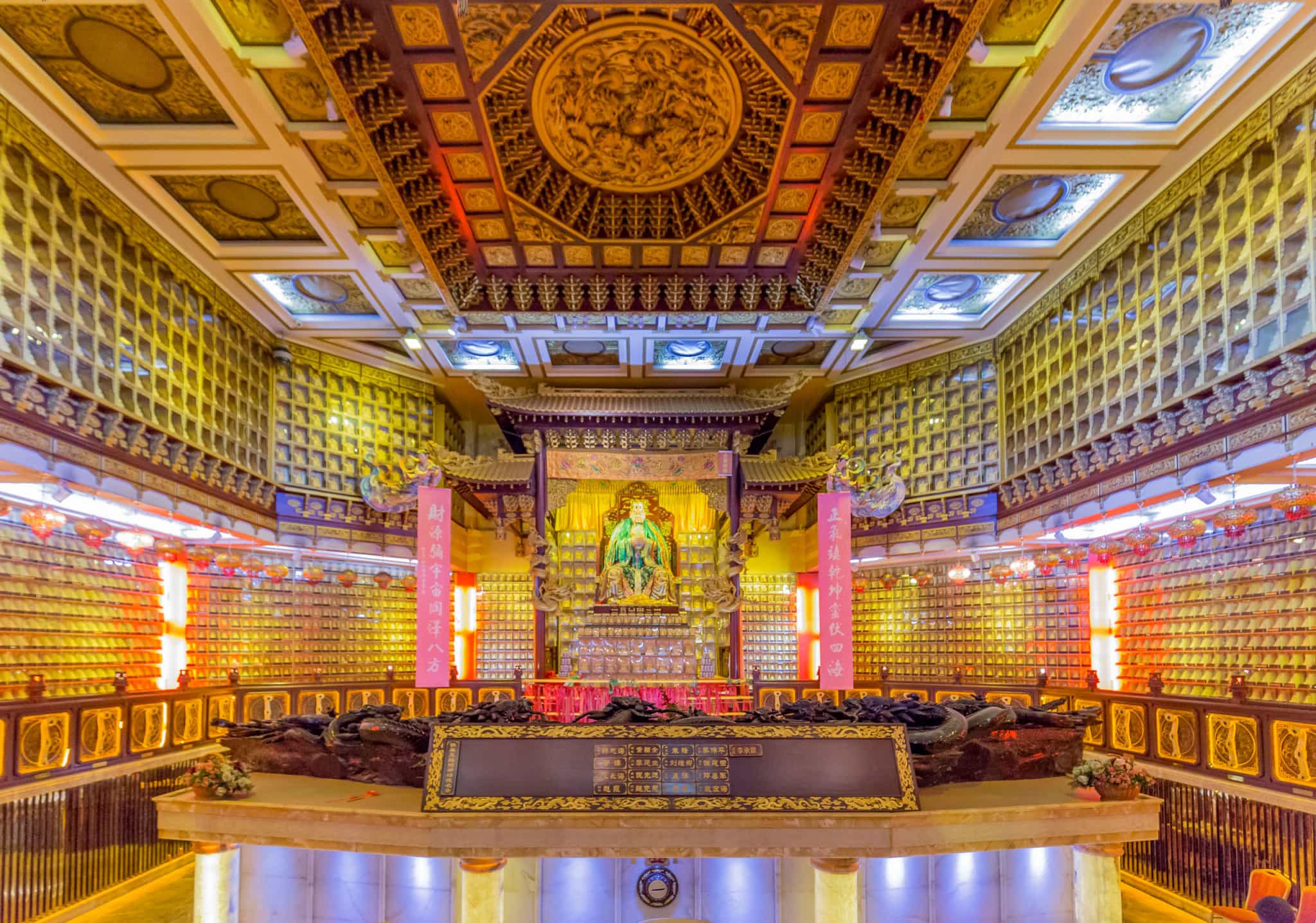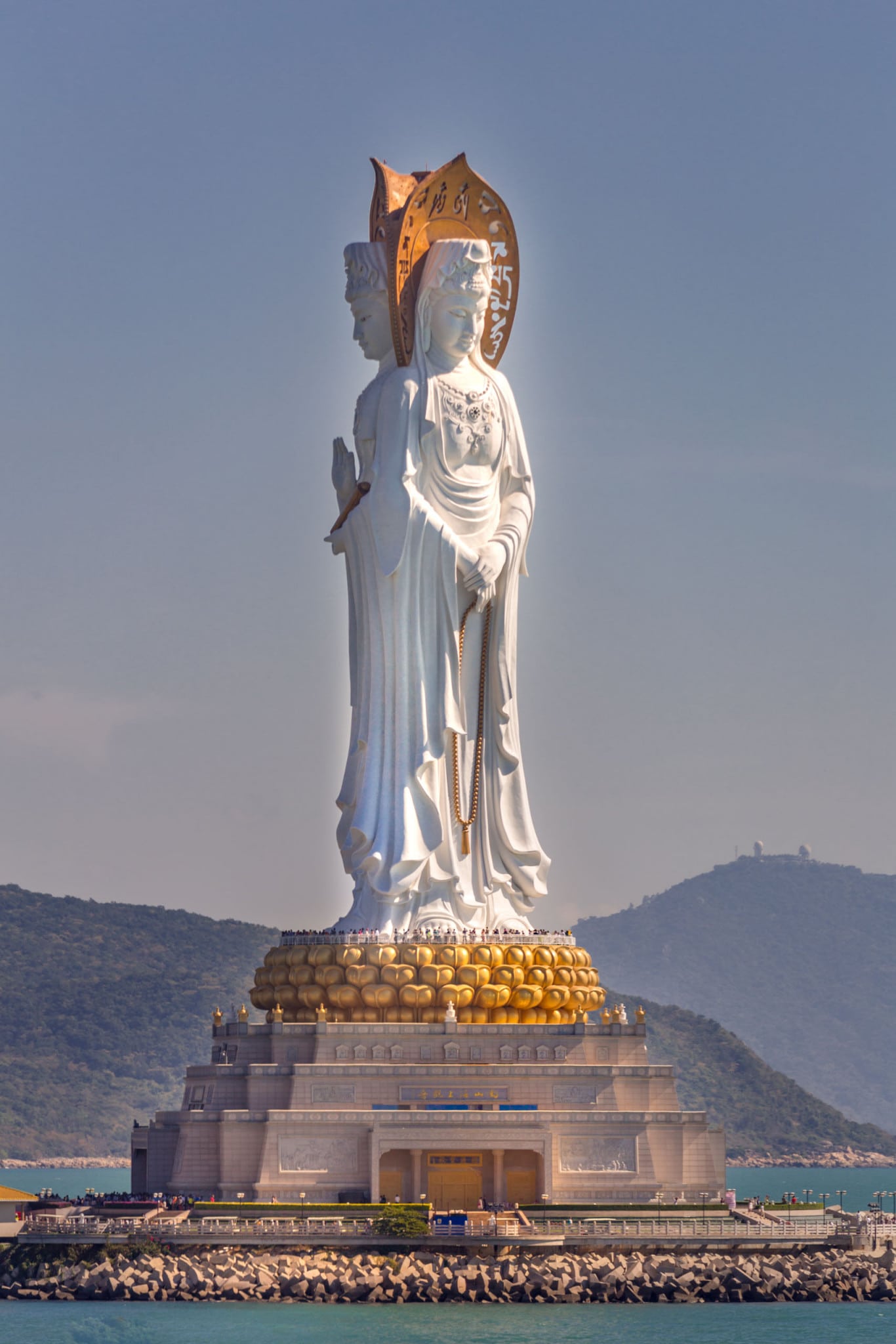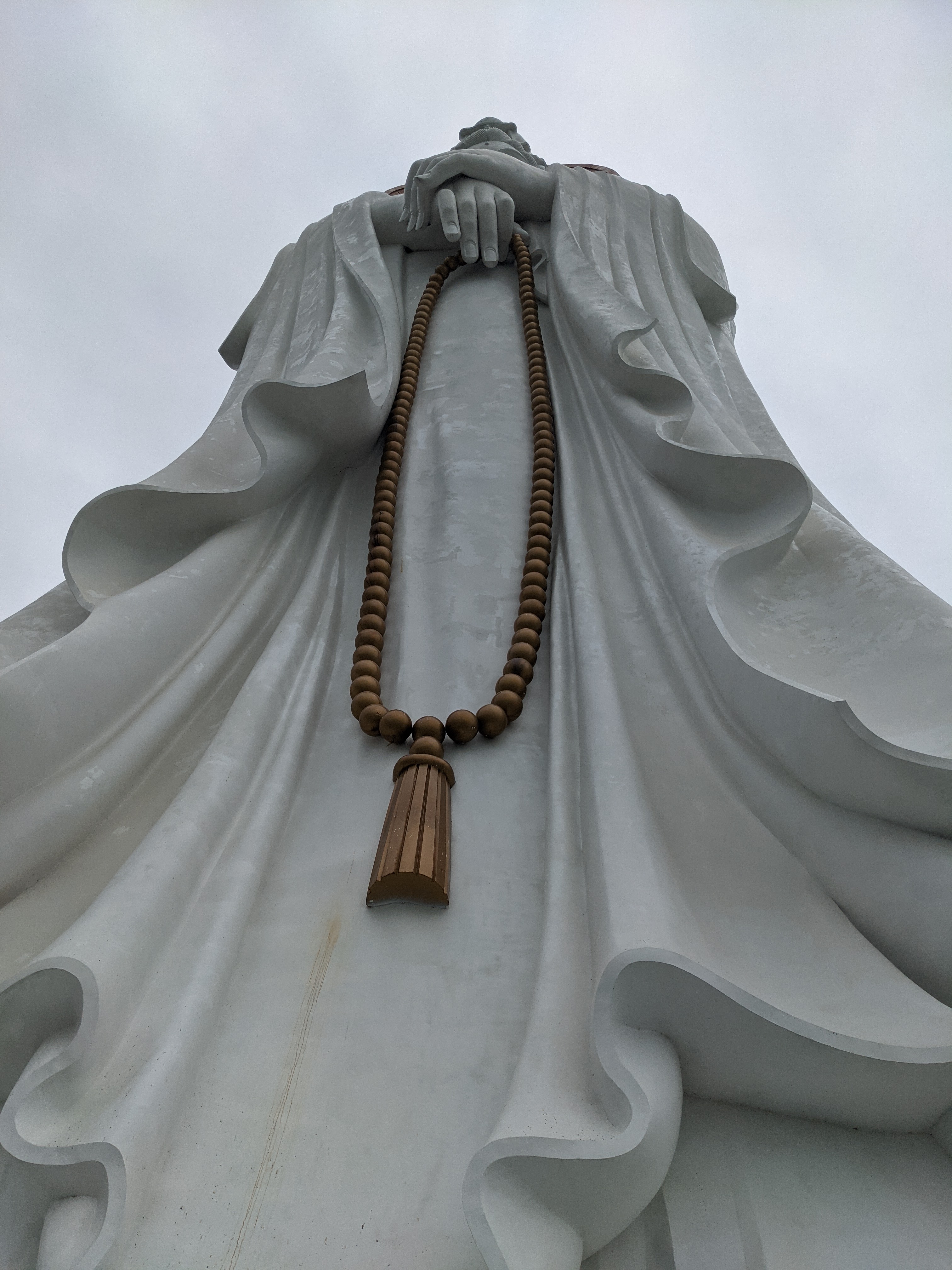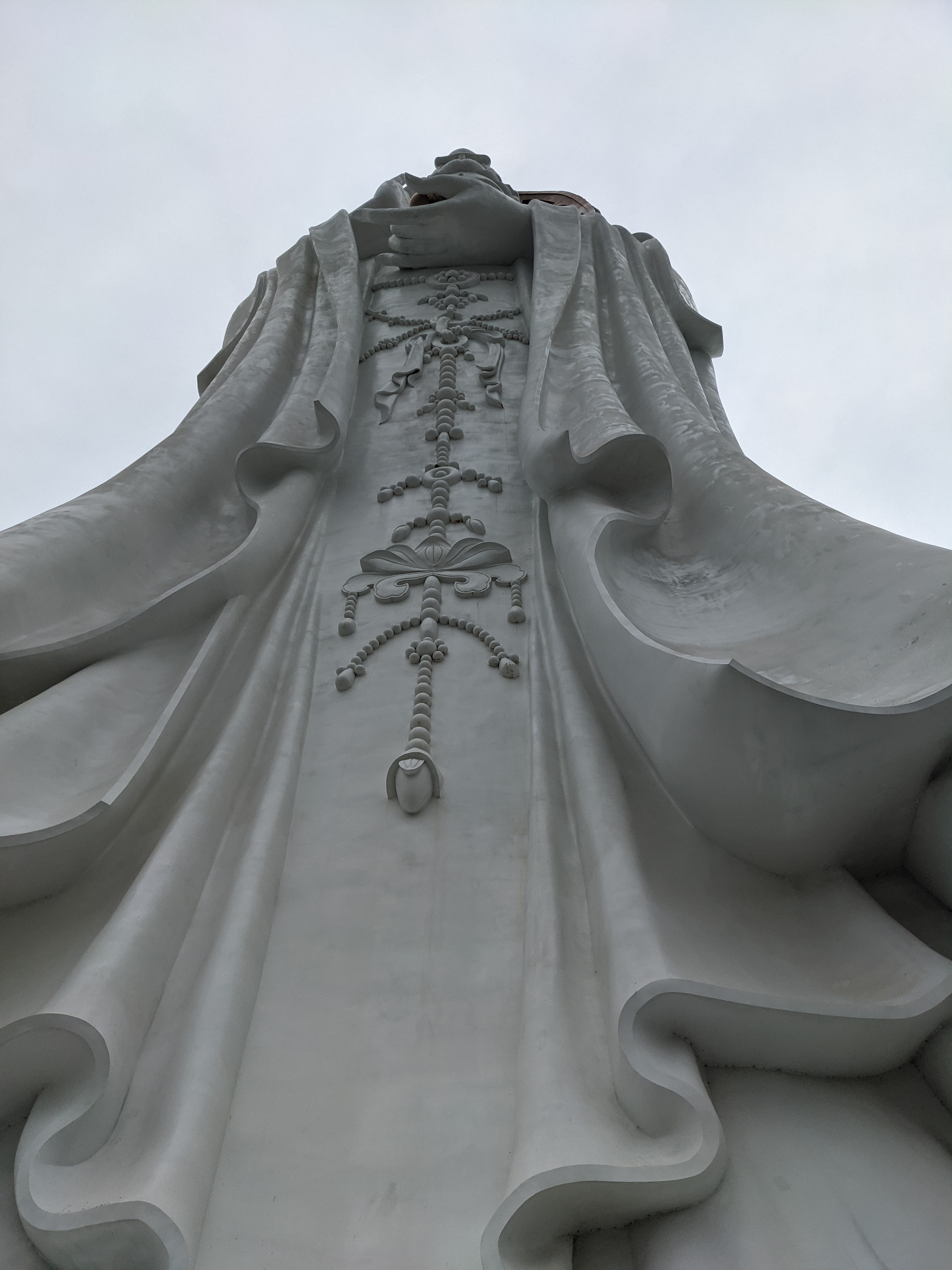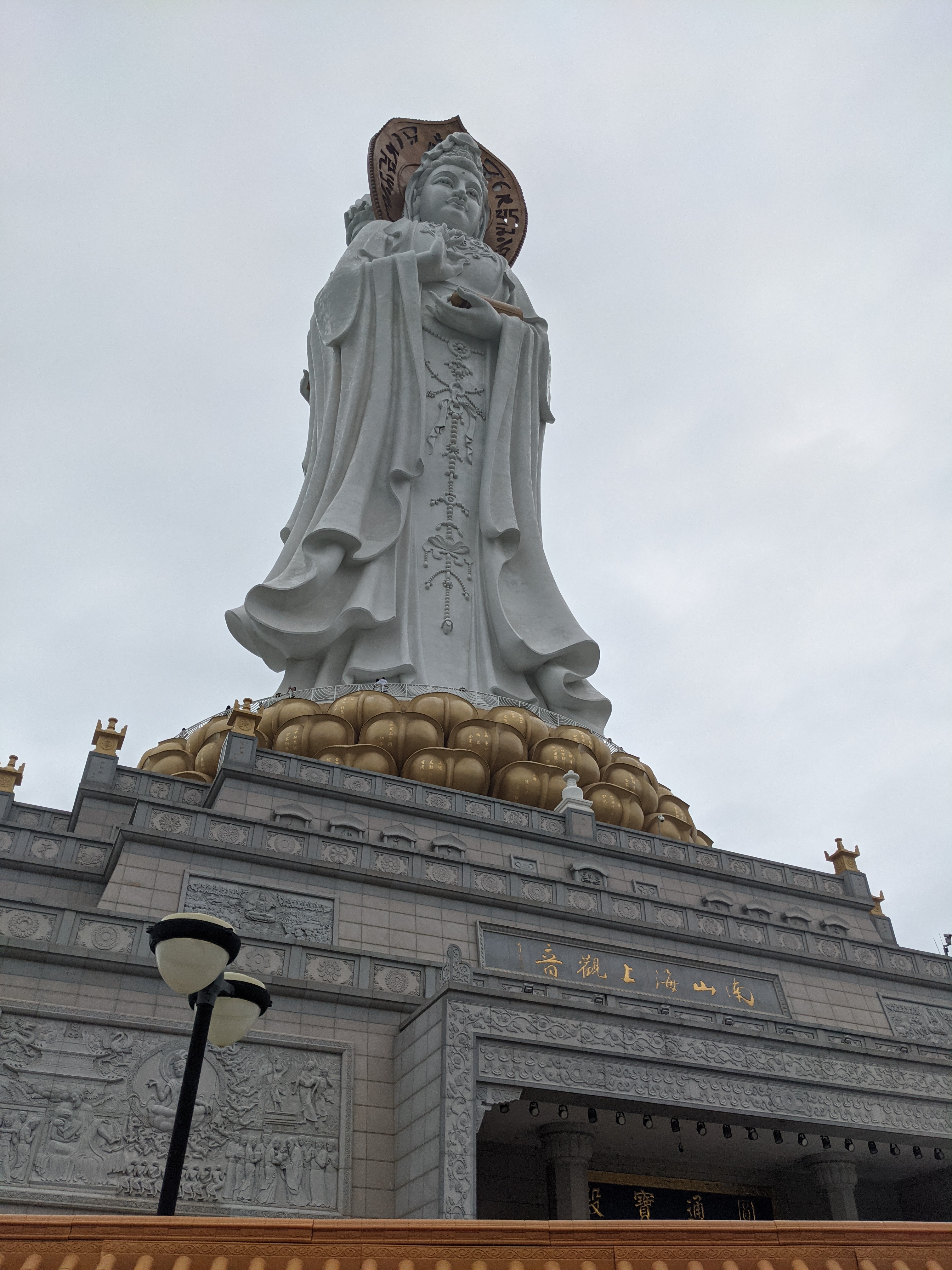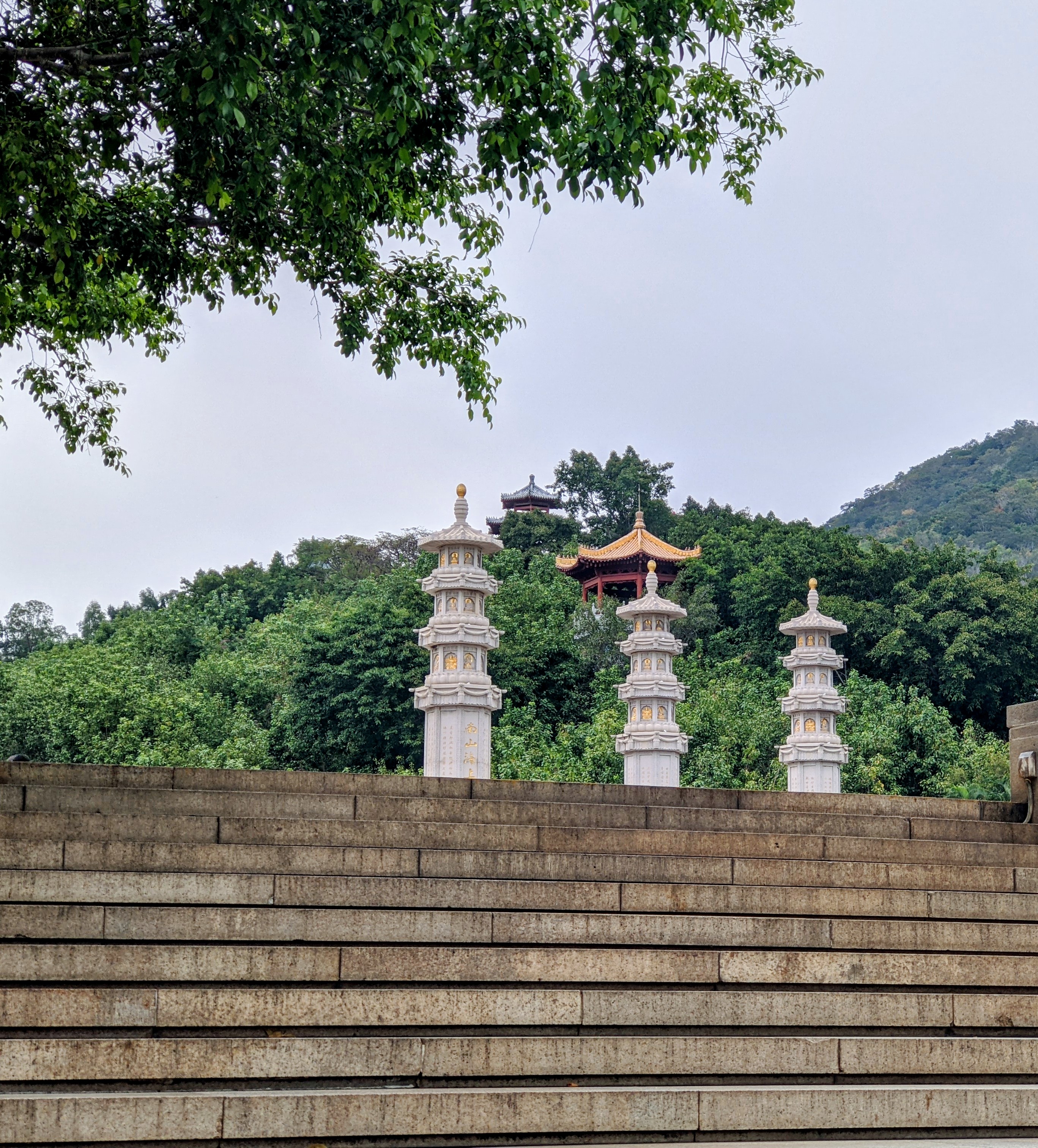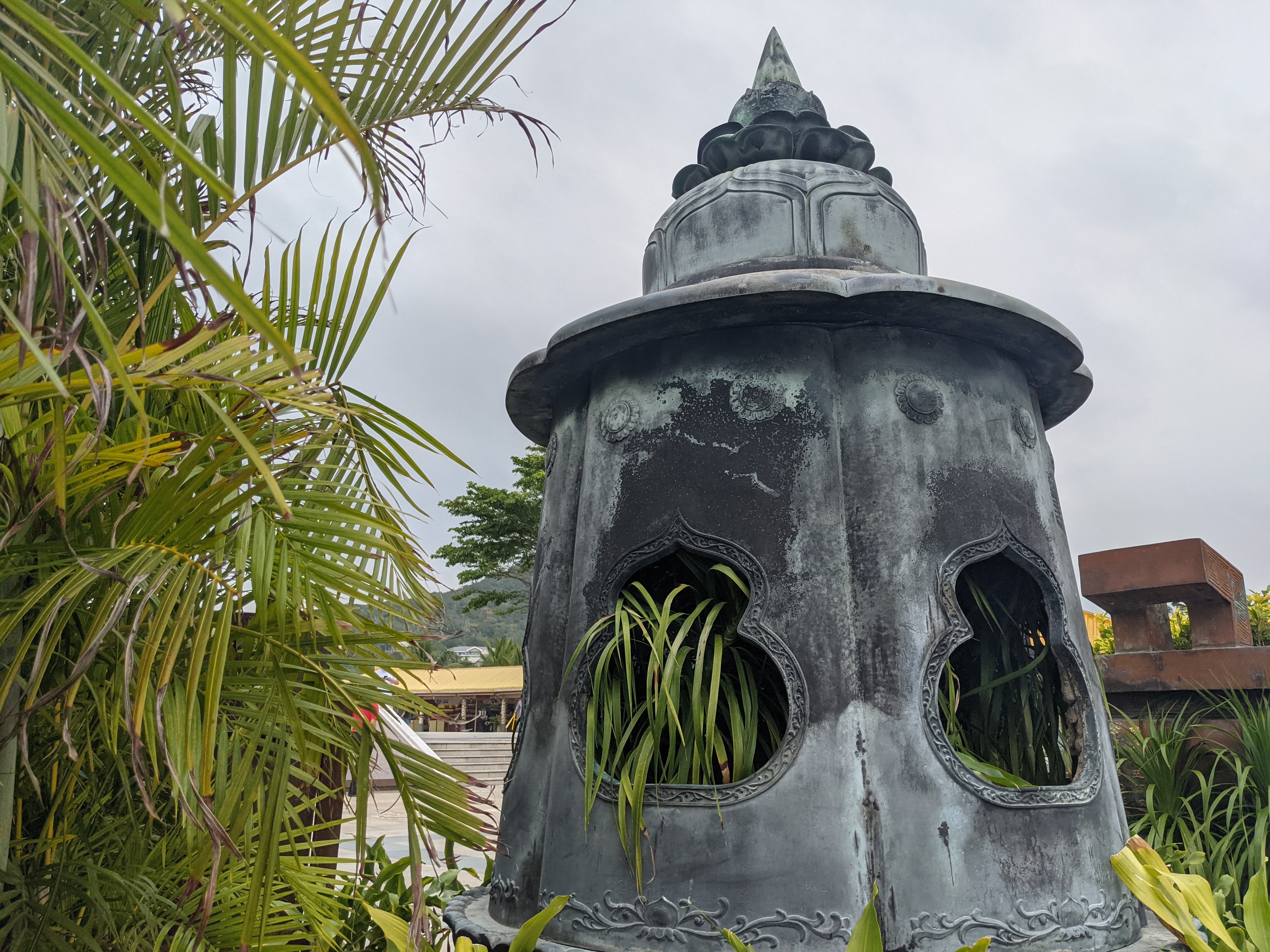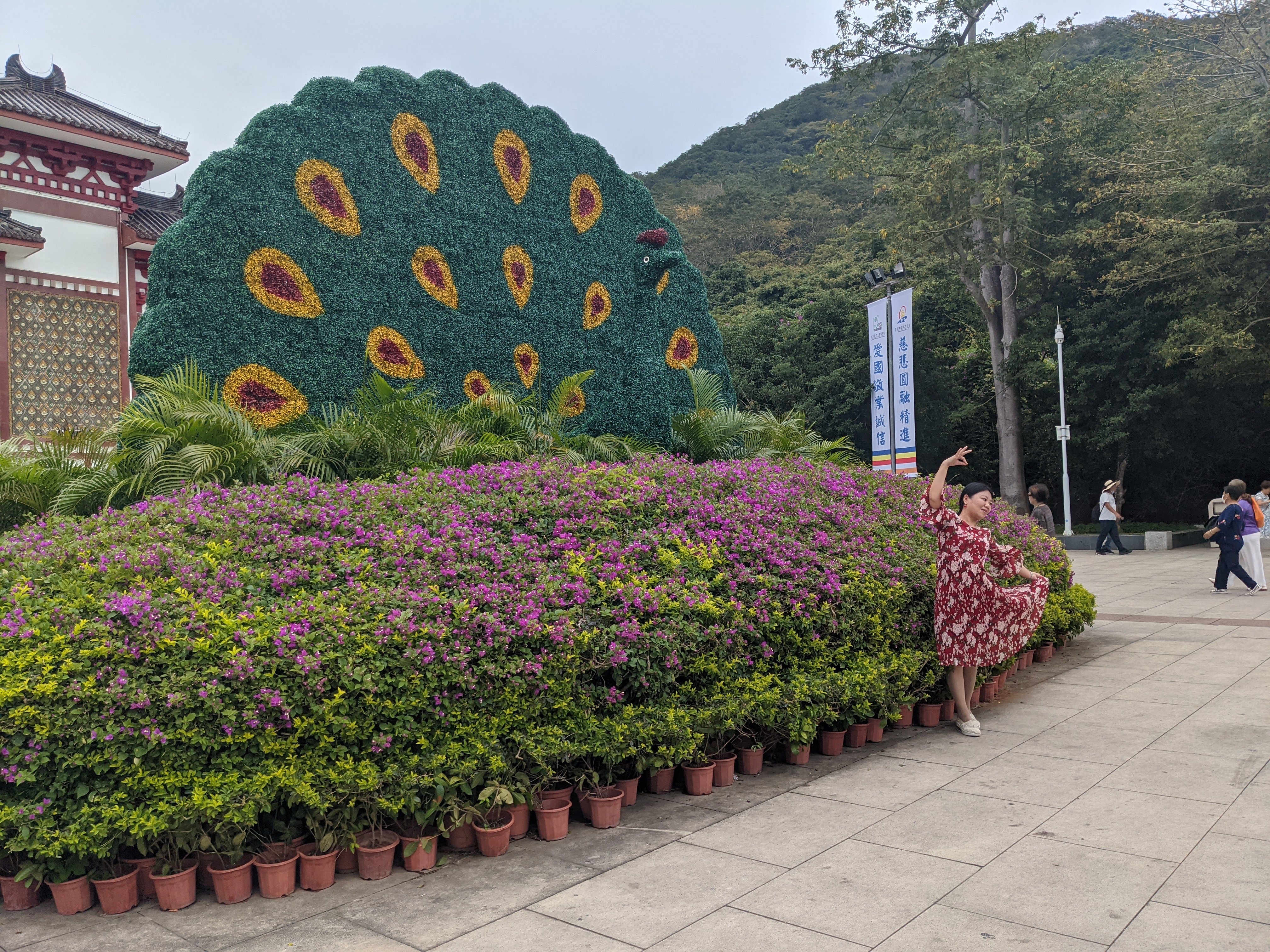We arrived in Linxia after an awful taxi ride from Lanzhou. Not only was there a bonus person in the car, (which meant Ian, Dave and I had to squish into the back), but they also added on a 55% fee for the long distance we took. We did manage to argue our way down to a 26% fee, but it was still a pretty terrible 2 hour ride anyway!
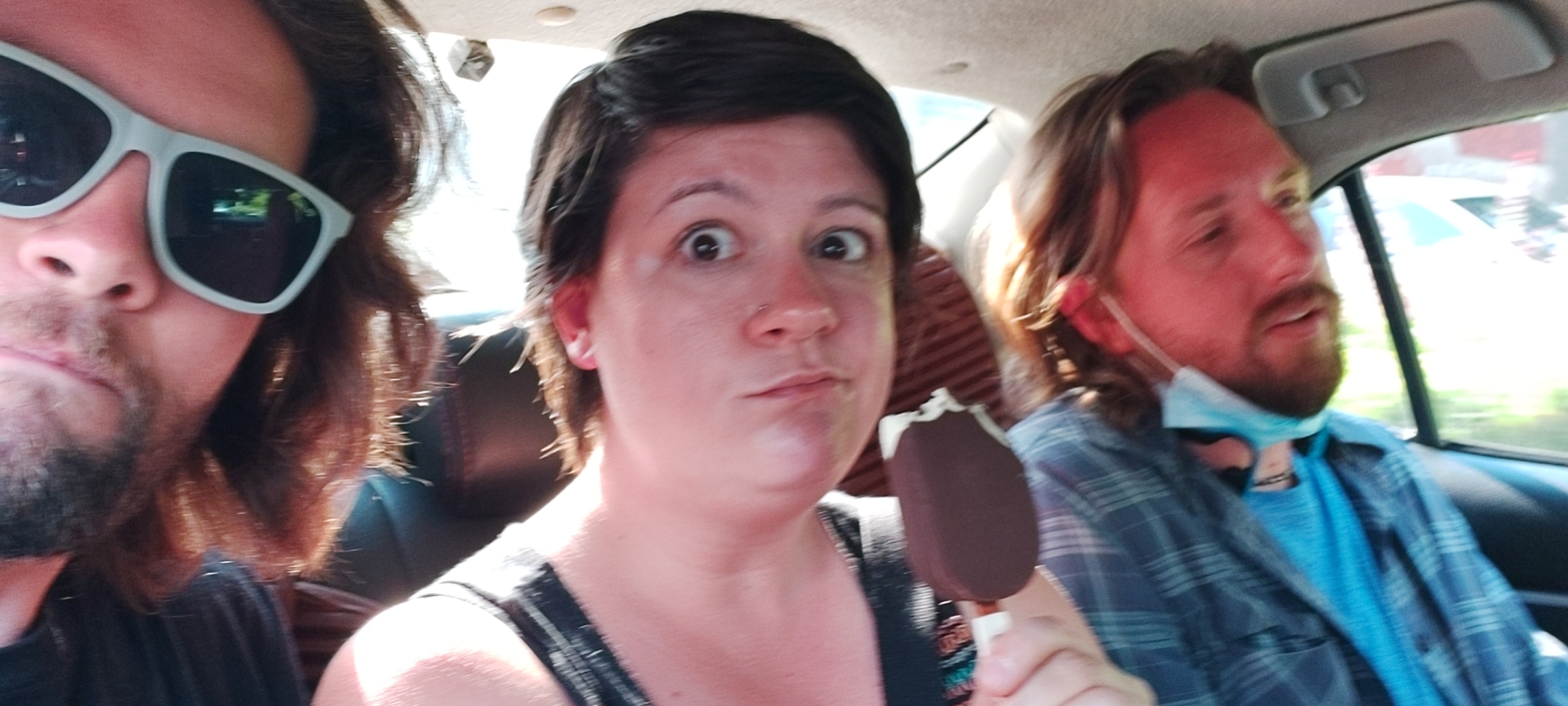
Luckily, things got much better once we arrived in Linxia. I honestly had no idea what to expect from this destination, because my friend Andy planned most of this part of this trip. I imagined it would just be a bit of a pit stop on our way to Xiahe. I was pleasantly surprised to learn that this small city of 240,000 people actually has a lot to offer. We met so many lovely people there, so I will organize this post with the 4 people who made this trip memorable for us.
Fan-Girl
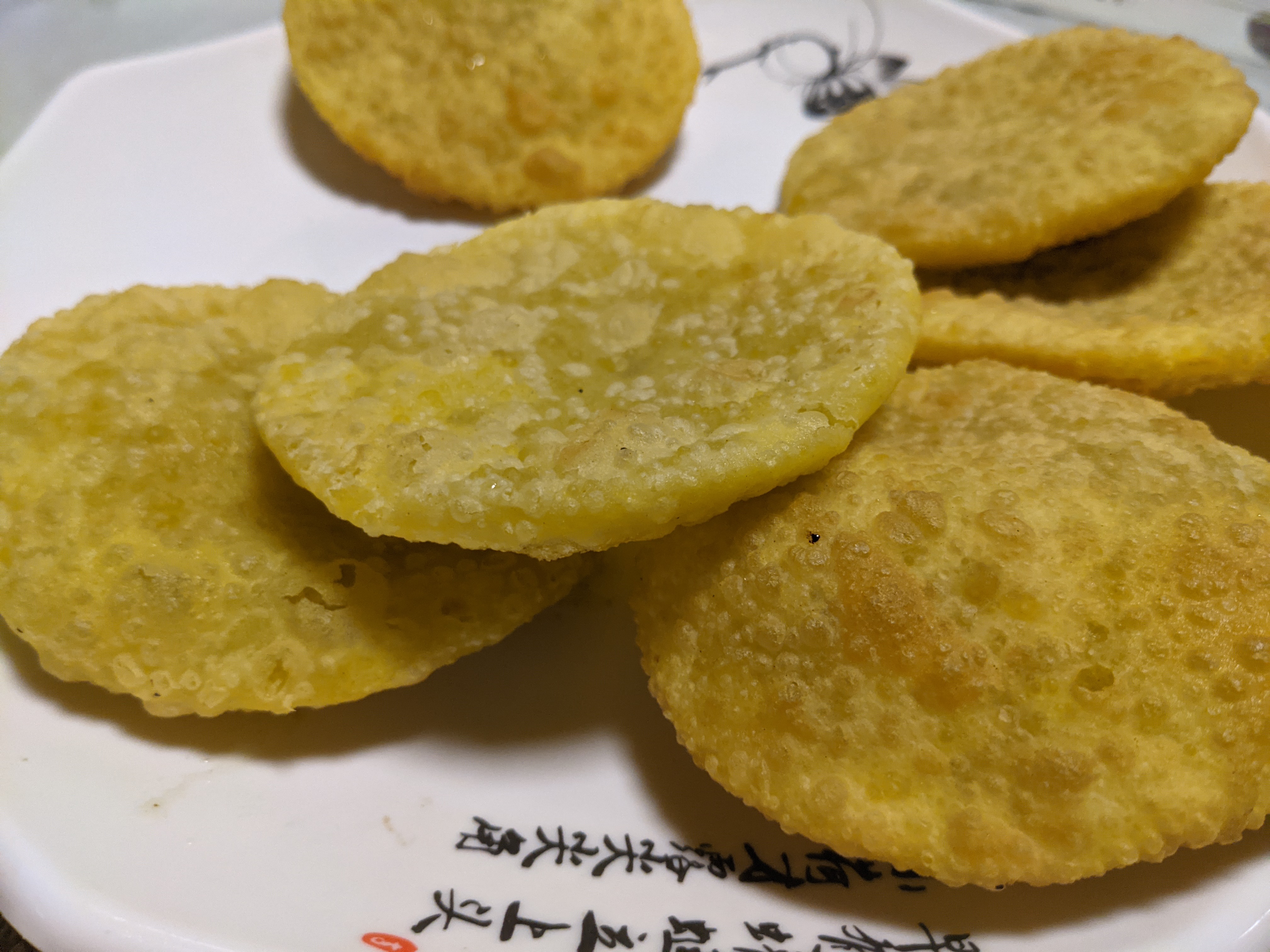
While we were looking for a nice place to have dinner, we enjoyed the sights of Linxia’s tourist area. We came upon one restaurant that caught our eye because there was this funny kid doing Gong-fu, while his sister (?) did traditional Chinese dancing with a fan. The menu looked good, and they had a cute shtick, so we went in.
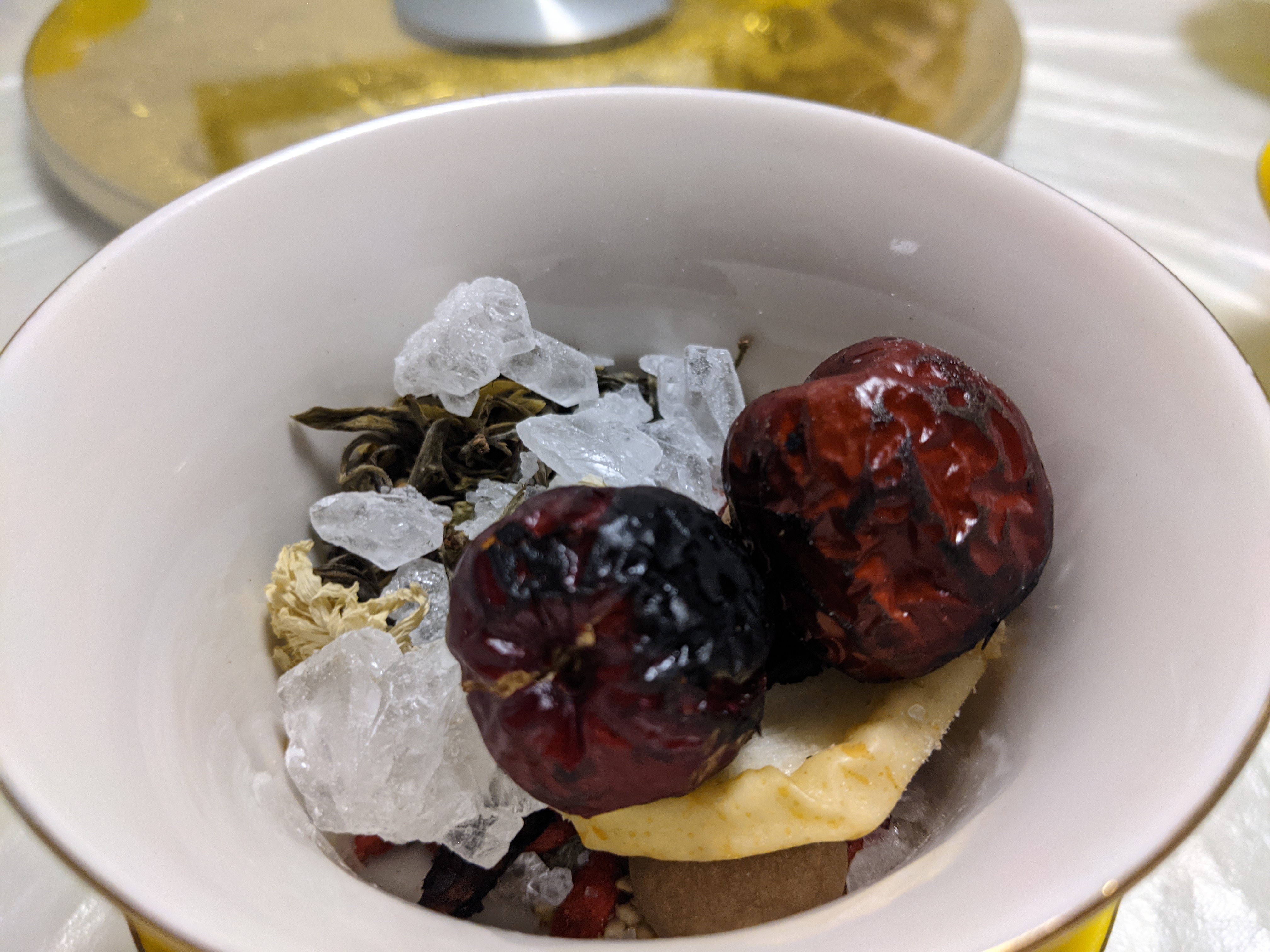
They served us tea first 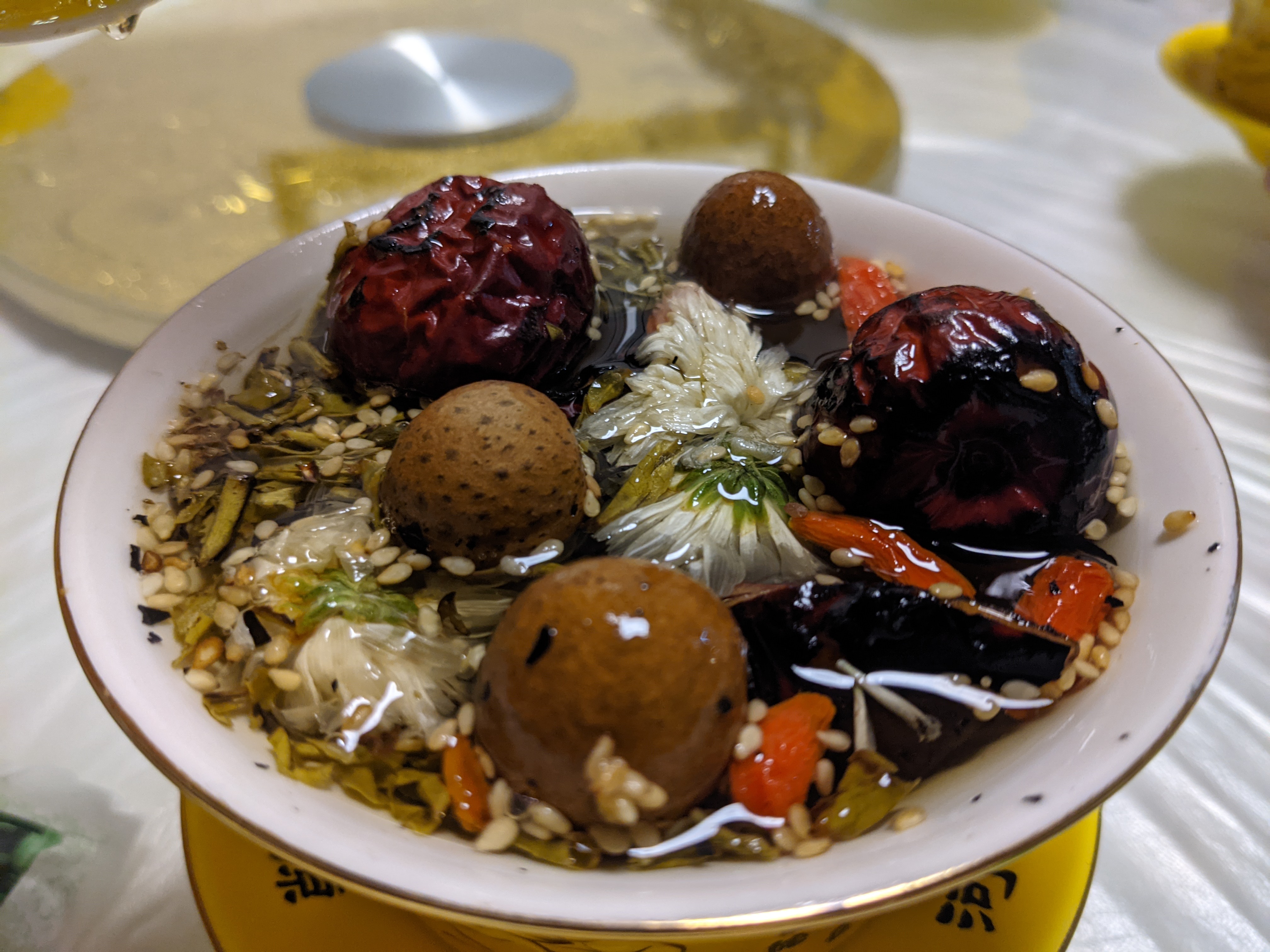
When you add hot water, this is what it becomes 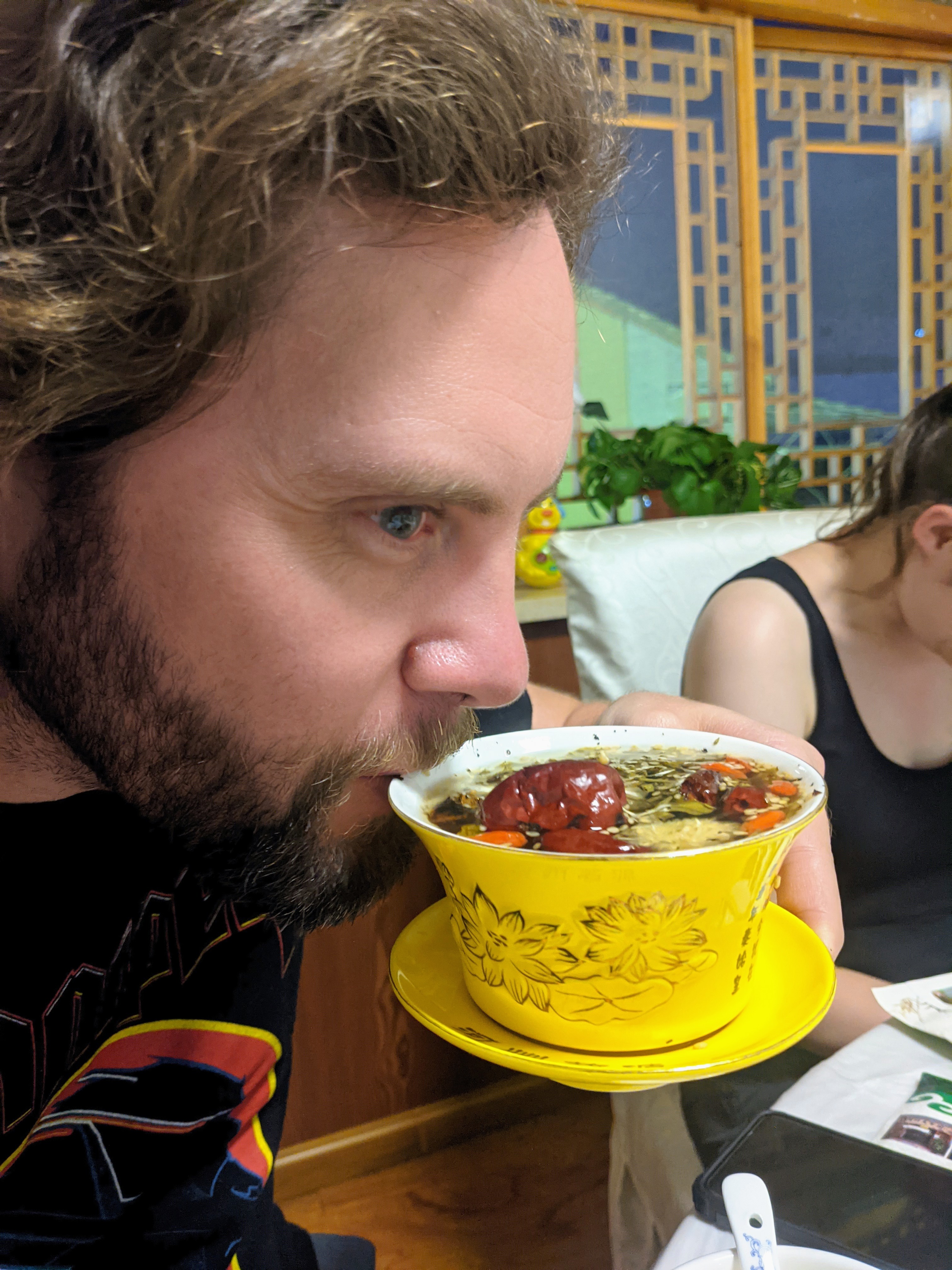
A VERY full cup! 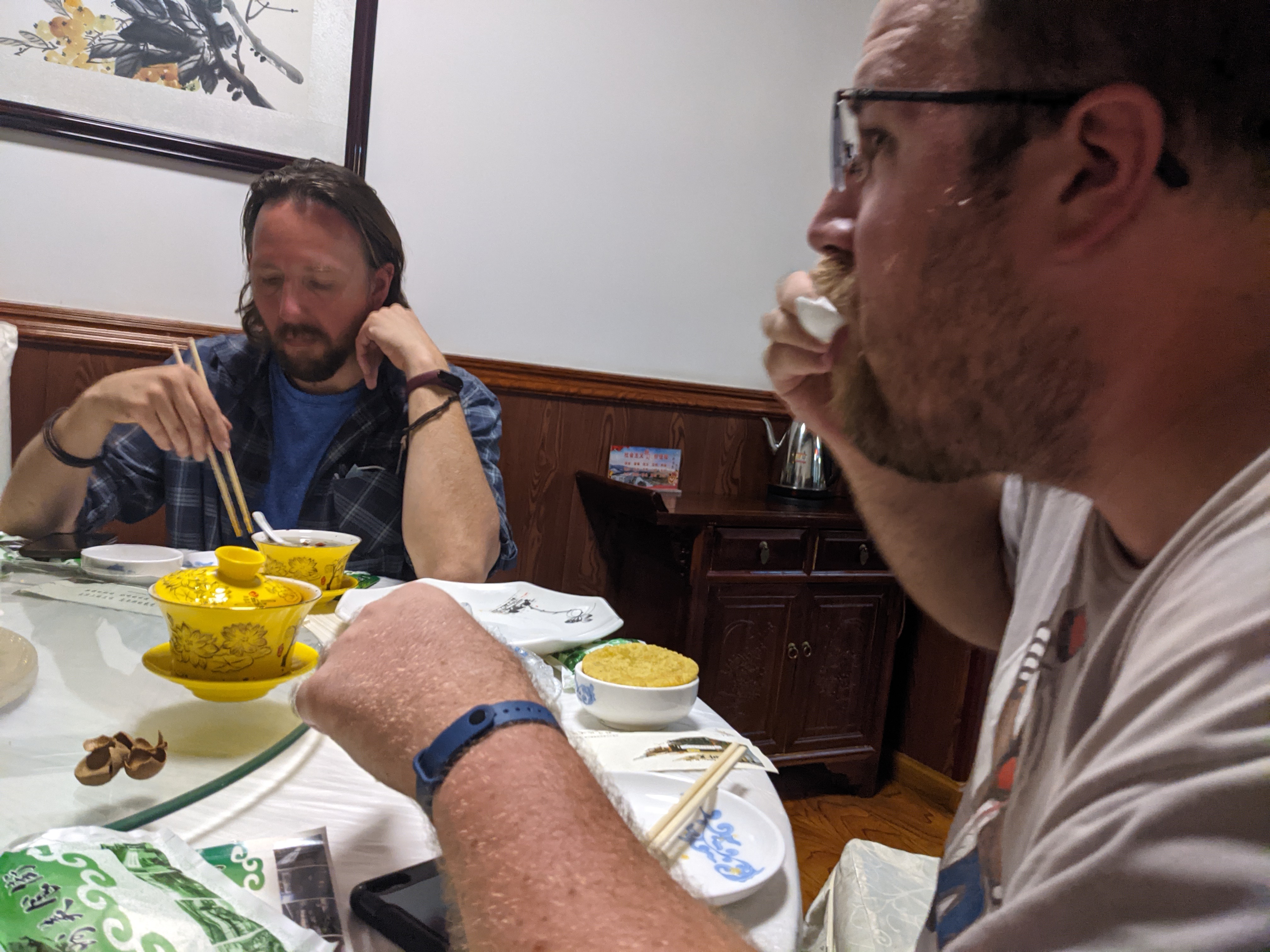
We drank the first bit with spoons 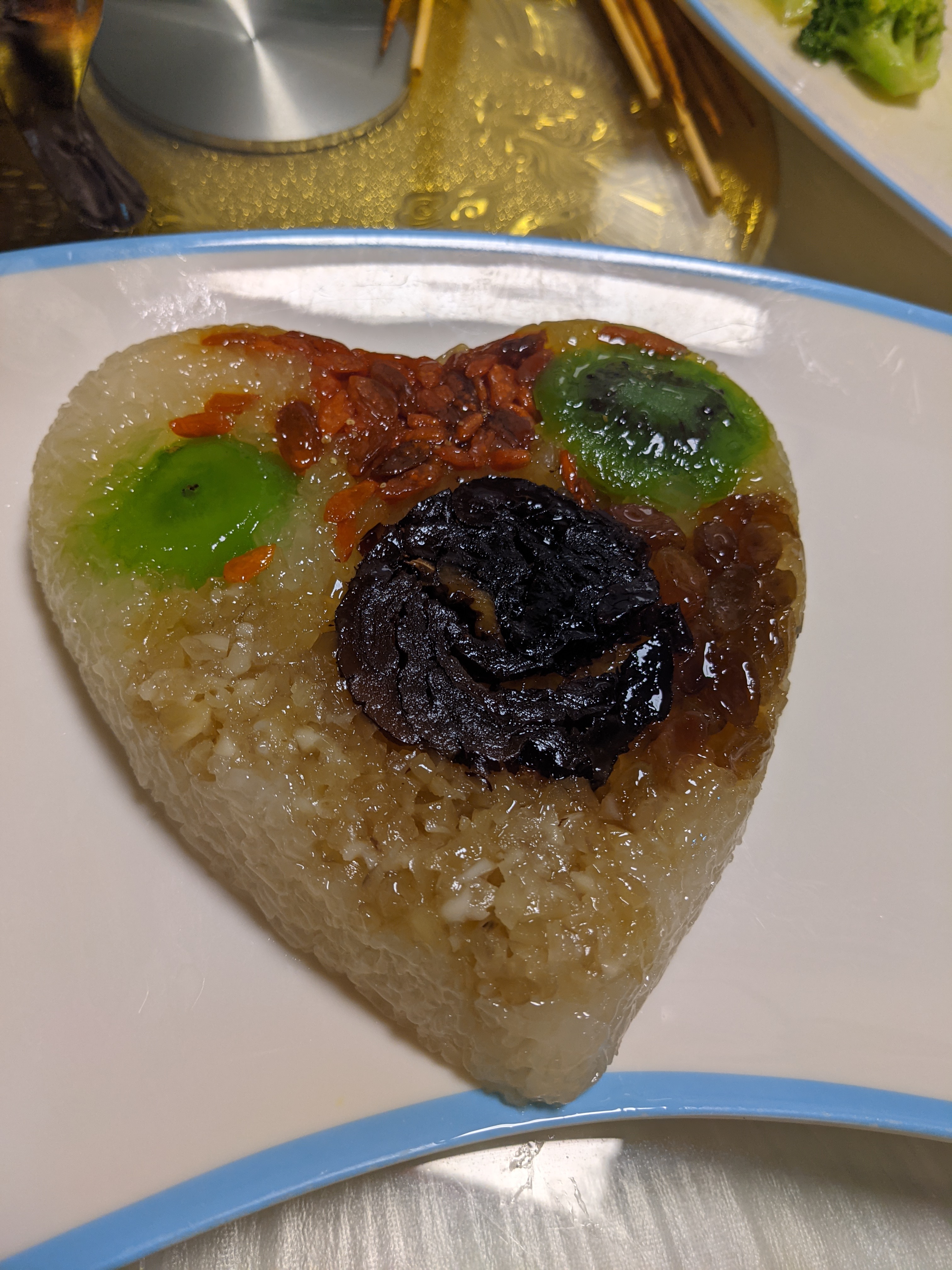
Part of our dinner. A sweet rice dish.
Near the end of the dinner, the girl and boy who had been entertaining guests outside shyly came in and asked if we would take a photo with them. We did, of course, and I made sure to get a photo as well.
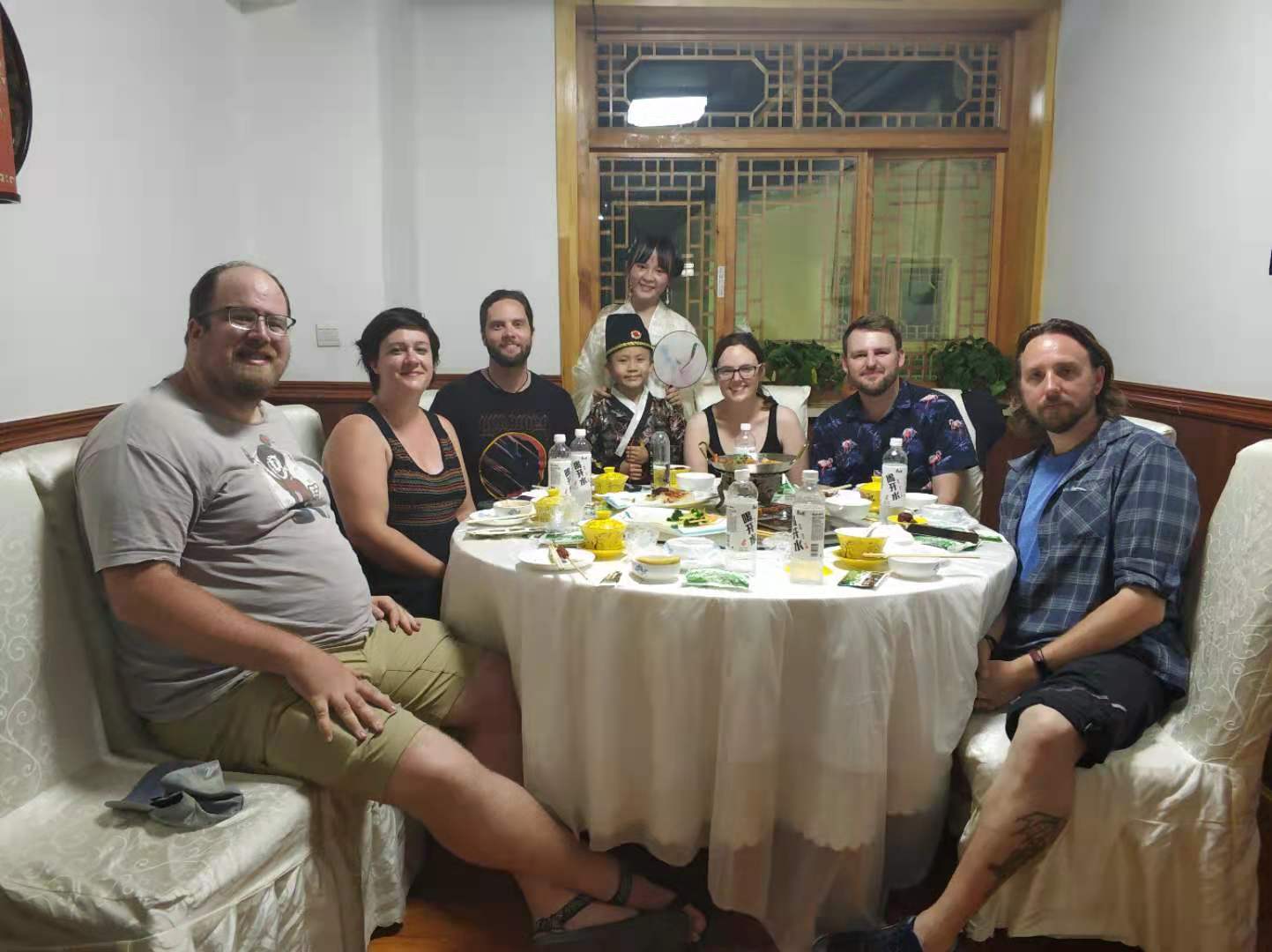
Now, this is where the story gets really cute. As soon as she walked out of the time, she squealed, danced and jumped up and down with excitement. We may as well have been the Backstreet Boys circa 1999! She sat down in the next room and actually fanned herself, she was so excited to have met us and gotten a photo with us! Later on we heard her trying to learn how to say ‘welcome to China’ in English for us. The phrase burst out of her as we left the restaurant. She was such a sweet girl!
Mosque Men
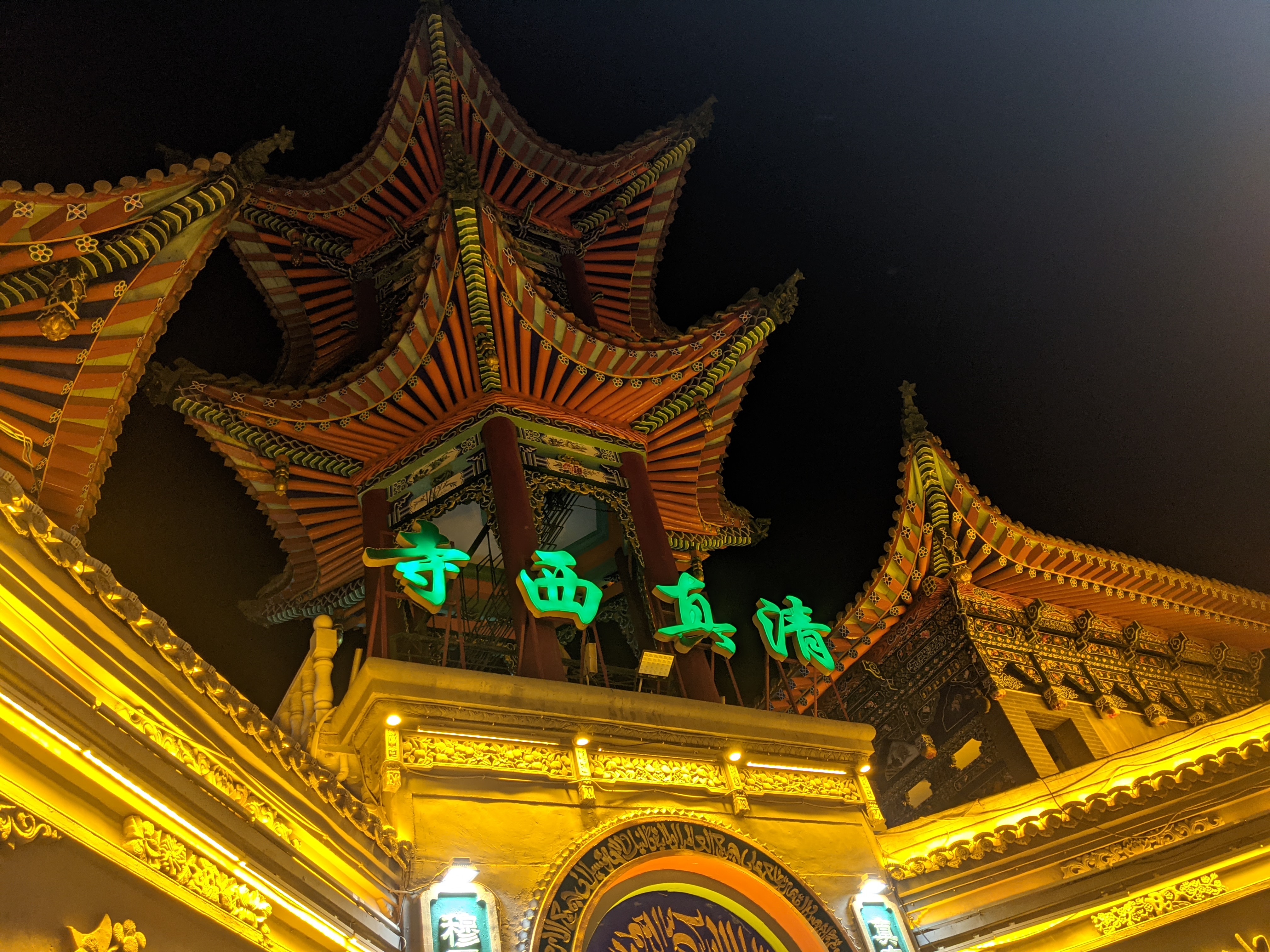
After dinner, we started walking towards the hotel, but went slow and wound our way through the streets on the way. The area was beautiful and surprisingly new looking, for such a small city!
We came across a couple of women taking a photo in front of a beautiful building. It took us a moment to realize that we weren’t actually looking at a Buddhist temple, but a Muslim Mosque!
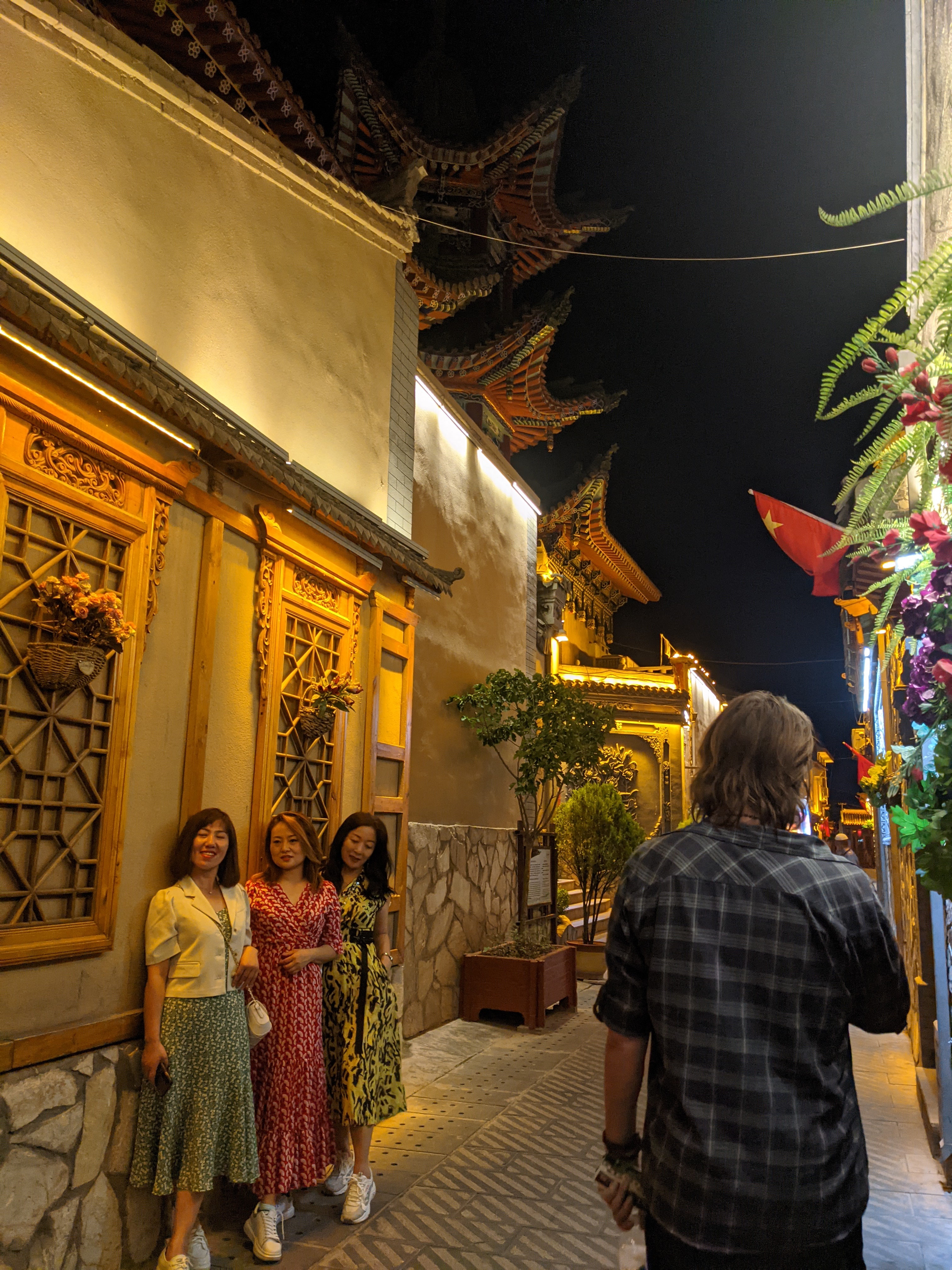
As we stood outside, admiring the architecture, a man wearing a white prayer cap came over and greeted us. I told him in Mandarin that we thought the building was very beautiful and he invited us in. I was actually very hesitant to enter because I had forgotten my scarf back in the room and my shoulders were very bare. He welcomed me in anyway, so I joined the others.
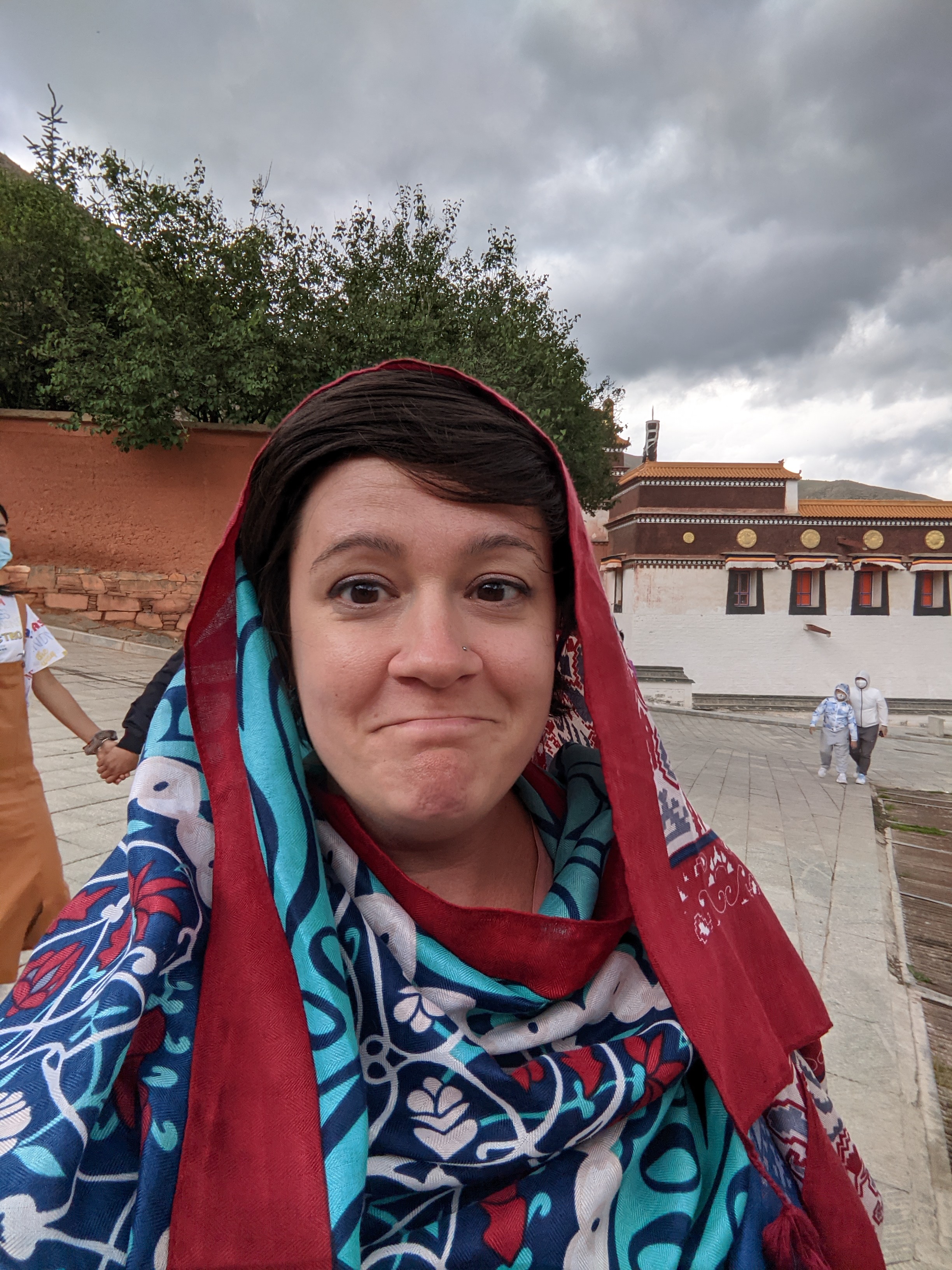
We walked around and saw many worshippers peeping out of their rooms to see us. A crowd formed while we looked around and admired the beautiful mosque.
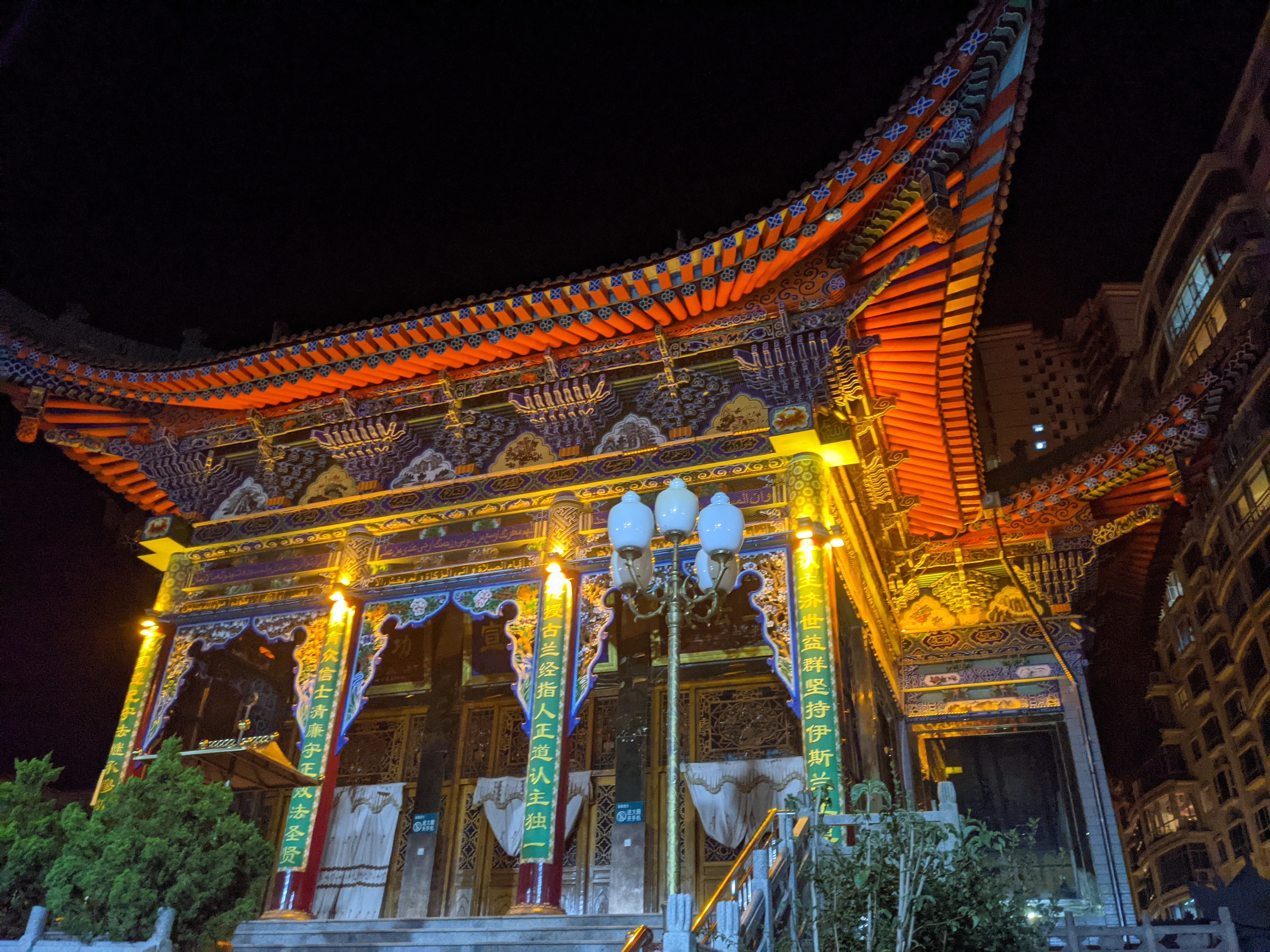
The main building 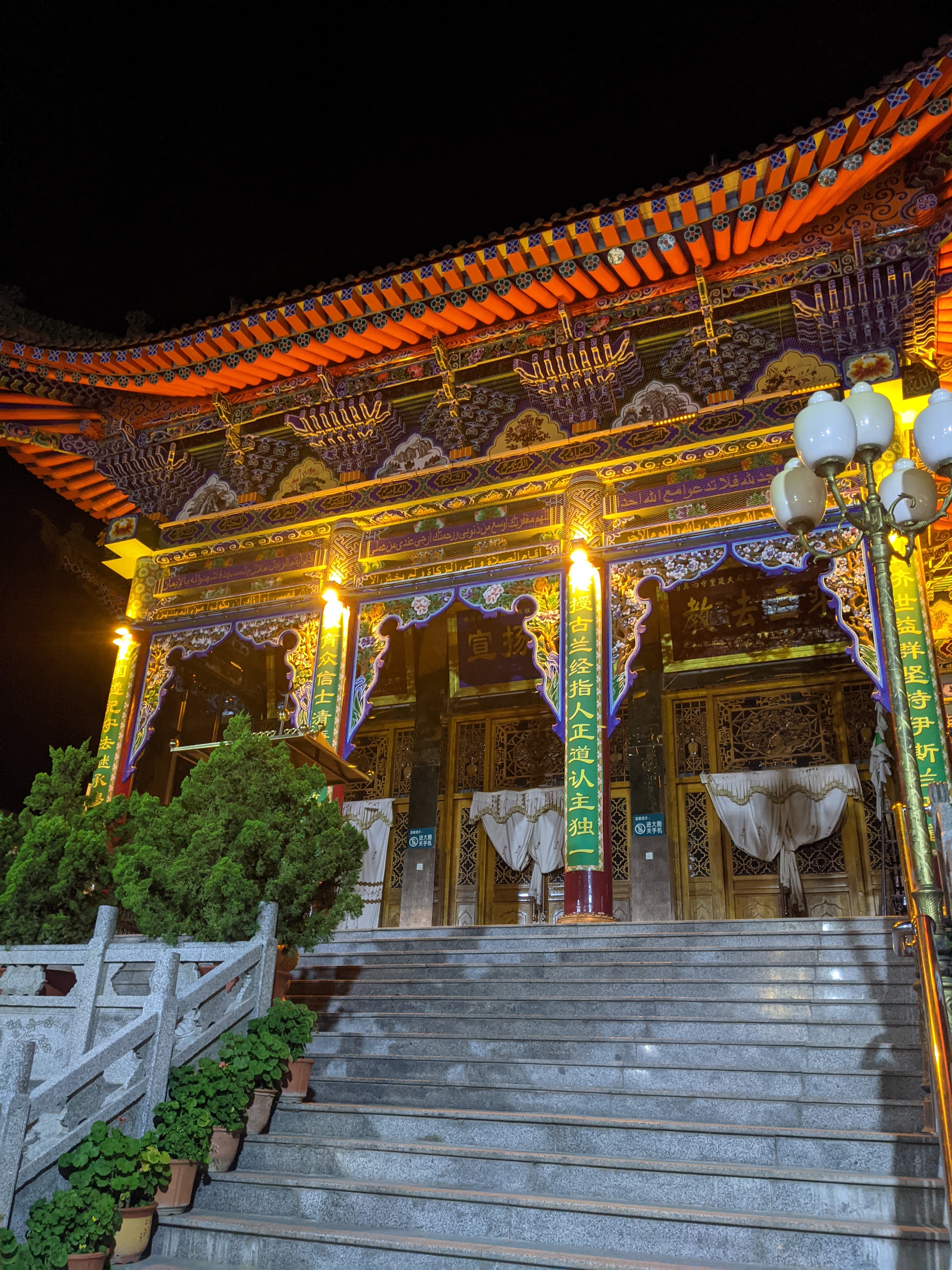
A closer view 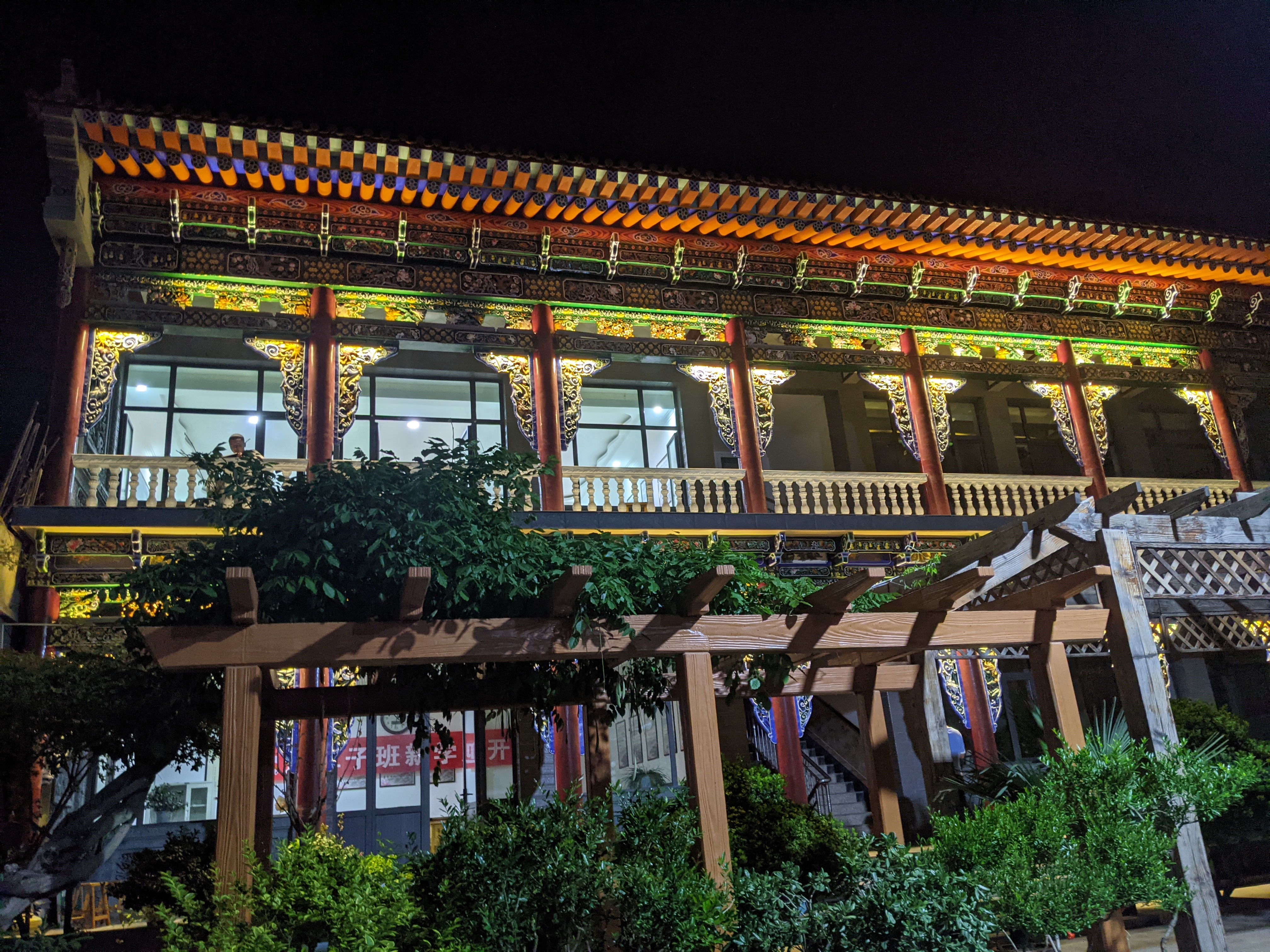
People were coming out of these rooms and looking over the balconies to see us.
After a few minutes, one of the men in the quicky growing crowd came over and spoke to us. He asked where we are from and made some small talk. He laughed playfully at Elizabeth for not wearing her scarf around herself ‘properly’ and then teased me for not wearing one at all. He was funny and cheeky about it and we all had a laugh. Then we took a group photo for all the guys who wanted proof that they’d met foreigners.
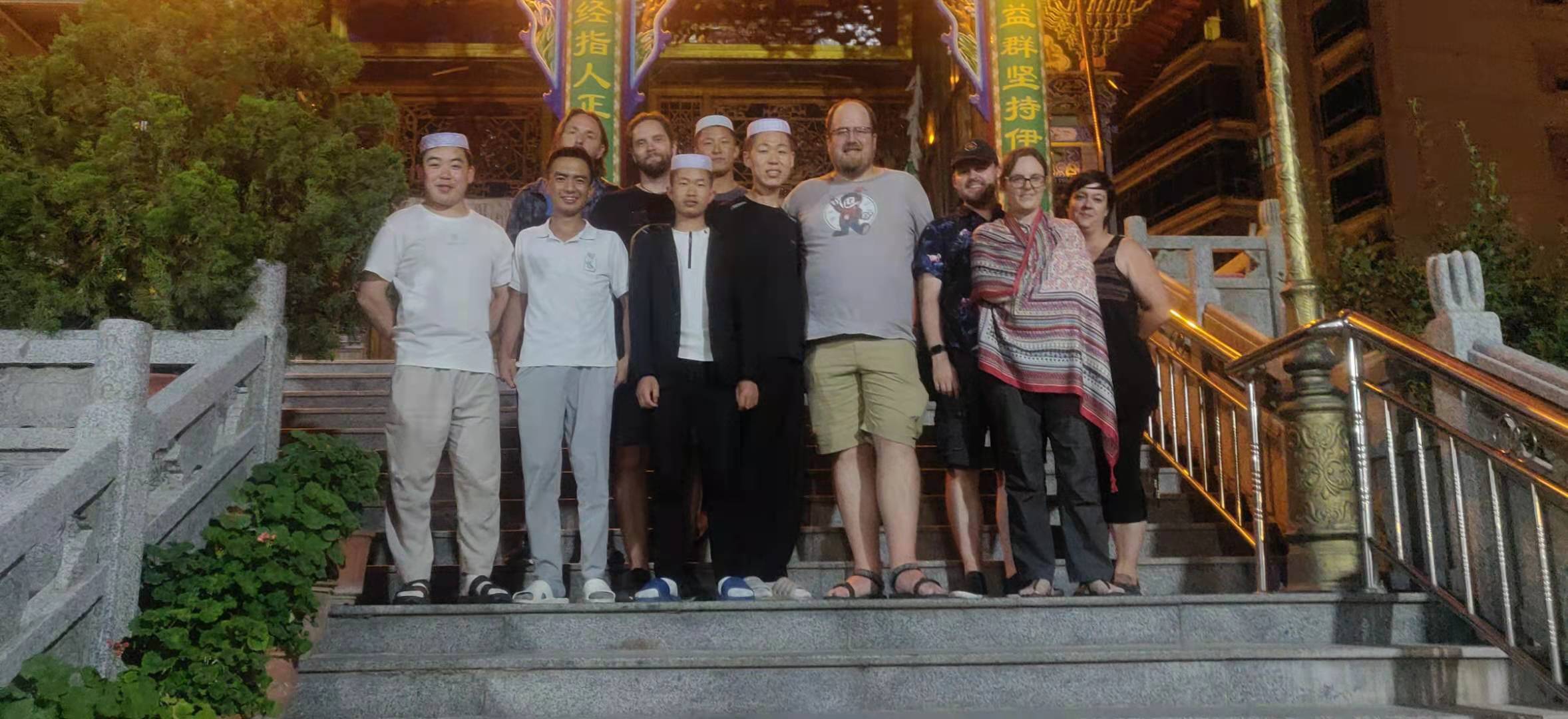
I’ve said this many times through my travels, but I really love all the different people we meet on the road. These guys have a very different set of beliefs than I do, but we were nice to each other, respectful, and even joked about it. They didn’t make me feel uncomfortable or unwelcomed… They were just thrilled that we found their place of worship beautiful. These types of encounters are easily one of my favorite parts of traveling.
Multilingual Michael
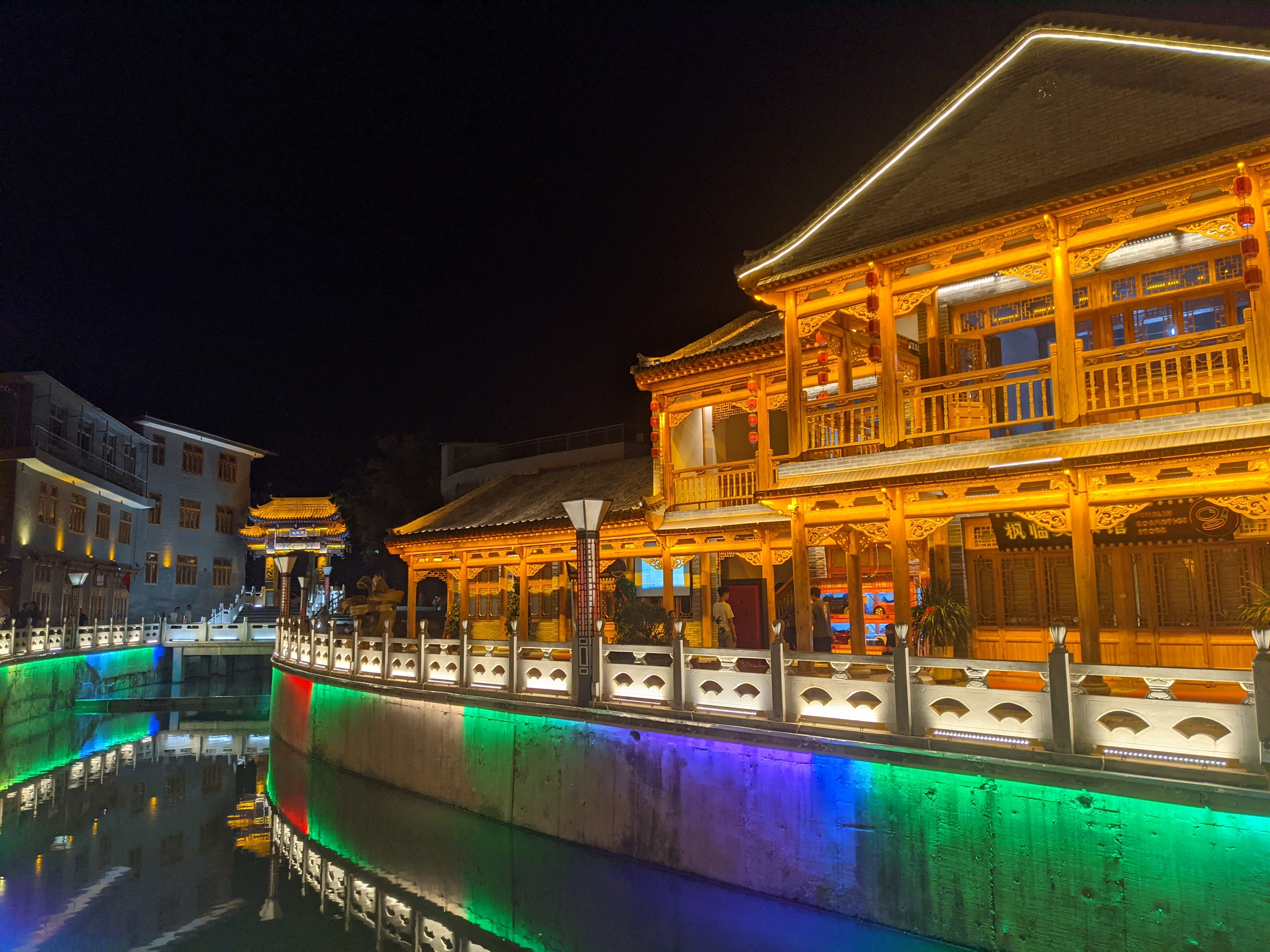
After our visit at the mosque, we wandered our way down to a scenic area of town that was very obviously very recently built or reconstructed. As always, the lights in China were lovely at night.
As we made our way through, we ran into a man who asked in English where we are from. We get asked this question all the time, but usually in Mandarin, or very broken English (Which country!?!?). I told him that 2 of us are Canadian, 2 American and 2 British. He welcomed us all to China (which always makes us chuckle, because 4/6 of us have been here 7 years or longer and none of us have left in a year and a half). That’s one of the nicest things about meeting new people when traveling in remote (er) China: they always make a point of welcoming us to their country.
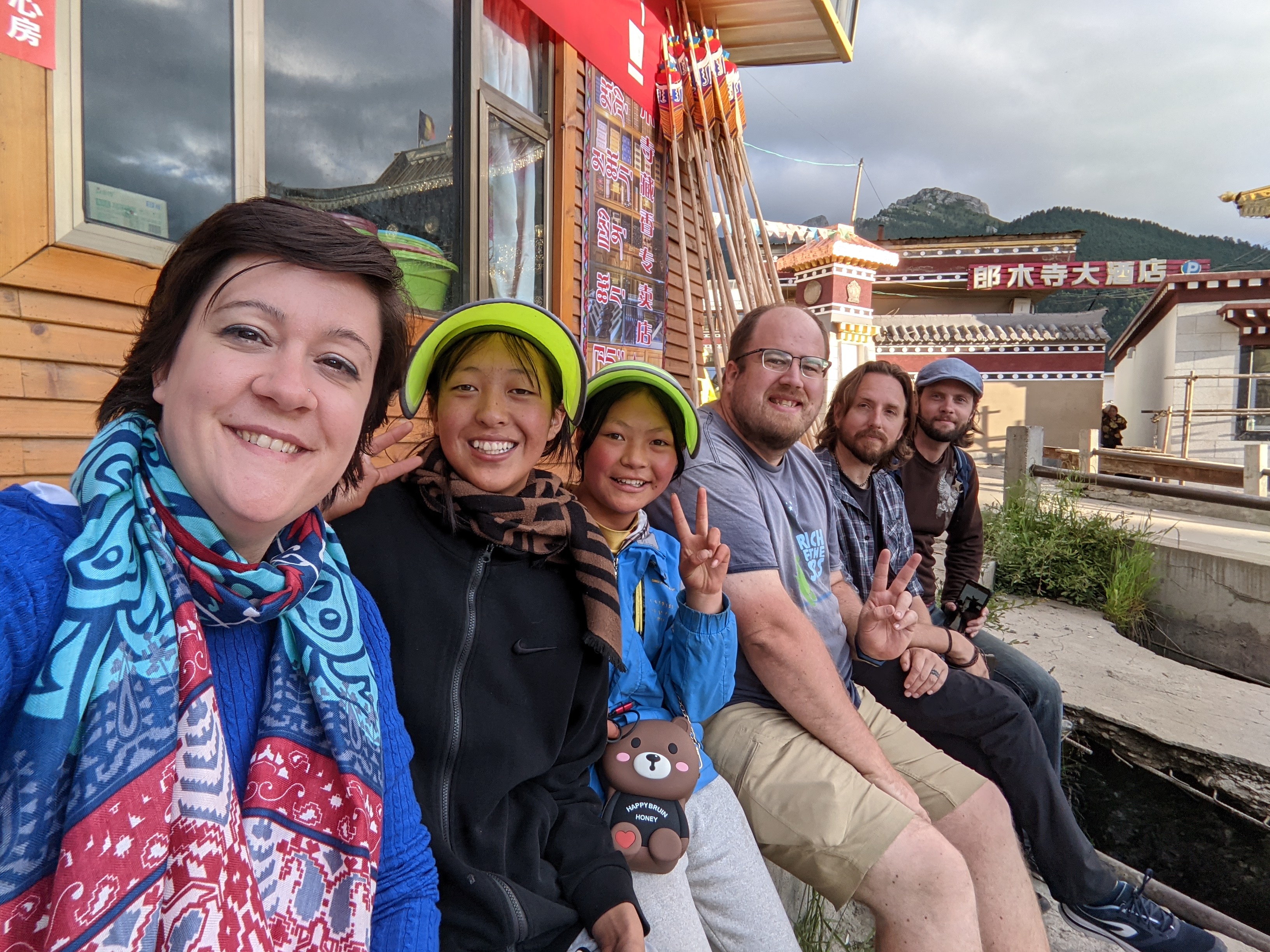
We continued chatting and learned that the man (his name was Michael), speaks 4 languages and that he lived in Pakistan for several years. Ian and Andy were there in January of 2020, so the topic quickly moved into Pakistan and how much the guys both loved their time there.
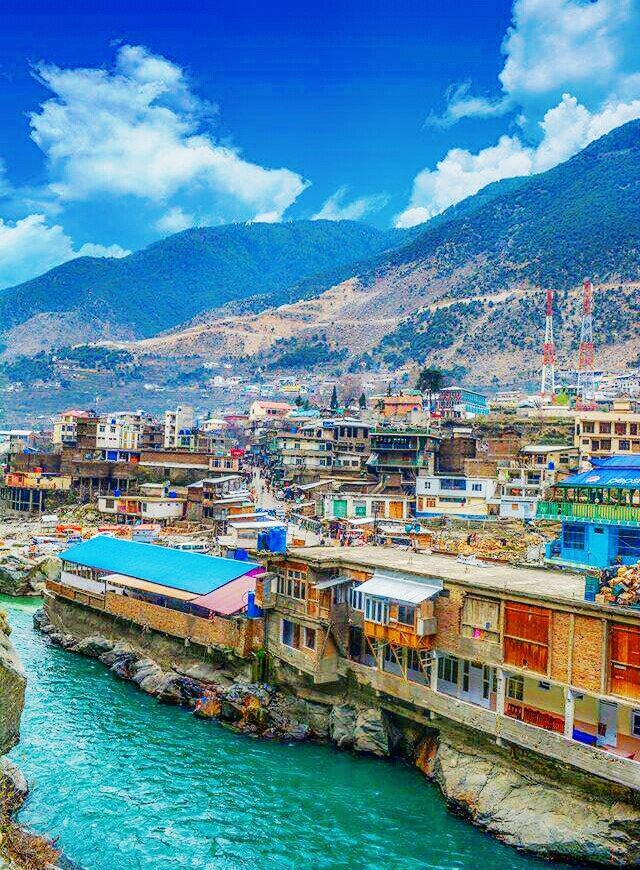
Michael also told us a bit about the local area. We asked when the tourist area was built and he told us that until 6 years ago, the area was mostly inhabited by poorer citizens. When the government decided to revitalize the area, rich people bought out the properties and rent became much too expensive for most people, so they were essentially forced to move to other areas of Linxia The cost of progress…
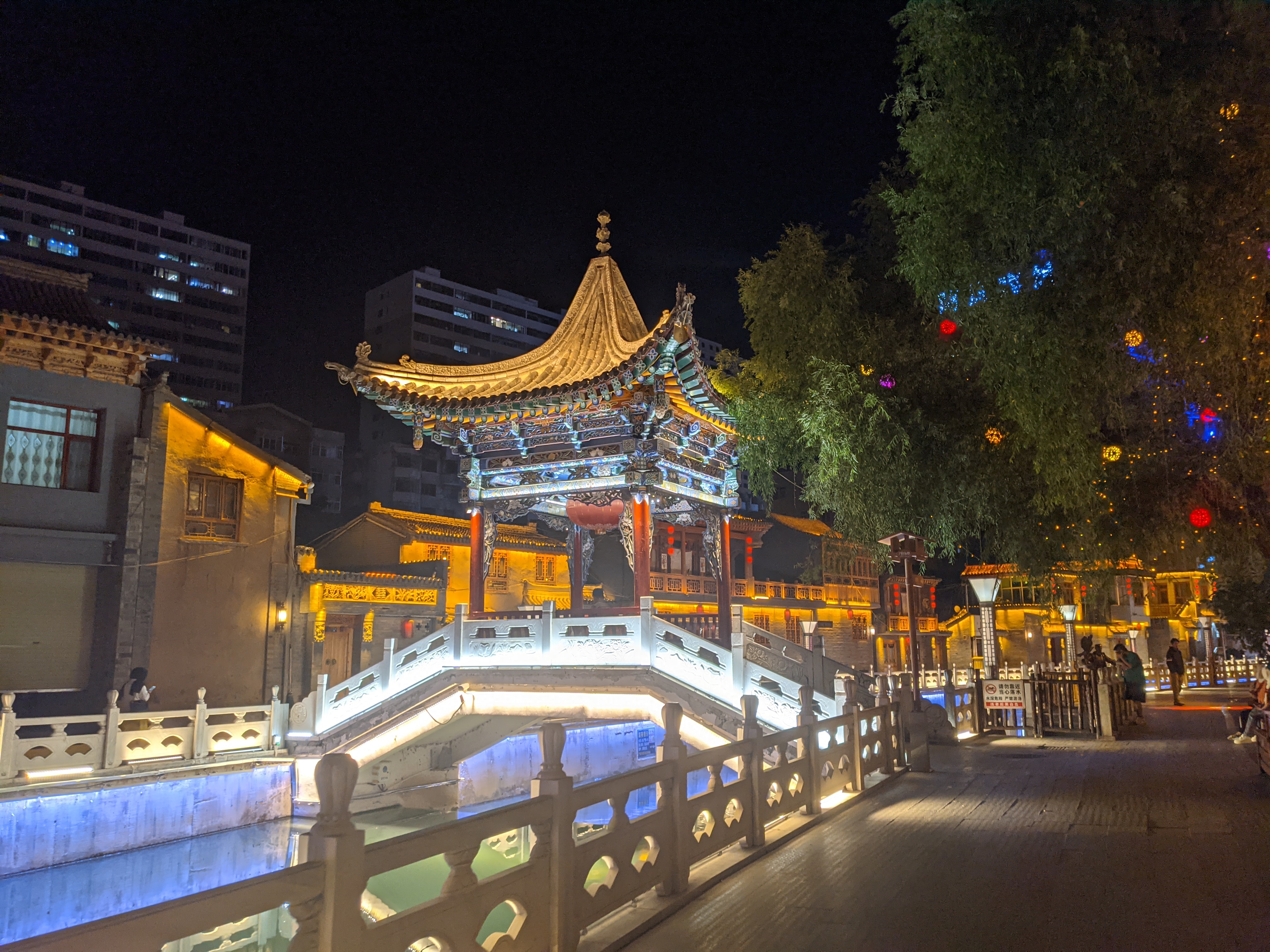
At 11pm all the lights went out and we took it as our cue to head back to the hotel. Michael kindly invited us for tea and watermelon, but given the time, we had to decline. I’m very happy that we bumped into him. It’s always nice to hear local perspectives, and his was especially unique given his own travels.
Social Media Influencer
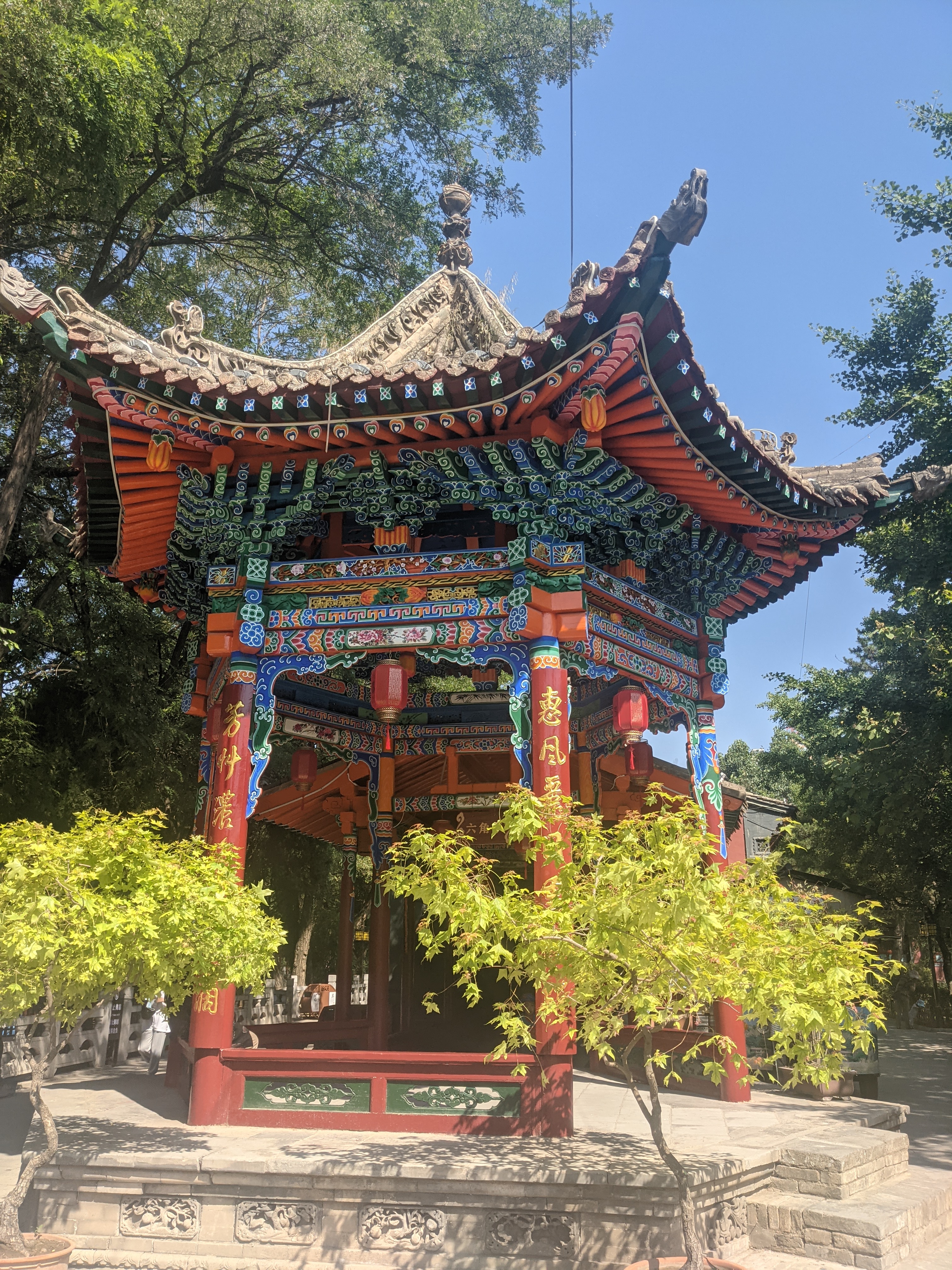
We didn’t have much time in Linxia so we set out early the following morning to see as much of the city as we could. It wasn’t long before we were greeted by a woman on the street who quickly welcomed us to China and told us about a market nearby.
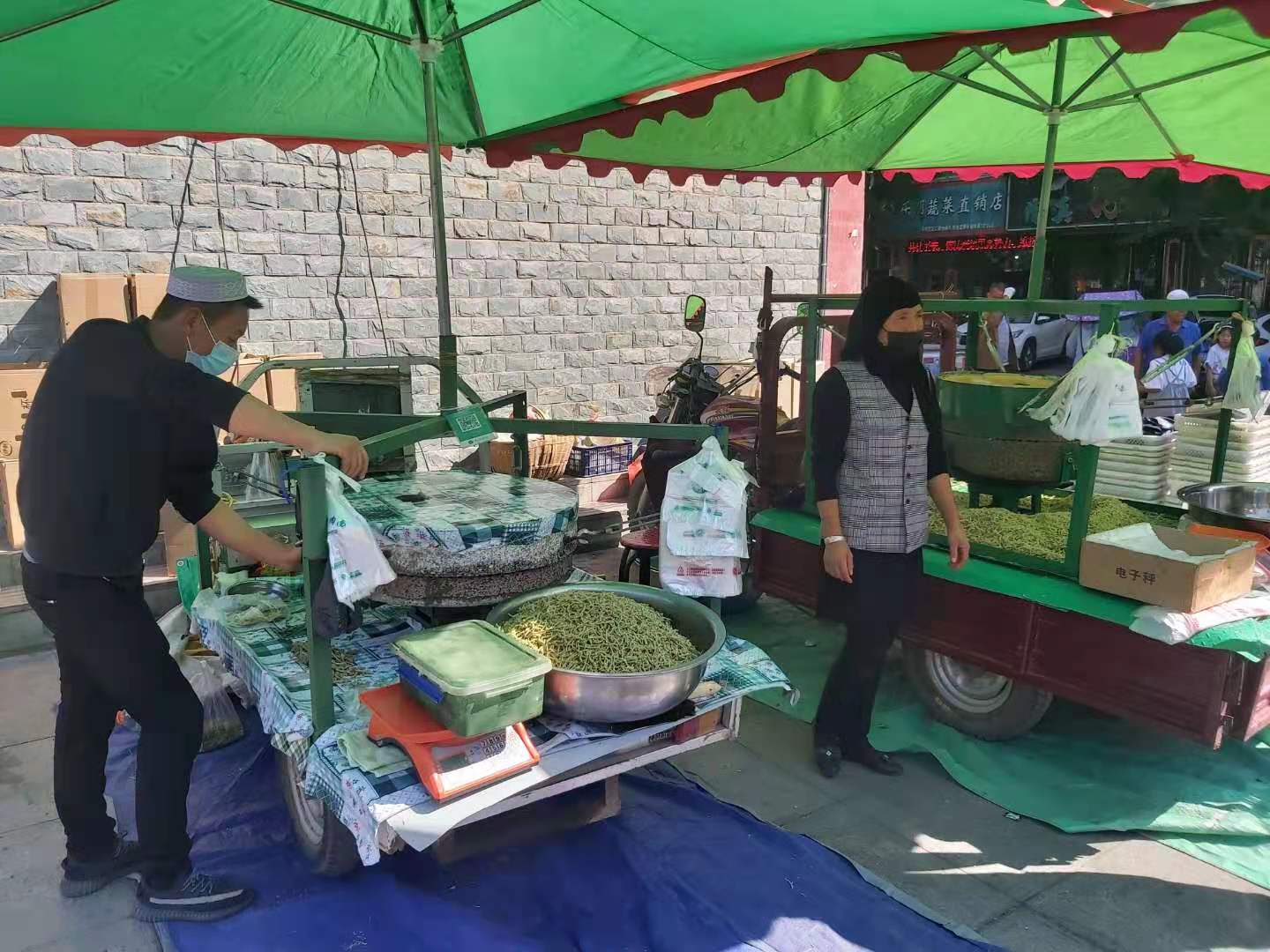
We kept walking towards the temple we saw in the distance, and then suddenly, the friendly woman we had met was with us again.
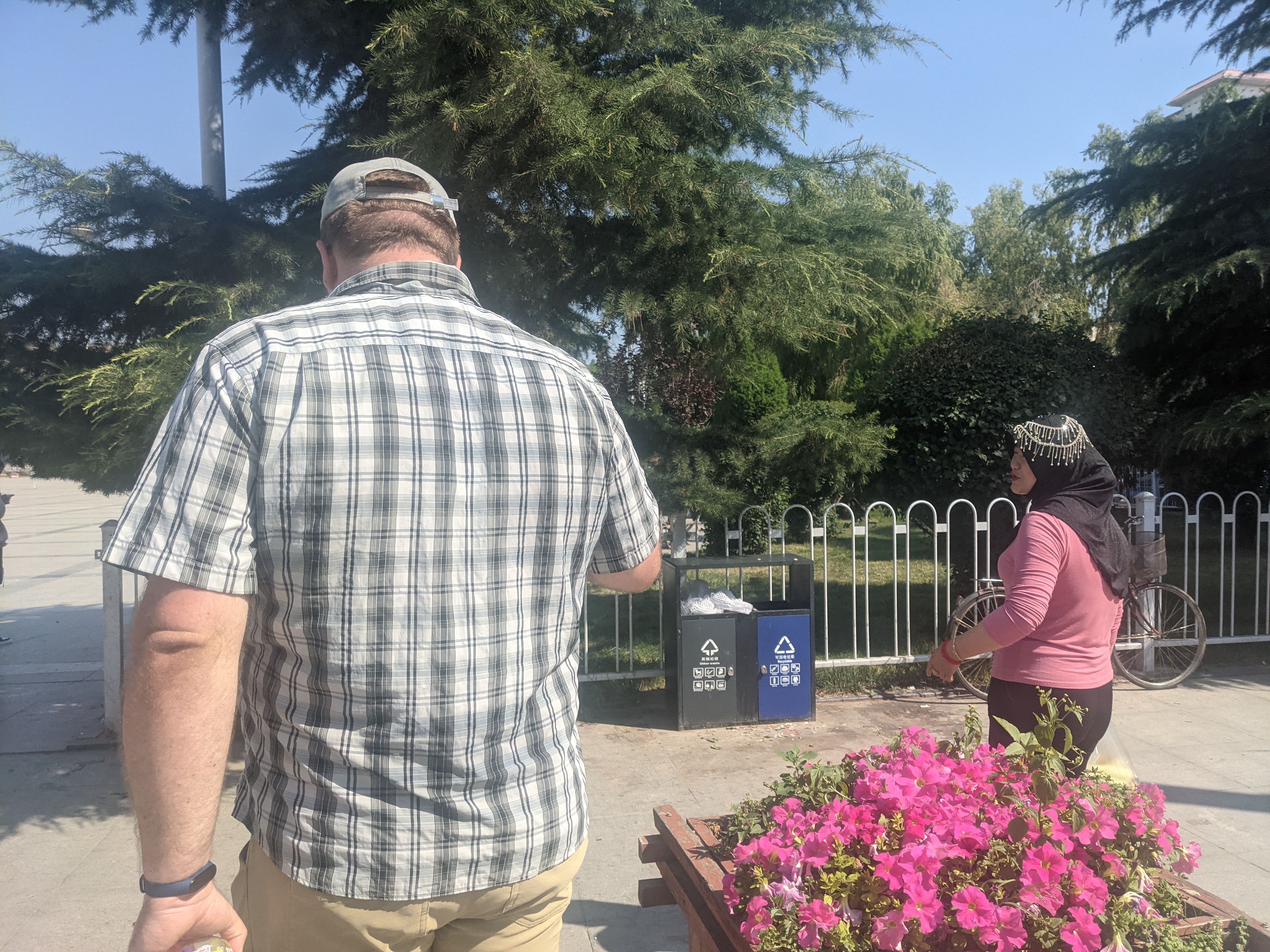
She showed us over to a little park, and told us about the dance and music performances that happen there. Then, right in front of us, a show began! Well… It wasn’t really supposed to be a show, but it turned out to be!
In every other city I’ve been to, there are ‘dancing grannies’. Older women who get together and dance in parks basically any night that isn’t rainy. It’s one of China’s most endearing qualities, in my opinion. But in Linxia, they don’t seem to have dancing grannies. They have ‘Catwalk’ grannies. They went around in a circle like that for the entire 20 minutes we sat there.
I feel kind of terrible because I never got this woman’s name, but in fairness, she never asked mine either. I’ve dubbed her ‘social media influencer’ simply because she spent a lot of her time with us showing us the things she posted on social media.

In fact, when we finally did part ways with this very friendly and enthusiastic woman, she added several of us to Wechat and we’ve been seeing a constant stream of her updates ever since.
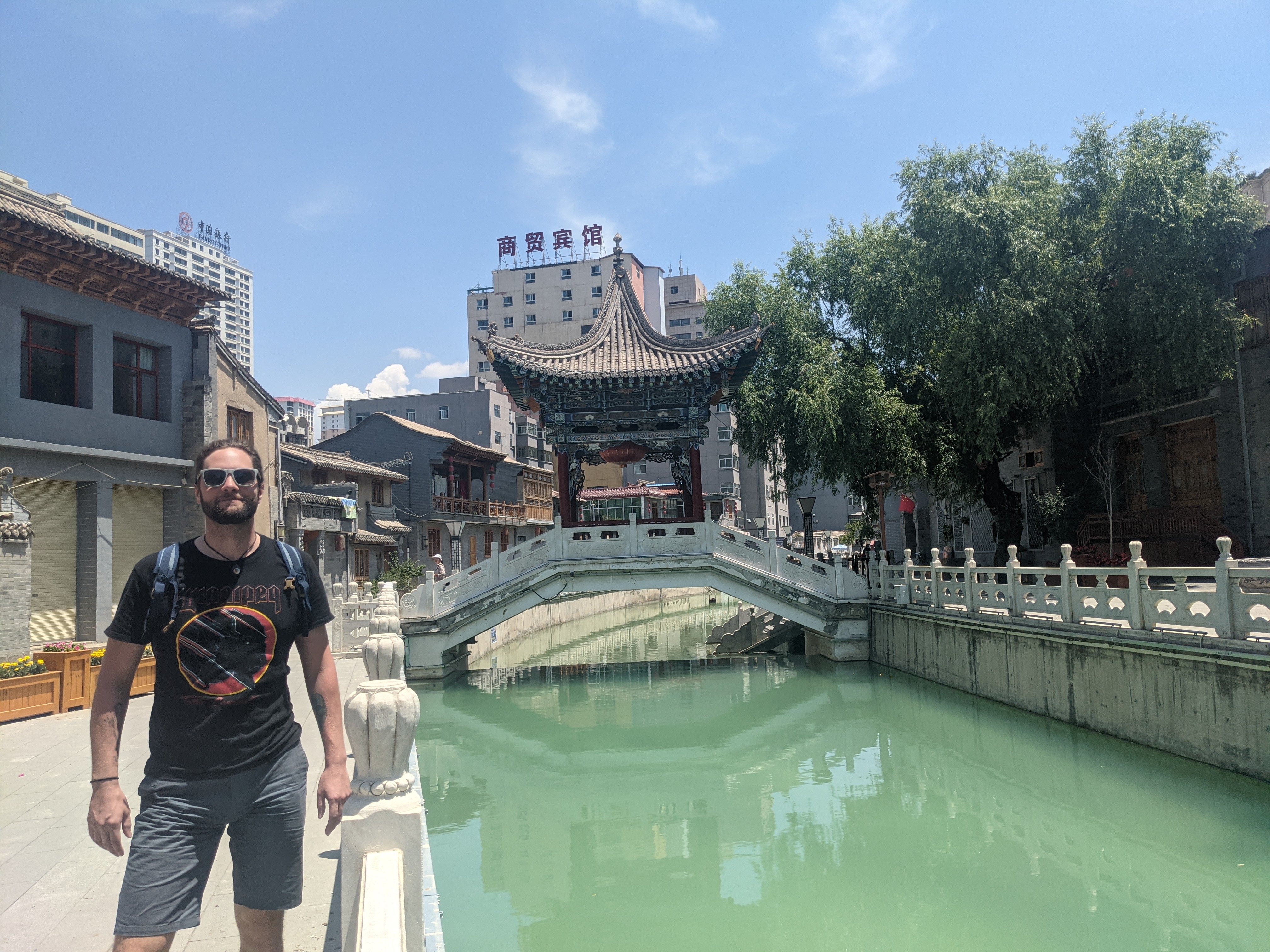
It’s funny that these 4 people were so different. A young girl, a worshipper of Islam, a local who has traveled abroad, and a Muslim woman who loves social media… But they all impacted our trip and forever influenced my opinions of Linxia; a warm and friendly city filled with lovely people.
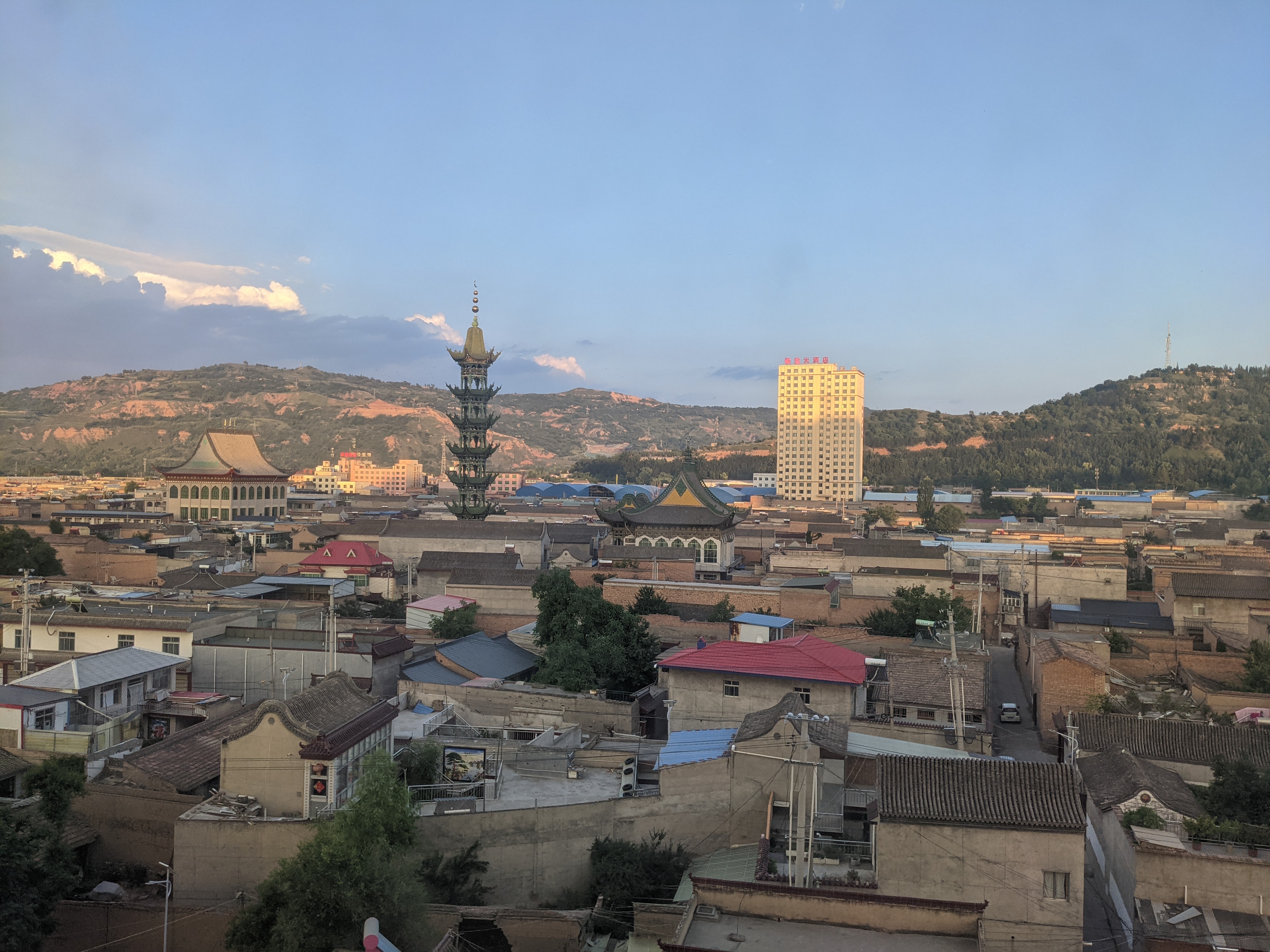
Next up, I have posts about Labrang Monestary and Travelling in Gansu!! Check back soon!
